

Aruba Snorkeling Guide
Take a peek into the sea.
Updated April 2024 ⋅ Written by Laura Schulthies ⋅ Edited by Daniel Mode

Welcome to Aruba Snorkeling
If you’re searching for the most spectacular snorkeling in the Caribbean, look no further than Aruba. From crystal clear waters and exotic sea life to vibrant reefs and fascinating shipwrecks, Aruba offers unforgettable aquatic adventures for all experience levels. Our Aruba snorkeling guide will give you an insider’s look at the best snorkeling sites in this stunning Caribbean paradise, including can’t-miss tours so you can get the most out of your next underwater excursion!

Aruba Snorkeling Sites
Although Aruba features fewer snorkeling sites than its sister islands, the turquoise waters and diverse locales make it a favorite among adventure seekers.
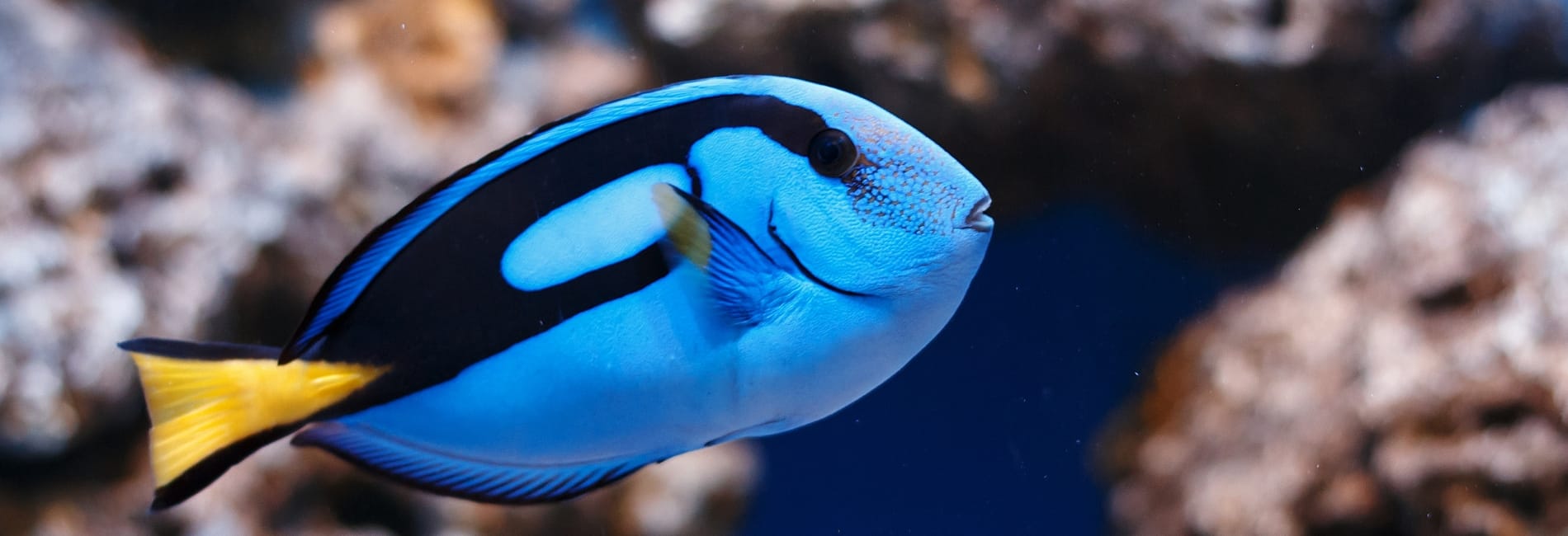
1. Catalina Cove
Catalina Cove is an excellent snorkeling location for beginners, thanks to its calm waters and minimal current. Snorkelers can expect to see an array of fish life, brightly colored coral, sea sponges, and dramatic boulders. While you can access Catalina Cove by boat, it is easiest to enter the water at Boca Catalina and swim north to the cove. Snorkeling by the shore is recommended.
How To Get There
Catalina Cove is located off Route 1, past Boca Catalina. Parking is provided. For directions, click here .
What You May See
Catalina Cove is home to some of the most beautiful aquatic wildlife. On your trip, you may see Hogfish, Parrotfish, Angelfish, Butterflyfish, Blue Tang, Snapper, Squirrelfish, Brain Coral, Sea Rods, Giant Anemones, Sponges, Urchins, Squid
What To Bring
There are no rental shops at Catalina Cove, so you’ll need to bring your own snorkeling gear . Recommended supplies include UV-blocking swimwear, coral-safe sunblock, sunglasses and hats.
Amenities are limited to a few shade palapas; however, there are more amenities, including restaurants at nearby Boca Catalina.
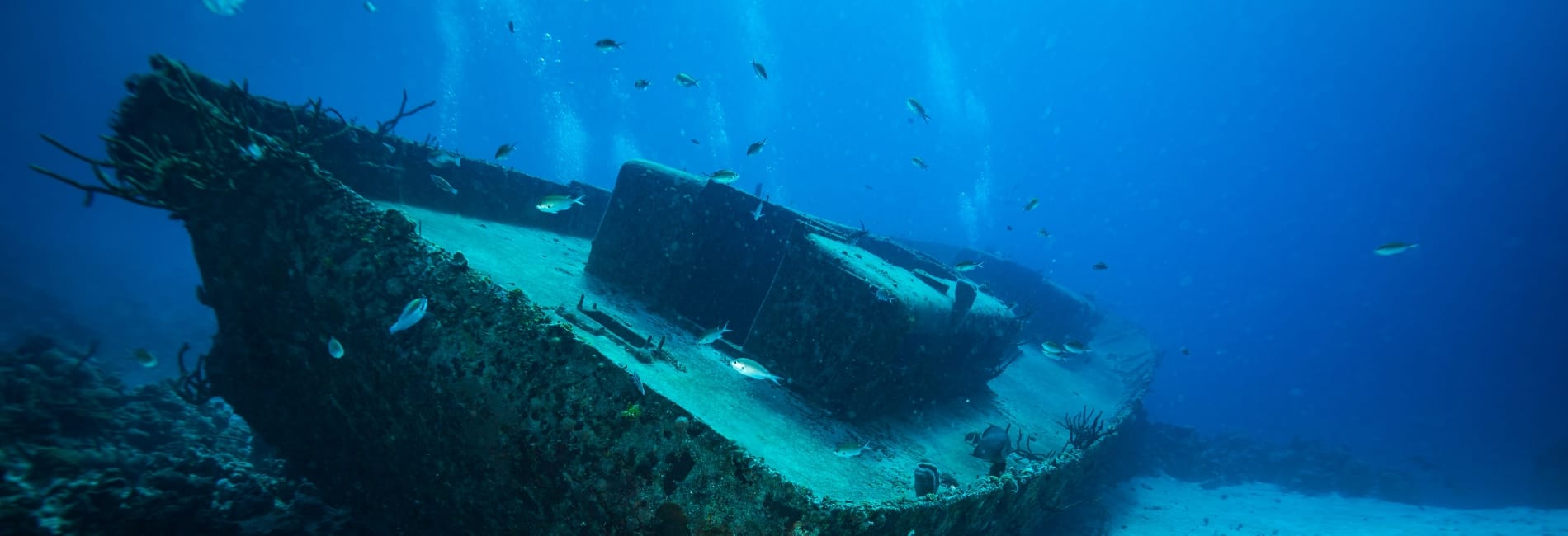
2. The Antilla Wreck
The Antilla Wreck is the remnants of a ship sunken during WWII and offers 400 feet of diverse aquatic life to explore. While only the first third of the boat is shallow enough to snorkel comfortably, the remainder of the ship descends around sixty feet, an impressive sight for the adventurous spirit. The Antilla wreck is only accessible through a boat tour and is susceptible to strong currents and choppy waters, so it’s recommended for intermediate to advanced snorkelers.
The Antilla wreck is only accessible by boat tour, offered through many of the local resorts or on TripAdvisor .
Shipwrecks are known for their diverse fish life; the Antilla wreck is no exception. On your excursion, you may see Damselfish, Wrasse, Blue Tang, Snapper, Chub, Soldierfish, Barnacles, Tube Worm, Sponge, Fire Coral, Star Coral, Yellow Pencil Coral, Hydroid, Anemones.
Depending on the boat tour you choose, you may need to supply your own snorkeling gear . Recommended supplies include UV blocking swimwear, coral-safe sunblock, sunglasses and hats.
No available amenities
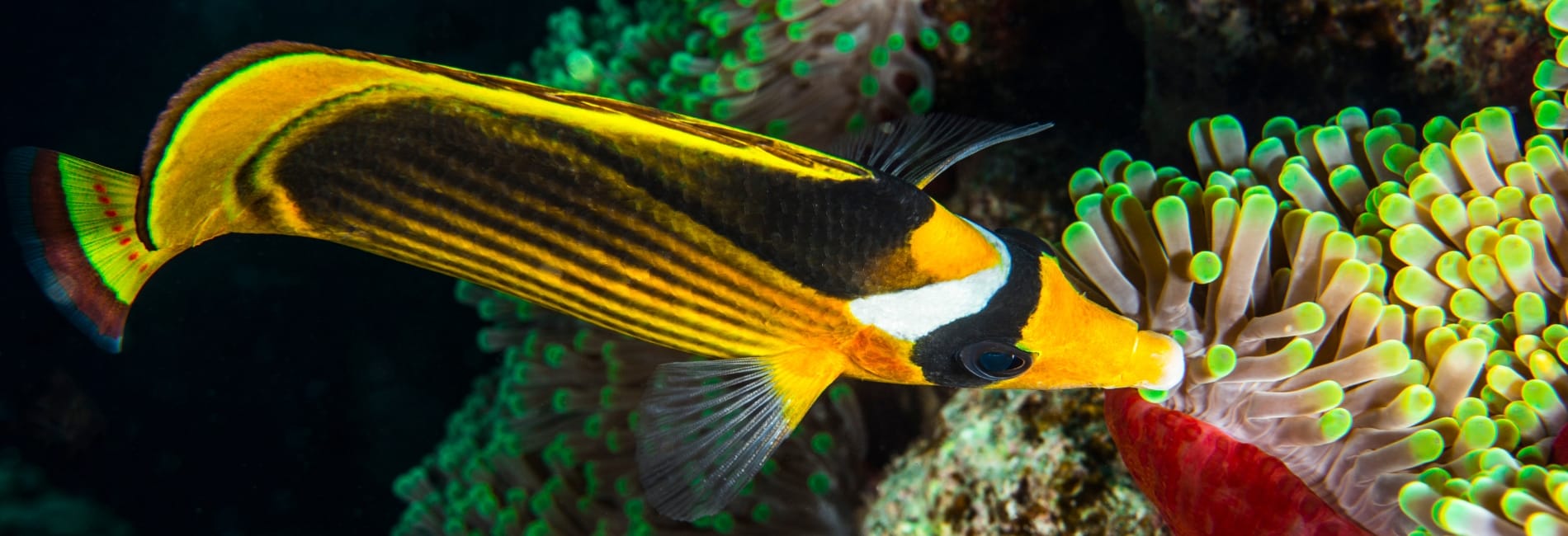
3. Mangel Halto
Undoubtedly one of the best snorkeling locations on Aruba , Mangel Halto offers unforgettable reefs with robust coral, abundant sea life, and crystal clear waters. While one of the most memorable snorkeling sites, with the strong current, high winds, and heavier boat traffic, it is recommended that beginner snorkelers stay near the entrance of the bay while experienced snorkelers may enjoy exploring outside the reef’s cut.
There are three water entrance spots for Mangel Halto. Beginners may choose the dock entrance located near the bay’s corner, which provides a ladder for easy entry, smooth sandy bottom, and shallow waters. Another favorite entrance is through the mangrove trees along the rock-bottom beach. Finally, for those who enjoy drift snorkeling, you can enter at Puerto Chiquito and let the current take you back down to the site’s dock area. For driving directions to Mangel Halto click here .
The diversity of life at Mangel Halto makes it a favorite among snorkelers of all levels. During your visit, you may see Lizardfish, Porgy, Bass, Butterflyfish, Trumpetfish, Hogfish, Trunkfish, Mojarra, Grouper, Goatfish, Sea Plumes, Corky Sea Finger, Sea Fan, Lettuce Coral, Finger Coral, Sea Cucumber, Oysters, Zoanthid, Flamingo Tongue
You will need to supply your own snorkeling gear , along with UV-blocking swimwear, coral-safe sunblock, sunglasses and hats.
Amenities include Port-a-potties, shade palapas, and trash cans.
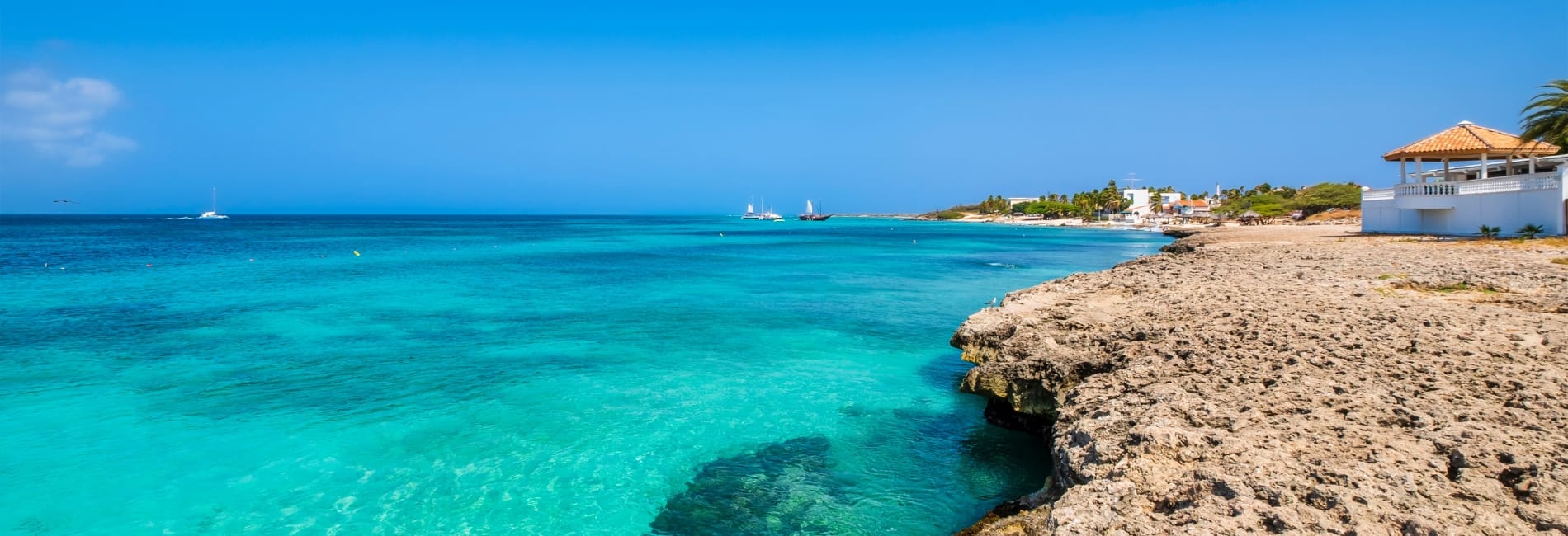
4. Malmok Beach
Snorkeling at Malmok Beach is an unforgettable experience. The crystal-clear waters, colorful coral reefs, and an abundance of marine life make it a popular spot for both novice and experienced snorkelers. You can swim alongside schools of tropical fish, admire the vibrant coral formations, and even catch a glimpse of sea turtles and octopuses. The reef’s shallow depth and calm waters provide easy access and good visibility. The small, somewhat rocky beach is relatively uncrowded, providing a peaceful and relaxing atmosphere for snorkelers.
Malmok Beach is located off Route 1 near Palm Beach , past the high-rise hotels and windsurfing beach. Parking is on the left side of the road near the water. For driving directions to Malmok Beach click here .
Malmok Beach is home to some of the most beautiful aquatic wildlife. On your trip, you may see Sea Urchins, French Angelfish, Banded Butterflyfish, Trunkfish, Sergeant Majors, Squid, Trumpetfish, Parrotfish, Bluehead Wrasse.
You will need to supply your own snorkeling gear , along with UV-blocking swimwear, coral-safe sunblock, sunglasses and hats. Water shoes are recommended if entering the water without fins to protect you from any urchins.
Malmok Beach is surrounded by resorts and hotels, as well as a variety of restaurants and bars, but there are no public amenities on the beach.
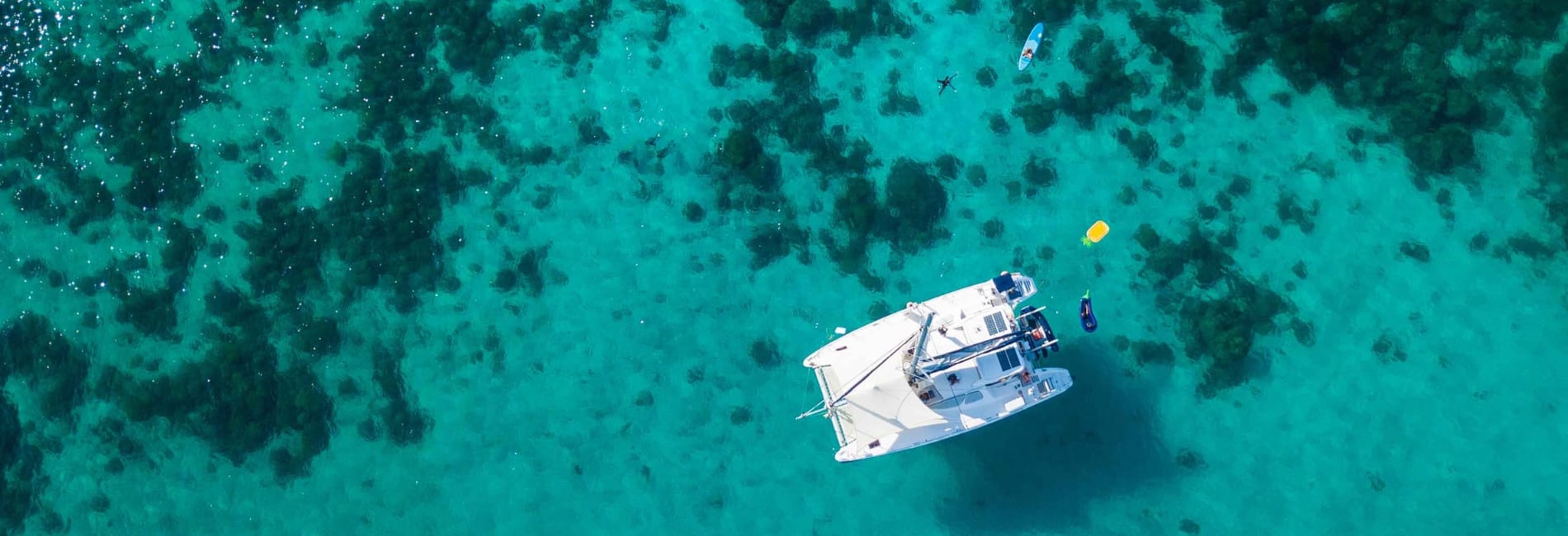
Snorkeling Tours
Something for everyone.
Aruba is renowned for its excellent water clarity, making it a prime location for snorkeling enthusiasts. Snorkeling tours in Aruba offer the opportunity to explore the diverse marine life that resides beneath the surface. These tours typically take you to some of the island’s best snorkeling spots, such as Mangel Halto and Antilla Wreck, where you can encounter colorful fish, coral reefs, and even shipwrecks. With entertaining guides, equipment, refreshments and stunning scenery, snorkeling tours in Aruba are an unforgettable experience for all ages and skill levels.
Explore various Aruba snorkeling tours here .
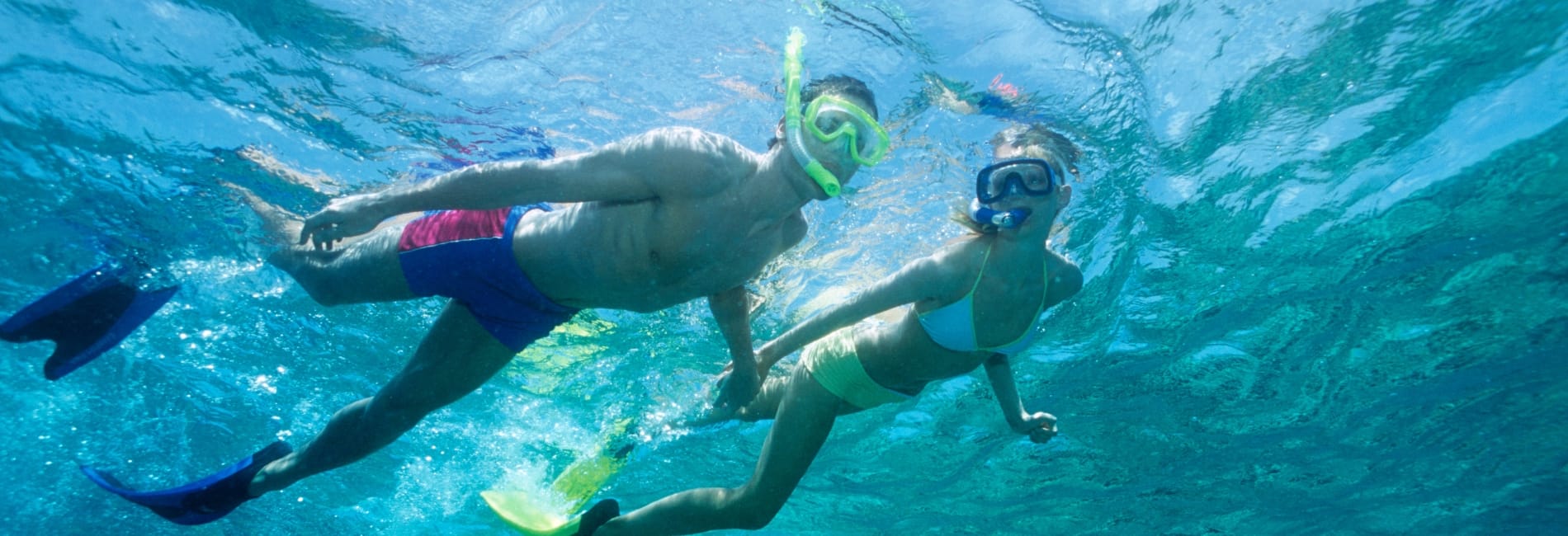
Best Snorkeling Gear
Best budget.

This great set from U.S. Divers comes in 6 colors and includes a semi-dry snorkel, vented fins and a durable, three-way adjustable mask.
Best High-End

Check out this top tier set from Phantom Aquatics that comes in 12 colors. It features everything you want, a panoramic mask, dry snorkel, vented fins and a compact design for travel.
Don’t forget to bring some snorkel mask defogger along as well!
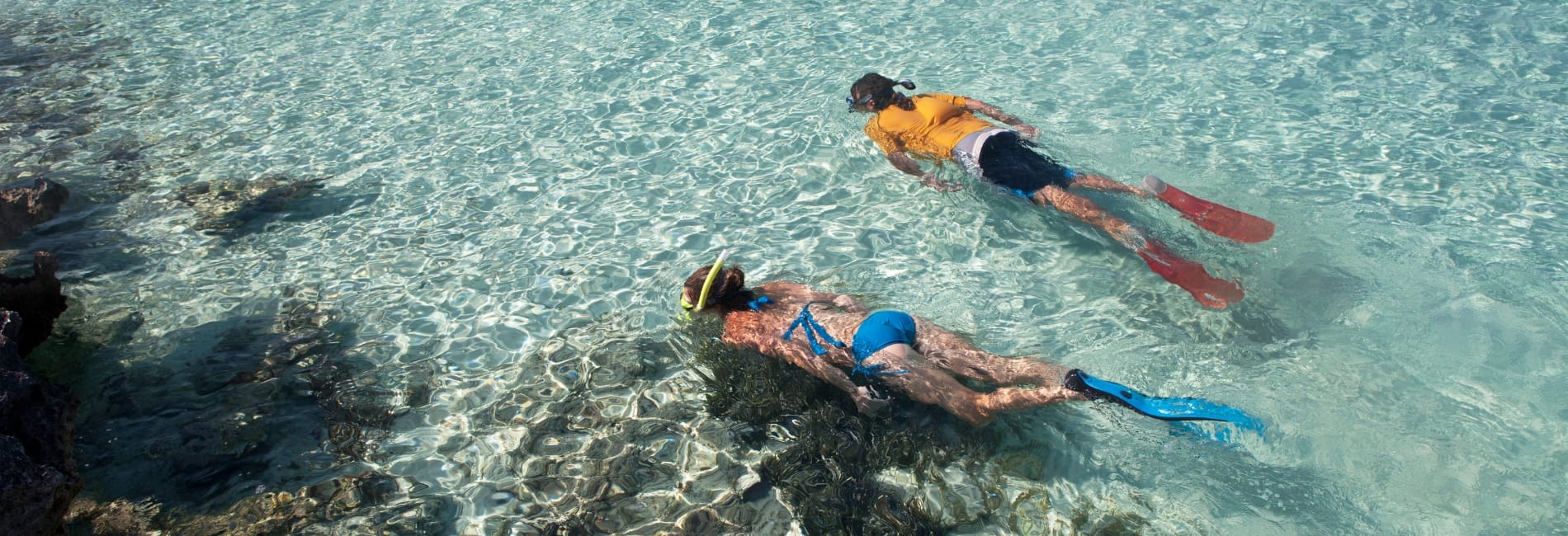
Responsible Snorkeling In Aruba
Below are tips to ensure you stay safe while snorkeling and protect the local sea and plant life.
- Only wear UV-blocking swimwear or reef-safe sunblock.
- Never touch or feed the sea life.
- Don’t touch the coral.
- Never step on seagrass or coral.
- Pick up any trash you discover.
- Wear appropriate snorkeling gear.
- Stay relaxed.
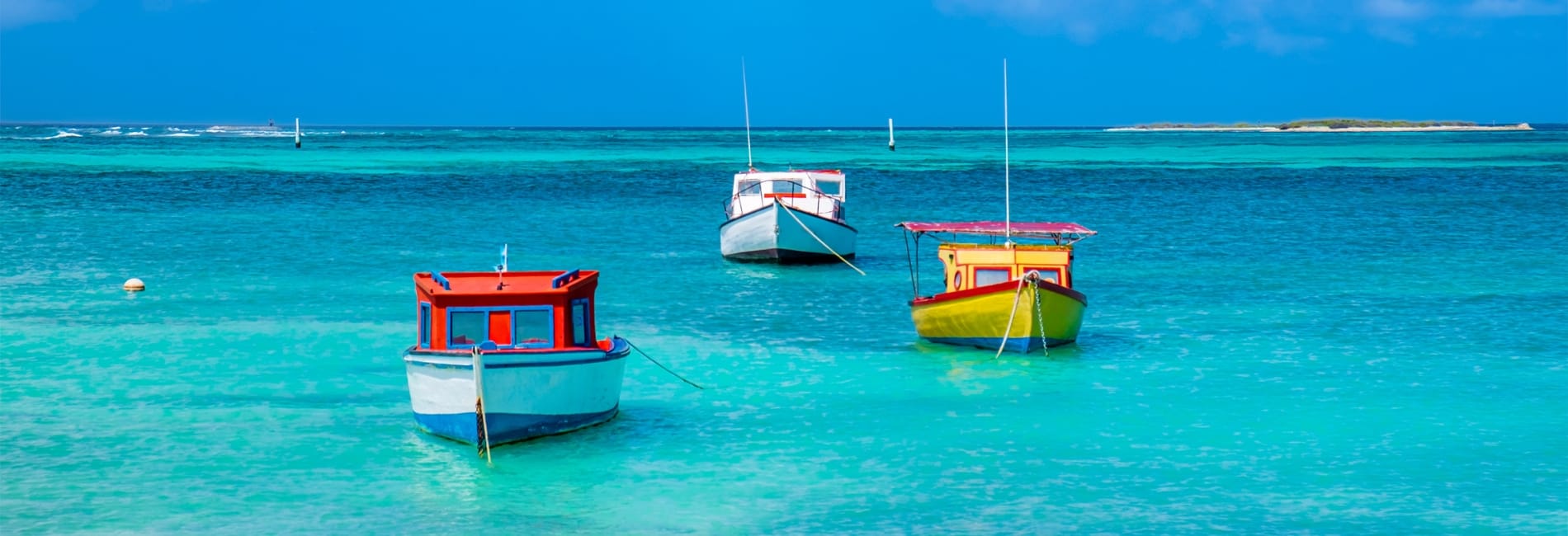
The Best Time to Visit Aruba
Looking for the best time to go to Aruba? Aruba sits well outside of the hurricane belt, making this island a great place to visit throughout most of the year. Average temperatures hover between 80-90 degrees Fahrenheit.
January – March
This is peak season making flight, hotel, and tour prices higher. Temperatures remain mild during January – March with lows in the mid-70s and highs in the mid-80s. There is very little rain making it a wonderful time of year to visit Aruba.
April – August
Some consider this the best time to visit Aruba because it is the “offseason” so visitors can find great accommodation rates and fantastic weather. Temperatures may be slightly higher topping out around 90 degrees Fahrenheit, but you won’t have to deal with much humidity in Aruba.
September – December
This is the beginning of the “rainy” season with September and October the more favorable months to visit as temperatures remain in the high 80s and chances of rain are still minimal. November and December bring large winter vacation crowds and more rain.
Islands, Beaches, Cuisine and More

Share This Post
This post has 0 comments, leave a reply cancel reply.
Your email address will not be published. Required fields are marked *
- previous post: Aruba Restaurant Guide
Wandering our World
Your Journey Begins Here
- by Wandering our World
- Posted on April 14, 2023
The Ultimate Guide To Snorkeling In Aruba: Why It’s Unique, Best Sites & More!
Last updated on April 14, 2023 by Wandering our World
W hite sandy beaches, sheltered from the strong tropical sun by tall palm trees swinging in the fresh breeze of a clear Caribbean day. All surrounded by an emerald sea inhabited by colorful fish, corals, sharks and rays. This and much more is what you will get to experience during your trip to Aruba!
This elongated Caribbean island has incredible diversity in its population, spoken languages, religious beliefs, as we l l as food and cultural events. It’s a ls o a popular destination for divers and snorkelers, and no wonder.
With tourism being the main industry in Aruba, sea lovers will find many leisure, food and accommodation options, as well as many snorkeling and diving trips. Which is good news as snorkeling in Aruba really is a once in a lifetime expercience.
We explain why that’s the case next, before showing y ou the best season for snorkeling in Aruba, and some of our favorite snorkeling spots. As well as one famous snorkeling spot in Aruba you really should avoid.

What’s Snorkeling In Aruba Like?
The west side of the island offers numerous coves, bays and beaches that are perfect for snorkeling. Running from north to south, these snorkeling spots can be reached either fr om shore or by boat.
In fact, most snorkeling sites in Aruba are very close to shore. That’s because the water conditions further out can be seriously difficult, with fierce currents and big waves.
The sandy beaches of Aruba let you imagine just how the water bottom is going to be. Mostly sandy, with a bright color that is vibrant and lively under the strong Caribbean sun.
That means corals, sea plants and animals stand out in this perfect canvas and are easy to spot, giving you plenty of chances to observe the wonderful spectacle that snorkeling in Aruba can bring.
We’ll introduce you to some of the species you will see and swim with below, when showing you the best snorkeling spots in Aruba.
Since most snorkeling sites in Aruba can be reached by shore, the recommended equipment is simply a snorkeling kit including mask, snorkel and a good set of fins. A floating device like a life jacket isn’t a bad idea either, or a rash guard to protect you from the scorching sun.
Make sure you also pack a reef-friendly sunscreen, and you might opt for boots with adjustable fins, rather than the classic full foot fins, so you can easily and comfortably walk over rocks to enter the water. S ome of the beach entries on the island can be r ocky.
Due to the high water temperature on both land and sea all-year round, an exposure suit is not really necessary. But it is recommended to wear a t-shirt or rash guard to avoid burns and heat rashes, and use sunscreen. (Recommended: Sharks in Aruba ).
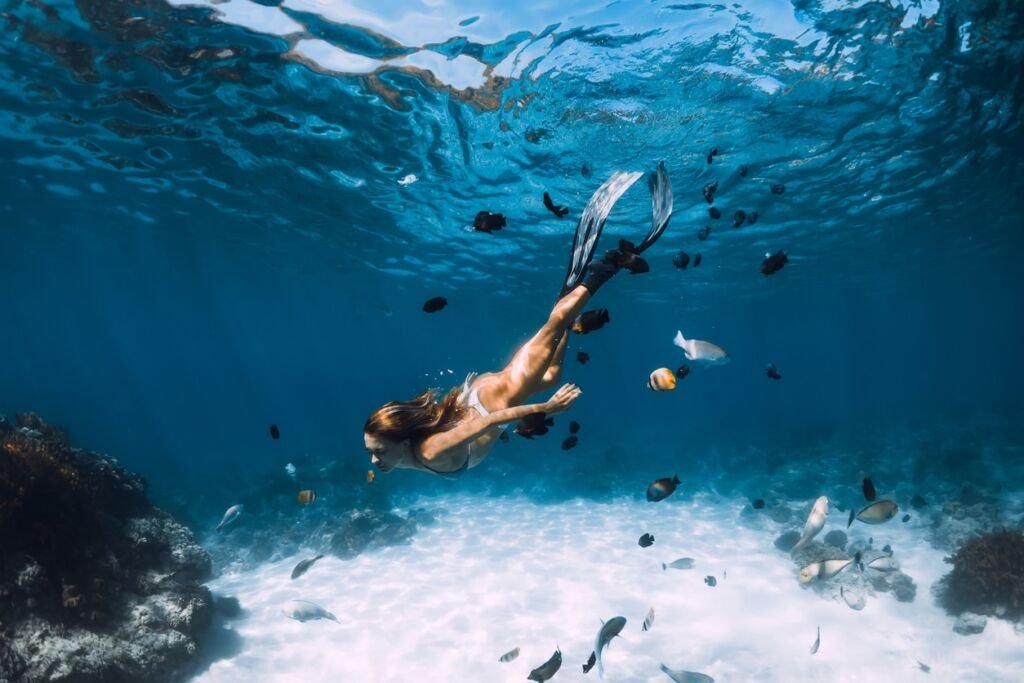
What’s The Best Season For Snorkeling In Aruba?
With its excellent climate all-year round, and being slightly off the hurricane belt, you can always enjoy snorkeling in Aruba! However, take into account these few expert tips:
1). January to March is the peak of high season. There is little to no precipitation and the temperatures are not too uncomfortable, however prices can be prohibitive. Book in advance for the best deals, and expect average temperatures of 86 to 88 degrees Fahrenheit.
2). April to August is considered the absolute best time to visit and go snorkeling in Aruba. Temperatures will be a little higher (88 to 91 degrees Fahrenheit), but since average precipitation is close to zero the climate remains dry, making the heat more tolerable.
Prices are not as high as in the first months of the year, so a vacation to Aruba is less busy and more affordable during these months.
3). September to December is the cheapest time of the year as it’s Aruba’s low season. High trade winds that characterise the first part of the year generally die down in this season. That makes it more pleasant for snorkelers, although less interesting for windsurfers.
Temperatures tend to fall slowly down from 91 to 86 during these months, but precipitation is at its peak. Rainfall can reach 3.7 inches in November, which can affect water clarity.
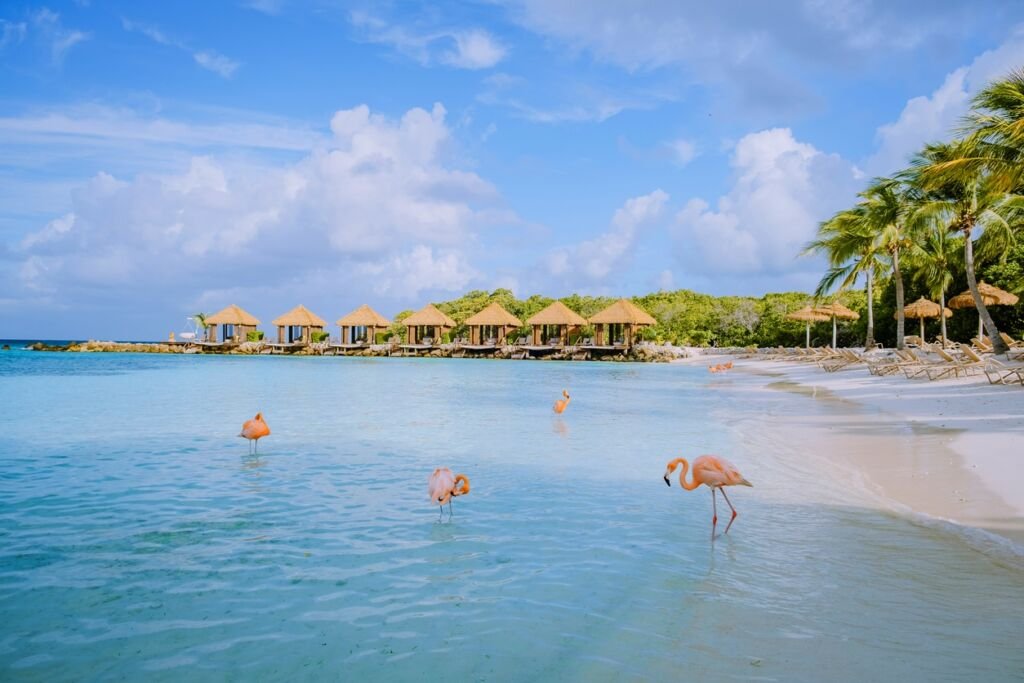
Top Five Sites for Snorkeling in Aruba
Aruba is a relatively small island, and only the western side offers good snorkeling options thanks to favorable wind and current conditions. The eastern side has strong winds and currents making it extremely difficult, and dangerous, to snorkel.
The snorkeling spots on the west side are not so numerous but very rewarding, and being so close to shore they can be revisited several times during your trip. The encounters there with reef fish and sea turt les can be great fun.
Below are our top five favorite snorkeling sites in Aruba, with information on what you can see at each.
1. Mangel Halto Beach
Let’s start with our absolute favorite. This snorkeling site, which can be easily accessed from shore even for a night snorkeling expedition, has much to offer. You can also access it on a boat trip.
Located around the center of Aruba’s western coast, Mangel Halto is generally considered t o be an advanced snorkeling spot in Aruba due to rough sea and strong currents. Based on the conditions, you have three main options to snorkel there:
1). Inside the bay. This is the only option for beginners, and the only one for extremely rough days, too. The bay has a sandy bottom with patches of rocks and small coral heads sheltering small tropical fish. You will experience a mild current here, totally manageable for good swimmers with the right equipment, and you will be able to explore the shallow areas around the dock.
2). Swimming over the shallow, you can reach two cuts in the coral reef that lead to the outside reef. If you are a strong swimmer, this is a great opportunity to witness the beauty of the healthy reef of Mangel Halto, one of the top sites for snorkeling in Aruba. Schools of fish swim around this extremely diverse reef, with both soft and hard corals that are in great conditions.
3). Our favorite way of snorkeling in Mangel Halto? Definitely drifting from Puerto Chiquito! You can let the current transport you from the entry point to the cuts in the reef, taking you easily into the bay and then you can swim back to shore. Little struggle, more energy, and this way the snorkeling will be more enjoyable and you will cover a wider portion of the reef and see more marine life!

2. Puerto Chiquito
This little harbor area is not only a good entry option for Mangel Halto, but it also has some great reef on its own.
If y ou swim against the current on the outer reef, you can see huge pillar corals attracting all sorts of small fish and critters in their cracks. As well as finger, brain corals, anemones and sea rods.
Typical encounters in this snorkeling area are angelfish, wrasses, filefish, grunts and even occasional barracudas!
3. Antilla Wreck
For that “wow-factor”, this is a not to be missed snorkeling spot!
This 400 ft long sunken ship from the Second World War is located on the northern side of the island, and can be enjoyed by snorkelers and divers alike due to its shallow positioning.
The front of the ship is especially shallow, making it the best area for snorkelers, while its deepest point is at about 60 feet (18 meters). It is encrusted by sponges and both hard and soft corals and attracts schools of fish along with critters living in its holes and crevices.
Due to its distance from shore and the strong currents, it can only be safely reached by boat.

4. Catalina Cove
This is a nice snorkeling spot which is great for beginners thanks to its easy water entrance, but we recommend swimming over the cove to appreciate the rich underwater scene there.
While on the inside it’s mostly sand with some rocky patches and not much more than that.
However on the outer reef at the cove, schools of damselfish will follow you and you will be able to see the gorgeous French angelfish, along with numerous silversides and grunts. Keep an eye out f or sea turt les t o o!
5. Arashi Beach
Close to Catalina Cove, this beach made of white powdery sand hides an extremely healthy and well preserved reef, conveniently identified by a white buoy on the surface.
Tall Pillar corals and stunning Elkhorn corals attract numerous butterfly fish, French angelfish, moray eels, file fish and surgeon fish.
This is a colorful spot perfect for both beginners and advanced snorkelers looking for biodiversity and corals in good shape.

One Snorkeling Site in Aruba You Should Avoid
We also want to mention the infamous Baby Beach , at the southern tip of Aruba, which is located in a very difficult area exposed to winds and currents. This spot is quite renowned, but we do not recommend it at all.
The entrance is very problematic, currents can be fierce and winds can make it an extremely uncomfortable spot for snorkeling in Aruba.
This is definitely a better spot for windsurfing rather than snorkeling or scuba diving.
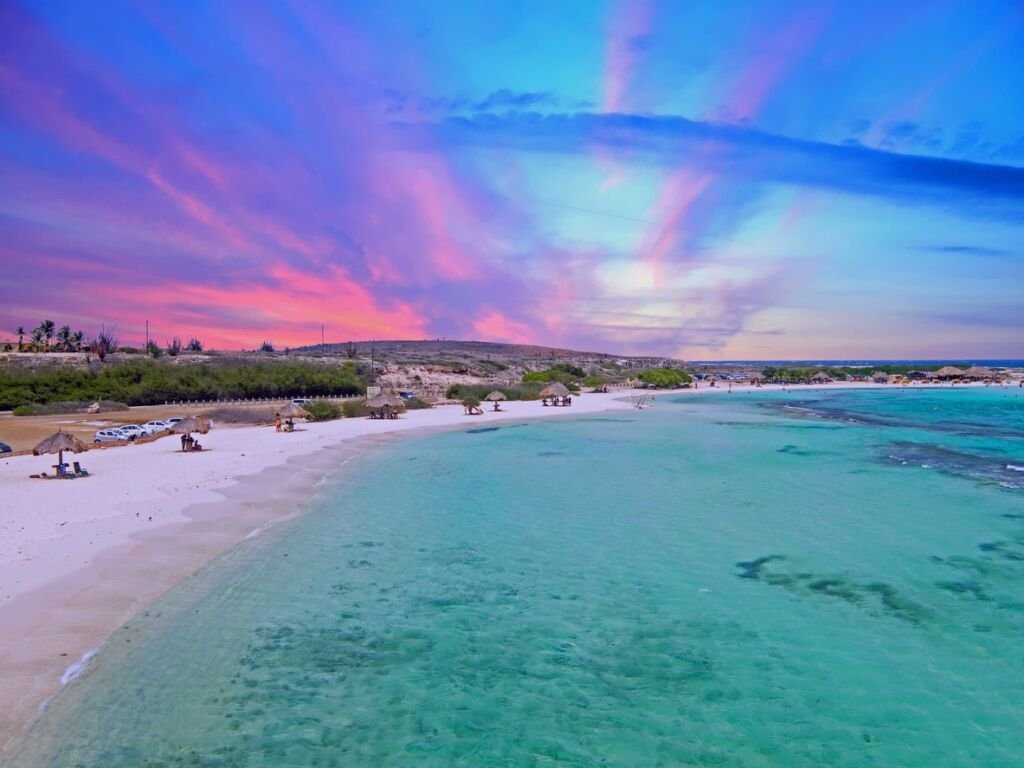
Our Final Thoughts on Snorkeling in Aruba
There are some lovely snorkeling sites in Aruba, and an array of colorful and exciting things to see. If traveling to the island on holiday then renting the right equipment and exploring Aruba’s underwater life is an absolute must.
Listen to local guides, keep an eye on the weather, but most importantly have fun!

Hi and welcome to Wandering our World! This article was written by one of the Wandering our World team - a team of travel enthusiasts who live around the globe.
View all posts
Share this:
Author: Wandering our World
Hi and welcome to Wandering our World! This article was written by one of the Wandering our World team - a team of travel enthusiasts who live around the globe. View all posts by Wandering our World

“This article may contain affiliate links. If you decide to make a purchase, we will make a small commission at no extra cost to you.”
Best Aruba Snorkeling Spots To Visit
Aruba snorkeling beaches offer you top conditions to explore the marine life of the Caribbean. With powder-fine white sand and warm, clear waters, this destination is a paradise for travelers seeking underwater beauty; you can discover vibrant coral reefs, colorful tropical fish, shipwrecks and swim with turtles on One Happy Island! With this guide, I help you go snorkeling in Aruba with detailed descriptions of the best spots such as Arashi Beach, Mangel Halto, Boca Catalina, Malmok Beach, Tres Trapi, SS Antilla as well as other recommended sites and make planning your vacation easy with some extra travel tips!
Table of Contents
Arashi Beach
Boca catalina, malmok beach, mangel halto, antilla shipwreck, boca grandi, rogers beach, eagle beach, aruba snorkeling tours, what to see while snorkeling in aruba, where to stay in aruba for snorkeling, best time to go for an aruba snorkeling vacation, how to get to aruba, how to get around, what are the best snorkeling spots in aruba.
Aruba beaches are considered to be the cleanest and prettiest in the Caribbean. Although there are several beautiful beaches all around the island, there is a big difference between the coastlines.

You need to know that constant refreshing trade winds blow from northeast and southeast, peaking midday. Therefore, the best Aruba snorkeling beaches can be found on the east and west sides of the island. The northern coastline is wild and rocky making the beaches unsafe for snorkeling; they are perfect for kite surfing though.
Top 11 Snorkeling Sites in Aruba
Quick Arashi Snorkeling Info
- Snorkeling difficulty: Beginner – Advanced Level
- Water depth range: 5ft – 25ft / 1.5m – 8m
- Fish species to see: angel fish, yellow goatfish, parrotfish, blue tang fish
- Corals that you can find: brain corals, elkhorn coral, fan coral, pillar coral, Orbicella faveolata
- Suitable for kids?: yes
- Parking: on-site
- Best time to visit: during weekdays
Arashi Beach is a long and wide, relaxed sandy beach on the northernmost of Aruba, close to the island’s famous landmark, the California Lighthouse. It is a quiet beach during the week (but gets busy on weekends) and there is a lot to see under the sea!

You can enter the water in comfort through soft sand anywhere in front of the beach huts and will find pretty hard coral patches as well as colorful fan corals with angelfish, and yellow goatfish groups around not so far from the shore. Since the water is not too deep, this snorkel spot is suitable for beginners and for kids too.

We found the reef the nicest on the right side. To get there, you need to enter the water at the northern end of the beach, where you find pelicans hunting for fish.
Swim about 165-220ft/50-70 meters to reach the reef where you will find an extensive area covered with hard coral species, brain, staghorn, elkhorn corals as well as soft sea fans and gorgonian corals. Also lots of fish including huge shoals of blue tangs. However, I recommend snorkeling in this area for experienced only as the current can be strong.
Arashi Snorkeling Map

Boca Catalina (also known as Catalina Cove) is next to Arashi in the Noord area. It is very popular and well-known among local families as well as tourists thanks to top snorkeling conditions including shallow water and rich marine life.

Moreover, if you want to know where to swim with turtles in Aruba , Catalina Cove is the place where you need to go! Just about 20-30 meters from the shore, the sea bottom is covered with seagrass. This is where you can spot green turtles as they feed on seagrass!

This small bay next to Catalina Cove is our top pick to find sea stars! Trapi means steps: there are stairs carved in the rocks here, offering safe entry/exit points to and from the sea. The shallow waters make snorkeling safe and enjoyable here even for beginners.

If you are not a confident swimmer, stay close to shore within the buoys. To find the sea stars , swim right from the stairs! There are plenty of them in front of the big house with an anchor in the yard!

The beautiful Malmok Beach is a popular Aruba snorkeling spot with vibrant coral reefs that is easily reachable from the shore! The area is a narrow, sandy stretch interrupted by rocks.

The clear, shallow water offers great snorkeling with rich sea life: you can see here different types of hard and soft corals, tropical fish, and even turtles. On the top of these, you can snorkel the Baboo shipwreck too which rests very close to the shore with its top part above water.
Malmok Beach is a popular stop for boat tours too so the area can get busy; if you want to avoid crowds, visit this snorkel site in the morning!
Mangel Halto is definitely the best Aruba snorkeling spot if it comes to marine life! We were amazed by the water clarity and the variety of corals here!
Mangel Halto can be found on the southeast side of the island, south of Spanish Lagoon. As it is far from the island’s main tourist area, it is less visited; a perfect spot to relax and enjoy some of the best snorkeling in the Caribbean ! You can get here the easiest by renting a car or by joining a Mangel Halto snorkeling trip .

Mangel Halto is not only a beautiful beach, but rather a complex area consisting of mangrove forests, a pretty lagoon with crystal clear waters, and the healthiest coral reef you find all over the island.

You can choose different points to enter the sea, even from the rocky shore on the lagoon side, from the wooden dock at the eastern end of the area (there is a parking lot where you can leave your car, this spot is marked as Bao Baranca on the map) or from the sandy mangrove beach next to it. We recommend the latter two as usually there is a current running from southeast to northwest.
If you get into the water from the dock or from the beach, you will be doing a drift snorkel as the current will take you all the way along the reef and you can comfortably exit the water at Mangel Halto main beach.

The nicest corals you find on the outer reef, around the orange buoys. The marine life is extremely rich here; you will see colorful fish such as parrotfish, yellow-tail snapper, sergeant majors, schools of tangs, elkhorn corals, deepwater gorgonians, sponges, and anemones.
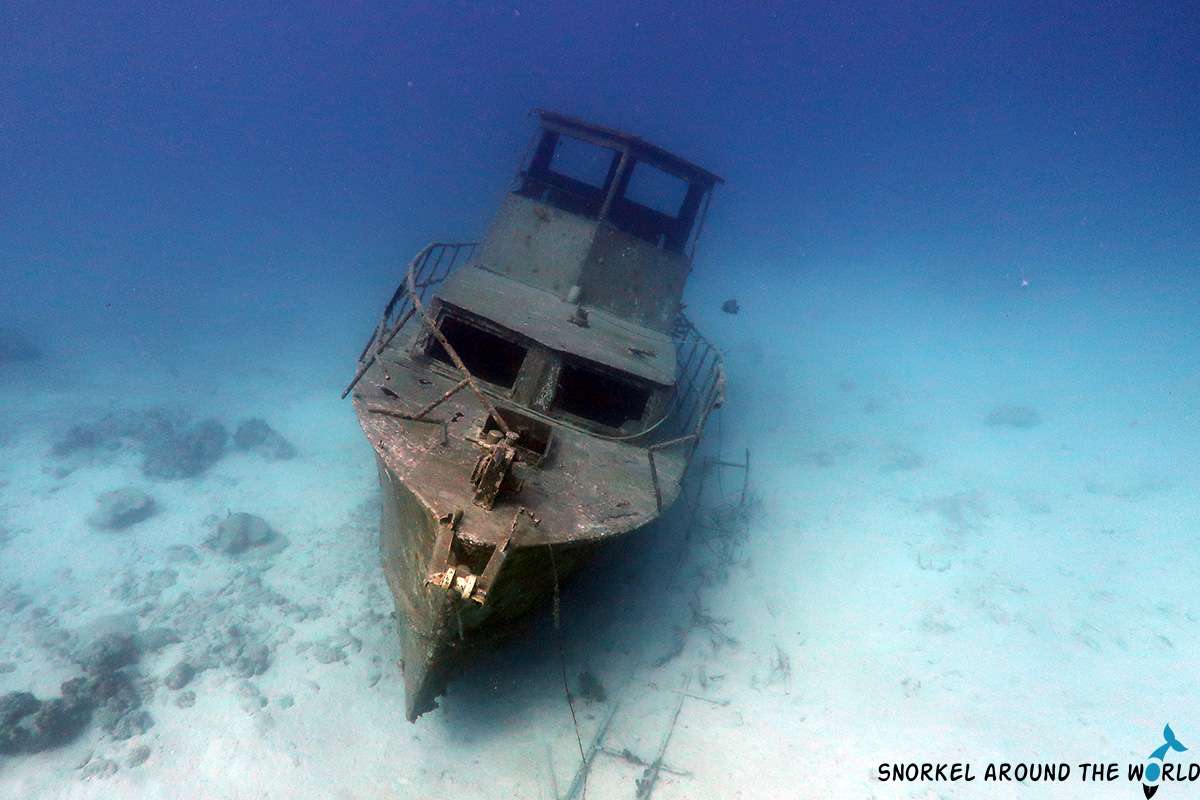
What’s more, even a shipwreck lies here: the Kappel Wreck is next to the buoy in the lagoon in relatively shallow water so it is fully visible for snorkelers too.
Aruba is famous for wrecks. There are several ship- and plane wreckages resting at different depths around the island. Most of them are accessible for divers only, but luckily there are some that can be visited by snorkelers too including the famous Antilla wreck, a 400ft/122m long WWI cargo ship.
The Antilla is one of the Caribbean’s largest shipwrecks that lies at 60ft/18m deep water not so far from the shore at the northern side of the island, around Malmok/Tres Trapi. As some parts of the wreck are close to the surface, it is visible to snorkelers too.

By visiting this Aruna snorkel site, you can observe how corals settled on the ship and turned it into an artificial reef attracting rich sea life into the area.
Additional Aruba shipwrecks that are suitable for snorkeling are the Baboo Wreck at Malmok Beach and the Kappel at Mangel Halto. These, especially the Baboo are accessible from the shore so are perfect if you are looking for beginner-friendly shipwreck snorkeling in Aruba.
Baby Beach is a gorgeous half-moon shape shallow lagoon with calm water. It is a favorite beach for families with kids on the southeastern side of Aruba. The lagoon is protected from wind and currents: this means that snorkeling is safe here, although the visibility was not the best when we visited.
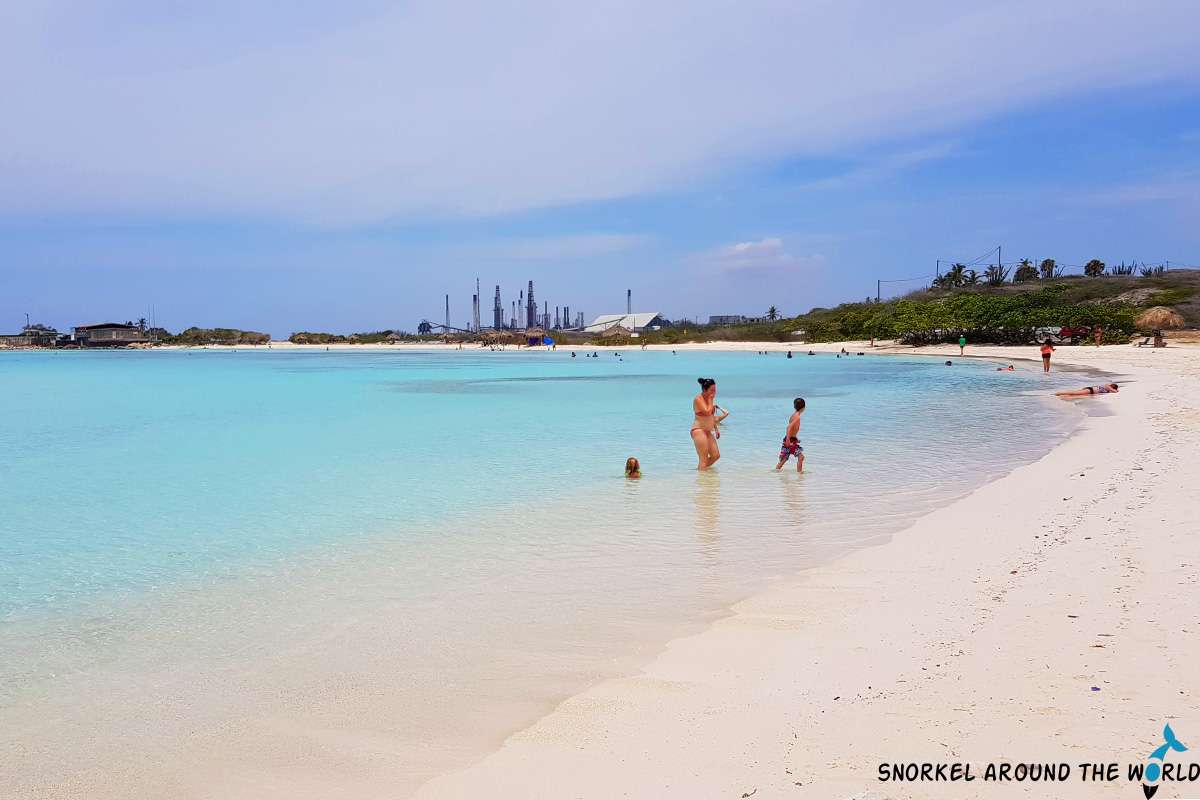
One can find small coral pinnacles in the middle, often with turtles around them. Swimming out of the lagoon there is a bigger reef; although the corals are not in good condition here, there are big schools of fish, mainly blue tangs around. However, the currents are pretty strong, therefore it is not recommended for beginners to swim out. Staying inside the lagoon is a safe option.

For your comfort, beach huts are available and there is an onsite restaurant, the Big Mama Grill. Great food with Flintstones experience!
Located in eastern Aruba, Boca Grandi is rather a kitesurfing beach due to steady trade winds, waves, and strong currents. Although there are some days when the wind stops and it is possible to go swimming/snorkeling here too.
The current is tricky though; therefore we do not recommend Boca Grandi for novice snorkelers, but if you feel experienced and find good weather conditions to visit this snorkel spot, don’t miss out on it!

You can see coral pinnacles in the middle of the bay with turtles around them, while the outer reef features sea fans and hard coral colonies. Even if the weather is not good for snorkeling, it is worth visiting Boca Grandi because it is a pretty white sandy beach!
This small beach next to Baby Beach locally known as Nanki. A quiet place with calm water that is perfect for an easy Aruba snorkeling adventure! The water is shallow at first but becomes deeper further out where you will find a small coral reef. Snorkeling is similar to Baby Beach, although some people say they prefer Rogers Beach because it is more relaxed and there are more fish to see.

Eagle Beach is considered the most beautiful Aruba beach thanks to its powder-fine white sand and turquoise, crystal-clear water. It is listed among the number-one beaches in the Caribbean! Since there are no big hotels directly on the beach, it is a perfect place for relaxing and sunbathing.

Sporty ones can do a variety of water sports too! If it comes to snorkeling, you might see some fish but there are no coral formations in this area. However, Eagle Beach is a good place to master your snorkeling skills if you are a newbie or teach your kids how to use their snorkel gear.
Palm Beach is a lively shoreline along the famous High Rise resorts with a long, paved sidewalk in front of them that is perfect for sunrise or sunset walks. Since the whole coast is public, you can freely stay on it except entering the hotel areas. Aruba’s Palm Beach is also famous for its bars and restaurants.

This might be not the island’s best snorkeling spot since it is a sandy beach, but if you still want to put your goggles and fins on, you might try it between the RIU and DIVI resorts, directly facing the police station. It is a perfect shore snorkel spot for beginners, with quite a lot of fish and a few coral patches. If you wish to see more, sign up for an Aruba snorkeling trip at any water sports kiosk at the beach!
Discover other Caribbean destinations too, see our related posts: Best places to go snorkeling in Barbados Where to snorkel in Curacao Bonaire snorkeling guide
People often ask what is the best way to do snorkeling in Aruba? Are the places available from the shore or better to book private snorkel trips? It all depends on your priorities.

If you have a rental car and bring your own snorkel equipment , the best is to visit the snorkel beaches privately as most reefs are easily accessible from the shore. Like this, you can decide where you want to snorkel, how long you want to stay in the water etc… If you want a convenient way of exploring the best snorkel places, you can join Aruba snorkeling tours .
Best of Aruba Full-Day Bus Tour This compact full-day excursion takes you to Aruba’s top attractions. Guided by an experienced local guide, you will be visiting California Lighthouse, Alto Vista Chapel, the Natural Bridge, and the Glass Blow. Closing the day, a refreshing snorkel session is also included at Baby Beach.
Half-Day Catamaran Snorkeling Tour Discover two of the top snorkel sites of Aruba by joining this half-day snorkel tour! Get onboard a spacious catamaran that will stop first at the Antilla Wreck then at Boca Catalina. What’s more, food and drinks are also included throughout the day; enjoy a yummy breakfast, a delicious lunch, and drinks from open bar!
Mangel Halto and Baby Beach Snorkeling Tour Immerse yourself into Aruba’s marine life; swim with turtles, explore the Kappel Wreck, and observe colorful Caribbean fish species at two premier snorkel spots; Mangel Halto and Baby Beach. Snacks and drinks are included.
The underwater world is rich and colorful in the Caribbean and no matter whether you go diving or only snorkeling, there is a lot to see! The sea bottom is covered with different hard and soft corals: huge brain coral colonies, elkhorn, and staghorn corals give a home to tropical fish species.
You can get an insight of what can you expect to see while snorkeling in Aruba if you watch our video:
A wide variety of fish species, like Blue tangs, and yellow goatfish are swimming around in big groups, while colorful parrotfish, butterflyfish, surgeonfish, groupers, trumpetfish, needlefish, and angelfish play hide and seek between sea fans. But there are bigger sea creatures too: one can see stingrays, manta rays, and you can go snorkeling with turtles too!

Aruba High Rise hotels are popular among holidayers who seek an all-inclusive experience near the best white sandy beaches. If you wish to be close to the best Aruba snorkeling spots and looking for a high-quality resort experience, consider staying at the Ritz-Carlton , Marriott Resort & Stellaris Casino , Barcelo Aruba , or the Hyatt Regency which are in Palm Beach but are not so far from Arashi Beach, Boca Catalina and Malmok Beach.
For a more relaxing stay, you can stay in Savaneta too where you can reach easily Mangel Halto and Baby Beach. On this side of the island, there are no big resorts but lovely apartments rented directly by locals.
Aruba is a year-round holiday destination with pleasant air and water temperatures no matter the season, so there is no bad time to go! With an average rainfall of less than 20 inches per year, daytime temperatures of 27 °C (82 °F) and constant blowing trade winds, Aruba is one of the most temperate islands in the Caribbean.
The difference between the summer and winter temperatures is just 3.6 °C (38 °F). The sea is warm all year round (26-29 °C, 78-84 °F) making every season perfect for snorkeling in Aruba!
Additionally, the ABC Islands are situated outside the hurricane belt, meaning it is a safe location even in the Caribbean hurricane season . You can experience some thunderstorms during the autumn months, but these usually don’t last too long and you can be rewarded with amazing after-rain rainbows!
Aruba travel tips
The list of reasons why Aruba should be your next vacation is endless. This small island with a total area of 70 square miles, 20 miles (32 km) long and 6 miles (10 km) across offers a lot to see!

The diverse landscape, from heavenly white sand beaches to rugged coastlines is perfect for an easy-going beach vacation but also for active trips including water sports and island discovery! If this is enough, the friendliness of the locals will definitely amaze you, no wonder why Aruba is called One Happy Island! Let us give you some travel tips for your Aruba holiday!
Aruba is located just 15 miles north of Venezuela in the southern Caribbean Sea. With Bonaire and Curacao, they form the ABC islands, often called Dutch Caribbean as constituent countries of the Kingdom of the Netherlands.
Several airlines offer daily flights to Aruba from many different cities. You can get to Aruba with American Airlines from most US airports, while from Europe KLM Royal Dutch Airlines offers daily flights. Caribbean cruises like Royal Caribbean, Celebrity, or Norwegian also stop at Aruba.
One of the best things we liked in Aruba is that the island is small with roads in good condition, so it is pretty easy to go around no matter which area you stay in. Most snorkeling places and attractions are accessible with a normal car, but there are some off-road areas where you need a jeep.

Car rental is affordable, it is easy and safe to drive. Parking is free except for a few areas in Oranjestad (Harbour and downtown). Although we haven’t tried but heard that public transport is also reliable.
Inspired? Pin it!

Written by Anett Szaszi
Anett is a certified scuba diver in the SSI System, freediver, and an expert in snorkeling with more than 10 years of experience. She fell in love with the ocean while snorkeling in the Red Sea on a vacation to Egypt back in 2008. Since then, she has been traveling to discover the world’s best snorkeling spots and sharing her experience and tips to inspire others. Find her photos on @anett.szaszi Instagram too !
Leave a Reply Cancel reply
Your email address will not be published. Required fields are marked *

Aruba Snorkeling – The Complete Guide

Get the most out of your Aruba snorkeling experience. We have snorkeled nearly every spot on Aruba and there are some great locations with healthy reefs and sea life, but it offers fewer spots than its neighbor islands.
What are the best Aruba snorkeling beaches and fun boat tours? Many of the beach snorkel spots, that you reach by rental car or bus, the boat tours also visit. And some also stop at the famous Antilla shipwreck, which is worth checking out. They take off from the very popular Eagle Beach and Palm Beach, in front of the hotels. Plus the tours include music, food, and other shenanigans.
Aruba Snorkeling Spots and Boat Tours

Click on each location below for a full review, description, and many pictures. And continue down the page for the Aruba snorkeling map and more about what you can expect, including safety and travel tips.
Mangel Halto – The best snorkeling site available on Aruba. You can access it from the shore, with a guide (including at night) or by boat tour.
Puerto Chiquito – Great shore snorkeling with a one-way drift option to Mangel Halto.
Arashi Beach – Beautiful white sand beach with access to some healthy reef.
Catalina Cove – Right next to Boca Catalina, this is a good beginner spot.
The Antilla Wreck – Boat tours take you to this popular shipwreck snorkel.
Malmok Beach – Snorkel this busy spot from the beach or by boat tour.
Baby Beach – This famous location doesn’t have great snorkeling without risking safety.
And hey, if you find this page helpful, you will also like our free monthly snorkeling newsletter .
Other Aruba Snorkeling Locations
While we believe the sites described above are the best Aruba snorkeling beaches and spots, here are a few others that might be good for you.
De Palm Island/Slope – This is a barrier island destination fun park south of town, but north of Mangel Halto. It’s a full day experience for one price, including food and shore snorkeling. They have two protected, man-made coves that are a good for spotting fish. But if you are more experienced you can snorkel outside the coves and there are reefs similar in quality to Mangel Halto.

Savaneta Beach (Commandeurs Bay, Reef) – To access the reef at Savaneta you have a long wade across a very shallow bay over sea-grass and uneven rocks. At the reef there are fish, but the Elkhorn Corals are all dead. You can supposedly snorkel the length of this outside reef, but the common wind, with waves and currents here make this not very fun and potentially dangerous. If you have low winds you could try this Aruba snorkeling spot.
Rodgers Beach – Just west of Baby Beach this beach is also fairly exposed to the winds and waves and there is a good bit of fishing boat activity, making it an undesirable Aruba snorkeling location.
Boca Grande – This beach is on the east coast near the south end of Aruba. There is a barrier reef, but it is so exposed to the trade winds and waves that the currents are too strong to snorkel even behind it. It is potentially dangerous unless the winds are uncharacteristically low and the waves are calm.

Suggestions and Questions From Other Snorkelers
- Guided Night Snorkel at Mangel Halto
- Sailboat Tour – Snorkeling Spanish Lagoon
- Our Autumn Snorkeling Trip to Aruba
See All Aruba Posts
Share or Ask
Add Bonaire or Curacao to Your Aruba Trip
We suggest augmenting your Aruba trip with some time on Bonaire or Curacao . The travel between islands is easy and fast on a small airplane flight, but you have to go through customs, so we would probably not do it as a day trip. The combination of having some time on the amazing beaches in Aruba, with the better snorkeling on Bonaire or Curacao makes for a wonderful trip.
Have You Seen These Guided Snorkel Travel Adventures?

See all of the snorkeling trips to: Coral Triangle – Caribbean and Mexico – Pacific Islands – Red Sea
Learn More About What to Expect
Below learn what we like about Aruba snorkeling and read some safety and travel tips.
What’s Good About Aruba Snorkeling?
1. Less Locations Means You Can Focus Because there are not many great Aruba snorkeling sites, we would keep revisiting the best one. It will save you a bunch of driving and be a very relaxing snorkel vacation. If it were us, we would stay at a vacation rental right next to Mangel Halto (in fact we did), and snorkel there every day, so long as it is within your skill range. Spending lots of time at one location can be very rewarding, allowing you to uncover little gems of beauty you would normally miss.

2. See Tropical Fish in Good Snorkeling Depths Most every Aruba snorkeling site offers the ability to swim with many fish, often in 12 feet of water or less. Though there is not much live coral reef, the colorful tropical fish are fun to see on their own.
3. Enjoy the Non-Snorkeling Benefits With Your Free Time Aruba is rare for how amazing its white sand beaches are. Enjoy them. And go out to eat at Aruba’s restaurants. Try the unique Aruban food, and don’t miss the Dutch Pancake houses.

Snorkeling Sunburns Suck!
Check out the snorkeling rash guards , wetsuits , and reef safe sunscreen we use to protect ourselves and to protect fish and coral from sunscreen chemicals.
Aruba Snorkeling Safety

Let’s face it, Aruba has had its fair share of high profile deaths in the news related to snorkeling. It is not necessarily any more dangerous than other locations. But it is very busy, and all sorts of people get in the water with very little ocean knowledge or snorkeling skill. The fact that Aruba is a bit of a party island may contribute to the situation. Please be safe.
Aruba Is Windy
Aruba is consistently windier year round as compared to its neighbors Bonaire and Curacao. Higher winds mean bigger waves and more currents. And depending on the wind direction this can definitely limit your snorkeling options, and increase the danger. So before heading out check the wind directions and make good choices on where to snorkel, we share how here . The Windfinder website is useful for this. And do not get in the water if it is at all rough. We don’t.
Aruba Snorkeling Is Exposed
Most Aruba snorkeling is exposed to open ocean. There are two areas that are fully protected in a bay or behind a reef. One is Baby Beach and if you leave the protection of the bay it is dangerous most of the time. The other is if you stay inside the protected bay at Mangel Halto. But currents are strong in certain areas even inside.
Aruba Ocean Currents
We mention the different currents for each location above, but just be aware that currents are fairly common, and in some places deadly on Aruba. Just because you see other people in the water does not mean they are knowledgeable snorkelers. Just the opposite is likely. Always evaluate each situation with your own skills. We help you learn about ocean conditions on this page .
Aruba’s East Coast
The common wind and wave direction pounds the east side of the island, making snorkeling there almost impossible. Rarely, the wind will switch directions, allowing you to access Boca Grande, mentioned above, more safely.

Aruba Snorkeling Travel Tips
When to go for snorkeling.

Aruba’s weather is amazingly consistent through the year. The air and water temperatures don’t change much. So you can snorkel any time.
In the past we visited Bonaire and Curacao in March or April, because it is historically less rainy, and the winds are not as high. But Aruba’s winds don’t drop much during that period. It is a little less windy from September through December, which is during the rainy season and hurricane season. We have changed our preferred time to visit Bonaire and Curacao to the fall months due to the lower winds and we put up with the rain. The ABC islands don’t get a lot of hurricanes, but they do see some tropical storms. So if you go then, consider trip insurance .
You can see some historical Aruba wind statistics here , and rain and other statistics here .
So as far as the weather, there really is no clear best time of the year to visit Aruba for snorkeling.
The cost of your trip will be higher if you visit during the high season, mid-December to mid-April. So that might influence when you plan your trip for.
Flying and Driving
It is easy to fly to Aruba directly from many cities in the U.S., and there are many flights from Europe as well. Learn what airlines fly to Aruba from what cities on this website .
For getting around Aruba you can either rent a car, or take the public bus. Many of the major car rental companies serve Aruba. A car is all you need. There are no snorkel beaches that require a 4×4 to get to.
Taking a bus is a real option on Aruba. They stop at all of the major beaches. Visit the arubus website for routes, schedules and prices.

Where to Stay for the Best Snorkeling
Aruba is a tiny island, but with a good number of accommodation options ranging from hotel resorts to vacation rentals. Read our Aruba accommodations page for help on where to stay for the best snorkeling.
Note that the most popular resort beaches, Eagle and Palm, don’t have any snorkeling, but you can get on a lot of boat trips from them.
More Snorkeling Tips
- See our Snorkeling Equipment tips
- Check out our Snorkeling Camera suggestions
- Get Travel Insurance that covers snorkeling accidents
Little Blue Backpack
chase what's fun.
Aruba , Destinations , Vacations · February 19, 2022
Aruba Snorkeling Guide: The Best Beaches to Visit
Are you ready to find tropical fish and colorful marine life throughout crystal-clear waters? Aruba’s beaches are some of the best spots to snorkel and will give you an experience to remember. The range of different, easily-accessible snorkel sites (from calm and mild to rugged and rocky) all bring a unique underwater perspective. And this Aruba snorkeling guide will point you in the right direction!
Fishes of all colors. Bright coral reef. String rays and sea turtles…If you know where to go in Aruba, you can see it all!
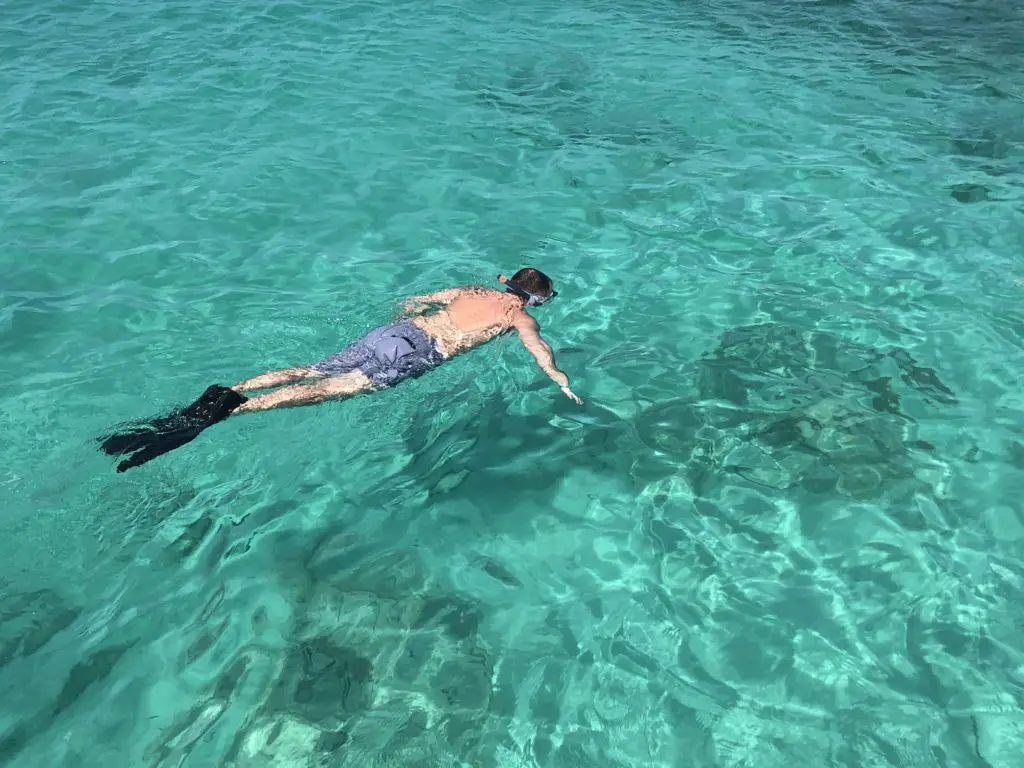
The best places to snorkel are on the west side of the island while the rough east side is reserved for admiring from afar. And while Eagle Beach and Palm Beach are two popular, white-sand beaches that you will definitely become familiar with, the snorkeling spots are elsewhere. Here is the Aruba Snorkeling Guide that lists out the best beaches to visit:
Boca Catalina & Catalina Cove: Aruba Snorkeling Spot #1
North of Palm Beach is one of the most fantastic snorkel stops on the island with gorgeous white sand and the open ocean. The turquoise waters in this area are full of sea life and it’s a great spot for beginners.
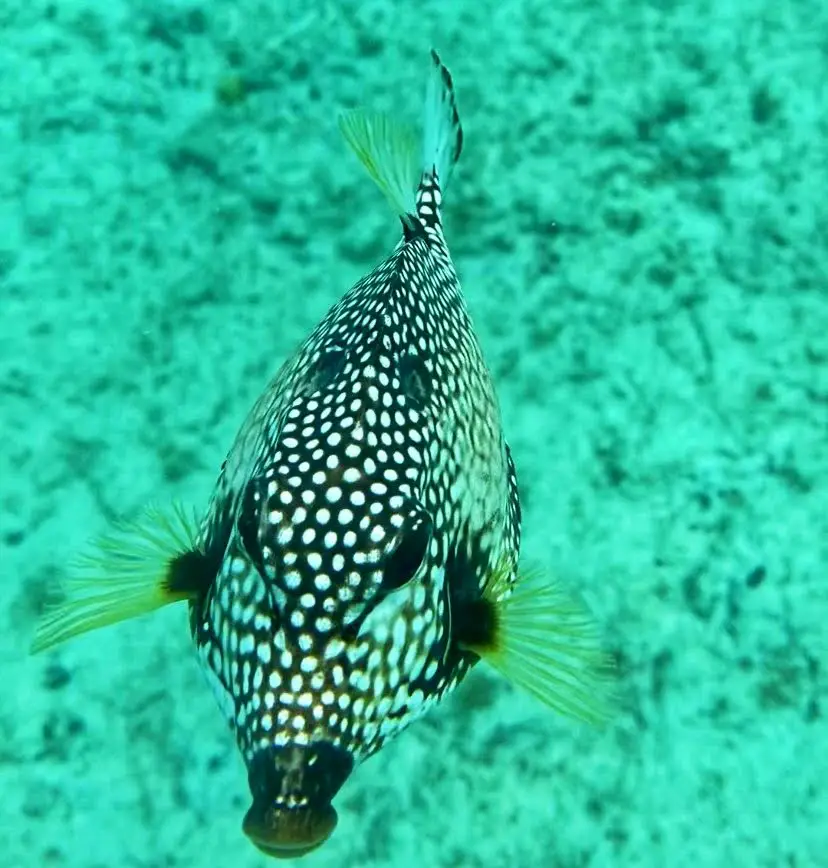
Boca Catalina Beach & Tres Trapi
If you want to go on your own, you have a good chance to find green sea turtles, string rays, blue tangs, and large barracuda. That said, you have to get here early. Aim to arrive between 7:00-8:00 AM to take advantage of calm waters before too many people and boats start to disrupt the waters.
My best snorkel experience ever was at Boca Catalina—I’ll never forget the turtles!
After Boca Catalina, make your way south to find Tres Trapi (“three steps.”) Use the steps carved out into the rock to enter the water and see what you can find in this area. While there are fewer fish, you will find plenty of sea stars!
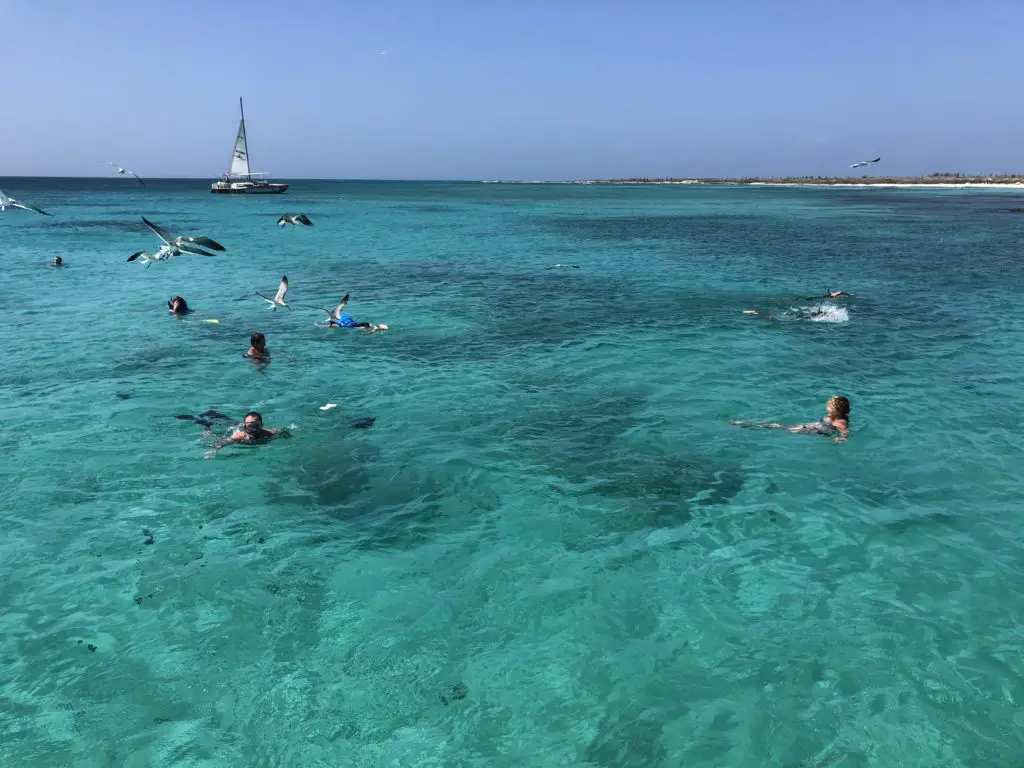
Malmok Beach: Aruba Snorkeling Spot #2
Catamaran snorkel tours (2-for-1).
One of the most fun experiences in Aruba is a catamaran snorkel tour where you will visit Boca Catalina and the SS Antilla wreck at Malmok Beach, one of the largest shipwrecks in the Caribbean. About a half-mile out from shore, the ship is nearly 400 feet long with a maximum depth of 60 feet.
If you choose this route, you will knock both Catalina Cove and Malmok Beach off your snorkel list. Plus, you will benefit from a guide to help show you where the shipwreck is, as well as any hot spots for certain sea creatures. In addition to snorkeling, you can drink, play music, take advantage of the rope swing and swim in the bright turquoise waters.
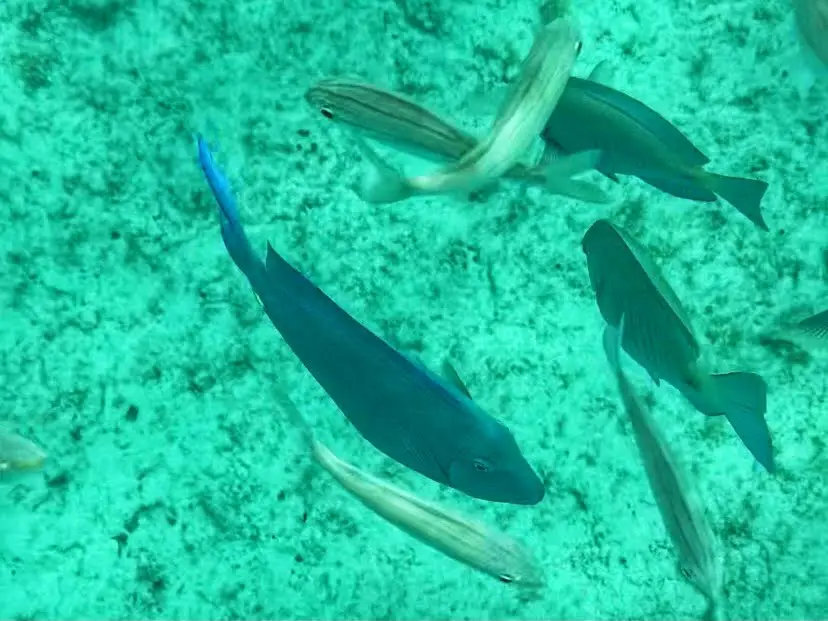
Arashi Beach: Aruba Snorkeling Spot #3
This Aruba beach is tough to beat and certainly a favorite place of mine. Located in a perfect spot on the north end of the island, the trade winds will be blowing and keeping you cool in that hot Aruba sun. And you will get beautiful views including the open ocean and California Lighthouse.
And of course, there is no shortage of tropical fish and coral reefs at Arashi Beach. This is another spot that is good for beginners because there is plenty to see just off the shoreline. The right side is where you will find a wide variety of colorful reefs and small fish.
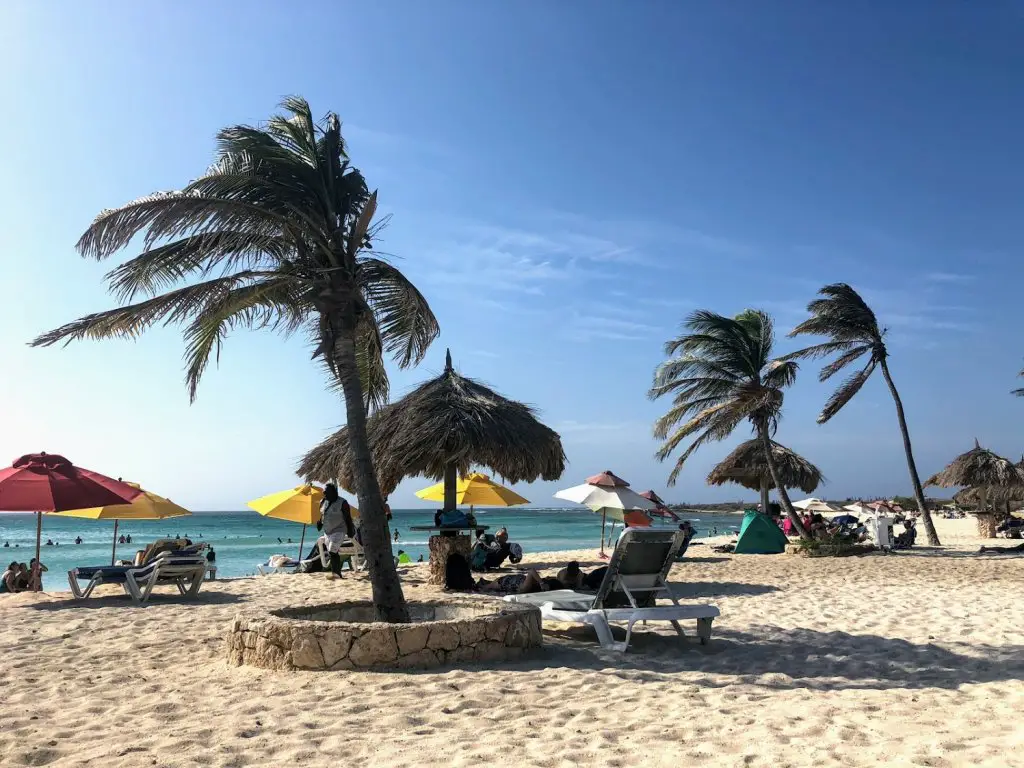
Mangel Halto Beach: Aruba Snorkeling Spot #4
Moving to the southern end of the island, Mangel Halto (The “Spanish Lagoon”) is more of a hidden gem than the rest. The colors are magnificent and the entry spot (pictured below) is out of a dream. You will come across incredible marine life at this snorkel site including moray eels, squid, yellowtail snappers, and plenty of other fish. You will definitely want fins or water shoes here due to its rocky bottom in some areas.
Note: there are stronger currents in this location so be mindful when you are out there. It’s recommended that you are a good swimmer if you choose to snorkel at Mangel Halto.
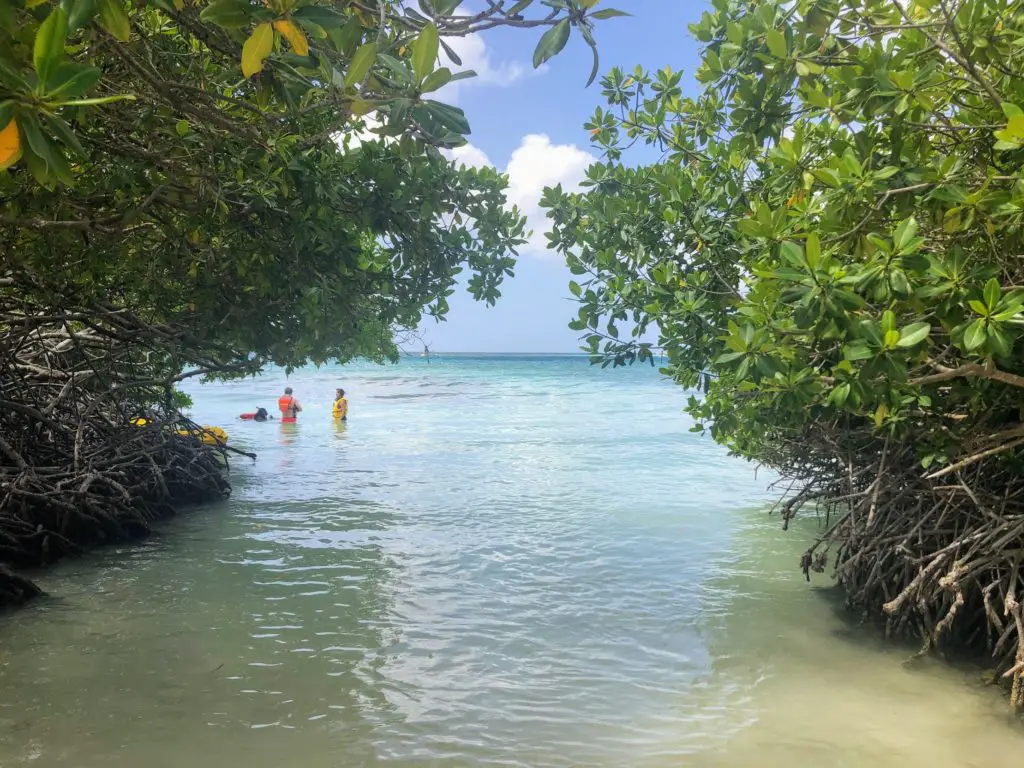
Baby Beach: Aruba Snorkeling Spot #5
Get to Baby Beach early and grab one of the beach huts for a perfect Aruba day! This is a popular spot for both tourists and locals and one of the best places to snorkel. The half-moon-shaped lagoon has shallow waters (this is where the Aruba babies learn to swim!) and a rocky area where the fish flock. Keep your eyes peeled for squid, small octopus, parrotfish, and eels. You can rent equipment right from Baby Beach.
Be very careful when snorkeling at Baby Beach because of the strong currents. While there are calm waters here, they can sneak up on you.
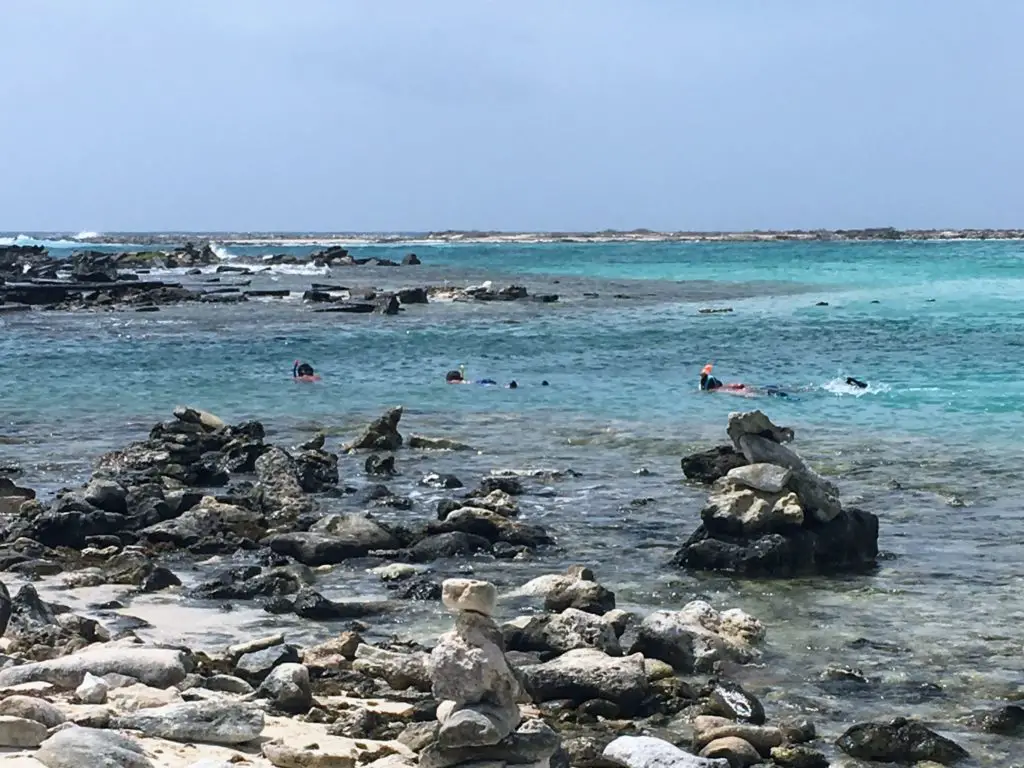
Aruba Snorkeling: What to Bring With You
Make sure you are prepared! Here is what to bring on your snorkeling trip:
Mask, Snorkel, Fins
The best way to go is to bring your own equipment. For packing purposes, we typically have ours in its bag and tied to the front of our backpacks. No flight has mentioned it when boarding or storing it. If you’re looking for a good set, check out this one .
If you need snorkel gear, don’t worry. You have options. One would be to opt for the catamaran cruise where you will not only check out two snorkeling spots but have your gear included as well. Another option is to rent equipment from one of the beach activity huts on Eagle Beach or Palm Beach. Most of these have 24-hour options so you don’t need to worry about picking up and returning on the same day.
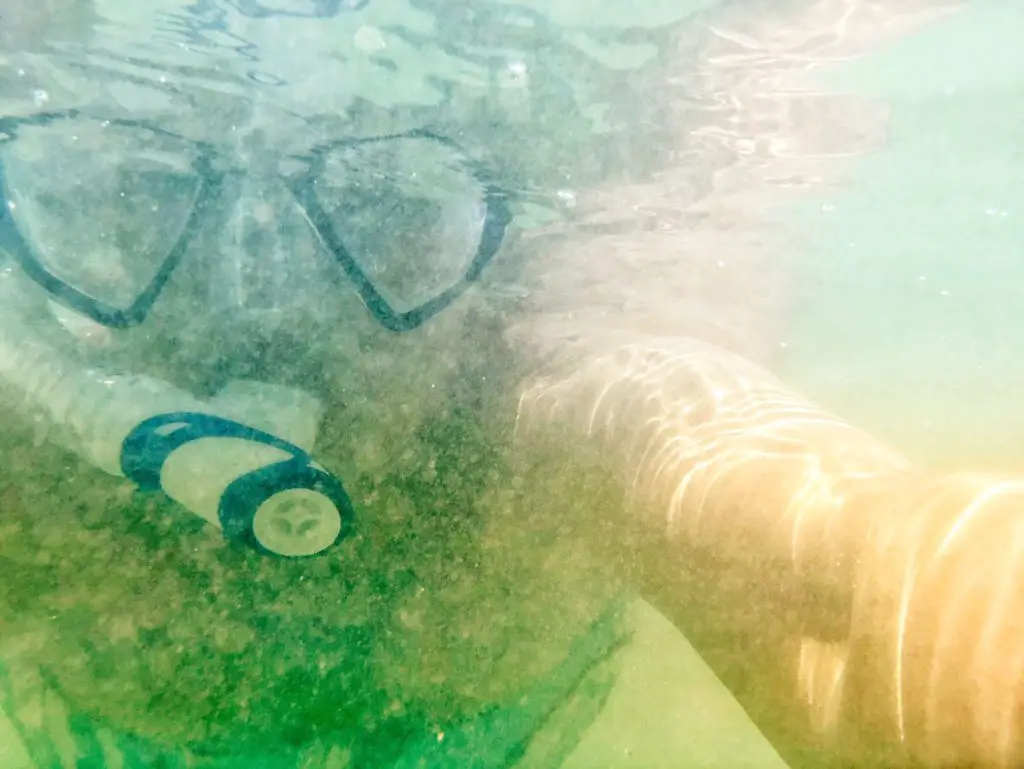
Snorkel Vest or Noodle
The safest way to snorkel in Aruba is to have a floatation device. A snorkel vest is a great option, but something we learned (for much cheaper) is to buy a noodle in Aruba and take it with you. Not only do you feel a bit more secure, but you get less tired and can snorkel for longer!
Underwater Camera or Phone Case
Take some amazing photos—from underwater! I highly recommend purchasing an underwater camera or phone case to take some footage of your experience. This underwater case has been PERFECT for us on numerous trips with zero leaks or issues.
In addition to snorkel equipment, do not forget your sunscreen! The Aruba sun is hot, hot, hot. Apply before and immediately after you snorkel. I love Cocokind which is natural/organic.
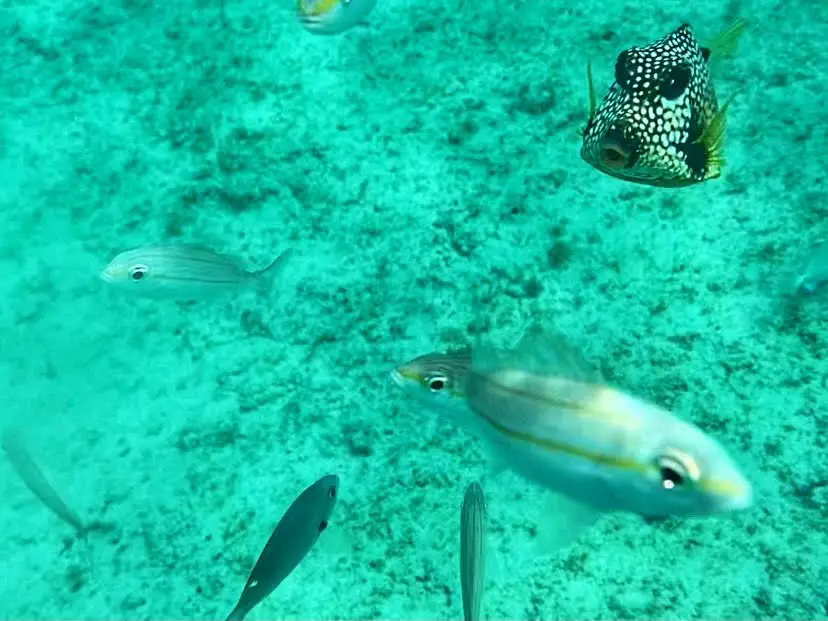
The Best Beaches to Visit for Snorkeling in Aruba
You are sure to find good snorkeling in Aruba with its crystal clear waters and variety of environments for sea life. Use this Aruba Snorkeling Guide and check all of the stops off the list!
More Aruba Vacation Tips:
- 7 Things You Must Do in Aruba
- Your Ultimate Guide for Places to Eat in Aruba
- Where to Party in Aruba
You’ll Also Love
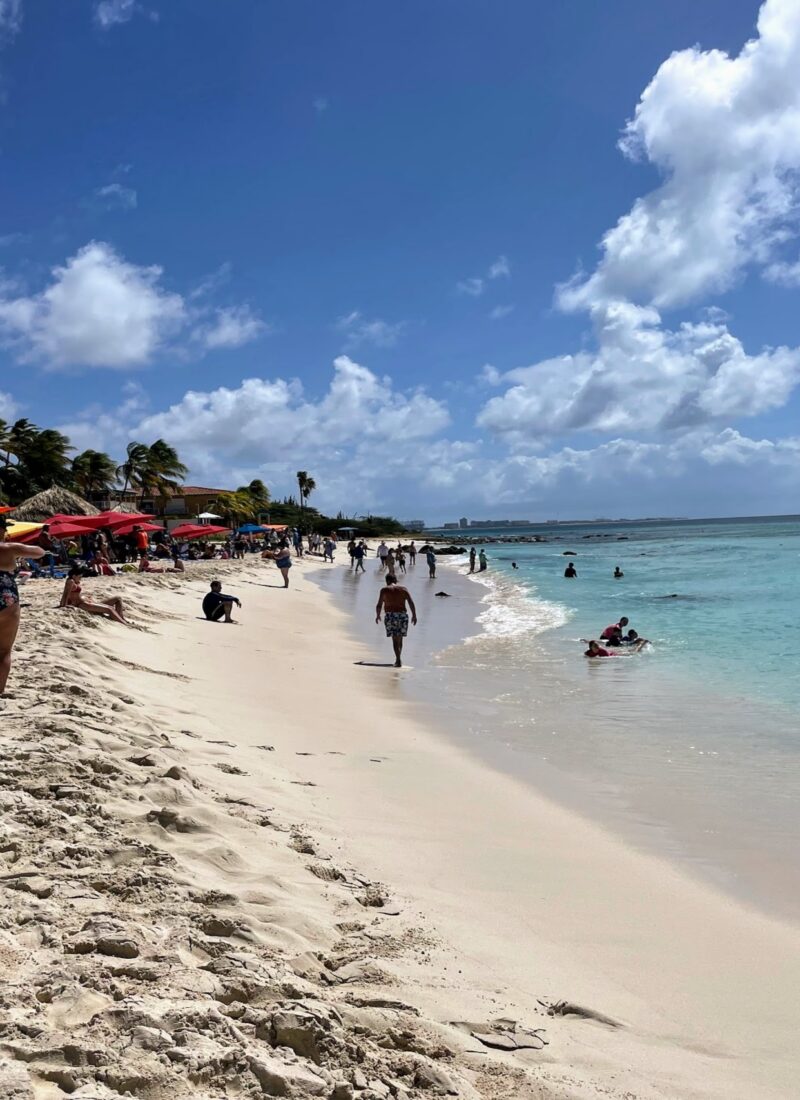
Aruba Travel Tips: 17 Mistakes to Avoid on Your Vacation
What the people love.
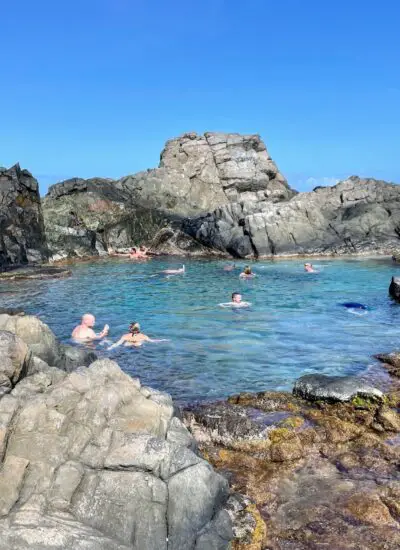
- Destinations
- Save Money to Travel
- Tips & Tricks
- Let’s Connect
Copyright © 2024 Little Blue Backpack · Theme by 17th Avenue

Snorkeling in Aruba
Aruba is a small Dutch Caribbean island located some 30 miles off the coast of Venezuela. Together with Bonaire and Curaçao, it forms a group referred to as the “ABC islands”. Aruba hosts wonderful beaches and a dozen of nice snorkeling spots, especially on its northwestern coast, all of them being accessible freely from the shore. Swimming through translucent seas, snorkelers are treated to a kaleidoscope of coral, colorful fish, sea turtles and colonies of hundreds of bright-red starfish.
The best snorkeling spots in Aruba
The west and east coast of Aruba have radically different sea conditions. The rough eastern coastline is exposed to the trade winds, high waves, and strong currents, making it unsuitable for snorkeling.
On the contrary, the western coastline is protected against the constant eastern trade winds. It offers sheltered beaches, a calm sea, and pristine water. For this reason, all snorkeling spots in Aruba are located on the west side of the island.
Most of Aruba’s snorkeling spots are concentrated on the northern tip of the island, a few kilometers north of the main resort area.
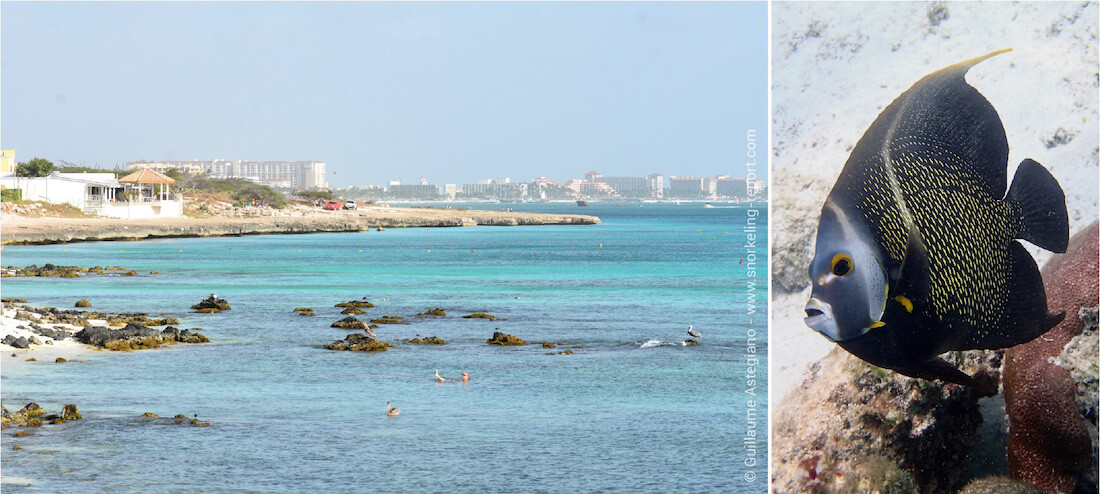
Boca Catalina , with its nice reef areas teeming with colorful fish and a good chance of seeing green sea turtles , is considered as the best one in this section of the coast, but Malmok Beach (a little further south) and Arashi Beach (a bit north) also offers good snorkeling.
In the same area, Tres Trapi , where many cushion starfish lie on the sandy seabed, is a not-to-be-missed spot if you like these fascinating creatures.
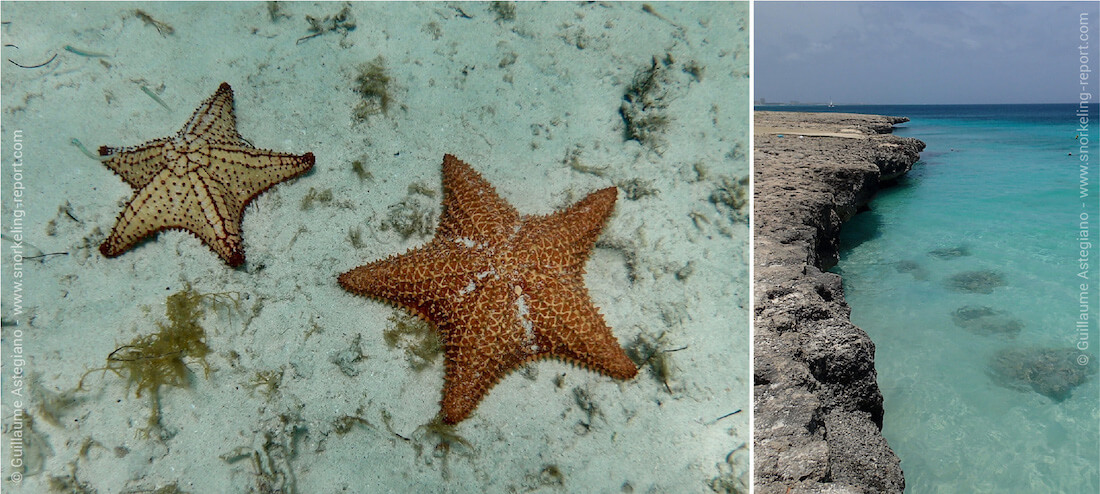
All the above-mentioned spots are exposed to the open ocean and have free shore access, but some of them are also included in sail/snorkeling tours departing daily from Eagle Beach and Palm Beach (3-4h/from $60pp., including drinks and lunch).
These tours are a nice option if you want to enjoy the boat ride, the other activities, and the “all included” formula, but you will have to share the spot with many other visitors.
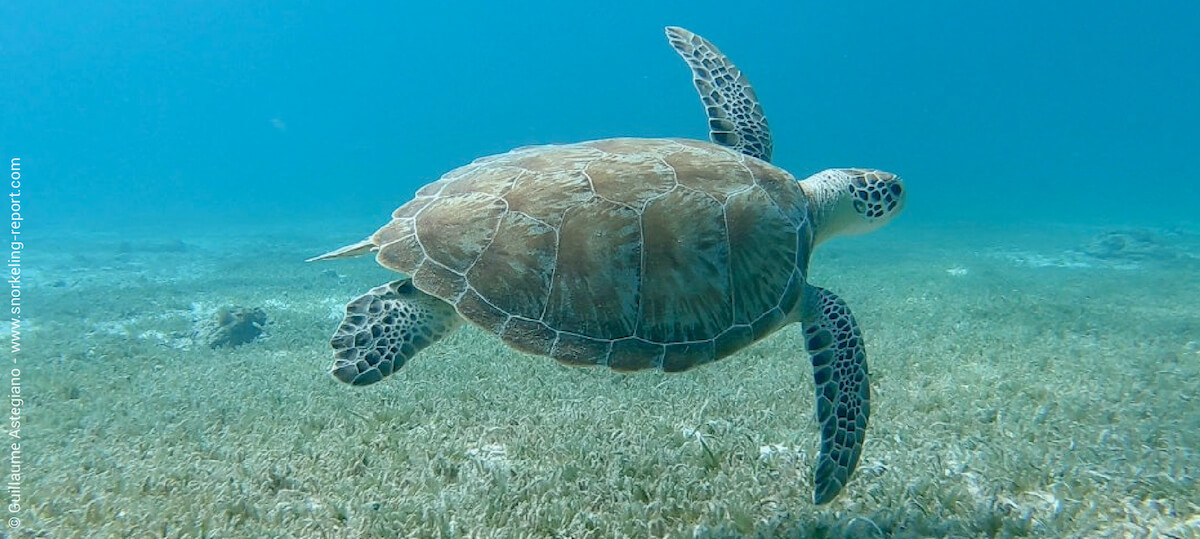
These tours generally include a snorkeling stop at the Antilla Wreck , a 400ft/122m-long shipwreck resting in 60ft/18m of water, but the visibility underwater can vary. This is the easiest and safest way to snorkel the wreck, as is it too far from the shore to be safely reached by swimming.
You must certainly have already seen on Instagram a white sand beach where pink flamingos walk among sunbeds… This is Flamingo Beach , located on a private island managed by the Renaissance Aruba Resort & Casino , Oranjestad’s main resort. If this beach is great for taking pictures, snorkeling is unfortunately pretty poor there, but you can still take your snorkeling gear with you if you spend the day on the island.
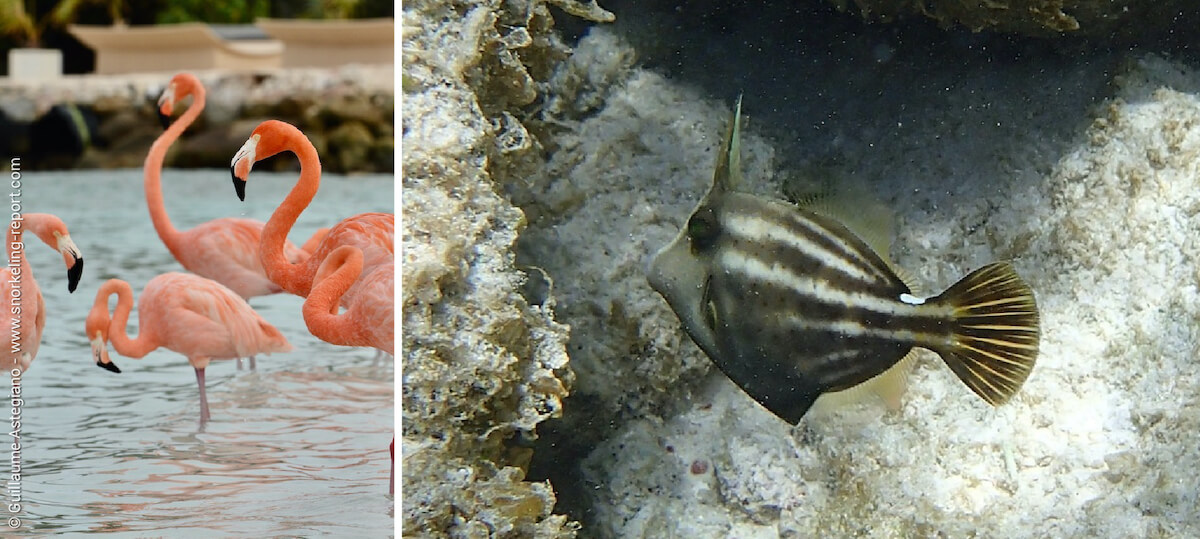
On the south part of the island, Mangel Halto , with its healthy coral, is probably the best snorkeling spot on the island but is not suited for beginners and the sea conditions are sometimes too bad to go.
Baby Beach and Colorado Point are other nice options in the south of Aruba, but you need a very calm sea to explore it safely.
If you are planning to snorkel the ABC Islands, we recommend bringing with you the excellent Reef Fish Identification: Florida Caribbean Bahamas (also available in ebook ), the reference guide to ID the fish you will encounter snorkeling the islands.
The very best 👇👇👇 of our snorkeling time in the ABC Islands. Exploring the islands of Curacao , Bonaire , and Aruba, trying to see as much sea life as we could! These three islands are a coveted playground for snorkelers: calm and warm waters, shallow coral reefs, beautiful shipwrecks, and a myriad of sea life. The name of the snorkeling spot where the images have been shot is mentioned in each sequence.
When to go snorkeling Aruba?
There is no bad time of year to go snorkeling in Aruba: the island enjoys a sunny, dry, and windy climate all year round, with steady sea conditions.
Nevertheless, a (very) dry season, from April to November, can be distinguished from a “rainy” season from December to March, with daily short and light rains. The average water temperature is 79°F/26°C during the rainy season and rises to 85°F/29°C during the dry season.
It is often recommended to snorkel the island during the rainy season, where there are fewer crowds and lower accommodation prices.
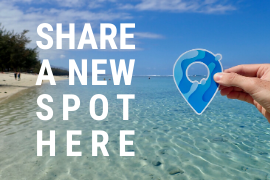
450+ spots have already been featured on Snorkeling Report thanks to people like you. Share your favorite snorkeling spot and help us cover the world map. Your contribution will help the snorkeling community find sites and enjoy the underwater world!
Where to spot them?
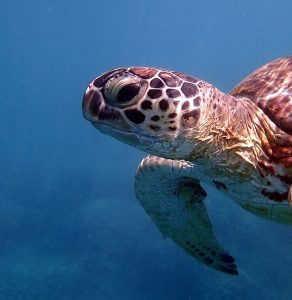
Frequently sighted in the deep seagrass meadows of Boca Catalina ; rarely seen elsewhere on the island
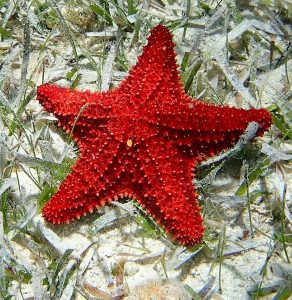
Large colonies on the sandy beds of Tres Trapi
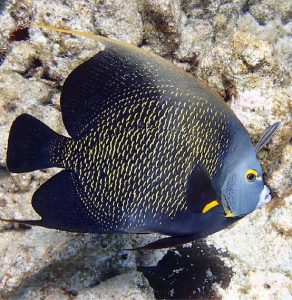
Common in Boca Catalina and Arashi Beach
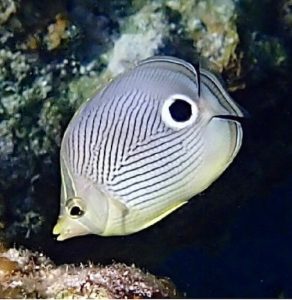
On all reef spots
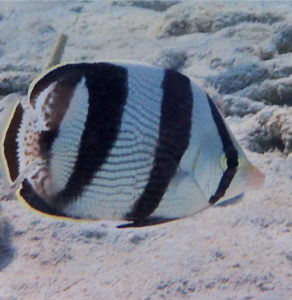
On all reef spots, large schools at Boca Catalina
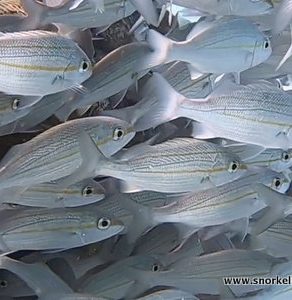
On all spots, but sometimes hard to see, hidden in the sand
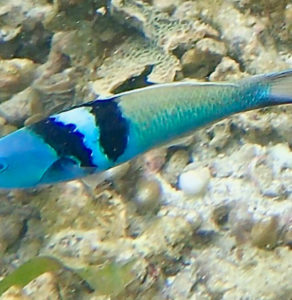
Some healthy colonies at Mangel Halto
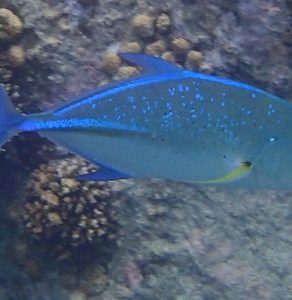
On all spots, especially in deep areas
Best rated spots in Aruba
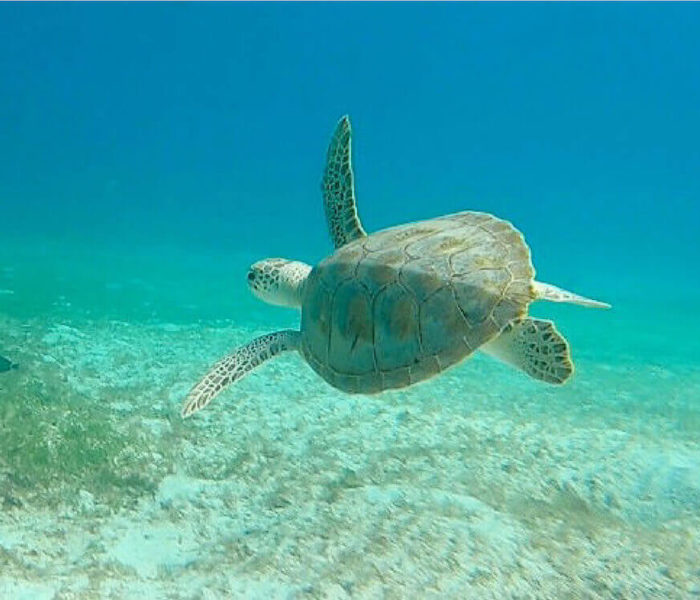
- Boca Catalina
Coral reef and seagrass meadows with turtles and colorful fish
Level: Free shore access
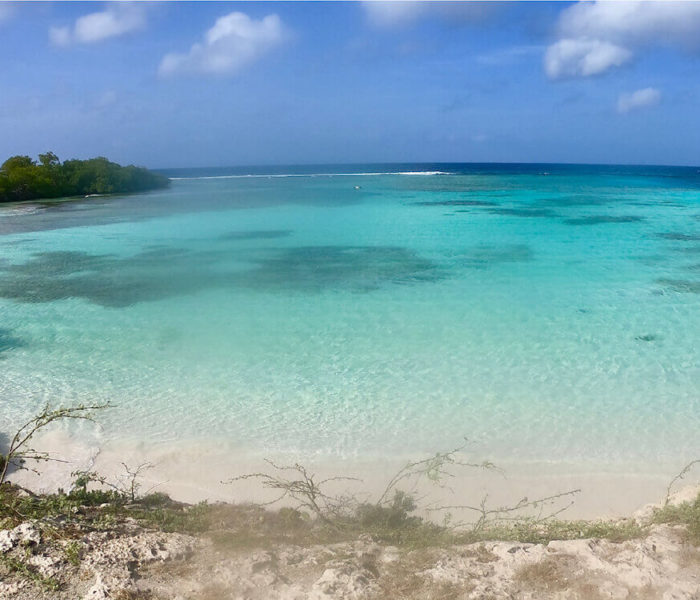
- Mangel Halto
Coral reef with colorful fish
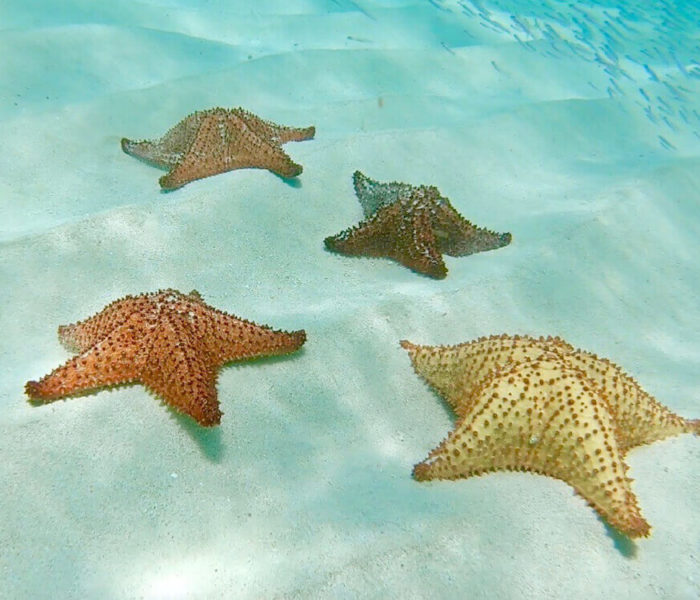
Sandy beds with cushion sea stars
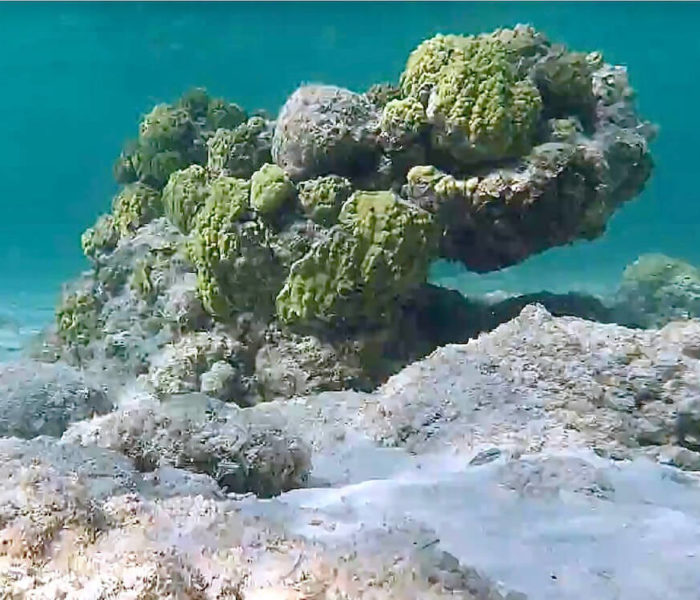
- Colorado Point
Small shallow lagoon with coral and fish
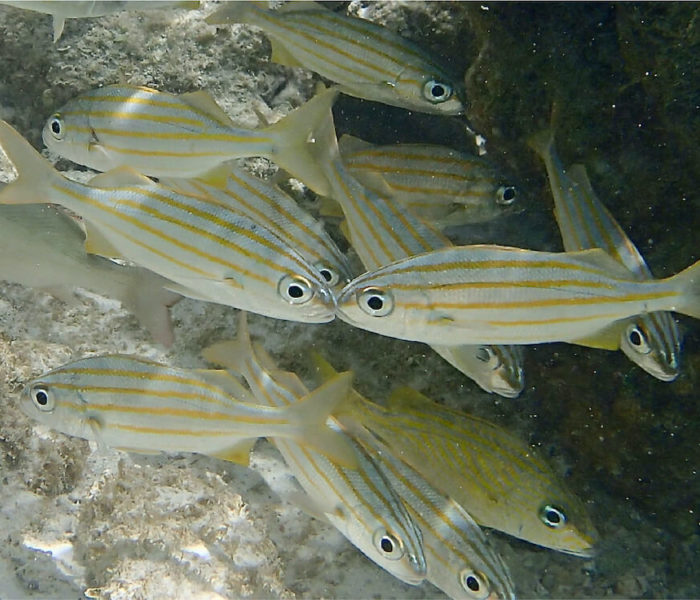
- Flamingo Beach
Shallow artificial lagoon with colorful fish
Level: Resort nearby
Cancel reply
You must be logged in to post a comment.
Destinations NEARBY
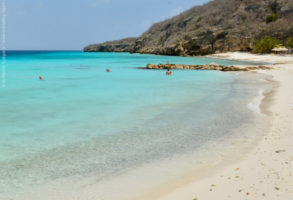
Curacao is a hilly desert island situated in the southwestern arc of the Lesser Antilles, only 37 miles north to South America. If Curacao is more renowned for its clear emerald water and its gorgeous beaches than for its underwater life, it remains a good snorkeling destination. Curacao southwester (...)
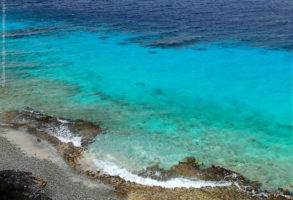
Located East to Aruba and Curacao, Bonaire is the second-largest island in the Dutch Caribbean. While the fringing coral reefs all around Bonaire have suffered in recent decades from storms and bleaching events, Bonaire’s coral reefs remain among the healthiest and the most spectacular in the Caribb (...)
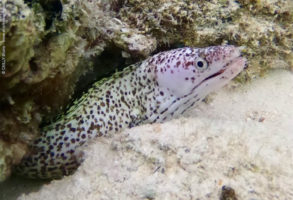
With nearly 3000km of coastline and 72 islands bathed by the Caribbean Sea, Venezuela offers a great diversity of marine environments, still secluded. If there are few sites for snorkeling on the continental coast, the Venezuelan islands are home to coral reefs, seagrass beds and mangroves that prom (...)
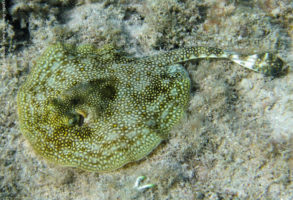
Dominican Republic
For many people, a trip to the Dominican Republic is one thing above all else: a relaxing all-inclusive vacation on a beautiful white-sanded beach. But if you love snorkeling, leave your beach towel for a while and go exploring the island’s underwater world. Even if snorkeling in Dominican Republic (...)
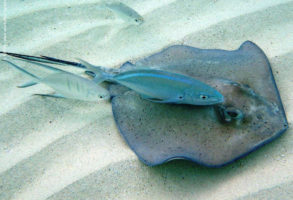
US Virgin Islands
The US Virgin Islands are located in the Leeward Islands of the Caribbean, to the east of Porto Rico. They comprise approximately 50 islands but the three main islands are St. Croix, St. Thomas, and St. John, around which the most accessible snorkeling can be found. In particular, much of the coast (...)
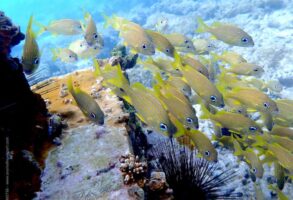
Grenada, also known as the Spice Island, is the southernmost island in the Antilles archipelago. Bordering the eastern Caribbean Sea and the western Atlantic Ocean, it features a diversity of marine environments including coral reefs, seagrass beds and mangroves. On most snorkeling spots, particular (...)
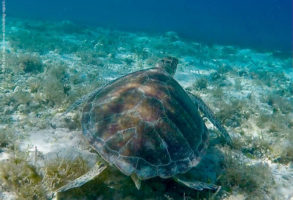
Saint Vincent and the Grenadines
With pristine coral cays, protected bays and shallow reefs, Saint Vincent and the Grenadines is one of the Caribbean’s snorkeling hot spots. The Tobago Cays, a group of 5 small coral islands circled by a horseshoe-shaped coral reef, is by far the best snorkeling spots in the country, but there are d (...)
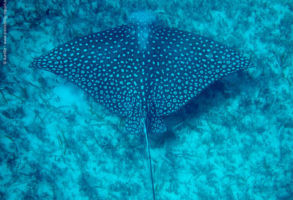
Saint Martin/Sint Maarten
Saint-Martin is a small picturesque island in the north of the Caribbean, divided into a French part in the north and a Dutch part in the south. Its 67km of coastline and 35 beaches make it a popular destination for beach holidays. Saint-Martin offers snorkelers great opportunities to explore the un (...)
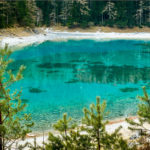
- Cap des Séselets
- Les Pontons Suspendus
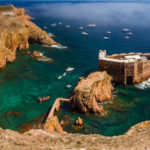
- Crique du Squéouel
- Etocs Archipelago
- Praia do Camilo
- Praia do Quião
- Praia dos Estudantes
- Santo André
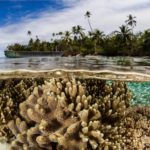
- Nggatirana / Evis Resort
- Blue Lagoon
- Blue Lagoon Beach Resort
- Manta Ray Passage
- Naqalia Lodge
- Octopus Resort
- Baie de Jinek
- Baie des Citrons
- Faille Shark
- Ilot Larégnère
- Jokin Cliffs
- Kanumera Bay
- La Piscine Naturelle
- Plage de Moara
- Tiam Bouene Islet
- Îlot Amédée
- Îlot Canard
- Îlot Leroue
- Îlot Maître
- Îlot Redika
- Îlot Signal
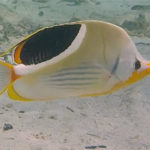
- Aroa Marine Reserve
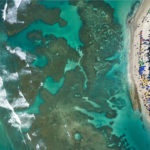
- Bartolome Island
- Concha de Perla
- Gardner Island
- Kicker Rock
- Los Túneles
- Pinzón Island
- Punta Vicente Roca
- Rabida Island
- Cayo de Agua
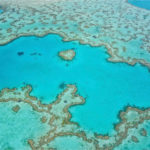
- Turquoise Bay
- Gordons Bay
- Shelly Beach / Cabbage Tree Bay
- Fitzroy Island
- Green Island
- Lady Elliot Island
- Mackeral Bay
- Norman Reef
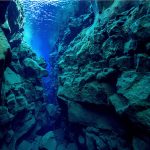
- Bora Bora Aquarium
- Hilton Moorea
- Huahine's Coral Garden
- InterContinental Bora Bora Thalasso Spa
- InterContinental Resort Tahiti
- La Fausse Passe
- Lagoonarium
- Mahana Park
- Matira Beach
- Maupiti's Manta Ray Cleaning Station
- Moorea Sharks Sandbank
- Motu Fareone
- Motu Ofetaro
- Plage Vaiava (PK18)
- Plage de Tiahura
- Pointe Ta'ihi
- Sofitel Moorea
- Tahaa's Coral Garden
- Tahiti Ia Ora Beach Resort
- Temae Beach
- Apataki Carenage
- Avatoru Pass
- Bird Island
- Fakarava Blue Lagoon
- Rangiroa Aquarium
- Rangiroa Blue Lagoon
- Tetamanu/Fakarava South Pass
- The Pearl Farm
- Tiputa Pass
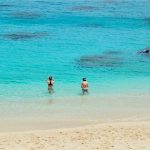
- Zhongao Beach
- Aharen Beach
- Furuzamami Beach
- Toguchi Beach
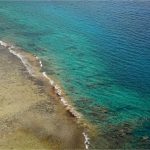
- Faifai Beach
- Jellyfish Lake
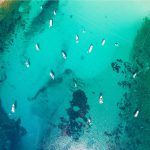
- Iberostar Averroes
- Seabel Rym Beach
- Konnos Beach
- Edon-Bina Beach
- Lambjano Bay
- Porto Palermo
- Cala Codolar
- Cala Figuera
- Cala Fornells
- Cala Macarelleta
- Cala Sant Vicenç
- Punta Galera
- Capo Coda Cavallo
- Madonna del Naufrago
- Passo Cecca di Morto
- Punta Molentis
- Spiaggia di Simius
- Spiaggia di Tuerredda
- Cala Berretta
- Isola Bella
- Isola dei Conigli
- Agia Anna Beach
- Agios Nikolaos Beach
- Alyko Beach
- Cameo Island
- Delfini Beach
- Gialos Beach
- Karavostasi Beach
- Mikri Vigla
- Molos Beach
- Paralia Kipri
- Paralia Parikia
- Porto Limnionas
- Cala Achiarina
- Cala d'Orzu
- Cala della Chiesa
- Cala di Reta
- Cala di u Grecu
- Marine d'Albo
- Marine de Ficaghjola
- Marine de Negru
- Mario Wreck
- Palombaggia
- Plage Moorea
- Plage de l'Alga
- Plage de l'Oscelluccia
- Plage de la Folaca
- Plage de la Roya
- Plage du Lotu
- Santa Giulia
- Île de la Pietra
- Anse Magaud
- Anse de la Fausse Monnaie
- Anse du Petit Mugel
- Archaeological site of Olbia
- Calanque d'En Vau
- Calanque de Port Pin
- Calanque de Port d'Alon
- Calanque de Saména
- Calanque de Sormiou
- Calanque de Sugiton
- Calanque des Anthénors
- Calanque du Brégançonnet
- Calanque du Four à Chaux
- Cannes Underwater Museum
- Cap des Mèdes
- La Plagette
- Le Petit Mornas
- Paloma Beach
- Plage de Brégançon
- Plage de Jovat
- Plage de Peyrefite
- Plage de la Palud
- Plage du Cap Rousset
- Plage du Lazaret
- Plage du Sud
- Pointe de l'Aiguille
- Ponton de la Bordelaise
- Cala Almadabra
- Cala Calella
- Cala Canadell
- Cala Jugadora
- Cala Mal Pas
- Cala Montjoi
- Cala Tí Ximo
- Cala del Bolete Grande
- Isla de San Nicolás
- Islotes del Descargador
- Masía Blanca Marine Reserve
- Medes Islands
- Platja Aiguablava
- Platja Mar Menuda
- Playa El Portús
- Playa de Levante
- Playa de Maro
- Blue Hole Gozo
- Hondoq ir-Rummien
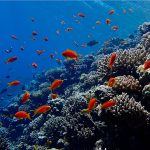
- Coral Beach
- Dekel Beach
- Migdalor Beach
- New Open Beach
- North Beach / Sun Boat Wreck
- Princess Beach
- The Underwater Restaurant
- Daymaniyat Islands
- Japanese Garden
- Seven Sisters & The Tank
- South Beach
- Barcelo Tiran Sharm
- Blue Hole Dahab
- Faraana Reef
- Fayrouz Reef
- Gordon Reef
- Gorgonia Beach
- Makadi Bay North
- Makadi Bay South
- Makadi Bay West
- Marsa El Nabaa
- Marsa Goslani
- Marsa Mubarak
- Napoleon Reef
- Ras Um Sid / El Fanar Beach
- Sataya Reef
- Seven Pools
- Shaab Marsa Alam
- Shaab Samadai
- Shams Alam Beach Resort
- Suyul Island
- Temple Reef
- The Islands Dahab
- Tulip Resorts
- Utopia Beach Club
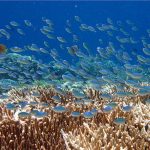
- Gam Ghi Island
- Turtle Island
- Bangcogon Beach
- Cabilao Bamboo Reef
- Cabilao Lighthouse
- Cebu Seaview Dive Resort
- Cliff Dive / Napaling Point
- El Nido - Tour A
- El Nido - Tour C
- El Nido - Tour D
- Flower Island
- Lusong Coral Garden
- Moalboal / Panagsama Beach
- Pandan Island
- Sangat Island
- Siete Pecados
- Tubod Marine Sanctuary
- Tulapos Marine Sanctuary
- White Beach Moalboal
- Bamboo Island
- Koh Nang Yuan
- Lighthouse Reef
- Monkey Beach
- Mosquito Island
- Sai Daeng Beach
- Sai Nuan Beach
- Amed Pyramids
- Arborek Jetty
- Bunaken Timur
- Crystal Bay
- Gili Trawangan
- Hatta Island
- Japanese Wreck
- Jemeluk Beach
- Komodo Resort
- Liang Beach
- Lipah Beach
- Lumbalumba Resort
- Menjangan Island
- Raja Ampat Biodiversity Resort
- Sombano Lake
- USS Liberty Wreck
- Wakatobi Resort
- Barracuda Point
- Bunot Beach
- Coral Gardens
- Emerald Cove/Pangkor Laut
- Hanging Gardens
- Kapalai Island
- Kapas Turtle Valley
- Malang Rock
- Mataking Reef Resort
- Melina Beach
- Pasir Panjang
- Petani Beach
- Pulau Mataking Kecil
- Pulau Pandanan
- Pulau Soyak
- Rawa Island
- Selingan Island
- Shark Point
- Tekek South Bay
- Timba Timba Island

- Ile de Gorée
- Kisite Marine Park
- Nomad Beach
- Pinewood Beach
- Nanatha Bay
- Dolphin Coast Tidal Pools
- Kosi Bay Mouth Aquarium Reef
- Sodwana Bay
- Chumbe Island Coral Park
- Mnemba Island
- Nungwi Beach
- Pingwe Beach
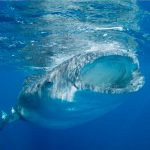
- Forillon National Park
- Alexander Springs
- Blue Heron Bridge - Phil Foster Park
- Calusa Beach (Bahia Honda State Park)
- Crystal River
- Dry Rocks & Christ of the Deep
- Grecian Rocks
- Northern Erojacks
- Salt Springs
- Silver Glen Springs
- Twin Ledges
- Bahia Principe
- Casa Cenote
- Cenote Dos Ojos
- Cenote Jardín del Edén
- Cenote Pet Cemetery
- Chileno Bay
- Gran Cenote
- MUSA & Manchones Reef
- Playa Xahuayxol
- Playa del Carmen
- Puerto Morelos
- Snorkeling with Whale Sharks
- Yal Ku Lagoon
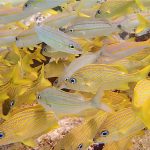
- Shoal Bay Beach
- Aquarium Beach
- Grand Anse Artificial Reef
- L'Anse Aux Epines
- Fowl Cay Restoration Reef
- Judy's Reef
- Not The Grotto
- Turbine Island
- Wreck of the Sapona
- Simpson Bay's Wreck
- Smith’s Reef
- Hawksnest Beach
- Cayo Levantado
- Playa Magallanes
- Anse du Grand Cul-de-Sac
- Colombier Beach
- Anse Chastanet
- Sugar Beach
- Chatham Bay
- Palm Island
- Tobago Cays
- Wallilabou Bay
- Amelie Wreck
- Anse Couleuvre
- Anse Dufour
- Anse Figuier
- Anses d'Arlet
- Ilet Thiery
- Ilet à Ramiers
- Pointe Borgnèse
- Anse Crawen
- Anse Feuillard
- Anse des Salines
- Anse à la Barque
- Grande Baie
- Petite Anse
- Petite Terre
- Pigeon Islands
- Plage de Petit-Havre
- Plage de Sainte-Anne
- Plage du Pain de Sucre
- Plage du Souffleur
- Vieux-Fort Lighthouse
- Stingray City
- Caleta Buena
- Cayo Alcatracito
- Guardalavaca
- Playa Caribe
- Playa Rancho Luna
- Playa Santa Lucia
- Punta Perdiz
- Coral Garden
- Point of Sand
- Preston Bay
- Southern Cross Club & Owen Island
- No Name Beach
- Te Amo Beach
- Klein Curacao
- Playa Lagun
- Playa Porto Mari
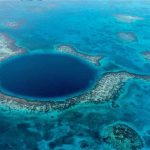
- Cayo Zapatilla North
- Cayo Zapatilla South
- Granito de Oro
- Hospital Point
- Isla Bolaños
- Isla Diablo
- Isla Perro Chico
- Playa Estrella
- Restaurante Alfonso
- Caye Caulker Shark Ray Alley
- Hol Chan Cut
- Mexico Rocks
- Shark Ray Alley
- Calzon de Pobre
- Isla del Caño
- Islas Pelonas
- Playa Bassey
- Playa Buena
- Playa Conchal
- Playa Danta
- Playa Hermosa
- Playa Manuel Antonio
- Playa Ocotal
- Playa Penca
- Playas del Coco
- Starfish Alley
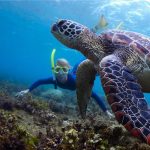
- Ahihi Kinau
- Kapalua Bay
- Molokini Crater
- Turtle Town
- Electric Beach
- Hanauma Bay
- Oahu North Shore Sharks
- Sharks Cove
- Turtle Bay / Kuilima Cove
- Captain Cook Monument
- Kahalu'u Bay
- Keauhou Bay
- Richardson Beach Park
- Waialea (69) Beach
- Poipu Beach
- Tunnels Beach

- Anse Boudin
- Anse Caiman
- Anse La Blague
- Anse La Farine
- Anse Patate
- Anse Petite Cour
- Anse Soleil
- Anse Source d'Argent
- Anse Sévère
- Anse Volbert
- Assumption Island
- Baie Lazare
- Club Med Seychelles
- Coco Island
- Denis Island
- Fairyland Beach / Anse Royale
- Félicité Island
- Grande Soeur
- Passe Dubois
- Port Launay
- St Anne Marine Park
- St Pierre Island
- Hanifaru Bay
- Maabadhi Finolhu
- Vilamendhoo
- Whale Shark Point
- Anemone Garden
- Belle Mare Beach
- Cap Malheureux
- Coin de Mire
- Flat Island & Gabriel Island
- Flic en Flac
- Ile aux Bénitiers
- La Prairie Beach
- Palmar Beach
- Récif Attitude
- Trou d'Eau Douce
- Trou-aux-Biches
- Ilot de Sable Blanc du Nord
- Ilot de Sable Blanc du Sud
- Ilots Choizil
- Plage Gouéla
- Tahiti Plage
- Boucan Canot
- Cap Lahoussaye
- Grande Anse Rocky Pool
- Lagon de Saint-Leu
- Lagon de Saint-Pierre
- Lagon de Trou d'Eau
- Lagon de l'Hermitage
- Lagon de la Saline
- Manapany Rocky Pool
- Plage des Roches Noires
- Nosy Tanikely
- Tsarabanjina
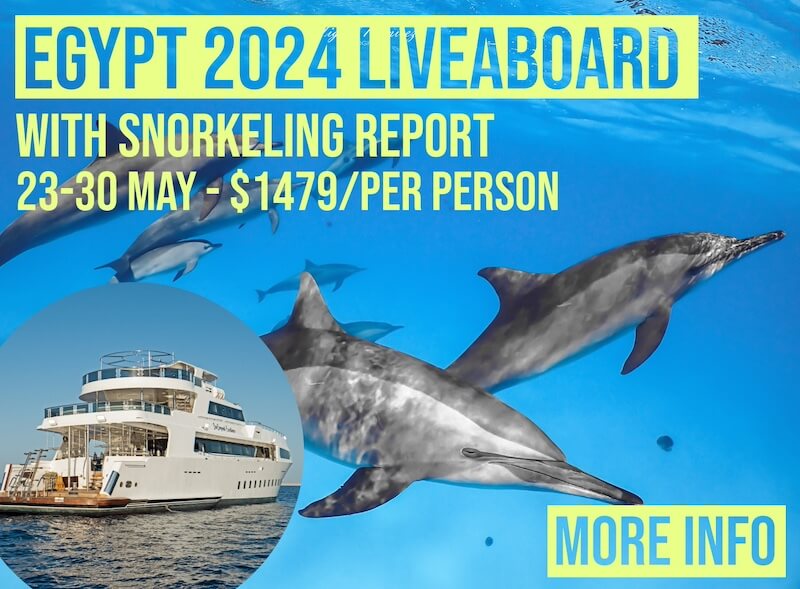
LAST SPACES AVAILABLE
GALAPAGOS 2024 SNORKELING LIVEABOARD
Things to Do in Oranjestad
Guide to Arikok National Park
Adventurous Things to Do
Annual Events
Food to Try
Best Restaurants
Nightlife Guide
Best Time to Visit
Weather & Climate
Queen Beatrix International Airport Guide
Places to Visit
Driving Tips
Safety in Aruba
Best Beaches
Where to Go Snorkeling
The 10 Best Places to Go Snorkeling in Aruba
Located just north of South America, Aruba ’s fairly remote and idyllic location—mixed with its vibrant blend of Dutch and West Indies culture—is reason enough to pay a visit to the tropical island. But its not just its hurricane-free beaches and pastel-colored architecture that make this Caribbean island a popular vacation destination: The snorkeling (and diving) off the coast is among the best in the world. To that end, we’ve compiled the 10 best places to go snorkeling in Aruba.
Arashi Beach
Augustavop / Getty
Located on the northern coast of the island, Arashi Beach boasts crystal-clear waters and a sandy ocean floor, making it the perfect spot for snorkeling. Beginners and consummate snorkelers alike will appreciate the colorful schools of fish that populate the waters as well as the palometa that patrol the shoreline. It can get quite busy here, so be sure to arrive first thing in the morning to claim a beachside hut. Note that rental equipment is not available, as the beach is entirely devoid of vendors.
Natural Pool
TripSavvy / Taylor McIntyre
Also known as "Conchi" (bowl) and "Cura di Tortuga" (turtles cove), the Natural Pool is a stunning rock formation created by volcanic stone circles and frequently visited by—as the nickname suggests—turtles. Due to the Pool’s remote location, and the wildly rugged surrounding terrain, visitors can only access the area either on foot, horseback, or via four-wheel-drive. We recommend signing up for a day tour: Trust us, you don’t want to end up ruining your rental car by attempting the journey on your own. To maximize your day of adventure, go for a horseback ride or hike.
Malmok Beach
jimmyvillalta/ Getty
Featuring natural pools and underwater caves, Malmok Beach promises some of the best snorkeling on the entire island. While you're here, you can expect to observe an array of tropical fish, including the Banded Butterfly Fish, French Angelfish, and Trunkfish. Just be careful on your way in, as there are sharp rocks near the shoreline.
Boca Catalina
Jan Otto / Getty
Not far from Malmok Beach is Boca Catalina, a pristine white-sand beach overlooking a secluded bay. But just because the sandy shores are relatively undisturbed by humans, don’t expect the waters off the coast to be similarly uninhabited. With sergeant majors and trunkfish swimming close to the coastline, you can walk right into the water and enjoy a world-class snorkeling experience. Boat tours and cruises aren't necessary, though both have a definite appeal. Another seamless element of the Boca Catalina experience? The readily available parking located just along the main road.
Catalina Cove
Marc Guitard / Getty
While snorkeling in Boca Catalina, you might as well swim further north to explore Catalina Cove. A haven for bar jacks and blue tangs who hide near the rocks, this destination is also one of the best spots on the island for scuba diving. As you swim, be on the lookout for turtles, who are often spotted in the shallow waters. Boat tours also offer excursions to Catalina Cove for those who would prefer to examine the caves from above the water.
John Hancock Photography / Getty
Otherwise known as “3 Steps,” Tres Tapi is so named in homage to the staircase of three rocks that visitors use to descend into the water. Thanks to the abundance of sea stars in the clear blue water, this is one of the more distinct snorkeling spots in all of Aruba. Afterwards, head to the nearby Ritz Carlton Hotel for an après-snorkeling cocktail.
Flamingo Beach
Jane Sweeney / Getty
Sure, you can swim with pigs in the Bahamas , but in Aruba, you can sunbathe with flamingos on Renaissance Aruba Resort's private island. But before you sun yourself alongside these vibrantly colorful creatures, be sure to indulge in some world-class snorkeling. Between the crystal-clear water, exotic fish, and ornamental birds, we’d argue this sandy locale is one of the best in the tropics.
Located on the southern end of the island, the lagoon at Baby Beach was created by and for members of the Lago colony for their families to enjoy. A concrete barrier separates the lagoon from the rest of the ocean, creating exceptionally peaceful waters for novice snorkelers of all ages. A coral reef within the enclosure provides easy access for snorkelers to witness marine life.
Ascent / PKS Media / Getty
Why not enjoy the island's tropical beauty in blissful solitude? The capital of Aruba until 1797, Savaneta is a historical region with an uninhabited stretch of coastline. The snorkeling excursion alone is worth a day trip to Savaneta, promising the perfect off-the-beaten path experience for avid snorkelers.
Mangel Halto
Orietta Gaspari / Getty
Also known as "Spanish Lagoon," this underrated (and, as of now, mostly undiscovered) section of the island is not far from Savenata. Overlooking calm, shallow waters, Mangel Halto boasts a crystal-blue sea lined with mangroves and a powdery white sand beach. You can head right into the water, though do be mindful of the sharp rocks, which can make entry a bit difficult. It is worth it, however, to discover the magnificent array of tropical wildlife just off the coast. From squid to blue tangs, sponges to stingrays, the snorkeling at Mangel Halto is among the very best on the island—and the entire Caribbean at large.
Where to Go Snorkeling in Maui
Snorkeling in Buck Island, St. Croix
Top 20 Beaches in the Caribbean
Biscayne National Park: The Complete Guide
The 12 Best Beaches in the U.S. Virgin Islands
Islas Marietas National Park: The Complete Guide
18 Most Beautiful Islands in the World
The Top 12 Things to Do in the U.S. Virgin Islands
12 of Africa's Best Beach Destinations
The 12 Best Beaches in Maui
The 10 Best Beaches on Hawaii Island
The Beaches of Cancun and the Mayan Riviera
17 of the Most Beautiful Places in Hawaii
The 19 Best Beaches in Costa Rica
Your Trip to Turks and Caicos: The Complete Guide
The 9 Most Popular Places for Destination Weddings
- Caribbean and Bahamas
A Beginner's Guide To Snorkeling In Aruba
Not as popular for underwater fun as the other abc islands, it’s time that this caribbean destination gets some respect..
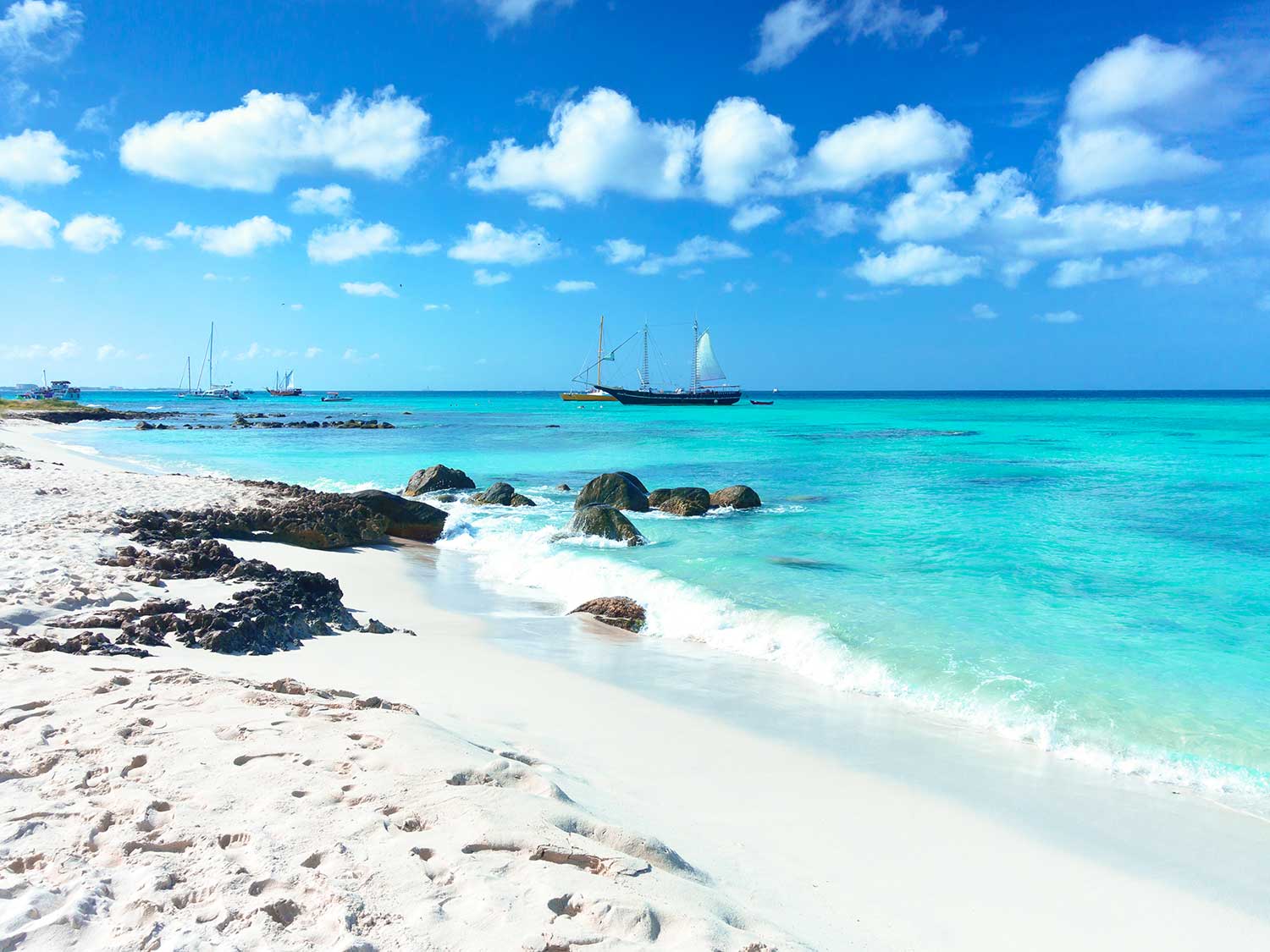
Although this "one happy island" is certainly popular for its pure white beaches, lively tourist scene and abundance of land and sea activities, the "A" of the ABC Islands doesn't always get the same top marks bestowed on its sister isles when it comes to great snorkeling and diving.
We've learned it's all in where you go. Here are a few of our favorite sites that rival the reefs in the rest of the region.
Arashi/Catalina Cove
A favorite with locals, Arashi Beach boasts gentle currents and abundant underwater life, making it a perfect spot for snorkeling in the Caribbean. Arashi Beach is a white sand beach north of Malmok Beach, just off the road to the California Lighthouse, offering beach huts, a fun bar and large parking area.
Advanced snorkelers can find a nice chunk of healthy coral reef all the way to the right end of the beach. Look for a small white buoy but be sure to enter in the sand before the water gets dark and wade out as the water around the reef is very shallow—one to five feet in some spots. Star and pillar coral offer habitat to a wide variety of small reef fish like fairy basslet, honeycomb cowfish, blue tang, grunt and goatfish.
Those less experienced, or when visiting on windier sea days when surge is strong, can opt to head left. (The area in the center is mostly seagrass and sand.) The left edge of Arashi juts out onto a rocky point that also comprises the right edge of Catalina Cove. Snorkelers with footwear to brave Catalina's rocky entry can actually do a drift tour around the point and exit at Arashi, but a comfortable sand entry on the left end of Arashi beach offers access to the same site. Orange and white spotted filefish, rainbow parrotfish, Spanish hogfish, French angels and chubs can all be spotted among the colorful finger, file and brain corals.
S.S. Antilla
The largest shipwreck dive in the Caribbean, snorkelers will not be disappointed dropping in for a perusal over this impressive former freighter. (If the sight of other tour boats concerns you, know that at 400-ft. long, there is plenty of room to share the experience.) The German ship happened to be in Dutch waters just offshore when war broke out, making the two countries instant enemies. The Dutch military made moves to take the ship, but rather than allow the vessel to be used against their countrymen the captain opened valves to the sea and set a fire, scuttling the ship as its crew pushed away in lifeboats.
Divers are able to take in the historical ship in the spot where it sank, now covered with tube sponges, coral formations, tropical fish, shrimp, lobsters, and orange anemones. Thanks to Aruba's exceptional visibility, snorkelers can enjoy many of the same creatures, as well as schools of yellow tail and surgeon fish that congregate above.
Decent swimmers can make their way to the ship from shore, though numerous operators combining this site with a turtle-rich second snorkel makes for a great tour. (For those struggling with jealousy over the divers' close encounters, snorkeling with SeaBob Aruba scooters combines the best of both worlds.)
Mangel Halto
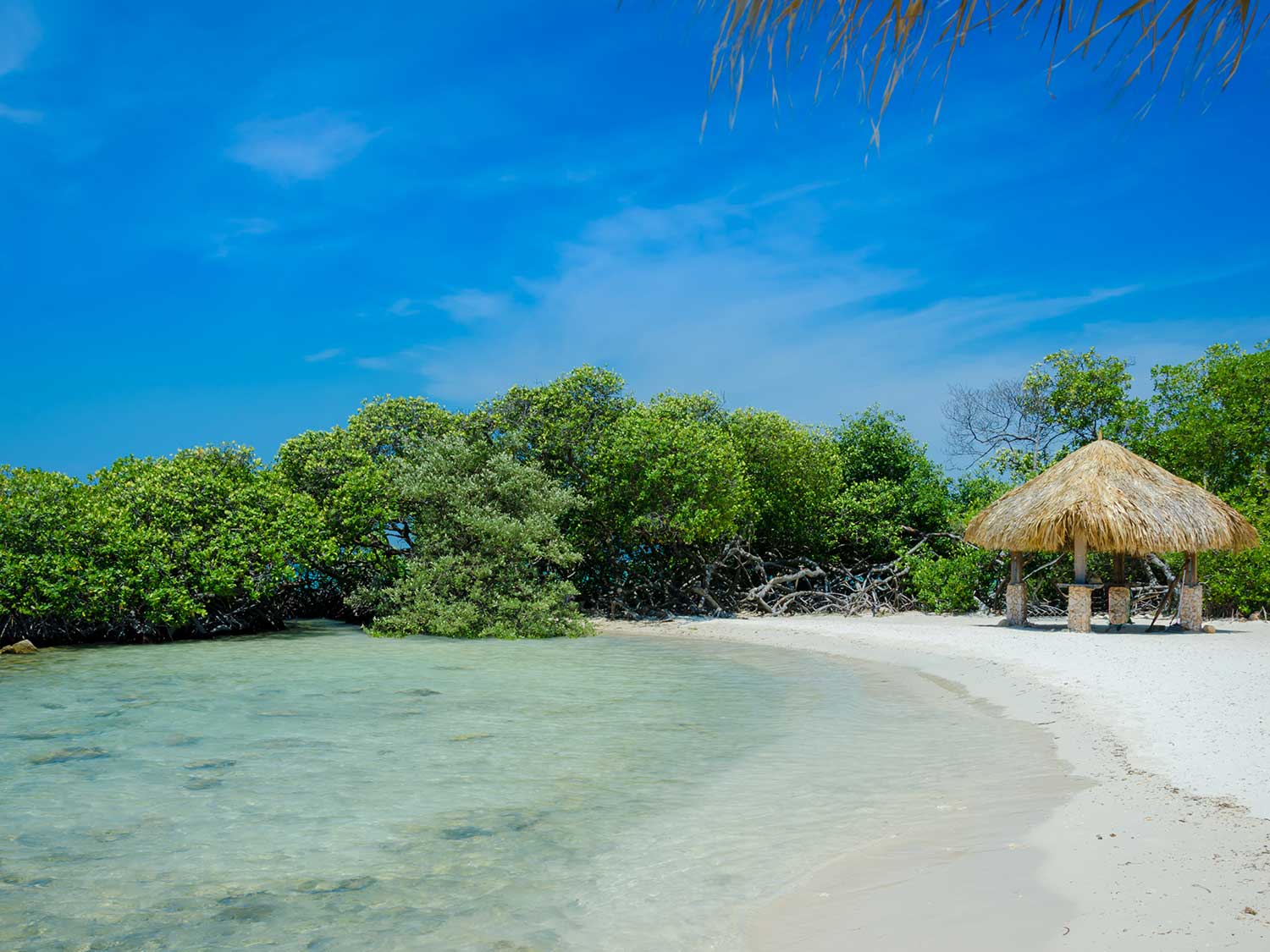
This secluded beach is a perfect sunning and snorkeling spot in Aruba with calm, shallow waters rich in sea life and supported by an intriguing network of mangroves. Popular with SUP boarders for the easy sand entry, it also serves as an excellent shore diving and snorkel site.
This is an ideal spot for families or those new to snorkeling, as it is possible to practice skills safely and walk out to the edge of the reef to observe parrot fish, yellowtail snapper, sergeant majors, blue tangs and the occasional barracuda. Clear waters boasting impressive viz also make deep water gorgonians, sponges and anemones spottable as the reef drops to 110-ft. where octopi, morays and passing rays entertain divers.
Conchi, Natural Pool
Admittedly, Aruba's Natural Pool aka "Conchi" (bowl) or "Cura di Tortuga" (Turtles Cove), isn't the height of snorkeling when it comes to sea life and corals. But in terms of an unforgettable, otherworldly spot on earth, this tranquil pool surrounded by volcanic stone circles deep in desert-like Arikok National Park is a must-see. And, for those intent on getting an underwater perspective, a snorkel mask allows for spotting brave fish and jumpers as they leap from the rocky ledges.
The remote pool is surrounded by some of Aruba's most rugged terrain, with a dramatic waterspout shooting sea foam over the craggy walls. One can reach the Natural Pool by either foot, horseback or 4x4 vehicle (ABC Tour offers a solid Jeep option) and climb down the stairs that lead to the shallow waters.
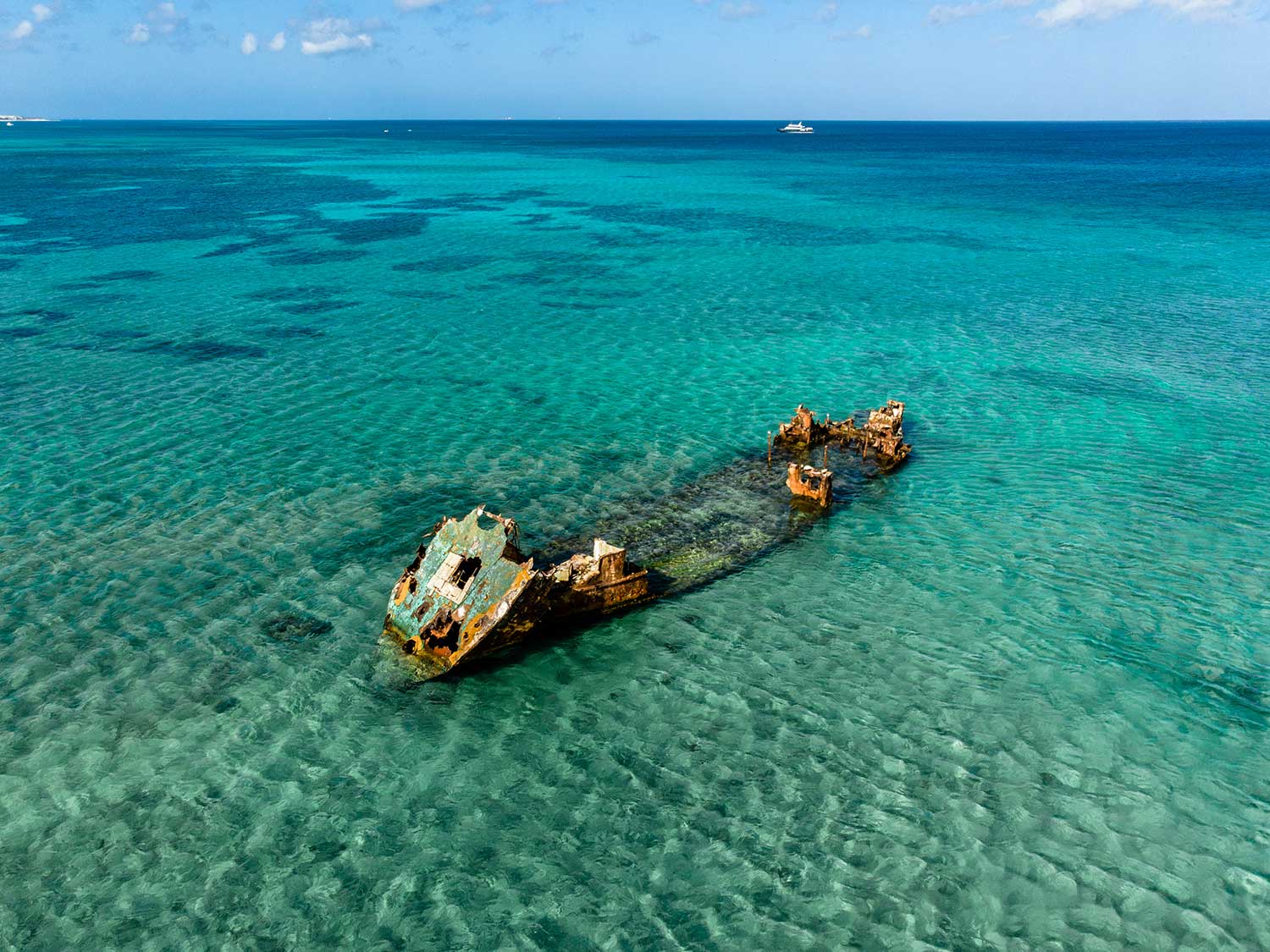
Known as one of the island's hottest spots for snorkeling, Malmok Beach in Aruba is a narrow sandy stretch that interrupts the limestone and rocky terrace along Malmok's coast. Its shallow, clear Caribbean waters are the reason for its popularity, and catamarans and sailboats stop for a daytime snorkeling stop just off the shoreline.
Reefs and sunken wrecks nearby afford excellent diving in Aruba, and the calm and crystal-clear waters (truly some of the best on the island) are perfect for a relaxing swim in the ocean.
Advertiser Disclosure
Many of the credit card offers that appear on this site are from credit card companies from which we receive financial compensation. This compensation may impact how and where products appear on this site (including, for example, the order in which they appear). However, the credit card information that we publish has been written and evaluated by experts who know these products inside out. We only recommend products we either use ourselves or endorse. This site does not include all credit card companies or all available credit card offers that are on the market. See our advertising policy here where we list advertisers that we work with, and how we make money. You can also review our credit card rating methodology .
The Best Times To Visit Aruba [By Seasons and Interests]
Katie Seemann
Senior Content Contributor and News Editor
340 Published Articles 44 Edited Articles
Countries Visited: 28 U.S. States Visited: 29
Editor & Content Contributor
146 Published Articles 727 Edited Articles
Countries Visited: 35 U.S. States Visited: 25
Keri Stooksbury
Editor-in-Chief
29 Published Articles 3074 Edited Articles
Countries Visited: 45 U.S. States Visited: 28
![best time to visit aruba for snorkeling The Best Times To Visit Aruba [By Seasons and Interests]](https://upgradedpoints.com/wp-content/uploads/2022/09/Aruba-Flamingo-Beach.jpeg?auto=webp&disable=upscale&width=1200)
Aruba: At a Glance
Aruba in january, aruba in february, aruba in march, aruba in april, aruba in may, aruba in june, aruba in july, aruba in august, aruba in september, aruba in october, aruba in november, aruba in december, the best time to visit aruba to save money, the best time to visit aruba for great weather, the best time to visit for water activities, final thoughts.
We may be compensated when you click on product links, such as credit cards, from one or more of our advertising partners. Terms apply to the offers below. See our Advertising Policy for more about our partners, how we make money, and our rating methodology. Opinions and recommendations are ours alone.
If breezy Caribbean days spent on white sand beaches sound like a good time to you, then Aruba should be on your vacation wish list. This small island lies just north of Venezuela in the southern Caribbean sea and is known as “One Happy Island.” In addition to consistently beautiful weather, it’s located just south of the Hurricane Belt, so visitors can travel without much worry about big storms ruining their vacation.
While Aruba is a great place to visit year-round, there are definite times of year that are better than others depending on what you’re looking for. In this post, we’ll go over the best times to visit Aruba , month-by-month, and we’ll look at optimal travel times for enjoying great weather, water sports, and budget prices.
Aruba is a small Caribbean island of just about 70 square miles that lies 15 miles off the coast of Venezuela. It’s a popular vacation destination for U.S. tourists especially because of its consistently warm weather and lack of hurricanes.
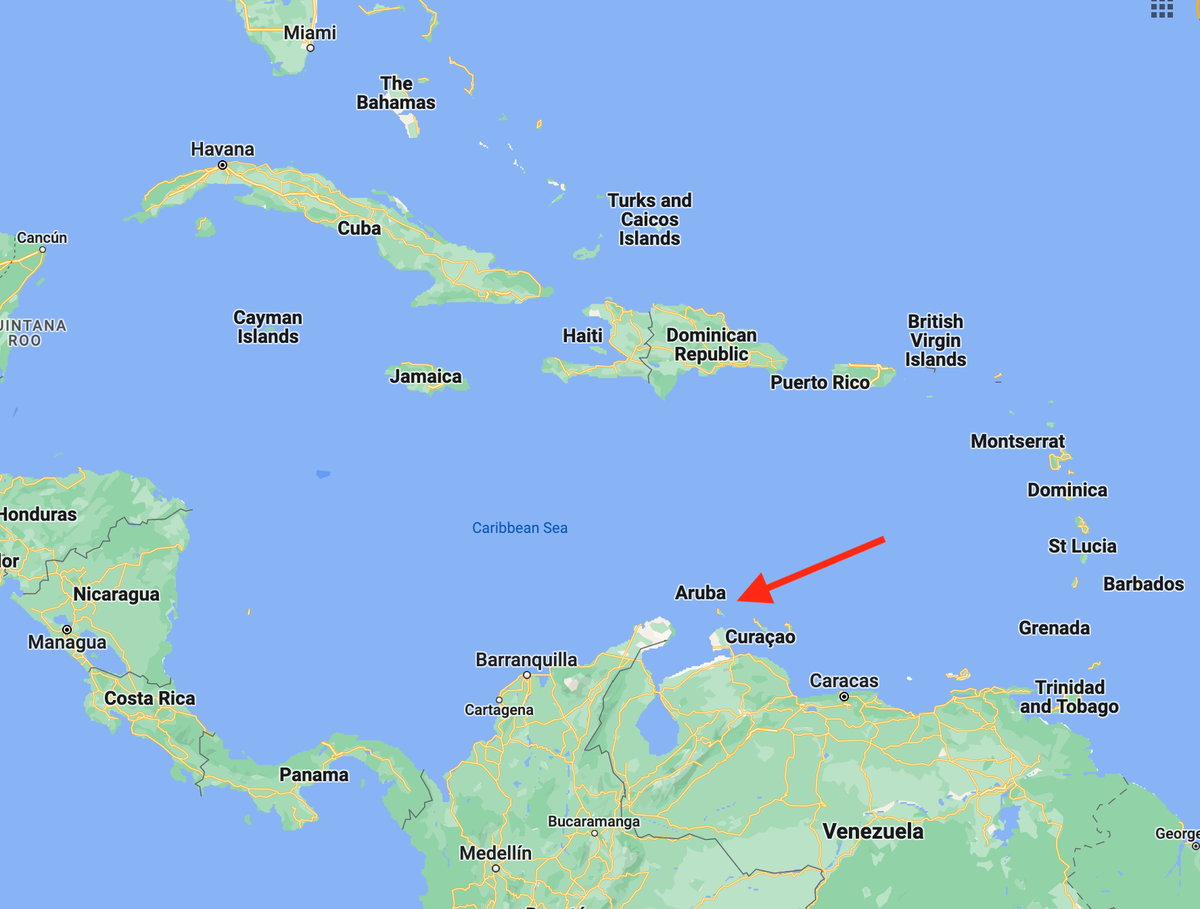
Known as “One Happy Island,” Aruba is an autonomous country that’s part of the Kingdom of the Netherlands. It’s not, however, an independent country recognized on any official list of world countries.
Together with the neighboring islands of Curaçao and Bonaire, it makes up the so-called ABC Islands. When you add in Saba, Sint Eustatius, and Sint Maarten, the group is collectively known as the Dutch Caribbean islands.
Aruba is an easy destination for U.S. tourists to visit. While the official languages of the island are Dutch and Papiamento (a Spanish Creole language with Portuguese and Dutch influences), English is very common. The official currency is the Aruban florin, but the U.S. dollar is widely accepted.
Hot Tip: When traveling to Aruba, be sure to bring a credit card that doesn’t charge a foreign transaction fee .
The Best Times To Visit Aruba by Season [Month-by-Month]
While Aruba does have a rainy season and a dry season, the effects aren’t as dramatic as they are in a place like the Maldives, where the time of year you visit is strongly tied to the experience you’ll have.
One of the unique things about Aruba is that it lies below the Hurricane Belt, so intense tropical storms and hurricanes are extremely rare on the island. While Aruba has near-constant trade winds, the threat of large storms is very small throughout the year.
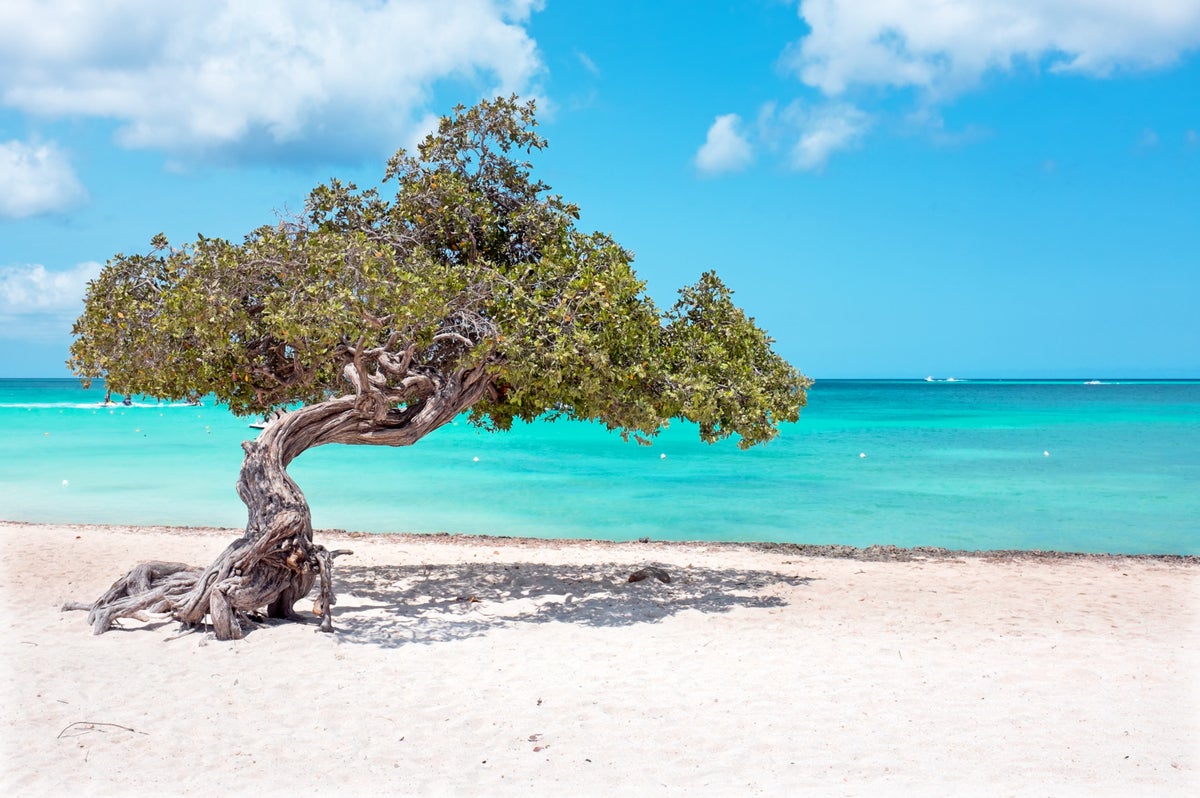
January is one of the most popular months to visit Aruba . With an average high temperature of 86 degrees and an average low temperature of 76 degrees, it’s a perfect month to enjoy balmy Caribbean days. Because it’s a great time to visit the island, it can be pricier — and more crowded — in January. Rainfall averages just about 1.5 inches for the month.
Hot Tip: The water temperature in Aruba is the coolest from January through March, averaging 79 degrees. While that may be acceptable to some travelers, it can be chilly for others. If you plan on snorkeling or scuba diving, you may want to consider wearing a wetsuit to help keep you warm.
February is another popular month to visit Aruba. Temperatures are similar to January, ranging from 76 to 86 degrees, but the average rainfall drops to less than 1 inch.
Prices in February are high, so expect to pay a premium for hotels, flights, and activities around the island.
Hot Tip: January and February make up the bulk of Aruba’s Carnival season . As one of the island’s most popular events, expect colorful parades, music, and lively festivities.
March tends to be the driest month in Aruba with an average rainfall of under 0.5 inches. Temperatures start to creep up, averaging between 77 and 87 degrees.
One of Aruba’s biggest celebrations centers around Flag Day , which falls in March. Expect jubilant celebrations and fireworks across the island. In Oranjestad, the island’s capital, there are folkloric musical performances, traditional food, and the Baile di Cintas, a traditional and somewhat complicated ribbon dance.
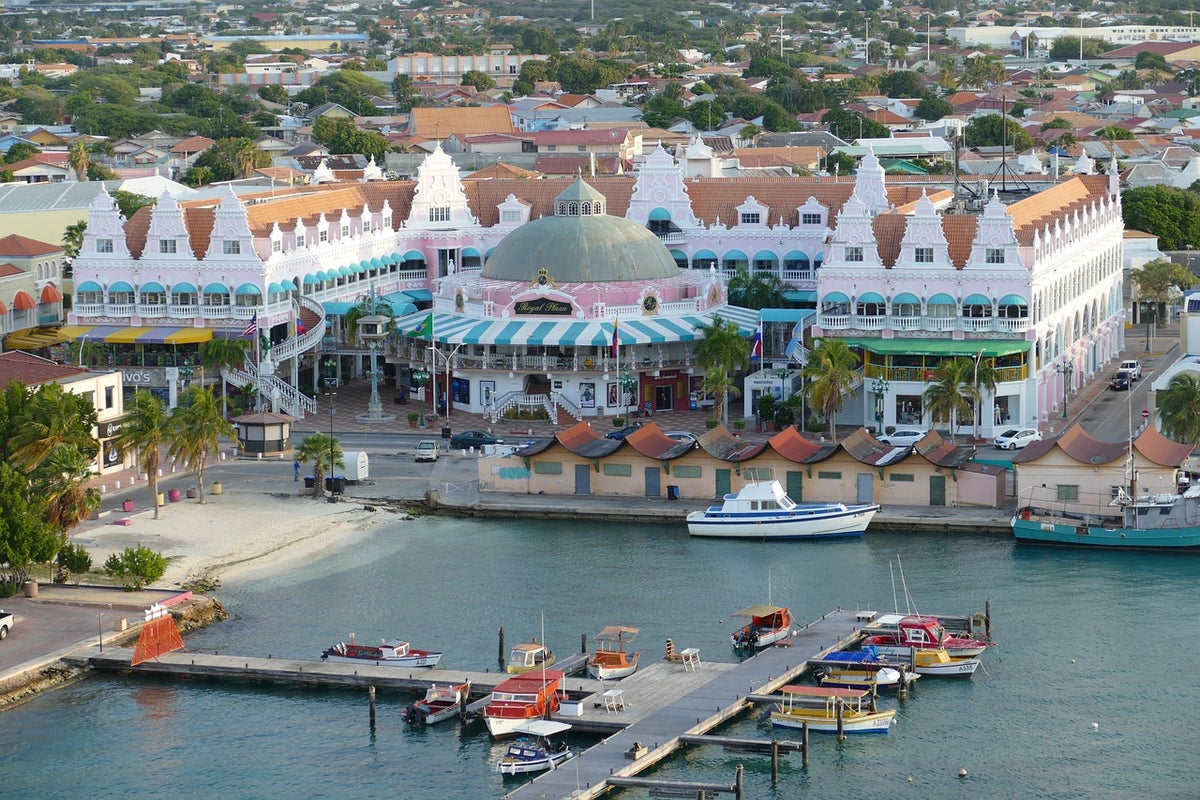
April is shoulder season in Aruba, so it can actually be a great time to visit the island . While temperatures can be warm, with highs near 89 degrees, the trade winds help keep visitors and residents comfortable and can keep bugs at a minimum.
The Soul Beach Music Festival , often cited as one of the Caribbean’s best festivals, happens in May. It brings concerts, nightclub events, and beach parties to the small island, often featuring internationally-known performers.
The other big event in May is Aruba Hi-Winds , the longest-running event in the Caribbean. This sports competition started with only windsurfing but has grown to include other sports like kitesurfing and biking.
Air temperatures range from 80 to 90 degrees and water temperatures start to warm up, averaging 81 degrees in May. This time of year is the beginning of the off-season so travelers may be able to find lower prices and smaller crowds.
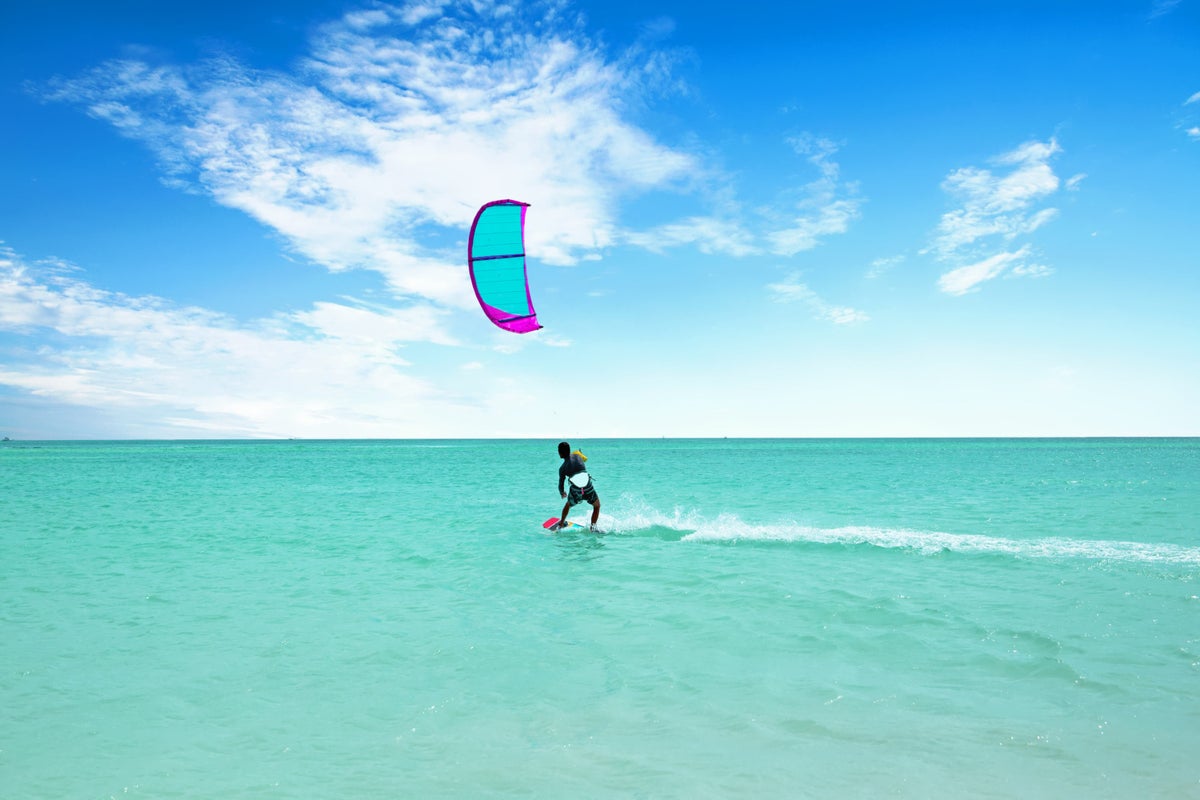
On June 24th every year, Aruba celebrates Dera Gai (St. John’s Day) with dancing, singing, storytelling, and even jumping over bonfires! Thankfully, the tradition of burying a live rooster isn’t practiced anymore.
June weather in Aruba is hot and dry with temperatures ranging from 80 to 90 degrees and rainfall averaging ~0.75 inches. For beachgoers, this can be great. For anyone who prefers land activities, it can be uncomfortably hot.
Aruba weather in July is similar to June — hot and dry (although there’s a slightly higher chance for rain). While it’s the off-season, it’s a popular month to visit, particularly for families with school-age children.
While Americans make up the bulk of tourists in Aruba summer is a time you’ll see a bit more diversity, with more Europeans and South Americans visiting during this time.
August is one of the hottest months in Aruba with temperatures ranging from 80 to 91 degrees. Rainfall is still at a minimum, averaging only ~1 inch for the whole month. Water temperatures are around 82 degrees, making August a great time for activities like swimming and snorkeling.
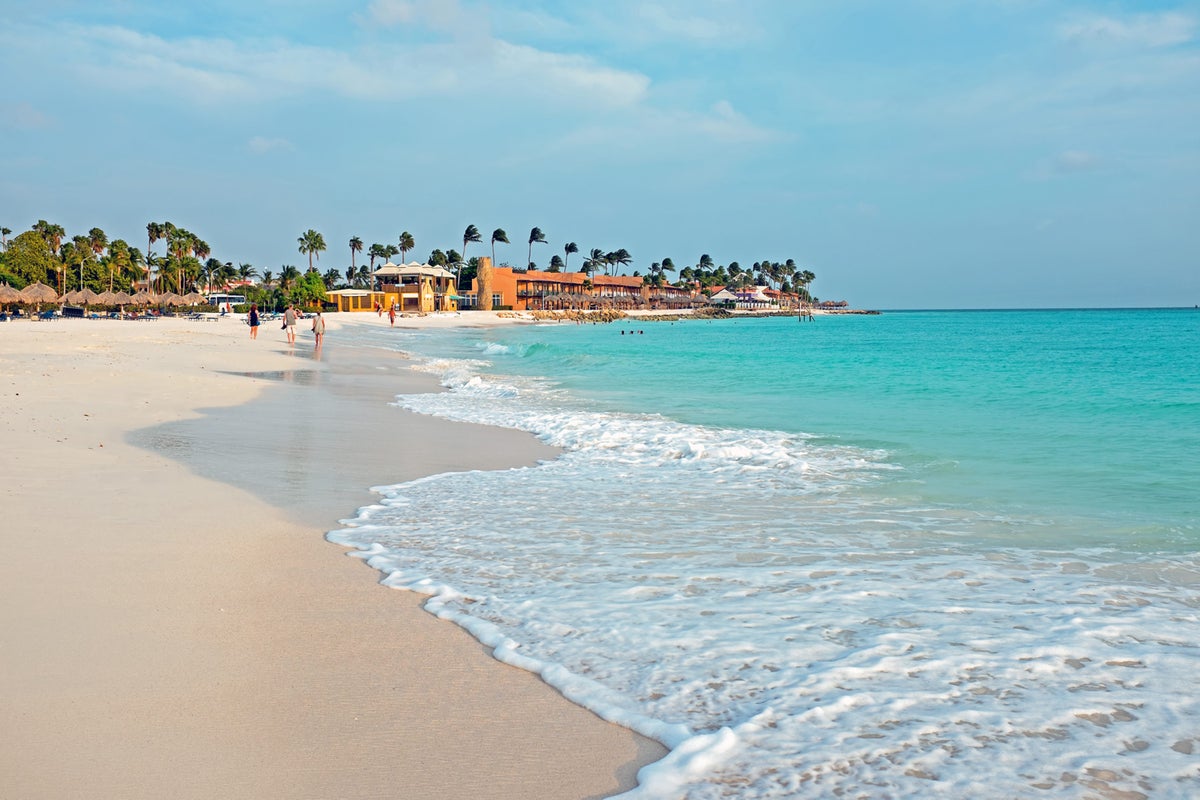
September sees the lightest trade winds of the year and it’s the hottest month of the year, so many travelers avoid visiting Aruba during this time. In fact, September sees the fewest amount of visitors of the year. Temperatures can reach 91 degrees during the day, with lows hovering around 81 degrees.
Since temperatures are lower and tourists are fewer, you may be able to find great deals during this time. If you want to save some money, September can be a great time to visit Aruba. Plus, it’s actually an ideal time for snorkeling since lighter winds mean calmer surface water conditions.
Hot Tip: August and September are the hottest months in Aruba.
Temperatures in October are still hot, ranging from 80 to 90 degrees, but rainfall starts to increase significantly, averaging about 3 inches for the month. While many people might avoid traveling to the Caribbean during this time due to the threat of hurricanes, Aruba lies just below the Hurricane Belt, so the likelihood of strong storms is very small.
October has the warmest water temperatures of the year, averaging 84 degrees.
November is the wettest month of the year in Aruba , with about 3.7 inches of rain on average. Temperatures start to cool a bit but are still warm with averages between 78 degrees and 88 degrees.
Mid-December is the beginning of Aruba’s high season, a time when prices and crowds start to soar. Temperatures are pleasant, ranging from 77 to 87 degrees, but the island sees a little over 3 inches of rainfall throughout the month on average.
Bottom Line: If Aruba had a true rainy season it would last from October to December. While these are the island’s wettest months, the amount of rain that falls is still pretty low compared to other islands in the Caribbean.
The Best Times To Visit Aruba by Interests
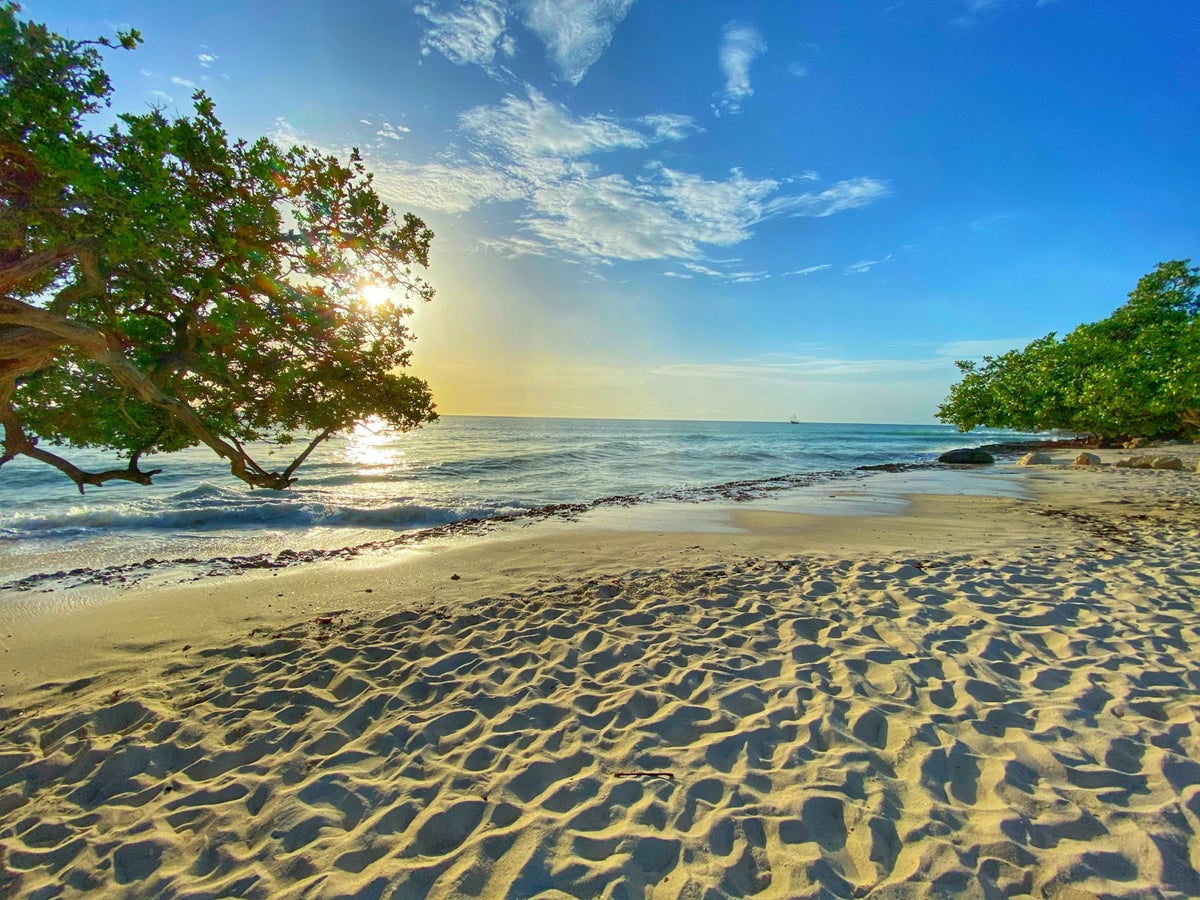
According to Google Travel, Aruba hotel prices are at their highest from December through March . If you’re traveling on a budget, plan to visit Aruba during the off-season from mid-April to October to save money.
You can save some additional money by using points and miles to pay for your flights to the Caribbean . There are also plenty of hotels in Aruba you can book with points , too.
Compared to much of the world, Aruba’s weather is pretty great all year long. Temperatures are fairly consistent, never dipping much below 70 degrees. However, if you want close to perfect weather, plan your visit to Aruba from January to April. This time period has warm weather and very little rain.
If you prefer warmer ocean temperatures, visit Aruba from June through November when sea temperatures hover between 81 degrees and 84 degrees . October has the warmest water temperatures of the year. You’ll find cooler sea temperatures, averaging 79 degrees, from January to March.
Aruba is a popular vacation destination in the southern Caribbean. The weather is fairly consistent throughout the year, with only minor fluctuations in temperature and a short, mild rainy season. Additionally, it lies just outside the Hurricane Belt, so it’s rarely affected by these strong tropical storms.
While Aruba is a year-round destination, the most popular time to visit is during North America’s winter months of December through March.
Frequently Asked Questions
When is the rainy season in aruba.
Aruba doesn’t have a true rainy season, but there are times the island gets more rain than at other points in the year. October through December is the rainiest time in Aruba, with 3 inches of rain during each of those months.
What month is the cheapest to go to Aruba?
There’s not a single cheapest month to go to Aruba. Instead, plan your visit during the off-season of May through October to save money.
What is the hottest month in Aruba?
The hottest month in Aruba is September, followed closely by August. Both months have average high temperatures of just under 91 degrees.
When is hurricane season in Aruba?
The Caribbean hurricane season lasts from June through November, with the peak period starting in August and lasting through October. However, Aruba lies just outside the Hurricane Belt which means the island is protected from most tropical storms and hurricanes. The last hurricane to impact Aruba was Hurricane Felix in 2007, a Category 2 storm that caused only minor damage.
Was this page helpful?
About Katie Seemann
Katie has been in the points and miles game since 2015 and started her own blog in 2016. She’s been freelance writing since then and her work has been featured in publications like Travel + Leisure, Forbes Advisor, and Fortune Recommends.
INSIDERS ONLY: UP PULSE ™

Get the latest travel tips, crucial news, flight & hotel deal alerts...
Plus — expert strategies to maximize your points & miles by joining our (free) newsletter.
We respect your privacy . This site is protected by reCAPTCHA. Google's privacy policy and terms of service apply.
Related Posts
![best time to visit aruba for snorkeling The Best Times To Visit the Grand Canyon [By Seasons & Interests]](https://upgradedpoints.com/wp-content/uploads/2022/07/Grand-Canyon-and-river-views.jpg?auto=webp&disable=upscale&width=1200)
UP's Bonus Valuation
This bonus value is an estimated valuation calculated by UP after analyzing redemption options, transfer partners, award availability and how much UP would pay to buy these points.
The best time to go to Aruba for beaches, parties, or travel on a budget

May 4, 2022 • 5 min read
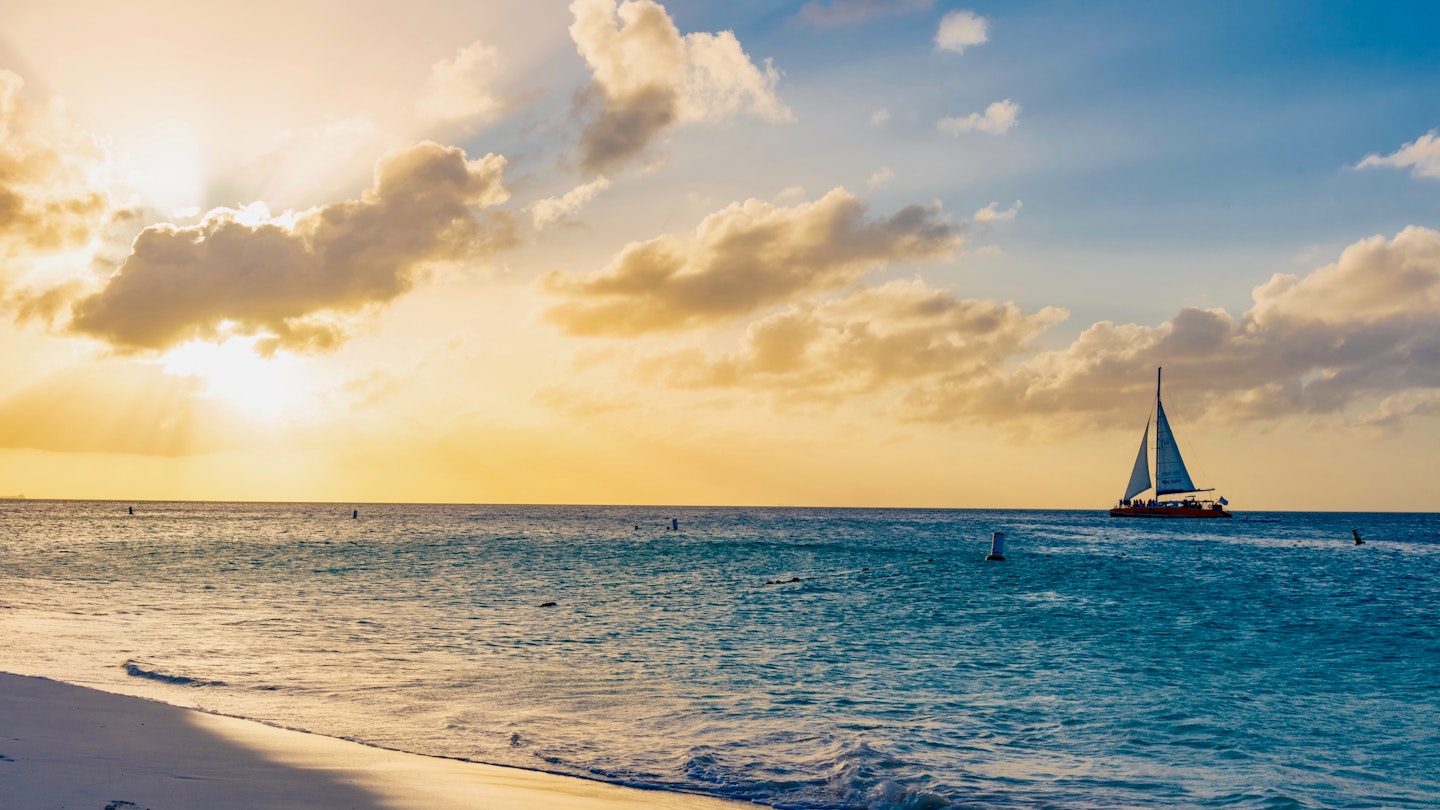
There is never a bad time of the year to visit Aruba © Diego Mariottini / Shutterstock
Coastal cacti collide with white sand beaches and turquoise tides in Aruba . This tiny Caribbean nation sits just 15 miles off the coast of Venezuela, but despite its proximity to South America , Aruba primarily hosts US tourists who’ve turned the island into an Westernized playground of booze cruises, ATV excursions and resorts.
That combination makes Aruba one of the best Caribbean islands to visit for US travelers who want the comforts of home in an exotic location, but your experience can vary dramatically depending on when you go.
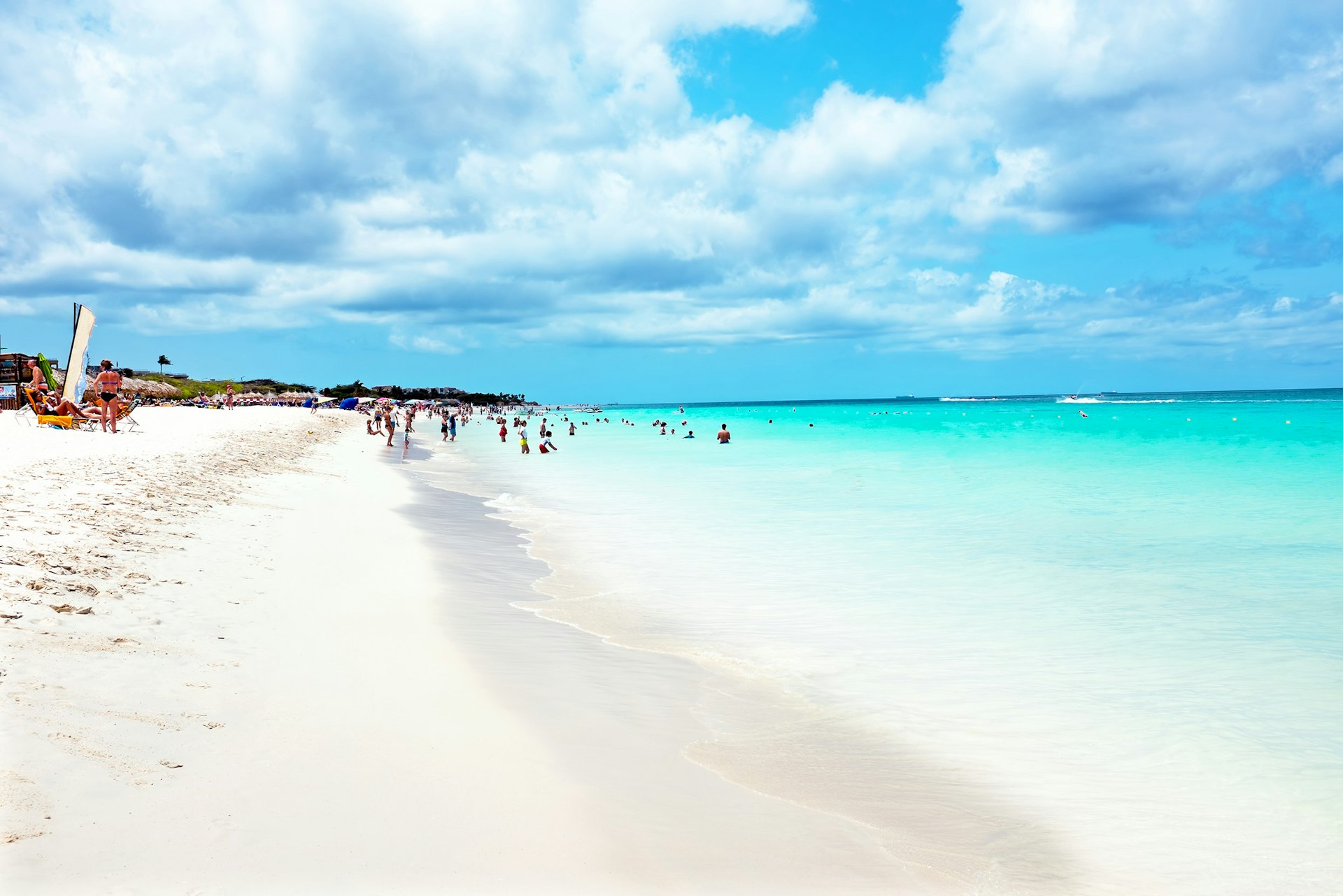
High Season: Mid-December to Mid-April
Best time for beach lovers .
Unlike many Caribbean nations, weather does not play a major factor in Aruba’s peak season. Instead, the season is dependent on cold weather in North America.
Aruba’s capital city, Oranjestad, will be bustling during high season. Expect to pay top dollar for lodging, dining and experiences from mid-December to mid-April. During high season, hotels on the island’s most popular beaches, Eagle Beach and Palm Beach, can inch towards $1000 per night at the most exclusive spots. Reservations are recommended several months in advance.
Shoulder Season: Mid-April to August
Best time for a diverse crowd .
The sweet spot for savings and social life occurs from late spring to late summer in Aruba. Warmer temperatures in the US and Canada mean fewer flights from North America.
Expect lodging rates to dip 20 to 30% during shoulder season, and look for a more diverse crowd of visitors, particularly Europeans taking advantage of summer vacations and South Americans flying north from their winter.
US tourists will likely still make up the majority of the crowd this time of year, but lower rates and a climate that still benefits from a daily breeze make Aruba an attractive option for a wide range of travelers no matter conditions at home.
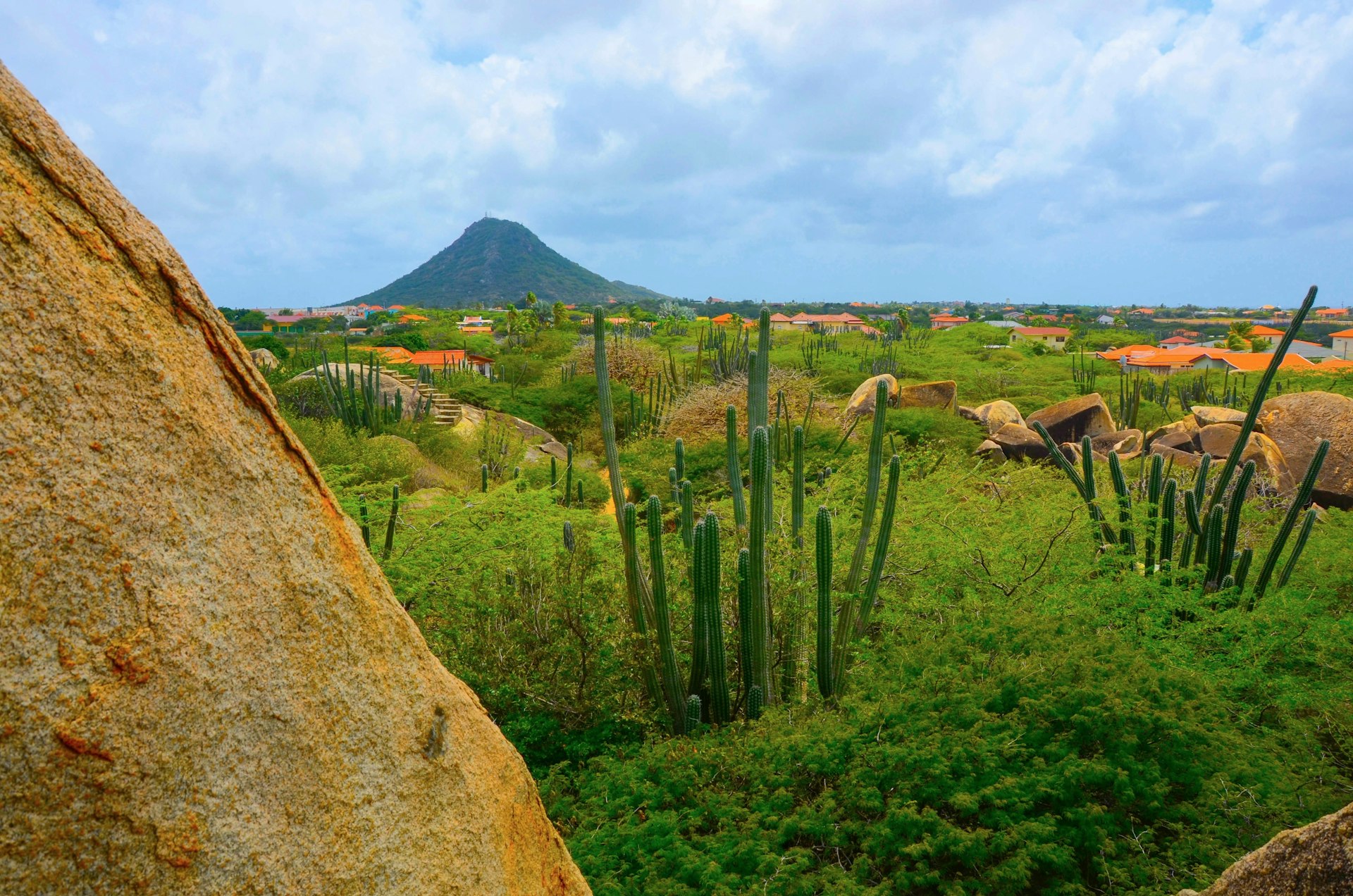
Low Season: September to Mid-December
Best time for budget travelers .
The cheapest time to visit Aruba is in autumn. Trade winds keeping visitors cool in Aruba’s desert landscape fade in September.
Deep discounts on lodging, sometimes as much as 50% less than winter highs, can make Aruba a relative bargain this time of year. September can also be the best time to visit Aruba for snorkeling, thanks to lighter winds that can keep surface waves at bay.
And, though tour operators will often reduce the number of outings per week, you may find yourself in a smaller group and waiting in fewer lines than you might during peak season.
Top 7 beaches in Aruba
When is hurricane Season in Aruba?
The southern Caribbean is typically less threatened by Atlantic hurricanes than the northern Caribbean. Though it is possible for hurricanes to take atypical trajectories and skirt or even impact Aruba, the nation remains one of the surest bets to catch pleasant weather in the Caribbean during peak storm season – usually from early summer to fall.
The highlight of high season, Carnival brings parades and revelry to the streets of Oranjestad and San Nicolas. Enjoy vivid costumes and copious calypso as people from across the 70-mile long island come together to celebrate. Carnival’s crown jewel? The Tivoli Lighting Parade, where twinkling lights shimmer from floats and costumes through the tropical night.
Key events: Aruba Carnival Season, Dande, Betico Croes Day, Aruba Island Fest (San Nicolas).
Aruba commemorates its flag day on March 18 with fireworks displays across the island. Often, the day coincides with folklore presentations and constant, joyous singing of the national anthem from local children.
Key events: National Anthem and Flag Day, Aruba Island Fest (San Nicolas).
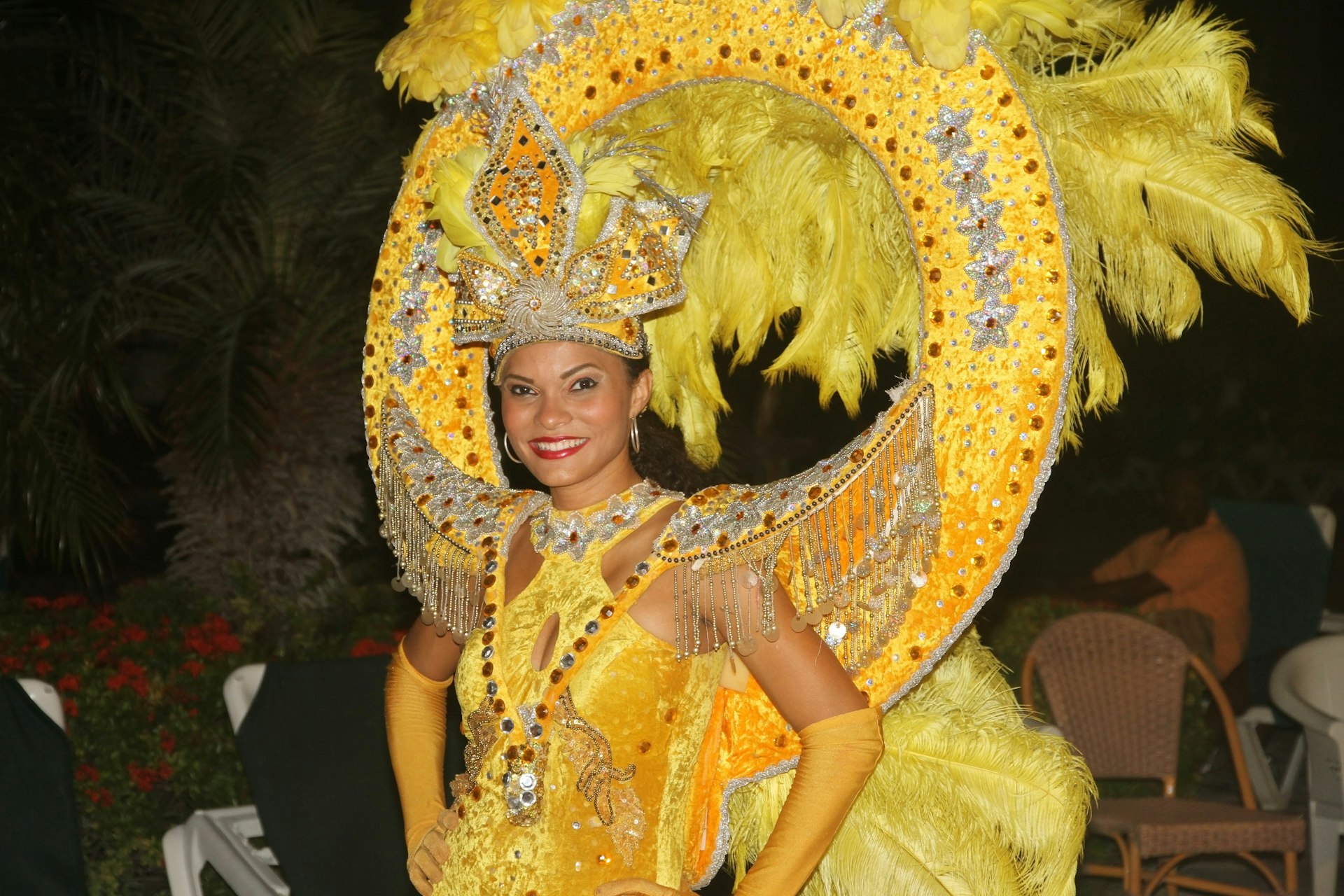
Aruba’s annual Soul Beach Music Festival dials beach parties and nightclubs in Palm Beach and Oranjestad up for a celebration of music and comedy that is regularly rated as one of the Caribbean’s best music festivals. It’s common for international artists — like DJ Jazzy Jeff and Chaka Khan — to make their presence felt. Soul Beach Music Festival sometimes coincides with the three-day Aruba Food & Wine Festival.
Key events: Aruba Soul Beach Music Festival, Aruba Food & Wine Festival, Aruba Island Fest (San Nicolas).
Bonfires abound in June, when Arubans gather to commemorate Dera Gai. Anglicized as St. John’s Day, this festival of storytelling and music is authentically Aruban. Historically, local men challenged each other to jump over the bonfires while also playing a sort of of blindfolded hide-and-seek with a half-buried rooster. Today, it’s mostly a reason to celebrate and symbolically cleanse the soul. The roosters are no longer real.
Key events: Dera Gai (St. John’s Day), International Triathlon, Aruba Summer Music Festival, Aruba Island Fest (San Nicolas).
Wind- and kite-surfers descend on the island from around the world to compete in a contest powered by the trade winds. Typically, the Hi-Winds Tournament takes place within sight of the opulent resorts of Palm Beach and makes for excellent people-watching.
Key event: Aruba Hi-Winds Kitesurfing & Windsurfing Tournament.
Grabbing an American meal Aruba is surprisingly easy, but those who dine on island time without sampling the local culinary heritage are missing out. Aruba is an island home to more than 90 different ethnic groups where it’s common for children to speak as many as four languages. Its food – the centerpiece of Aruba Restaurant Week – blends South American, European and Caribbean flavors into unforgettable flavors.
Key event: Eat Local Aruba Restaurant Week.
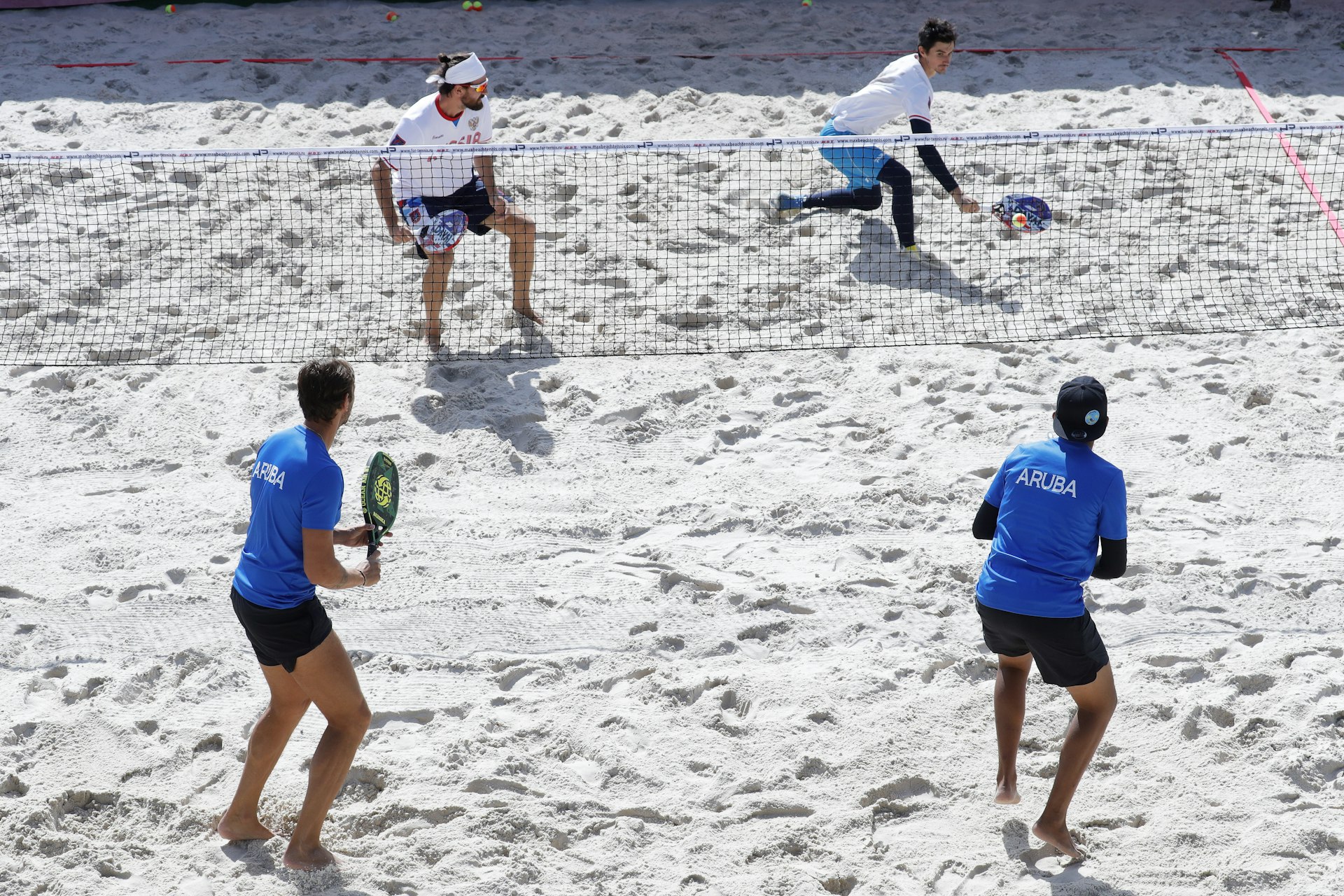
Far from the buttoned-up stands of Wimbledon, Aruba’s beach tennis championships replace racquets with paddles and polos for board shorts and bikini bottoms. Each November, the Aruba Beach Tennis Open combines serves and sand into a casual sporty atmosphere. In the background, the colorful sails of the island’s catamaran regatta might be spotted billowing on the returning trade winds.
Key events: Aruba Open Beach Tennis Championships, Island TakeOver Festival, Aruba Art Fair, Aruba Catamaran Regatta.
Traditionally, Sint Nicolaas arrives in Oranjestad’s Paardenbaai Harbor on December 5, much to the joy of local children. Later in the month, Aruba celebrates its New Year and the coming of Carnival festivities in January.
Key events: Sint Nicolaas Day, New Years Eve.
This article was first published April 2021 and updated May 2022
Explore related stories
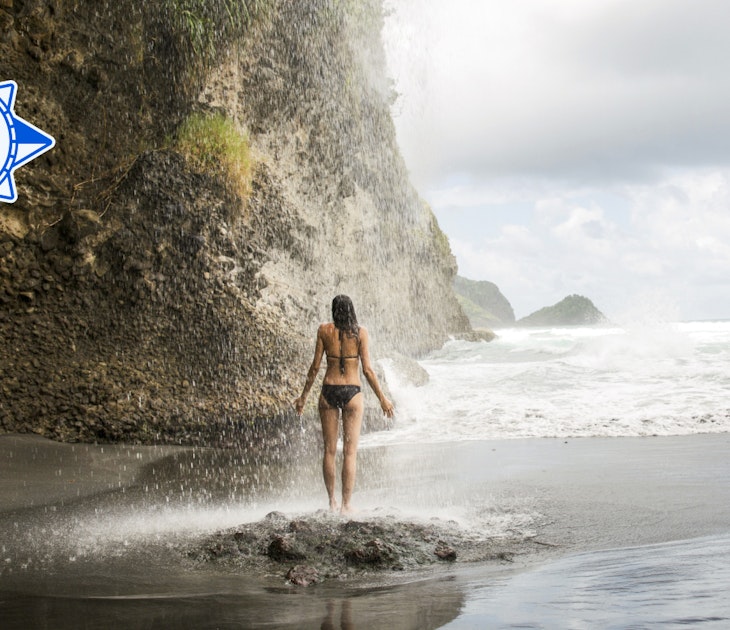
Wildlife & Nature
Feb 27, 2024 • 6 min read
April is the ideal time of year for mild-weather hikes, cherry blossom festivals, fresh produce and more.
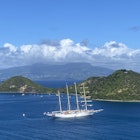
Dec 11, 2023 • 5 min read
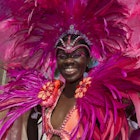
Nov 14, 2022 • 7 min read

Mar 9, 2022 • 8 min read
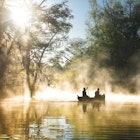
Mar 24, 2024 • 5 min read

Mar 20, 2024 • 8 min read

Mar 13, 2024 • 6 min read

Mar 4, 2024 • 10 min read

Mar 2, 2024 • 8 min read
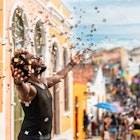
Mar 1, 2024 • 9 min read

Aruba Snorkeling: 10 Best Places to Go Snorkeling in Aruba
So, you’ve decided to visit Aruba this summer? Get ready for an exhilarating yet exciting stay in a Caribbean paradise that offers so much. The world-class beaches, excellent weather conditions, and welcoming culture mean there’s so much to do. The island is also a water sports paradise, with many exciting places to enjoy swimming, snorkeling, windsurfing, paddleboarding, etc.
If you’ve always wanted to tick snorkeling on a picturesque, white-sand beach on your bucket list, you should pack your bags for Aruba. The island offers so many fascinating snorkeling locations.
We took the time to visit most, and here are our top 10 places to go snorkeling in Aruba:
- Arashi Beach
- Boca Catalina and Catalina Cove
- Antilla Shipwreck
- Natural Pool
- De Palm Island
- Mangel Halto
- Flamingo Beach
- Puerto Chiquito
- Rodgers Beach
Let’s take a closer look at the locations to see what each offers and how you can make the best of your snorkeling experience when you get there.
1. Arashi Beach

Easily the most recommended snorkeling spot in Aruba because of its serene ambiance. The abundance of underwater life in Arashi Beach combines with its gentle current to make it a delight for snorkelers desiring underwater adventure.
Amateur and advanced snorkelers will enjoy swimming alongside the colorful schools of fish that populate the water. Add that to the nice chunk of healthy coral reef that flows all the way to the end of the beach, and you can tell that it’s a perfect spot for advanced snorkelers.
Arashi Beach is best described as a quiet and relaxing beach characterized by its white sand, calm water, and an exciting collection of sea life. A large parking lot, a snack shack, and huts complement these features to make it perfect for swimming and sunbathing too.
Whether you want to go snorkeling with your family or relax on the beach and enjoy Aruba’s beautiful scenery, this beach offers it all. We recommend entering the ocean from the left side of the beach for a full experience of the collection of sea life available here.
2. Boca Catalina and Catalina Cove
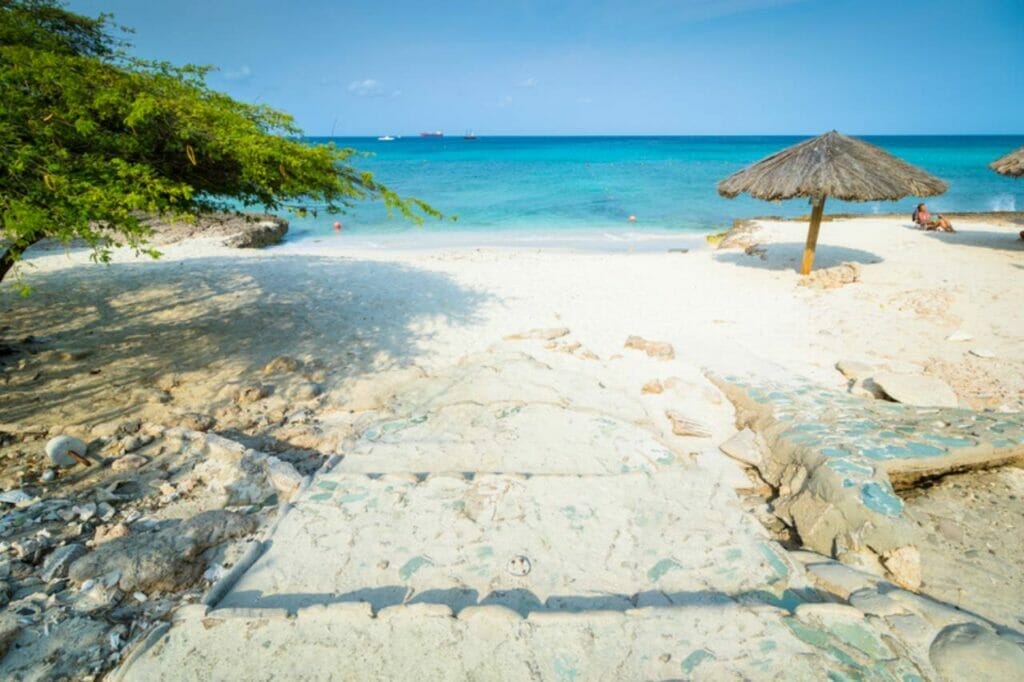
This is an attractive spot for snorkelers that want to experience the authentic Aruba lifestyle because of the number of locals that frequent the location.
Beginners are always drawn to the calm, crystal-clear waters at the Boca Catalina and Catalina Cove. However, there’s more to see in this sea. The rich marine life in the sea includes coral reefs, sponges, dolphins, and colorful schools of fish. The seagrass beds offshore make Catalina Cove an excellent destination to snorkel with sea turtles.
First-time visitors typically love to go farther south to Tres Trapi, where they can see many fascinating sea stars and rock formations. You can swim along the shoreline if you’re a sucker for adventure. Otherwise, you can use the stairs carved into the rock to enter the water.
You can visit Catalina Cove alone or as part of an excursion team. However, the sea’s popularity among locals means there is never a shortage of people there.
3. Antilla Shipwreck
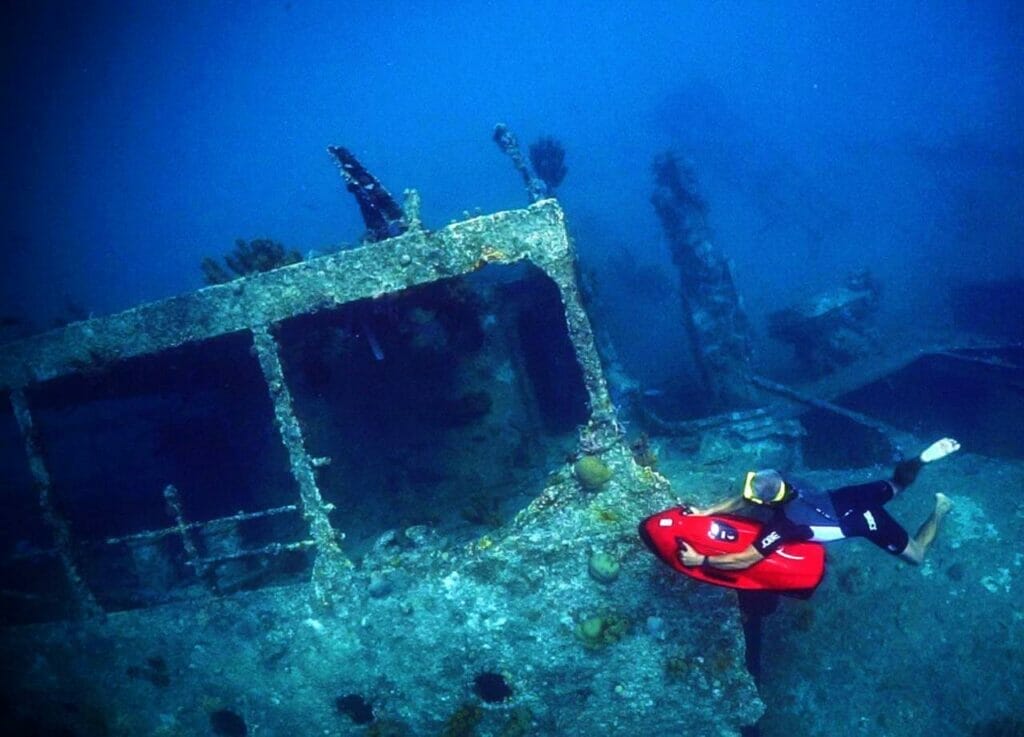
There’s no better time to experience some of the memories you’ve read in books than while on vacation.
Snorkeling the Antilla Shipwreck gives you an excellent opportunity to see one of the largest shipwrecks in the Caribbean.
The sunken World War II ship is offshore near the north end of Aruba. There’s enough of the ship visible to snorkelers, but that’s not all. There’s also an impressive amount of sea life to see. However, you must always be ready to swim against a current, as wind and choppy water are common at the wreck.
The best way to get to the Antilla Shipwreck is by joining a snorkeling tour. Resist the temptation to swim to the shipwreck from Malmok Beach because it is surprisingly far, and the water is rough with strong currents.
4. Natural Pool
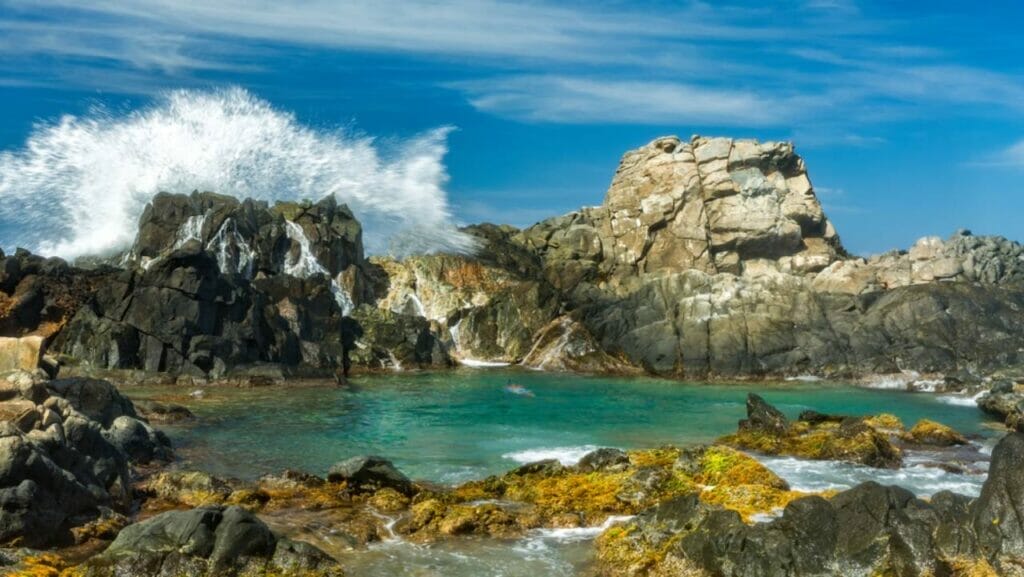
Also known as “Cura di Tortuga” (turtles cove), this pool has more than enough to keep you busy throughout a day’s tour.
The pool consists of a stunning collection of rock creations formed by volcanic activity. As the name suggests, turtles often visit this pool.
There’s also abundant sea life here to make it an adventure for anybody. What stands this beach out is the availability of different locations for different snorkeling skill levels. A significant turn-off for beginners can be the occasional pick-up of currents. But even that is enjoyable for skilled snorkelers.
Novice snorkelers that are not so comfortable with strong currents can snorkel inside the bay or the reef. There are very few bits of coral and small schools of fish to see her. Snorkelers who want to enjoy more sights swim about 200 yards from the calm bay.
Before going this far, it’s important to note that the current can be quite intimidating.
5. Baby Beach
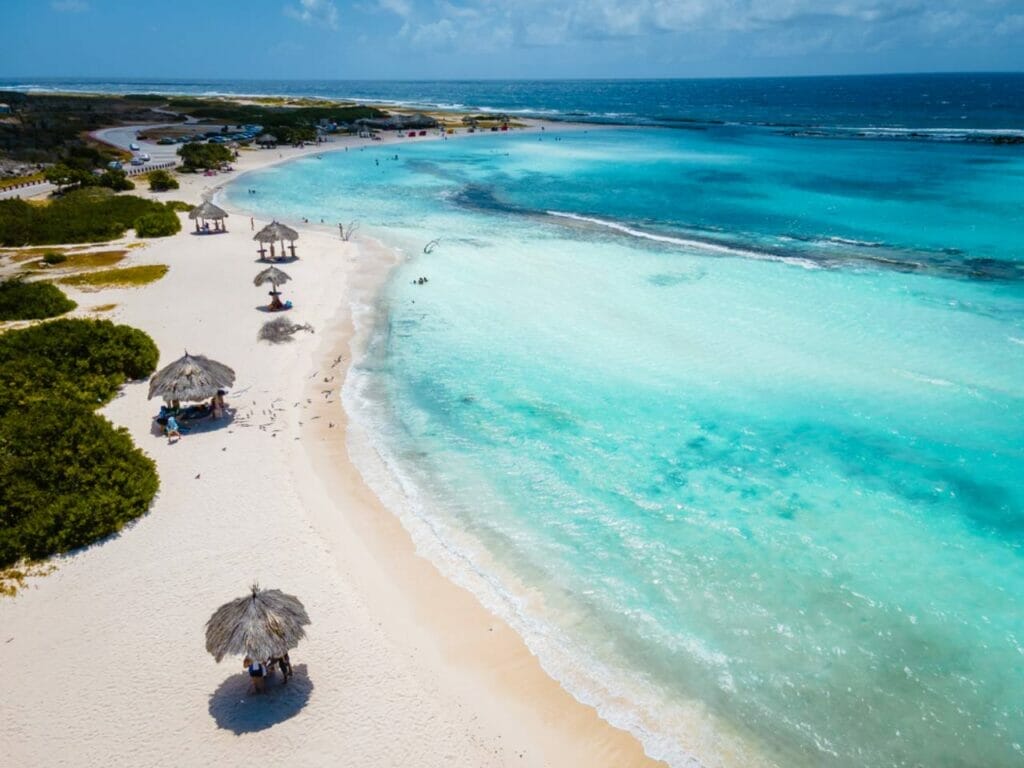
Although often considered one of the most dangerous snorkeling beaches in Aruba, we can’t deny the beauty of the Aruba Baby Beach. This large, protected bay is lined with a sandy beach. Of course, the shallow water on the beach is excellent for swimming.
But most dive shops believe that the beauty of snorkeling is best absorbed from just outside the reef. But the waves and current further outside the bay are too strong for even experienced swimmers. Thus, most locals strongly advise against snorkeling in this location. If you can withstand being pushed out to the sea by a strong current, why not.
If you’ve included going to Baby Beach in your to-do list, it’s best to plan to chill on the beach with friends, eat at the beach bar, or swim in the shallow calm bay.
If you want to enjoy snorkeling in the bay, then it’s better to try other snorkeling locations in this article.
6. De Palm Island

Not many snorkeling locations around the world measure up to De Palm Island in the quality of things to see. This island is surrounded by its coral reef, enabling snorkelers to snorkel from the shore instead of needing to take a boat tour.
De Palm Island offers the best of both worlds – novice snorkelers can join any of the complimentary guarded tours snorkeling twice every day. This tour has so much to see, including some of the island’s most colorful fish.
While snorkeling on the reefs, a favorite activity is looking for parrotfish in different hues. There are many other activities to engage in, including looking out for spotted moray eels on the reef’s nook.
There are snorkel equipment rentals on the highland for experienced snorkelers that do not fancy going on tours. The island is also a perfect relaxation spot, with lots of spots to grab authentic Aruban meals and icy cocktails to calm your nerves after an exhilarating experience in the water.
7. Mangel Halto
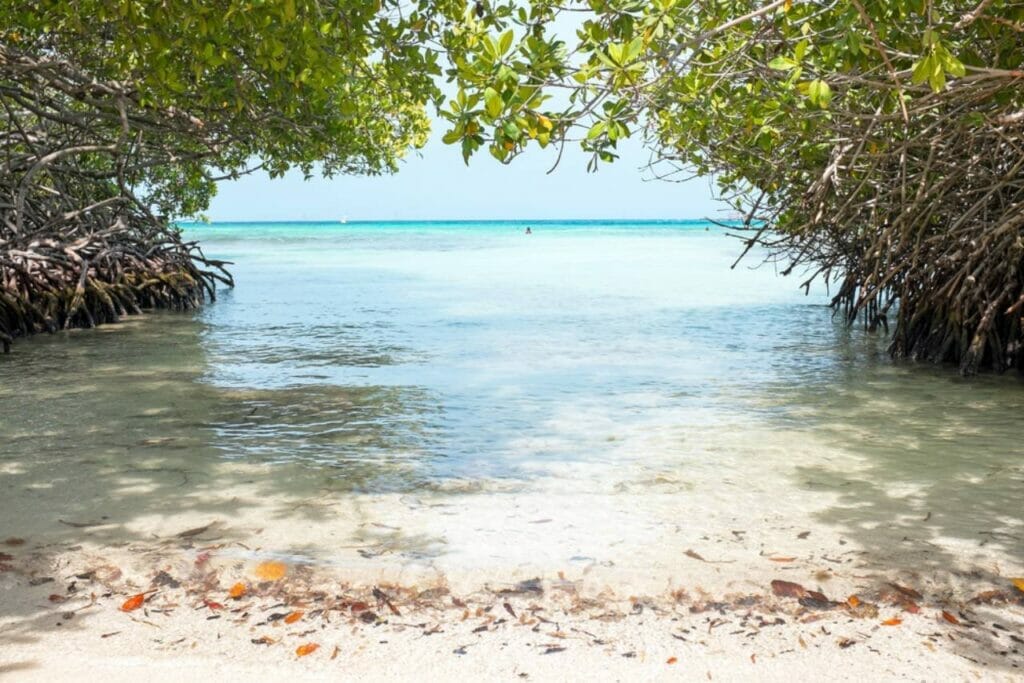
Located on the southeastern coast, south Spanish Lagoon is Mangel Halto, a snorkeling location known for its nice healthy corals, and astonishing marine life. This beach is famous among adventurous tourists and it’s easy to see why.
As a first-time visitor, you’ll have a unique view of this spot’s turquoise lagoons. These lagoons are surrounded by mangroves, giving them the perfect backdrop for moments when you want to relax and soak in nature’s beauty.
The shallowness of the initial part of the water means you need to walk a small distance to the deeper parts before putting on your fins.
To get to the fin, you’d need to swim out straight, in line with the yellow buoy. It’s important to point out that this is not exactly a beginner spot because of the exposure, currents, and potentially long swim. That’s not to say you can’t have fun as an experienced snorkeler.
Snorkelers in this category can always snorkel in the shallow parts to the left and right of the dock, where they can still find small patches of rocks, small corals, fishes, and other creatures.
8. Flamingo Beach
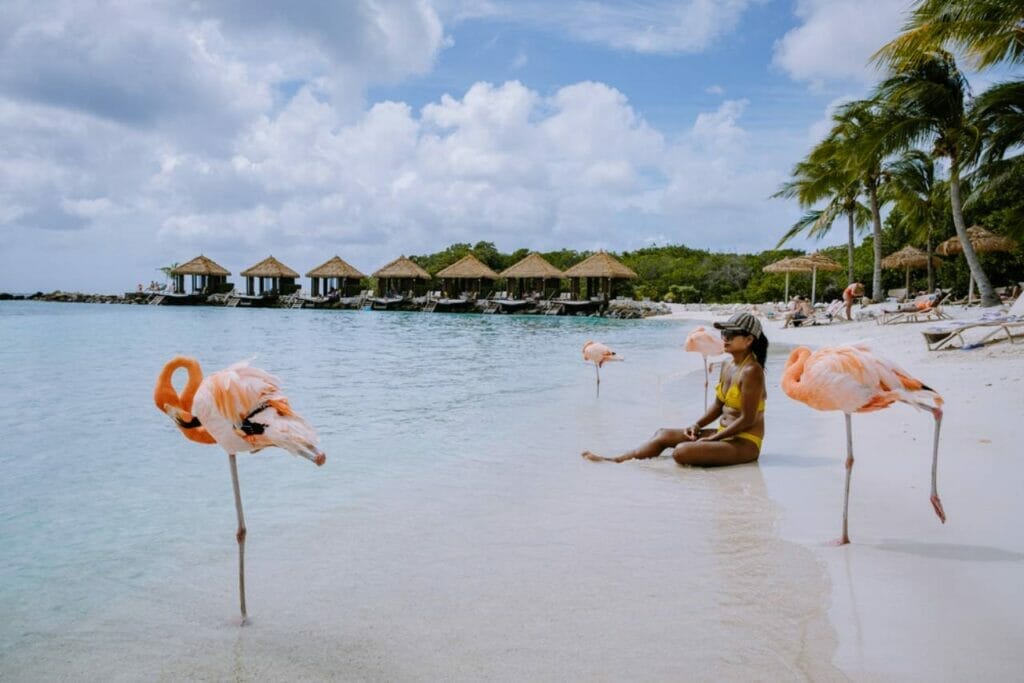
You’ve probably seen pictures of this beach online, with its turquoise water and numerous pink flamingos walking among sunbeds. Flamingo Beach is one of the most beautiful snorkeling locations in Aruba, which is evident in its rank as Aruba’s most photographed tourism location.
It is located on the Renaissance Aruba Resort’s private island. Most tourists can access this private island from anywhere by water taxis.
While snorkeling here is good, it’s not the main attraction for most visitors. Most visitors come to see the renowned flamingos strutting around the beach and to take photos. That’s not to say it’s not a good snorkeling location.
There’s an artificial lagoon strategically located at the front of the beach, where snorkelers can swim with an incredible diversity of Caribbean fish. The lagoon’s current may pick up depending on weather conditions, but it is mostly safe for beginners and novice snorkelers.
Like most other snorkeling locations in Aruba, you can join a private tour or snorkel by yourself. The beach gets human traffic all year round, so you’d find something to entertain you throughout your stay.
9. Puerto Chiquito
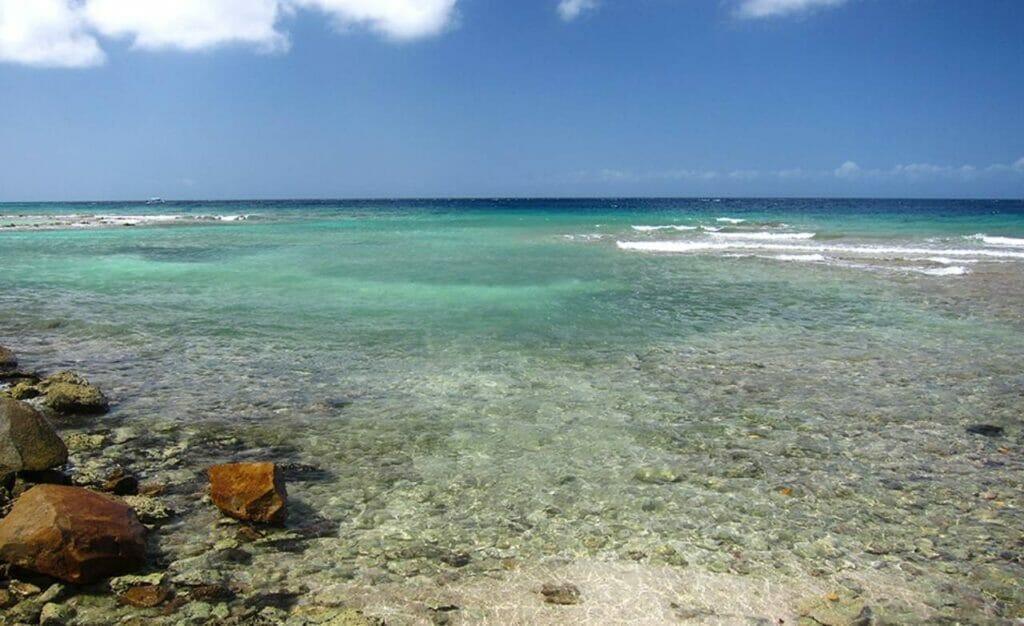
Located southeast of Mangel Halto is Puerto Chiquito, a fantastic spot for experienced snorkelers. This spot, also popularly called Hole in The Wall, features an incredibly diverse range of fish species and other sea animals.
It is usually characterized by wind, waves, and a significant level of current. Unless you’re a very experienced snorkeler, avoid going into the waters when the waves get high.
Since it’s not a protected cove, you’ll be swimming on your own in an open ocean most time. Nonetheless, you’ll still see boats coming here once in a while, so it makes sense to use a swim buoy for easier identification by boat riders.
Please note that the spot does not feature any beach, making it difficult to hang out here. All you’d find are small rocky bays to the left and right of the parking area. The water contains several different fish species.
The current typically moves from left to right, so we recommend swimming against to current to get to the reef. This way, you won’t have to swim against the current when coming back cos you’ll be more tired.
10. Rodgers Beach
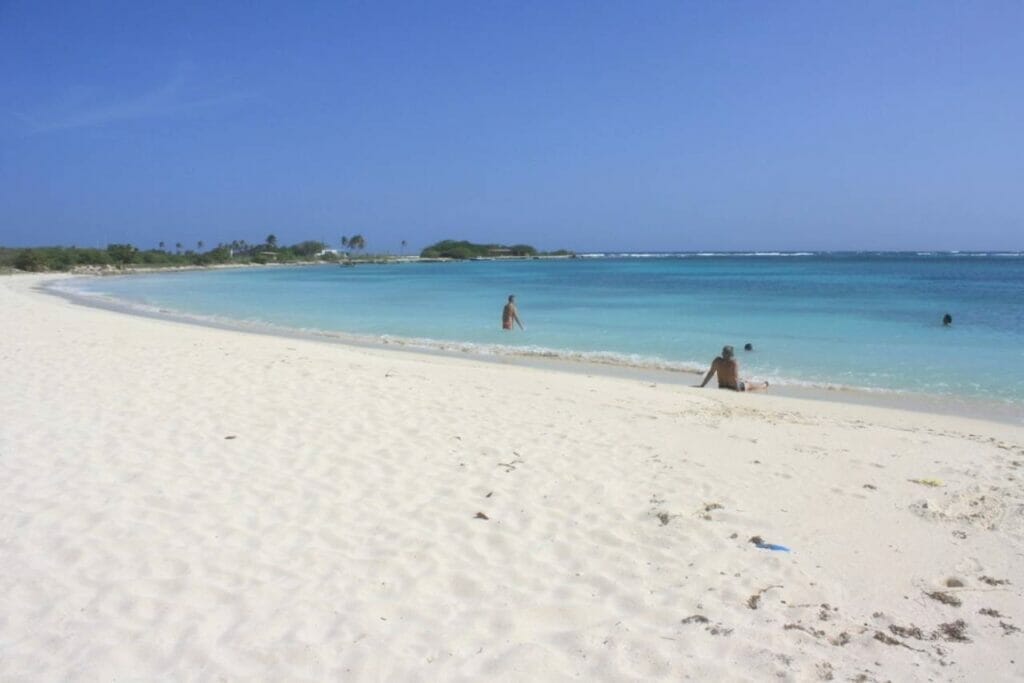
Often described as a cousin to the more popular Bay beach, this small beach is a fantastic location to snorkel during your visit to Aruba. The 264 meters long beach is located at the immediate left of Baby Beach, sweeping around a reef-protected bay. Thus, most tourists consider it an ideal location for a quiet retreat.
This narrow, scenic, white sand beach is known for its abundance of colorful fish schools and calm water ideal for snorkeling, sunbathing, and swimming.
The most enjoyable thing about this beach is its private beach feel, despite being a public beach. Rodgers Beach is typically quiet during weekdays, making it an excellent location to grab a chair, pull out your book, and read. However, you’ll find many locals and tourists enjoying the beach on more busy weekends.
So weekends are a better time to snorkel here because you’ll have company.
Aruba Snorkeling Safety Tips
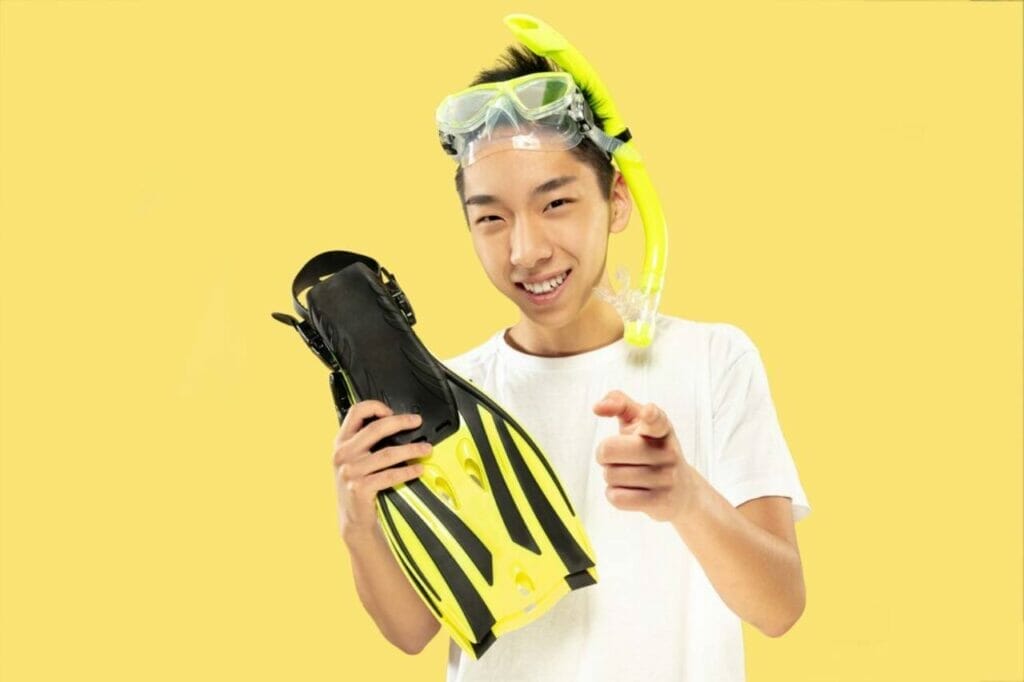
Now that you’ve decided to finally enjoy some snorkeling experience in Aruba, the first thing you should do is learn some safety tips. Even if you’re going on a tour, it’s still an excellent idea to know a few ways to stay safe.
The oceans in Aruba are beautiful, with so many features to keep you busy throughout your stay. But you must never forget the importance of safety. Here are some safety tips to always have in mind.
Go with a buddy
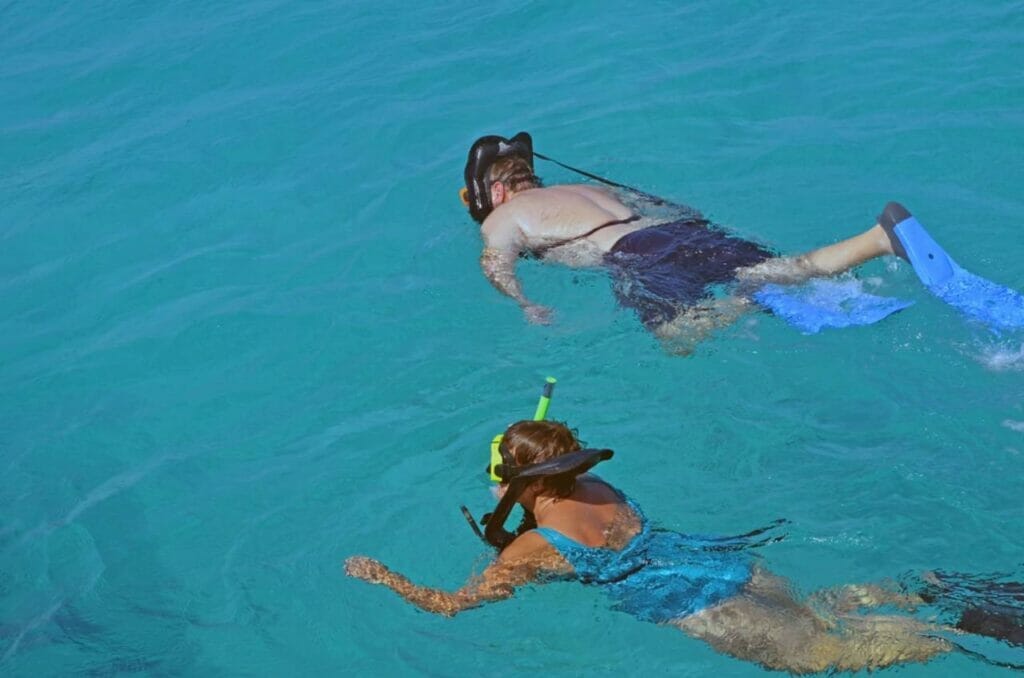
Even the most experienced swimmers still need help once in a while. So, before hitting the waters, ensure you have a buddy to watch out for you. A buddy is always the closest respondent in case of an emergency. If you don’t have a buddy, join tours. Most of the snorkeling locations on our list have tours you can join any day.
Check weather conditions

If you’re going to hit the waters, you better be sure it’s absolutely safe. One of the things to look out for is weather conditions. Ensure that the current, wave, and wind conditions are favorable for your snorkeling level before entering the ocean.
Some snorkeling locations are typically more dangerous than others, so it makes sense to always read warning signs and talk to locals before snorkeling in any ocean. However, if the ocean’s current catches up with you, don’t swim against it. Swim in its direction as long as it takes you somewhere safe.
Invest in top-quality snorkel equipment

Although often overlooked, gear is important to your overall snorkeling experience. Bad snorkeling gear and equipment can significantly limit your abilities. Thus, it makes sense to buy the best products from trusted manufacturers.
Apart from your snorkeling experience, the top-quality gear also helps to ensure safety. Inferior items may break at crucial moments when you need the best, causing serious distress and danger.
Know your snorkeling ability

If you plan to snorkel before the year runs out, now’s the best time to learn how to swim. Whether you’re snorkeling in shallow waters or deep parts, it makes sense to have some swimming experience.
If you have minimal swimming experience, consider buying snorkel buoyancy vests. The design of these vests allows for easy inflation or deflation to suit your needs. Notwithstanding, you still don’t want to go too far from the shore.
Recap: Aruba Snorkeling Guide
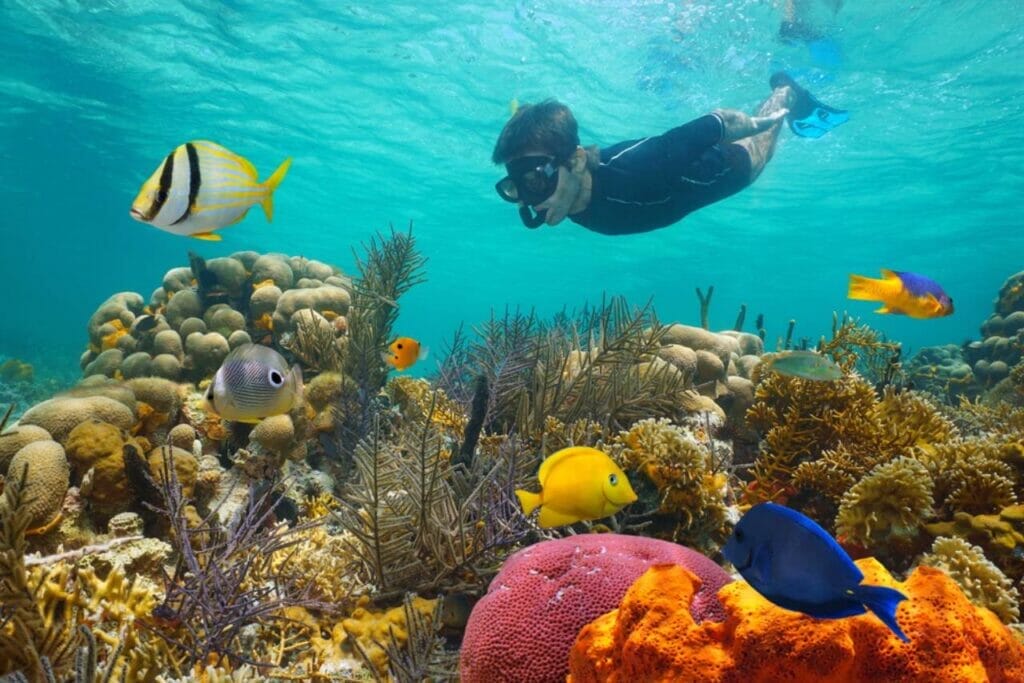
There you have it, a look at the top snorkeling spots in Aruba. Planning a vacation can be stressful, especially for places you’ve not been to. It makes sense to note things to do before your visit.
Snorkeling is a top activity in Aruba because how else can you enjoy the beautiful beaches on the island other than jumping on them?
We’ve reviewed 10 of the best snorkeling locations in this article, including their features and how best to enjoy them. We’ve also included some safety tips to help you stay safe throughout your snorkeling experience.
I've been everywhere, man. Crossed the deserts bare, man. I've breathed the mountain air, man. Of travel, I've had my share, man. I've been everywhere!
Leave a Reply Cancel reply
Your email address will not be published. Required fields are marked *
Save my name, email, and website in this browser for the next time I comment.
The Best Time to Visit Aruba
SD › Aruba When to Go Updated: July 14, 2020 By Santorini Dave
Where to Stay in Aruba Best Hotels in Aruba for Families
When is the Best Time to Visit Aruba?
The best time to visit Aruba is April to August. This period avoids the peak tourist season, so crowds are less and discounts are high for hotels and airfare. Even though it is summer, the trade winds and short bursts of rain keep the island pleasant.
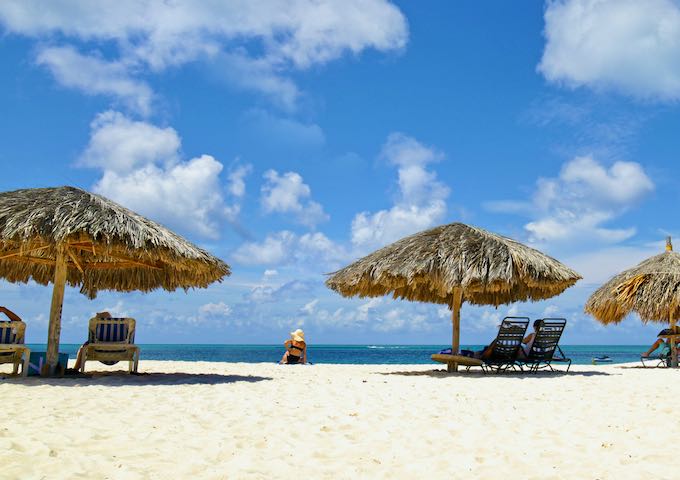
Eagle Beach in Oranjestad. The best time to go to Aruba is from April to August.
Best Time for Good Weather : Mid-February to May. Best Time for Sightseeing : April-May. Best Time for Honeymoon : April-August. Best Time for Saving Money : September-October. Best Time for Families : June-August. Best Time for Partying : January-February. Best Time for Snorkeling : Mid-April to August. Best Time for Wind-Surfing : May-July.
- Best Time to Visit Aruba : The best time to visit Aruba is from April to May, after the island’s peak tourist season has ended and before the hot summer temperatures set in. April and May get the least amount of rain and fall right before the beginning of the hurricane season, which rarely affects Aruba, but do bring increased precipitation. Early fall is also a good time to visit to take advantage of the low season rates and fewer crowds, but these are the rainiest months of the year and have the highest chances of tropical storms.
- Best Time for Families : When planning around the kids’ school schedule, summer break is the best option for Aruba as it is still considered off-season. From June to August, it is possible to find travel discounts and hotel rates are typically 20-50% cheaper than those during peak season. While the rest of the Caribbean islands experience hurricanes and tropical storms during these months, Aruba gets less than 470mm of rain a year, and a steady breeze from the trade winds helps moderate the summer heat, thus making these ideal conditions for sightseeing and sunny beach days with the kids.
- Best Time to Book Hotels in Aruba : The top hotels and resorts, especially those along the beach or the rooms with optimal views of the beach, get booked far in advance during high season. For a vacation between December to March, search 6-12 months ahead to find better prices and selection for hotels along Palm Beach and Eagle Beach. From April to August, due to the end of the high season and the advent of hurricane season, last minute hotel deals can be found within 3 months or less before your trip. If you’re planning to visit between September and November, make reservations 3-6 months in advance.
- Best Time to Save Money : Many travelers avoid Aruba from September to October due to the trade winds dying out and the average daily temperature soaring to 30°C. With no crowds and plenty of hotel deals, early fall is an ideal time to visit if high temperatures don’t bother you. Just pack high SPF sunscreen, lightweight clothing, a light rain jacket, and a waterproof bag for your valuables. Beaches are rarely crowded, activities aren’t fully booked, same-day reservations are possible at restaurants, and popular hotels can be booked for 20-50% less as compared to the high season.
- Best Time for Partying : Aruba celebrates its annual Carnival for 6 weeks from January to February with a lot of events, parades, parties, contests, concerts, and dancing taking place in multiple districts and cities. The biggest events like the Grand Parade and the Grand Children’s Parade all take place in Aruba’s capital of Oranjestad. Be prepared to pay peak prices for hotels during this time and book accommodations early.
Aruba Travel Seasons
- High Season (December to March) : Winter is the high season in Aruba, with January to February being especially busy due to the Carnival. December to March is the most popular time of year to visit as holidays begin and the cold weather sets in up in the northern hemisphere. Although Aruba experiences consistently warm temperatures and a relative lack of tropical storms, the weather from November to March makes ideal conditions for travelers seeking warmth and sun. Aruba’s annual 6-week Carnival features street parties and celebrations that visitors can take part in all over the island. With average daily temperatures of 27-28°C, less rain, cooler evenings, and mild but warm and sunny weather, winter sees the biggest crowds and flocks of tourists arriving in Aruba. For sightseeing and visiting attractions like the Donkey Sanctuary, it is recommended to arrive early, close to opening hours, to avoid peak crowds.
- Shoulder Season (early-April to August) : There is some debate as to whether there is a shoulder season in Aruba or if there is only a high season from December to early April and then a low season from early April to November. There is also a lack of consensus as to whether the high season begins in December or September. We have considered the shoulder season as running from April to August with winter holiday visitors leaving by March-end, though the island does not experience a large dip in visitors like in the fall. Temperatures tend to be higher from April to August but trade winds moderate the heat, keeping the climate comfortable and enjoyable. There are still plenty of events to participate in during the summer. The last week of April has King’s Day celebrations, the last week of May can bring some crowds with the 5-day Soul Beach Music Festival, and the Aruba Hi-Winds Kitesurfing Competition takes place in late June-early July.
- Low Season (September to November) : Fall marks the tail end of the hurricane season, which is also the low season in Aruba. September to November-end generally brings the lowest rates and fewest visitors. October and November are some of the wettest months of the year but usually, rain showers only last a few minutes before moving on, so activities and beaches can still be enjoyed with fewer crowds. Hotels often offer significant discounts ranging from 20-50% as compared to the high season. However, hotels sometimes use the low season for new construction or renovation, so make sure to call and ask before booking your room. Some activities and attractions scale back a bit during the low season, so a tour operator may offer only 3 excursions per day instead of 6, and restaurants might close an hour earlier. Make sure to plan ahead and confirm activities and reservations with these potential alterations in mind.
Aruba Weather by Month
Out of around 700 islands in the Caribbean, Aruba consistently has the least amount of rainfall while enjoying a tropical climate all year round with average daytime temperatures of 29°C. The trade winds temper the heat and blow nearly all year long, providing relief from the muggy humidity. The eastern coast of Aruba is affected by strong sea currents while the western and southern coasts are more sheltered. However, as it is a flat island, the weather does not vary from coast to coast.
- Aruba Weather in January : January is the coldest month of the year in Aruba but with an average daily high of 27°C and a mild low of 24°C, it remains quite comfortable. Unlike islands in the northern Caribbean which can become quite cool in the winter months, especially in the evenings, Aruba stays relatively hot all year round. Precipitation is mild in January as the rainy season begins to taper off. Around 40mm of rain can be expected over an average of 8 days. Sunshine is plentiful with 8 hours daily, giving plenty of time to enjoy the beach, and swimming conditions are ideal as well, with the water at about 26°C. Bring tropics-friendly, light clothes made of cotton or linen, and possibly a light raincoat for thunderstorms. As the coldest month of the year, a light sweater and long pants for the evening are also recommended. (Average Max Temperature: 29°C. Average Precipitation: 40mm.)
- Aruba Weather in February : The weather in February remains quite similar to January, with a small increase in the average temperature and a marked decrease in precipitation. The average daily high temperature in February is 28°C with a low of 24°C. Mid-February marks the beginning of the least rainy period of the year, with only about 5 rainy days expected all month. The sun shines for 8 hours a day and the sea temperature remains a comfortable 26°C – ideal conditions for spending time at the beach and swimming in the sea. Pack as you would for January, remembering those light layers for the cool evenings and sunscreen for strong UV rays during the day. The sunshine in Aruba is very strong and the constant breeze from the trade winds is deceiving. Sunscreen is imperative for everyone. (Average Max Temperature: 29°C. Average Precipitation: 20mm.)
- Aruba Weather in March : March is one of the driest months of the year with only 2 days of rain and the onset of warmer temperatures. The average daily high remains at 28°C but the mercury often rises to 30°C, while the average low increases by a degree to 25°C. The sunshine remains at around 8 hours per day and the sea temperature remains at 26°C, offering a chance to cool off. Pack light tropics-friendly clothing, swimsuits, and sun protection, including sunscreen with SPF of 35 or higher as UV rays are very strong in Aruba. (Average Max Temperature: 30°C. Average Precipitation: 10mm.)
- Aruba Weather in April : April is the other driest month of the year and its weather is the same as in March, except the maximum high can rise by 2°C, ushering in the beginning of summer and the end of spring with the promise of hotter temperatures and higher humidity. The average daily high remains at 28°C with a low of 25°C and only 2 days with precipitation are expected all month. April brings ideal conditions to enjoy sunny beach days with 8 hours of daily sunshine and the sea offers a chance to cool down at 26°C. Pack as you would for March: light summer clothing, plenty of swimsuits, and various forms of sun protection, including high-SPF sunscreen. (Average Max Temperature: 32°C. Average Precipitation: 10mm.)
- Aruba Weather in May : May is a great month to visit Aruba as the crowds are much smaller and hot summer weather is just around the corner. The average daily high remains at 28°C but can rise up to 32°C throughout the month. The average low increases to 26°C, so booking a hotel with AC is recommended to remain comfortable at night. Precipitation barely increases in May, with only 2 days of rain expected but 5mm more than in April. Bring loose, lightweight clothing as well as sunscreen, sunglasses, and a hat to enjoy the 8 hours of daily sunshine. With sea temperatures at 27°C, pack a few bathing suits to swim in the sea as well as at the hotel. (Average Max Temperature: 32°C. Average Precipitation: 15mm.)
- Aruba Weather in June : June is the beginning of the hot summer weather in Aruba, with a maximum temperature of 33°C and a daily average of 29°C. The trade winds keep the climate comfortable, though, by providing a strong breeze throughout the month. The average low remains at 26°C and the number of daily sunshine hours increases to 9, providing more time to enjoy swimming in the sea, which remains a balmy 27°C. June is also the beginning of the hurricane season, which runs till November and is at its peak from August to October. Although there is a real danger from tropical storms and hurricanes, they rarely hit Aruba as the island is located on the southern edge of the hurricane belt, and hurricanes tend to remain to the north. The most recent hurricanes to have hit Aruba were Omar in October of 2008 and Felix in 2007. However, if planning a trip during the hurricane season, checking the weather forecast and purchasing trip insurance is recommended. Despite being the beginning of hurricane season, precipitation remains quite low in June with only an average of 3 days with rain throughout the month. Pack as you would for May: light summer clothing, open-toed shoes and sandals for the beach, plenty of swimsuits, and various forms of sun protection, including high-SPF sunscreen. (Average Max Temperature: 33°C. Average Precipitation: 20mm.)
- Aruba Weather in July : July is one of the warmest months of the year in Aruba, but the trade winds continue to provide a cooling breeze which can be deceiving when it comes to UV rays. With 10 hours of daily sunshine, regularly applying sunscreen, especially after swimming, is important to protect against sunburn. July also brings a slight increase in rainfall, with an average of 5 days with rain. However, showers tend to be very short, providing a reprieve from the heat and leaving plenty of sunshine to enjoy. The average daily high remains at 29°C and the daily night-time low averages 26°C. Bring loose, lightweight clothing, sun protection, open-toed shoes, and sandals. With sea temperatures at 27°C, pack a few bathing suits to swim in the sea as well as at the hotel. (Average Max Temperature: 33°C. Average Precipitation: 30mm.)
- Aruba Weather in August : August is one of the hottest months of the year with an average daily temperature of 30°C, with highs reaching 34°C. The average night-time low increases to 27°C, so it’s important to book an air-conditioned room in a hotel with a temperature-controlled pool if you want to keep comfortable during those warm nights and scorching days. Packing rain gear and a waterproof bag for valuables is also highly recommended as August has some of the highest chances of tropical storms. Despite the chances of tropical storms being higher, precipitation is lower in August than in July, with an average of 4 rainy days. The number of average sunshine hours decreases to 9, still leaving plenty of time for outings, excursions, and sunny beach days. The sea temperature increases to a warm and balmy 28°C, so swimming at the cooler hotel pool might provide better relief from the heat. Packing good sun protection and carrying a water bottle during the day to stay hydrated and protected from sun damage is important as UV levels are high. Pack tropics-friendly clothing, sandals, and bathing suits. (Average Max Temperature: 34°C. Average Precipitation: 25mm.)
- Aruba Weather in September : September marks the beginning of the rainy season in Aruba, which is also the low season for tourists. The average daily temperature is 30°C and with a drop in the trade winds, there is less of a breeze to temper the heat. The average daily low remains the same as August at 27°C, so booking a hotel with air-conditioned rooms is important for comfortable sleeping conditions. The amount of precipitation increases in September, though the rain falls in short bursts over 4 days, leaving the rest of the month dry and sunny with 9 daily sunshine hours to enjoy swimming in the sea, which remains balmy and warm at 28°C. Pack as you would for August: light tropics-friendly clothing as well as some moisture-wicking clothes, sandals, and sun protection. (Average Max Temperature: 33°C. Average Precipitation: 45mm.)
- Aruba Weather in October : October is the other month when the chances for tropical storms and hurricanes are the highest in Aruba. Although Aruba is less at risk from hurricanes and storms than other Caribbean islands, monitoring weather reports and purchasing trip insurance is highly recommended. This increased chance of storms also brings double the precipitation than September with an average of 7 days of rain, so pack a light rain jacket, rainproof shoes, and a waterproof bag to protect valuables in case you get caught in the rain. October is however considered the best month for swimming in the sea with the water temperatures being the highest of the year at 29°C. The average daily high in October drops one degree to 29°C, as does the average daily low to 26°C. However, with a drop in the trade winds, the heat is not tempered, so booking a hotel with an air-conditioned room is recommended to remain comfortable at night. The number of daily sunshine hours decreases to 8 but UV rays remain high making sun protection imperative. Also bring tropics-friendly, lightweight clothing, and bathing suits along with rain gear and sun protection. (Average Max Temperature: 32°C. Average Precipitation: 80mm.)
- Aruba Weather in November : November marks the end of the hurricane season in Aruba and the beginning of the shoulder season as more travelers begin to flock to the island country to escape colder temperatures up north. The average daily high temperature drops to 28°C while the night-time low remains at 26°C. November is the wettest month of the year with an average of 11 days of rain, so plan to visit indoor attractions and activities, though there is still a good chance of not seeing any rain as the precipitation is quite moderate in comparison to other Caribbean islands. The average sea temperature in November is 28°C, making swimming comfortable and warm, so make sure to bring your bathing suit, sandals for the beach, sun protection as UV rays are high, and a light rain jacket, rainproof shoes, and a waterproof bag to protect valuables in case you get caught in the rain. (Average Max Temperature: 32°C. Average Precipitation: 95mm.)
- Aruba Weather in December : December is the second rainiest month of the year with 11 days of precipitation and also the first month of winter, which is reflected in the slightly lower temperatures. The average daily high hovers around 27°C, dipping down to a low of 25°C. Despite the high precipitation, the sun shines for an average of 7 hours a day, leaving plenty of time for the beach and excursions. Similar to October and November, make sure to pack a light rain jacket, rainproof shoes, and a waterproof bag to protect valuables in case you get caught in the rain, as showers tend to be on the heavy side in December. The sea remains warm and comfortable at 27°C, so pack a few swimsuits as well as sunscreen as UV rays are strong in Aruba even in December. Bring summer clothing, shorts, t-shirts, and dresses along with a few light layers for cooler evenings. (Average Max Temperature: 31°C. Average Precipitation: 80mm.)
Aruba Holidays, Events, and Festivals
The Aruba Carnival runs for 6 weeks across January, February, and/or March each year, and has a jam-packed schedule of spectacular parades, musical shows, elections, contests, and street parties featuring colorful floats and costumes, traditional and international music by DJs and bands, and lots of local food and drinks. The schedule is published on November 11 each year.
Aruba in January
- New Year’s Day (Jan 1) – New Year’s Day is an official holiday in Aruba and most businesses, banks, and schools are closed. One way to commemorate the new year is to take the “New Year’s Plunge” or “Unox Nieuwjaarsduik” at Moomba Beach in Noord. At 12 midnight, hundreds of swimmers run into the sea together to mark the new year.
- Torch Parade – The Torch Parade is the first parade of the annual Aruba Carnival and takes place in Oranjestad on the first Saturday of January.
- Prince & Pancho Election – Aside from parades, the Aruba Carnival hosts a range of exciting elections and contests. The Prince and Pancho Election is an event that is part of the annual Aruba Carnival, taking place in the Carnival Village in San Nicolas in early January. The Prince and Pancho are 2 figures in Aruba’s carnival tradition chosen for their comedy, personality, educational content, and audience popularity.
- Parada di Blaas – A balloon parade in San Nicolas.
- Tumberito Festival – A children’s Tumba music festival that takes place in the Carnival Village in San Nicolas. It is a diminutive of the Aruba Grand Tumba Festival. Tumberito Festival offers an opportunity for children and young participants to display their Tumba music talents.
- Betico Croes Day (January 25) – Aruba commemorates the birthday of the late Aruban political leader, Gilberto Francois (Betico) Croes. This official holiday features several cultural, sports, and musical events throughout the island and there is a national celebration at Plaza Betico in Oranjestad. As an official Aruban holiday, you can expect shops, gas stations, and supermarkets to close early or stay closed the entire day.
- Caiso & Soca Monarch (January-end/early Feb) – The Caiso & Soca Monarch consists of 3 days of Calypso & Roadmarch music (internationally known as Soca music instead of Roadmarch) contests with 2 days of pre-finals and a spectacular grand finale on the last day. The contest takes place at the Carnival Village in San Nicolas. Contestants compete against each other for the ultimate title of King or Queen of Caiso & Soca music.
Aruba in February
- Super Saturday Soca Finals – Held at the Carnival Village in San Nicolas, it is the final night of the Soca category of the Aruba Caiso & Soca Monarch competition.
- Grand Tumba Contest – Held at the Carnival Village in San Nicolas, this contest features contestants performing Tumba music. Tumba is considered to be a music genre founded on the ABC-islands and is a true part of Aruba’s culture. Although Tumba isn’t part of the carnival itself, the rules for the Tumba contest dictate that the lyrics used in the song have to do with the carnival in order to honor the celebrations. The winner of the contest is crowned Tumba King or Queen. Tumba artists sing in Papiamento only.
- Children’s Parade Noord – The district of Noord hosts its own children’s parade during the Carnival. Children representing elementary schools and social clubs, as well as babies, participate in the parade and wear different themed costumes with colorful balloons, adornments, and headpieces. The Children’s Parade Noord takes place between 1-5 pm from Bubali Commercial Center to Centro Di Bario Noord.
- Transfer of Command – Usually held at Bestuurskantoor, the government house in Oranjestad, it is a ceremony where the Prime Minister of Aruba passes over the command or administration of the island to the Prince & Pancho of Aruba’s Carnival along with a symbolic “key to the islands”. From this point forward, their “court” rules for the duration of the Carnival until its end at midnight on Ash Wednesday.
- Jouvert Morning – Popularly known as the “pajama party”, thousands of people gather in San Nicolas to follow the various live music caravans that parade down the city streets playing soca and calypso music from 4-10 am.
- Lighting Parade – An evening carnival parade with thousands of tiny lights incorporated into costumes, road pieces, and floats. Live bands accompany the various participating carnival groups playing live music for the dancers and participants. Held in downtown Oranjestad, the parade begins at 8 pm and ends at 2 am.
- Grand Children’s Carnival Parade (mid-February) – The biggest children’s parade of the Carnival takes place in downtown Oranjestad. Beginning at the Avenida Milo Croes and ending at Wilhelminastraat, the Grand Children’s Parade takes place from 2-6 pm. Hundreds of children from all the Carnival groups participate in colorful costumes and dance in the parade.
- Kiwanis Masquerade Ball – A masquerade ball hosted by the Palm Beach Aruba Kiwanis Club at the Renaissance Convention Center to raise money for the less fortunate. The ball takes place at night, usually from 9:30 pm to 2:30 am.
- San Nicolas Grand Parade – A prelude to the Grand Carnival Parade in Oranjestad. Extravagantly decorated themed floats are accompanied by dancers. The parade runs through the streets of San Nicolas from 12-5 pm.
- Aruba’s Grand Parade – The largest carnival parade is the Grand Parade through Oranjestad, held on the Sunday before Ash Wednesday. This parade includes music as well as floats and costumes in various designs. The event starts at 12 pm and continues until 6 pm. This is the largest and longest of all the Aruba Carnival parades, with the most spectators and participants.
- Burn Out Monday/Carnival Monday – Carnival Monday is an official holiday that takes place after the weekend of the grand carnival parades and the Monday before Ash Wednesday. On this official day of rest, everyone can recoup and recover from all the parades and festivities that took place in the past 2 months. Most facilities in Aruba will close early or stay closed the entire day.
- Old Mask Parade & Burning of King Momito (February 25) – This event marks the end of the carnival season in the district of San Nicolas and the beginning of Lent. It starts with a parade at around 7 pm and ends at midnight with the symbolic burning of King Momito (little Momo), the spirit of Aruba’s carnival.
Aruba in March
- National Anthem & Flag Day (March 18) – Aruba’s National Day is also an official holiday. Arubans celebrate the Status Aparte, national anthem, and flag. Festivities include several cultural, sports, and musical events throughout the island and there is a national celebration in the evening at Plaza Betico in Oranjestad. You can expect shops, gas stations, banks, and supermarkets to close early or stay closed the entire day.

Aruba in April
- Good Friday (variable dates) – An official holiday in Aruba, Good Friday forms the beginning of the Easter long weekend and the start of the Holy Week. A special event is held each year at the church in Dakota, starting at 10 am.
- Easter Monday (variable dates) – Part of the Easter holiday weekend and an official holiday in Aruba, when shops and banks might remain closed. Expect Eagle Beach, Hadicurari Beach, and Baby Beach to be packed with tents and improvised kitchens as Beach Camping is an Aruban Easter tradition.
- King’s Day (April 27) – An official Aruban holiday, Aruba celebrates the birthday of the King of the Kingdom of the Netherlands on April 27th. An official government ceremony is held in honor of HM King Willem-Alexander at Wilhelmina Park in downtown Oranjestad followed by flea markets, kite contests, sporting events, and other activities at different community centers. You can expect several facilities to close early or stay closed the entire day.
- Island Fest (last week, monthly) – Island Festival takes place during the last week of each month from 7-10 pm in San Nicolas City. Festivities include art, music, and dance shows highlighting the history of San Nicolas, local foods, and popular musicians and performers.
Aruba in May
- Labour Day (May 1) – Labour day is an official holiday in Aruba and commemorates the achievements of the labor movement.
- Ascension Day (variable) – A Christian holiday that commemorates Jesus Christ’s ascension to heaven. Ascension Day is observed primarily in Catholic and Anglican churches around the island. Ascension Day is also an official Aruban holiday.
- Soul Beach Music Festival (May 25-31) – A large music festival with beach parties, comedy shows, pool parties, block parties, and music concerts featuring world famous artists.
Aruba in June
- Aruba Summer Music Festival (variable dates) – A 3-day music festival featuring award-winning musicians and local DJs and bands. The festival takes place at Aruba’s Harbor Square Arena and draws thousands of locals and tourists.
- COOLinary Food Festival (June 1) – Hosted at the Renaissance Marketplace in Oranjestad, a variety of dishes from different participating restaurants are offered at a “cool” price along with musical entertainment.
- Dera Gai (June 24) – This cultural celebration is observed on the Feast of St. John the Baptist to thank the gods for the good harvest year and to request blessings for the following year’s harvest. This celebration dates back to 1862. Festival activities include a special festive song, bright yellow and red costumes, traditional dances at various community centers, and fires burnt island-wide on St. John’s Day as an homage to the bonfires built many years ago to communicate the arrival of the holiday.
- Aruba International Triathlon (June-end) – International competitors participate in a triathlon comprised of a 1.5km swim, 40km bike race, and 10km run. Beginners can test their endurance in the smaller triathlon that includes a 750m swim, 20km bike race, and 5km run. Beginning at Eagle Beach, more than 100 athletes participate in this event hosted by the Aruba Triathlon Association.
Aruba in July
- Aruba Hi-Winds Kitesurfing Windsurfing Tournament (early July) – Said to be the largest water sports event of its kind in the Caribbean, this 4-day tournament takes place on Palm Beach annually. International and local windsurfers and kitesurfers come to participate in a variety of races including semi-long distance for kite juniors, kite freestyle, windsurfing slalom races, windsurfing freestyle competition, kite boarding, and windsurfing long distance races.
- Aruba Symphony Festival (July/August) – An international event where every year, first-class musicians from more than 15 countries perform in Aruba over 9 days. Events include full-house concerts, workshops, conferences, and classes led by celebrated international artists.
Aruba in August
- Aruba I Do Vow Renewal Ceremony – Held on the beautiful Eagle Beach, couples from across the world come with their families and friends to renew their vows amidst a romantic atmosphere and stunning sunset with free champagne, hors d’oeuvres, and music.
- Annual International Regatta (August-end) – Held at the Surfside Beach, this annual 3-day sailing competition features international yachts, catamarans, sunfish, kitesurfers, and windsurfers during the day, with music and beach parties in the evening.
Aruba in September
- Turibana to Santa Cruz 10K Race : An open road race that starts at 5:30 am at Panaderia del Campo in Noord and finishes at the Betico Croes Sports Complex in Santa Cruz.
- Aruba Art Fair (variable dates) – An annual, 3-day art fair in San Nicolas where international and local artists create street art and graffiti. The fair also features music, dance, poetry, art expositions, local food and beverages, and a variety of live entertainment.
- Aruba Reef Care Project (variable dates) – An annual beach and reef clean up event that brings together more than 800 local and global participants. This event is the island’s largest volunteer initiative and serves as a great eco-tourism opportunity.
Aruba in October
- Shoco Artfest Aruba (variable dates) – Launched in 2019 and hosted at MotorWorld Aruba, this festival highlights the creative community in Aruba by featuring wood and rock sculptures, airbrush and paintbrush art, art on wheels, bicycles and trucks, music entertainment, tattoo demos, and a silent auction with proceeds going to the Casa Cuna Foundation.
- Bartender’s Brawl (October-end) – An annual contest in Oranjestad showcases Aruba’s top bartenders creating original craft-cocktails for attendees who vote for the People’s Choice winner. A panel of judges also choose a Judges’ Choice Winner. The event ticket includes 8 locally inspired cocktails and hors d’oeuvres.
Aruba in November
- Carnival (November 11) – Carnival season officially starts each year at 11:11 am on the 11th of November. The Carnival Schedule, including all contests, parties, and parades for the upcoming season, is officially announced during a ceremony. From November 11th till December 31st, participants have time to prepare for the Carnival. All the contests, parties, and parades start after the New Year’s celebration, with the first parade – Torch Parade – on the first Saturday in January. The last parade always takes place on the weekend before Ash Wednesday.
- Sinterklaas (mid-November) – Sinterklaas is a Dutch holiday figure representing Saint Nicholas, a 3rd-century bishop who became the patron saint of children and also gave out gifts. Saint Nicolas arrives in mid-November with his “Zwarte Pieten” (helpers) via boat at the Aruba Ports Authority in Oranjestad, followed by a parade with activities and music for children. During the parade, Sint and his helpers greet the children and reward them with gifts and candy for their good behavior. On the days leading up to his birthday on December 6th, Sinterklaas and his helpers make appearances at events sponsored by schools and businesses all across the Island. Other celebrations take place on December 5th – the night before his birthday – but the harbor arrival and parade are the main public Sinterklaas events.
- Aruba Open Beach Tennis Championships – An international 8-day event drawing participants from all over the world to compete in singles, mix doubles, national and team cups, youth, master, and doubles beach tennis tournaments.
- Carnival Costume Show (November-end) – The first event of the carnival, a show featuring costumes from the previous year’s carnival takes place at AMICE in Oranjestad from 6-9 pm.
Aruba in December
- Winter Wonderland Christmas Market (December 1-23) – The biggest Christmas Market in Aruba is held at the Renaissance Marketplace in Oranjestad. The space is decorated with Christmas lights, a Christmas tree, and wooden Christmas cottages with booths for local vendors to sell a variety of unique products. Activities include meet-and-greet with Santa and his elves, an arts and crafts corner for kids, an ice-skating rink, musical entertainment, and a shoppable Christmas Village. The market runs from December 1-23 from 6-10pm.
- Cadushi Festival (late December) – A market festival to encourage supporting local businesses and practice mindfulness. The festival includes wellness activities, live music, and food stalls.
- Christmas Day (December 25) – Most locals repair and paint their homes before decorating with Christmas trees, lights, and decorations. A new tradition that was born a few years ago is the decoration of traffic circles around the island. Each circle is decorated by a local company or organization and is being opened with a small ceremony as soon as the decorations are completed. It’s worth driving around the island to admire all the beautifully transformed homes, offices, and traffic circles. Gaita bands bring the traditional sounds of Christmas during parties and festivities. From November till Christmas, you will find Gaita bands in shopping malls, restaurants, stores, and private residences.
- Boxing Day (December 26) – An official holiday in Aruba, originating from colonial days as a Dutch tradition. All offices and stores will be closed but hotels, their facilities, and most restaurants and bars will be open as normal.
- Dande Festival (December 27) – Aruba’s biggest traditional music event brings together more than 50 singers, accompanied by musical groups, to present original compositions and traditional Dande songs. The Dande groups are traveling musicians who bless local families during the New Year – a tradition that started around 1880 when house slaves in Aruba were liberated. The festival celebrates a local tradition that is unique to Aruba.
- New Years Eve (December 31) – New Years Eve is celebrated with a number of traditions as well as with endless firework shows everywhere. Almost every hotel and resort hosts a special New Year’s Eve dinner or a party. Check with your hotel to see what offers and celebrations they have. Most events and restaurants are booked pretty fast for this day so book early. A common Aruban tradition on the day leading up to New Year’s Eve is setting off a pagara, a long string of firecrackers. Pagaras will be set off all around the island and mark the end of the year for local businesses. According to tradition, the firecrackers will also keep away any evil spirits.
- Where to Stay in Aruba
- Best Hotels for Families in Aruba
About Santorini Dave

Page not translated
The exact page you are looking for has not been translated.
Confirm Selection
This site uses cookies. Some are essential while others improve your browsing experience and allow us to advertise. For more info visit the privacy policy page.
Allow inessential cookies for:
Your preferences have been updated.
Aruba's Top-Rated Snorkeling Beaches
Aug 29, 2016, angelo limon.
Our excellent weather, crystal-clear waters and fantastic sea life make Aruba one of the best islands to go snorkeling on in the entire Caribbean.
Aruba is home to the best snorkeling in the Caribbean, with 6 fantastic destinations that are easily accessible and exceptionally beautiful. If you’re a fan of the liberating feeling you get when exploring the underwater world with your mask and fins, then it’s time to explore Aruba’s incredible snorkeling opportunities. Our excellent weather, crystal-clear waters and fantastic sea life make Aruba one of the best islands to go snorkeling on in the entire Caribbean region, and this post highlights 6 snorkeling spots you should definitely visit during your next trip to the One Happy Island. There’s a snorkeling video at the end of this post and a fish ID guide you can download to help figure out what you see on your next snorkeling foray. Let’s dive in….
1. Arashi Beach
Snorkeling in Aruba doesn’t get much better than this! Located on the northern coast of the island – Arashi beach is the perfect snorkeling beach for beginners due to its shallow water and sandy bottoms. There are no snorkel rental vendors nearby, so do bring your own gear. The fish at Arashi Beach are small and colorful, with a few larger ones in between. You’ll see a lot of palometas roaming near the shores, as well as cute bottom feeders.
Arashi beach is easily accessible by public transport and it has a very large parking area . Shades are provided by makeshift huts, but make sure to get there early in the morning, especially on Sunday, when it is a favorite beach for locals as well. On windy days, you can even catch a few waves here with your bodyboard! When you are hungry make sure to stop by the Faro Blanco restaurant at the newly restored California Lighthouse .
2. Boca Catalina
Another excellent Caribbean snorkeling experience can be experienced at Boca Catalina , which is a popular stop for snorkeling tours because of the variety of sea life located here, including palometas swimming near the shores, trunkfish and sergeant majors. When you venture a bit deeper into the sea you will see some big colorful fishes and corals, and don’t be surprised if you spot a turtle at Boca Catalina swimming in front of you. Boca Catalina in Aruba is a small, secluded bay in the Malmok Beach area. The white sandy beach is accessible by steps and ample parking space is available alongside the main road.
3. Catalina Cove
Not far from Boca Catalina you’ll find Catalina Cove, one of Aruba’s best snorkeling beaches featuring beautiful white sands, clear waters and plenty of fish to admire. The best way to get there is by entering the water at Boca Catalina and then to swim up north. Popular fishes at Catalina Cove are blue tangs, bar jacks and barred hamlets. The fishes at Catalina Cove are known for hiding near rocks so you’ll need to swim along the edge of the coves to see these beautiful creatures.
4. Tres Trapi
Source picture: http://nouw.com/matildadjerf/tres-trapi-24483681
Next to Catalina Cove is another popular snorkeling spot known as Tres Trapi, which is one of the most unique snorkeling spots in the Caribbean. It’s called Tres Trapi, “3 Steps”, because of the rock made stairway to the water. While there aren’t many fish here compared to the other snorkeling beaches on this list, there are a lot of colorful sea stars found all throughout Tres Trapi. These beautiful creations make Tres Trapi a unique and attractive snorkeling spot.
5. Malmok Beach
Not far from the last hotel near the high rise area is a long stretch of beach called Malmok , which offers some of the best snorkeling in Aruba. Malmok features numerous coves and plenty of fish – perfect for snorkeling! Around Malmok beach you’ll find fish like sergeant majors, bluehead wrasse’s, banded butterfly fish, trunkfish, and french angelfish to name a few. Be careful when entering the water, due to a lot of sharp rocks near the shores. Malmok beach also has a lot of sea urchins, so be sure to watch your step if you plan to stand in the water without fins.
6. Mangel Halto
Mangel Halto is located near the city of Savaneta, the oldest town of Aruba and the former capital as well. It’s not one of Aruba’s most well-known snorkeling beaches, but it’s one of the most beautiful places on our island, and entirely worth visiting. It is a perfect sunning and snorkeling spot in Aruba, with calm, shallow waters and rich sea life supported by an ecosystem of mangroves. Sharp rocks at the seashore can make entering this beach a little difficult, but as soon as you pass the rocky area, you’re bound to discover a beautiful, incredible, underwater world. You’ll see parrotfishes, squid, butterfly fish, yellowtail snappers, sergeant majors, blue tangs, sand divers, and even stingrays, deep water gorgonians, sponges and anemones if you go into the deep blue. The reef plunges to depths of 110’ where octopi, morays, and barracuda abound. Just be sure to watch out for strong currents at Mangel Halto, as this one of Aruba’s beaches that the sea can get rough!
Think twice about snorkeling at Mangel Halto if you’re not a good swimmer, but if you are, then make sure that you’ve got this spot on your list of the top destinations because it’s a beauty!
Snorkeling in Aruba Video
Watch a short video of the fish that can be found alongside the seashores of Aruba.
The Aruba Fish Identification Guide can be purchased here.
Which snorkeling spot on this list are you going to visit on your next trip to Aruba?
Best Snorkeling Spots in Aruba, Best Snorkeling Spots in the Caribbean, Snorkeling in Aruba
Related Articles

Start Booking Your Trip To Aruba
- Deals & Offers
Check-in Check-out Search
Depart Return Select 1 Adult 2 Adults 3 Adults 4 Adults 5 Adults 6 Adults 7 Adults 8 Adults 9 Adults Passengers Origin City or Airport Search
Arrival Departure Search
From To Search
We’re just getting started with the amazing effects Aruba has to offer. Dig into your trip details below to unlock a Caribbean experience that will fill you with sunshine and send you home with a happy afterglow that never fades.
Plan Your Effect
myAruba planner
Save your favorite places and experiences to a custom itinerary you can manage while you're visiting the island: Start Planning
9 Best Snorkelling Beaches in Aruba
Aruba is known for its crystal-clear turquoise waters, vibrant coral reefs, and smooth sandy beaches.
I can verify that it’s true after snorkelling along Aruba’s beautiful coastline.
From Baby Beach to Boca Catalina, there are many beaches to choose from in Aruba.
Let’s get right into the best beaches in Aruba for snorkelling.
This post may contain affiliate links. We may receive a small commission (at no extra cost to you) on qualifying purchases so we can continue to create helpful content. Thank you, and we appreciate it. See our disclosure policy for more information.
Table of Contents

1. Mangel Halto Beach
Mangel Halto is a hidden gem among Aruba’s snorkelling spots. It’s nestled in a quiet area on the southeastern coast on the way to San Nicolas .
This small beach is a local favourite , featuring dense mangroves and shallow water. It’s more on the unique side of Aruba .
The reef is quite close to the shore , making it an easy swim through the clear waters. Beginners need to stay inside the reef where the waters are calmer.
While the beach itself is undeveloped, the underwater scenery is vibrant with colourful coral and schools of tropical fish . I saw multiple sea urchins while snorkelling at Mangel Halto.
Mangel Halto Beach is easy to reach by car, taxi, or public transportation. And for those who enjoy scuba diving like myself, you can scuba dive off the shore here.
There are no washrooms, but there are cabanas where you can put your belongings while snorkelling. Water shoes are recommended to protect your feet from the rocks in the water.
🤿 Discover Mangel Halto with this guided snorkelling tour

2. Baby Beach
Tucked away in the southern tip of Aruba , Baby Beach is a crescent-shaped lagoon that is a must-visit for snorkelling enthusiasts.
Its shallow waters make it an ideal spot for beginners or for those who simply want a relaxing snorkelling experience.
It’s a popular spot on many Arikok and Aruba island tours for good reason. The sea is calm and warm, with the water depth only reaching five feet at the most. Most of the water is only waist-deep .
You can see all kinds of tropical fish, including parrotfish, barracuda, and angelfish. The relaxing snorkelling experience it offers qualifies it as one of the best snorkelling beaches in Aruba.
Baby Beach was one of my favourite spots to spend an afternoon on my week in Aruba , snorkelling and sunbathing.
For safety, stay inside the lagoon . Outside, the waters are rougher and unsafe for snorkelling.
For amenities, you’ll find a small snack bar, cabanas for rent, and a resort that is currently under construction.
You can drive, taxi, or take public transportation to reach Baby Beach. There’s a parking lot available for those driving.
🤿 Visit Baby Beach, Arikok National Park and more on this Aruba Island tour

3. Eagle Beach
Located in the heart of the island, Eagle Beach is another gem on the Aruban coastline known for its snorkelling.
The crystal-clear waters offer great visibility , allowing snorkelers to enjoy Aruba’s vibrant marine life.
You can find a variety of tropical fish, coral formations, and possibly even a sea turtle if you’re lucky!
The wide, white sandy beach is perfect for sunbathing and long walks after snorkelling.
It’s accessible by car, taxi, or public transportation, and there’s ample parking available.
On-site amenities include palapa-shaded picnic areas, and convenient beachside bars and restaurants .
You could spend a whole day here there are so many things to do .
Swim at the beach, go snorkelling, enjoy parasailing , dine at one of the restaurants, and watch the sunset.
So, pack your snorkelling gear and prepare for an unforgettable adventure at Eagle Beach, one of Aruba’s top snorkelling beaches!

4. Boca Catalina
One of the best beaches in Aruba for snorkelling is Boca Catalina , where you can see plenty of colourful fish and coral.
Boca Catalina is located in the northeast corner of Aruba island, a 10-minute drive from the popular Eagle Beach and Palm Beach areas. You can drive there yourself or go on a boat tour .
The coral reefs at Boca Catalina are fairly shallow and easy to reach , and this is one of the best places on the island to spot sea turtles.
Morning is the best time to see turtles before the daily boat tours show up and it gets busy.
I visited shortly before sunset and didn’t see any turtles during my snorkel but I did see sea urchins which was pretty cool! When David & Intan visited Boca Catalina early in the day, they saw two sea turtles right away!
Wear water shoes since the entry is rocky in some places, particularly on the northern side of the beach.
Parking is limited at Boca Catalina, but since it’s still not well known, you can usually find a parking space.
There are palapas (shelters) on the southern end of the beach, where you can relax in the shade when you are not swimming. Overall, it’s a hidden gem in Aruba !
🤿 Discover Boca Catalina on this guided snorkel tour

5. Tres Trapi
Tres Trapi is a great snorkelling beach in Aruba. Located 10 minutes north of Palm Beach, it’s slightly off the beaten path and offers a quieter snorkelling experience compared to the more crowded beaches.
The calm turquoise water is crystal clear and the rocky shoreline makes Tres Trapi an excellent place to snorkel and a beautiful place to relax afterwards.
Although it’s more of a cove than a beach, the main highlight is the chance to see sea turtles as well as a variety of colourful fish and starfish.
Tres Trapi translates to ‘three steps’ as this was the original amount of steps carved into the rock to enter the water. It’s a popular stop for many of the snorkelling tours on the island .
Locals shared that between 7 am and 8 am is the best time to see sea turtles at Tres Trapi. The turtles are closer to the shore at that time as there are fewer people and the boat tours have not set off yet.
Jeff’s first visit was after midday and they only saw one turtle, but plenty of fish. Their second visit was around 7:30 am and they saw so many turtles!
If you have your own transport in Aruba , then visiting in the early morning for your best chance to see turtles. There was plenty of space in the tiny car park at the times they visited.
Bring your own snorkel gear or rent one from your hotel.
Remember to bring some snacks and water too as there are no shops or restaurants at Tres Trapi.
🤿 Go off-roading and snorkelling at Tres Trapi at this guided snorkel tour
6. Arashi Beach
Voted as one of the best snorkelling spots on the island, Arashi Beach is a must-visit when visiting Aruba .
The calm and crystal-clear waters provide great visibility for snorkelling, allowing you to get an up-close view of the colourful coral reefs and local marine life.
It’s easily accessible from the cruise port and various hotels in the area. And there is plenty of parking available.
Arashi Beach is on the northwestern tip of Aruba , close to California Lighthouse and Malmok Beach.
Shannon was amazed by the abundant marine life they encountered while snorkelling at Arashi Beach. Seeing vibrant coral reefs home to colourful tropical fish and multiple sea turtles.
Snorkel at Arashi Beach in the early mornings or late afternoons for calmer waters and improved visibility.
The outside of the shallow reef is where you will see the most electric fish when snorkelling Arashi. The reef runs parallel to the shoreline so you won’t be too far off the shore.
Once you are finished snorkelling in Aruba at Arashi Beach, there are multiple beach huts, perfect for taking a break from the sun or enjoying a beachfront picnic.
There is even a fun bar situated nearby where you can grab cold drinks and refreshments afterward.
🤿 Take snorkelling Arashi Beach to the next level on this guided seabob tour

7. Palm Beach
Palm Beach is one of the best snorkelling beaches in Aruba. The water is clear and shallow , making it great for beginners. The currents are not strong , so it is also family-friendly.
If you go to the south end of the beach, near Signature Park, you can spot the famous Sergeant Major fish.
Most snorkelling boat trips in Aruba also take off from Palm Beach, so it is a great starting point for any adventure.
Palm Beach is one of the busiest beaches in Aruba , with many nice hotels right there.
It is fairly close to Oranjestad, so you can just go there with your rental car, ATV or the bus.
Most parts of the beach belong to resorts, but you can find some good spots in between if you want to bring your own beach chair.
You can expect to see many tropical fish, including Blue Angelfish. They are super rare, but Sabrina did see one or two on their trip to Aruba.
For extra adventure, go parasailing at Palm Beach !

8. Flamingo Beach
Located on a private island , Flamingo Beach Aruba is a great beach for easy snorkelling.
It’s a 10-minute boat ride away from Oranjestad and has plenty of amenities like beach chairs, cabanas, umbrellas, and a bar.
It’s a great place for snorkelling if you don’t want to take a tour or you prefer to enjoy a beach day with bits of snorkelling whenever you feel like it!
The water around the island is super calm and clear, and you can see plenty of colourful fish all over thanks to the fact that there’s an artificial barrier and lots of them find shelter here from predators.
Dani saw lots of Caribbean fish, including yellowtail snapper, schoolmaster snapper, and orange-spotted tilefish.
Aside from the snorkelling, what makes Flamingo Beach special is the fact that there are flamingos roaming about !
Whenever you’re not under the water catching glimpses of fish, you’ll be able to sip cocktails surrounded by pink flamingos, so what’s not to like?
Keep in mind that Flamingo Beach is part of a private island owned by the Renaissance Wind Creek Hotel .
Hotel guests are guaranteed entry . And unlimited boat trips to and from the island are included in your stay.
Non-guests can buy a day pass starting at $125 USD . Day passes can only be purchased the day before your visit and only when there is low hotel occupancy.

9. Malmok Beach
You can’t miss snorkelling at Malmok Beach in Aruba. This beautiful beach is an ideal destination for exploring the underwater wonders of the Caribbean.
Malmok Beach is known for its crystal-clear waters and rich marine life. You can see colourful corals and swim together with tropical fish, rays, and sea turtles . Visibility is great, making the snorkelling experience unforgettable.
Malmok Beach also offers panoramic views of the island’s rocky coast.
Low tides create natural pools ideal for swimming and snorkelling. This makes the atmosphere quiet and relaxing, perfect for spending a day on the beach.
Malmok Beach is located on the northwestern coast of Aruba, a short distance from the main city, Oranjestad. The airport is 11 km away, so it’s easy to get to.
Enzo was lucky enough to visit Malmok Beach and can confirm that it is a snorkeller’s paradise. They swam alongside colourful fish and had the opportunity to spot a sea turtle.
The feeling of peace and serenity you feel when immersed in these waters is priceless. If you are looking for Aruba snorkelling from shore, this is it.
Parking is limited so plan to arrive early. You can bring your own gear or rent them at one of the beach kiosks.
🤿 Discover Malmok Beach with this private snorkelling tour
Aruba Beaches for Snorkelling FAQs
Can you snorkel right off the beach in aruba.
Yes, you can snorkel right off the beach in Aruba . The island is known for its clear and calm waters, making it an ideal location for snorkelling. Some of the most popular snorkelling spots right off the beach include Mangel Halto Beach, Tres Trapi and Baby Beach.
Is Snorkelling Any Good in Aruba?
Yes, the snorkelling is good in Aruba . The coral reefs are home to tropical fish while the calm waters provide excellent visibility. Popular snorkelling sites including the Antilla Shipwreck and Arashi Reef, offer unique experiences that thrill both novice and experienced snorkelers.
But, while the snorkelling in Aruba is good, it’s not as good when compared to Antigua , Saint Lucia, Bonaire and Curacao.
What Beach Has the Clearest Water in Aruba?
Baby Beach is known for having the clearest water in Aruba. The water is shallow and calm which is ideal for beginners and families. The excellent visibility allows snorkelers to easily spot the marine life that call the coral reef home.
What is the Best Month to Snorkel in Aruba?
The best time to snorkel in Aruba is from April to August . The weather is sunnier and the water is calmer and warmer. Aruba enjoys a relatively stable climate year-round, which means snorkelling is possible even in the off-season.
Should I Bring My Own Snorkel Gear to Aruba?
Bring your own snorkel gear to Aruba if you plan on not staying at a hotel that includes access to snorkel gear. The local rental shops provide quality gear, but having your own ensures a perfect fit and saves you money on rental costs .
Final Thoughts on the Best Beaches in Aruba for Snorkelling
Some of the best snorkelling spots in Aruba are right off the shore.
With its beautiful coral reefs, lively marine life, and clear waters, the top three beaches to snorkel in Aruba are Mangel Halto Alto, Boca Catalina, and Tres Trapi.
Whether you are a seasoned snorkeller or a beginner, these Aruba snorkelling beaches offer an unforgettable underwater adventure.
When you are done at the beach and want something different, visit Arikok National Park .
Travelling to the Caribbean? Read More:
- One Week Aruba Itinerary
How to Spend One Day in Aruba
- How to Visit Arikok National Park
- Best Arikok National Park Tours for Adventure
- Unique & Non-Touristy Things to Do in Aruba
- Best Aruba Snorkelling Tours
- Best Snorkelling Beaches in Aruba
- Aruba vs Costa Rica
- Aruba vs Barbados
- 5 Days in Barbados Itinerary
- How to Spend 1 Day in Barbados
- When & Where to Swim with Turtles in Barbados
- Best Snorkelling Tours in Barbados
- Fun & Unique Things to Do in Barbados
- Antigua vs Barbados
- Antigua vs Aruba
- Where to Stay in Antigua
- Antigua Diving Review: Dive Carib Antigua
- Antigua Snorkelling Review: Bernie’s Snorkeling Antigua
- How to Safely Swim with Stingrays in Antigua
- Things to Know Before Driving in Antigua
- Best Antigua Snorkelling Tours
Melissa is the founder of My Beautiful Passport. A Canadian who has explored 15+ countries on 4 continents, she enjoys combining adventure and affordable luxury. Through sharing her own experiences, travel tips, and destination itineraries, she helps others plan their unique adventures whether it be at the beach, in the city, or in the mountains.
Similar Posts

15 Fun and Unique Things to Do in Newfoundland
Newfoundland is a picturesque island with stunning landscapes, from rolling hills to cliffside views. The easternmost province in Canada, no point on the island is more than 100 km in any direction to the Atlantic Ocean, making it a great outdoor adventure destination. If you are ready to get outside and explore, read this guide…

9 Best Maid of the Mist Tours From USA & Canada (2024)
The Maid of the Mist boat tour is an iconic Niagara Falls experience that you’ll never forget. They are exciting and offer incredible views of the American and Canadian Falls, so it’s no wonder why it’s the top attraction in Niagara Falls NY when visiting from May to October. But don’t waste your short time…

Antigua vs Barbados: Which is Better for Vacation?
Debating whether Antigua vs Barbados is better for your next Caribbean vacation can be a challenge if you haven’t been to either island before. While these two islands share some similarities, having visited both Antigua and Barbados, they are both very different. Both islands have beautiful beaches and rich cultural heritage, but Antigua has more…

A beautiful tropical destination with so much to see and do which can make it hard to decide what to do in Aruba in a day. The entire country is less than 70 square miles in size, but every corner of the island is packed with natural beauty. You could spend a week or more…

Volcano Boarding Nicaragua: Ultimate Guide
Thinking about Volcano Boarding Nicaragua? You’ve come to the right place. Imagine yourself speeding down a volcano surrounded by beautiful views of the Nicaraguan landscape. It was one of the most exciting things I did in Nicaragua. Whether you are looking for an adrenaline rush or a curious traveller, this unique adventure will leave you…

Abraham Lake Bubbles: Best Time to Visit & Safety Tips
Ice bubbles at Abraham Lake are one of the coolest things to see during winter in Alberta. Each year from January to March, thousands come to skate on and admire the frozen bubbles trapped beneath the ice. It’s a perfect way to escape the city for a bit and enjoy nature’s art. The odd yet…
Aruba Travel Guide
Courtesy of vale_t | Getty Images

Best Times To Visit Aruba
The best time to visit Aruba is from April to August – a huge window of time when the island's high prices take a holiday. However, there's no bad time to visit Aruba; the temperature remains basically the same – balmy and sunny – year-round, with an average temperature of 82 degrees Farenheit. If you're looking for a bargain, summer and "shoulder seasons" – late spring and early fall – is when you'll get the best deals on hotels.
Weather in Aruba
Data sourced from the National Climatic Data Center
Find Flight and Hotel Deals
Navigate forward to interact with the calendar and select a date. Press the question mark key to get the keyboard shortcuts for changing dates.
Navigate backward to interact with the calendar and select a date. Press the question mark key to get the keyboard shortcuts for changing dates.
Popular Times to Visit Aruba
Tourism volume is estimated based on in-market destination search query interest from Google and on travel.usnews.com in 2015-2016. Hotel prices are sourced from a sample of U.S. News Best Hotels rates through 2015-2016.
Explore More of Aruba

Things To Do

Best Hotels

You might also like

Puerto Rico
# 3 in Best Cheap Destination Wedding Locations

# 1 in Best Cheap Caribbean Vacations
If you make a purchase from our site, we may earn a commission. This does not affect the quality or independence of our editorial content.
Recommended
The 50 Best Hotels in the USA 2024
Christina Maggitas February 6, 2024

The 32 Most Famous Landmarks in the World
Gwen Pratesi|Timothy J. Forster February 1, 2024

9 Top All-Inclusive Resorts in Florida for 2024
Gwen Pratesi|Amanda Norcross January 5, 2024

24 Top All-Inclusive Resorts in the U.S. for 2024
Erin Evans January 4, 2024

26 Top Adults-Only All-Inclusive Resorts for 2024
Zach Watson December 28, 2023

Solo Vacations: The 36 Best Places to Travel Alone in 2024
Lyn Mettler|Erin Vasta December 22, 2023

26 Cheap Beach Vacations for Travelers on a Budget
Kyle McCarthy|Sharael Kolberg December 4, 2023

The 50 Most Beautiful White Sand Beaches in the World
Holly Johnson December 1, 2023

The 26 Best Zoos in the U.S.
Rachael Hood November 16, 2023

44 Cheap Tropical Vacations That Feel Expensive
Holly Johnson|Alissa Grisler November 10, 2023

Celebrity Blog
- Choosing a Cruise
- Planning / Booking A Cruise
- Preparing For Your Cruise
- Special Occasions
- What To Expect On A Cruise
- Australia, New Zealand & the Pacific
- Central America
- East Coast & Bermuda
- Mexican Riviera
- South America & Antarctica
- Destinations
8 Best Spots for Snorkeling in Aruba
By Suzie Dundas
Last updated: November 9th, 2023
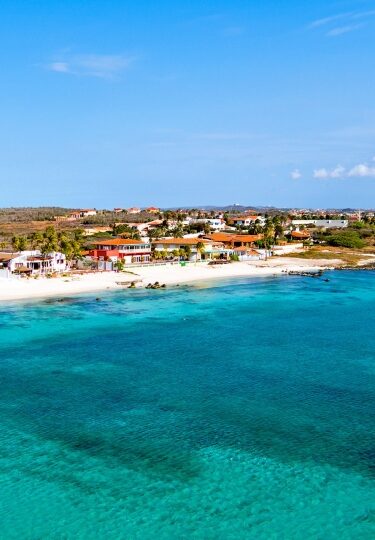
- Find a Cruise
The small southern Caribbean island of Aruba is home to many of the Caribbean’s well-known draws including warm turquoise water, white sand beaches, colorful downtown blocks in the capital of Oranjestad, and vibrant coral reefs near the shore.
Snorkeling in Aruba is a popular pastime because of the island’s clear and calm waters, which offer ideal conditions for snorkeling—you can often see as far as 100 feet, and waves and currents are quite minimal.
Aruba also has shallow beach drop-offs, making most of the water around the beaches pretty warm; the average is around 80 to 85 degrees Fahrenheit. In other words, the island seems as if it was intentionally designed as a snorkeler’s paradise.
If you’re heading there on a vacation and are not sure where to begin, read on and discover the best spots for snorkeling in Aruba.
De Palm Island
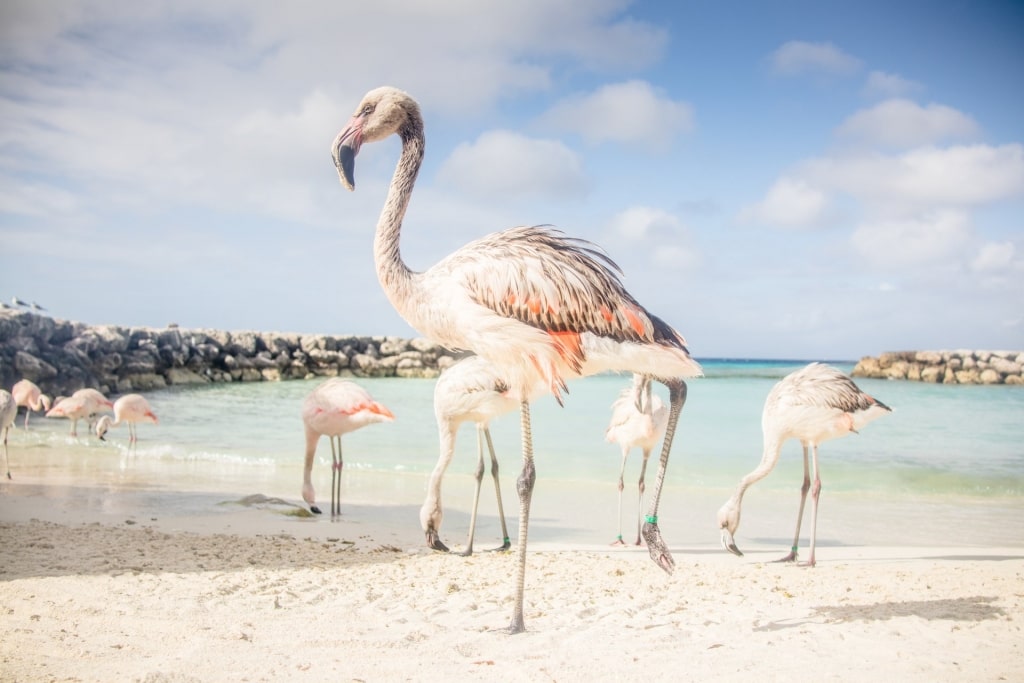
One of the best things to do in Aruba is to head to De Palm Island off the coast of the mainland for snorkeling and other watersports. De Palm has its own coral reef surrounding the island, where you can snorkel from the shore rather than having to take a boat tour. De Palm Island is a great place for beginner snorkelers as it offers complimentary snorkel tours twice a day, where you’re likely to see some of the island’s colorful fish in water no more than waist-deep.
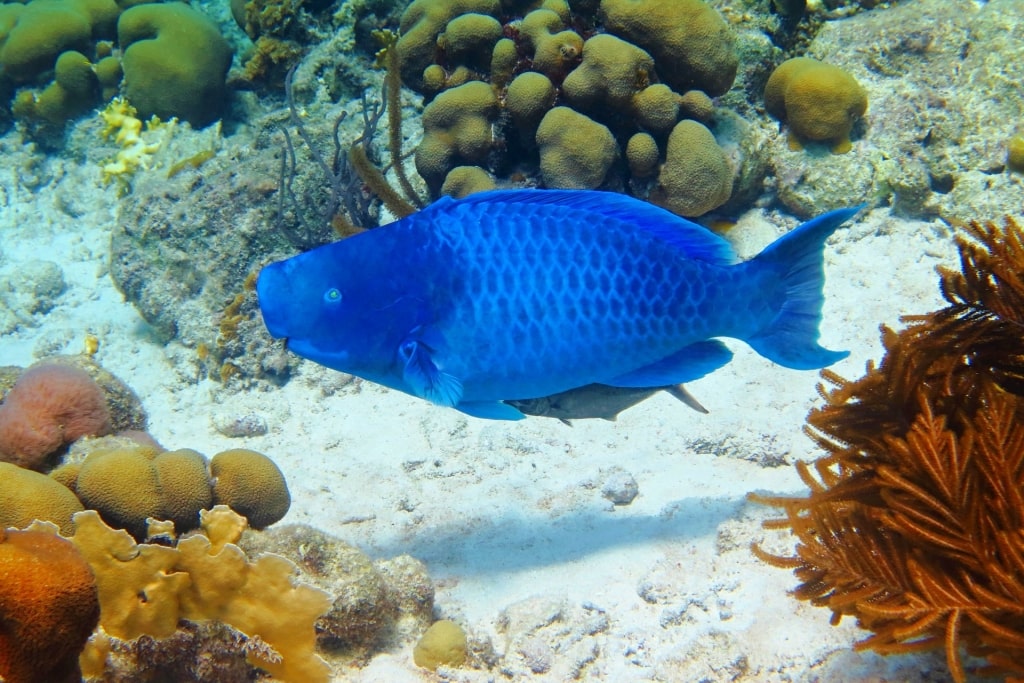
On the reefs, look for parrotfish and triggerfish in various hues; yellow or black-and-white striped angelfish; and, if you keep your eyes on the nooks in the reef, you may even see spotted moray eels. If you don’t want to go on a tour, you can always rent snorkel equipment on the island and go on your own excursion offshore.
Since De Palm is a private island, it operates on an all-inclusive basis. Once you’ve had your fill of snorkeling (or while you’re taking a break in the shade), it’s easy to grab an icy cocktail and authentic Aruban food or relax on a lounger in the surf.
For those traveling with families, some of the best things to do in Aruba with kids include banana boat rides and snuba excursions.
These are a perfect option if you’re ready to move beyond snorkeling but aren’t quite prepared to try scuba diving in Aruba yet.
Read: Best Snorkeling in the Caribbean
The Antilla Shipwreck
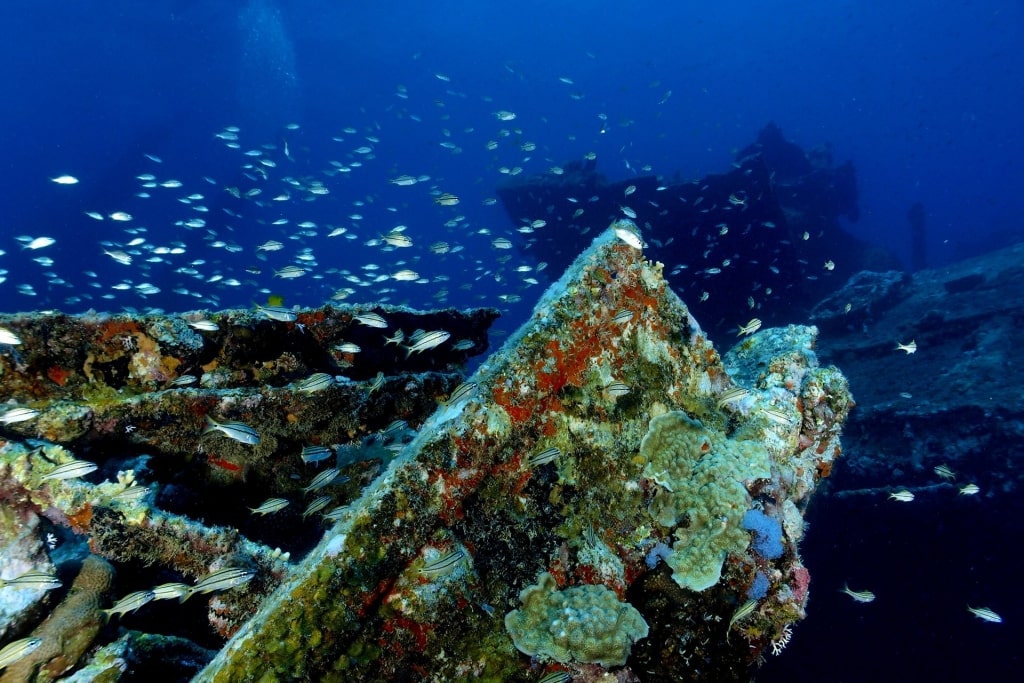
Most shipwrecks are reserved for scuba divers that can reach deeper ocean depths. But luckily, the 1940 sinking of the Antilla shipwreck is one of the best and most easily accessed snorkeling sites in Aruba.
Measuring over 400 feet long, this surprisingly intact shipwreck is the second-largest one in all of the Caribbean . A former German trade ship in the 1930s, the Antilla sank during the era of Nazi rule and while there are several theories as to why it ended up in the bottom of the ocean, there is still no proven explanation for its sinking.
You could easily spend hours swimming around this large shipwreck. The deepest part of the Antilla sits in 60 feet of water, while the shallowest end is around 25 feet deep. Since visibility is possible between 70 and 90 feet, it’s easy to see the entire ship from above, even if you don’t dive down to the bottom of the ocean.
During your visit to Antilla, you’re likely to see any number of animals found in Aruba’s waters, but the wreck is most known for its healthy and colorful coral formations, which attract lobsters, eels, sea turtles, and large schools of fish in the shadows.
Read: Best Scuba Diving in the Caribbean
Boca Catalina
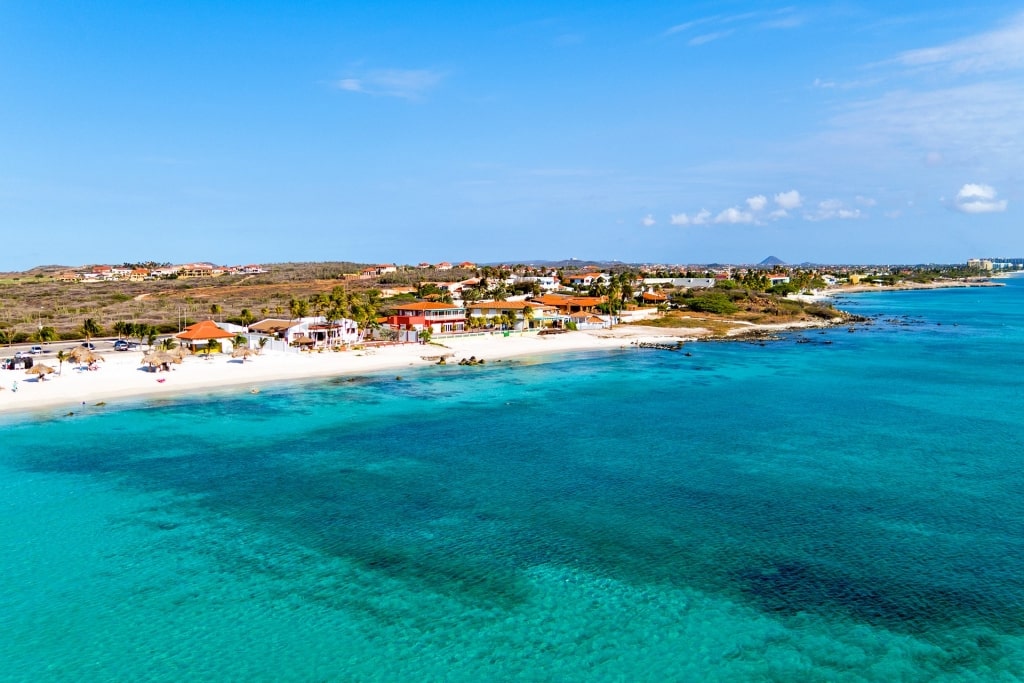
If you can only go on one snorkeling trip while on the island, head to Boca Catalina, which has everything a snorkeler could ever want and is considered the best site for snorkeling in Aruba.
Located near a white sand beach, Boca Catalina can be reached by swimming off the shore. If you’re only a casual snorkeler, Boca Catalina’s optimal location allows you to hop in and out of the water—there’s no need to spend hours out in the ocean.
However, if you’re not interested in spending some time on the sand, you can also go to Boca Catalina by boat. The water is calm and warm, making entry to and from the boat a breeze. Most boats will take you to Catalina Cove, which is a little rocky when entering off the shore.
Since so many snorkel boats visit the area, the fish are used to humans and may come up to you in the water. If you have a camera while snorkeling in Aruba, be sure to bring it along as you’ll likely get close to various marine species.
Eagle Beach
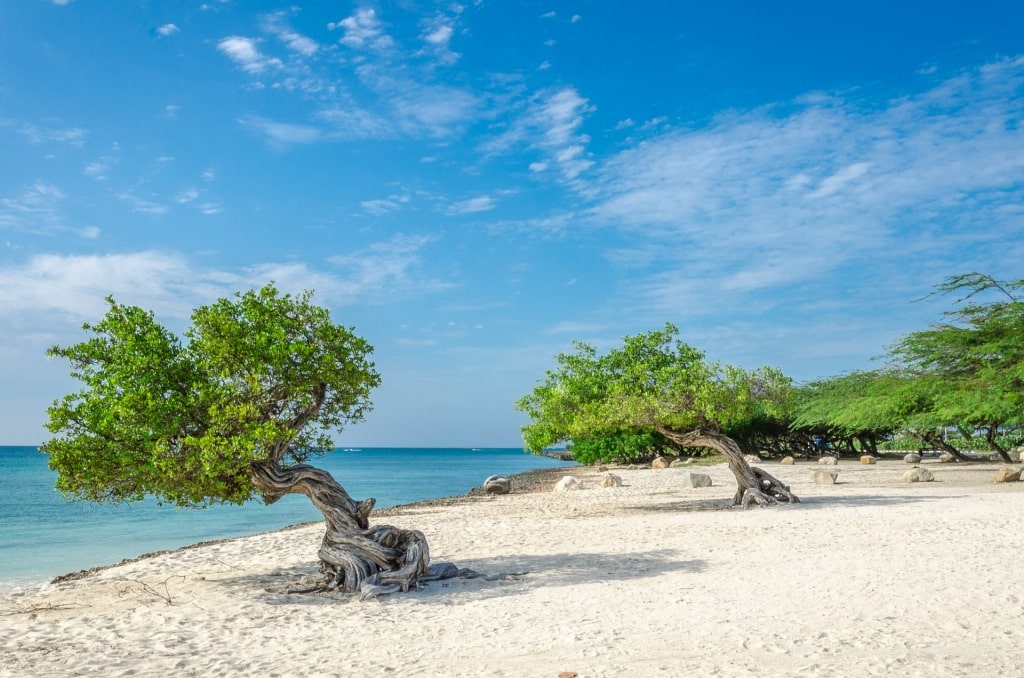
Eagle Beach is one of the best beaches in Aruba . Not only is it close to Oranjestad, but it’s also a sea turtle nesting ground. (If you happen to see them relaxing on the island, make sure to keep your distance.)
As if that wasn’t enough, the beach is also home to two of the most famous fofoti trees that Aruba is known for . The trees look similar to life-sized bonsai and have twisted trunks and branches that reach towards the water. The two fofoti trees on Eagle Beach have been used in numerous Aruba advertising campaigns, and the beach usually has photographers snapping shots at sunset.
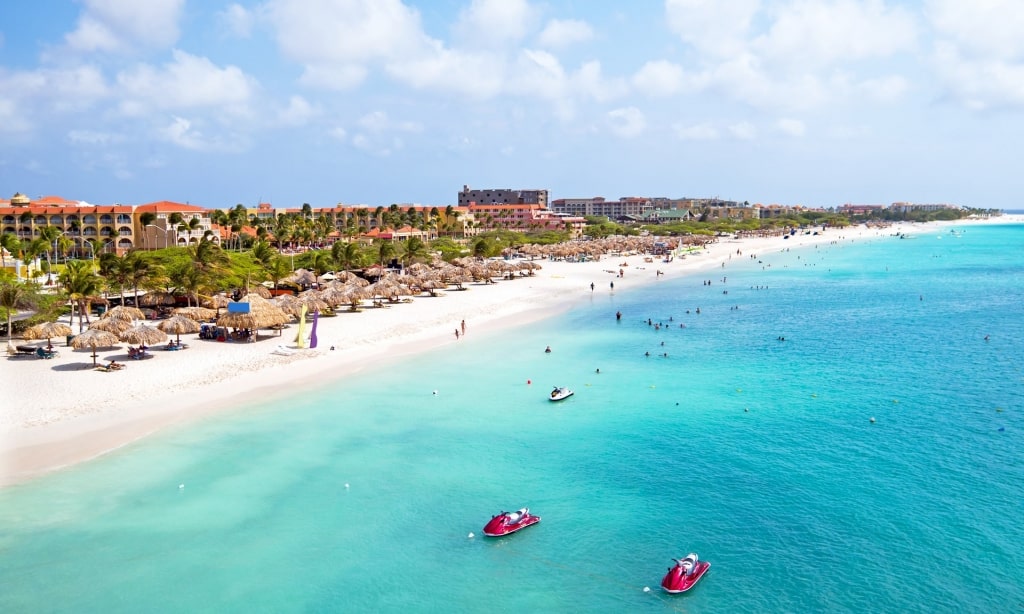
If you’re searching for tropical fish, you’re also in luck. While Eagle Beach doesn’t have a reef, it does have the distinction of being one of the easiest places to snorkel on the island. You can find fish and crabs in water no more than a few feet deep. Even better, you don’t have to bring your snorkel gear as there are numerous beach vendors that rent everything you could need if you decide to go snorkeling at the last minute.
Eagle Beach is one of the best places to snorkel in Aruba if you’re short on time, or if you want to be in a spot near shopping and great restaurants, too.
Read: Best Places to Shop in Aruba
Malmok Beach
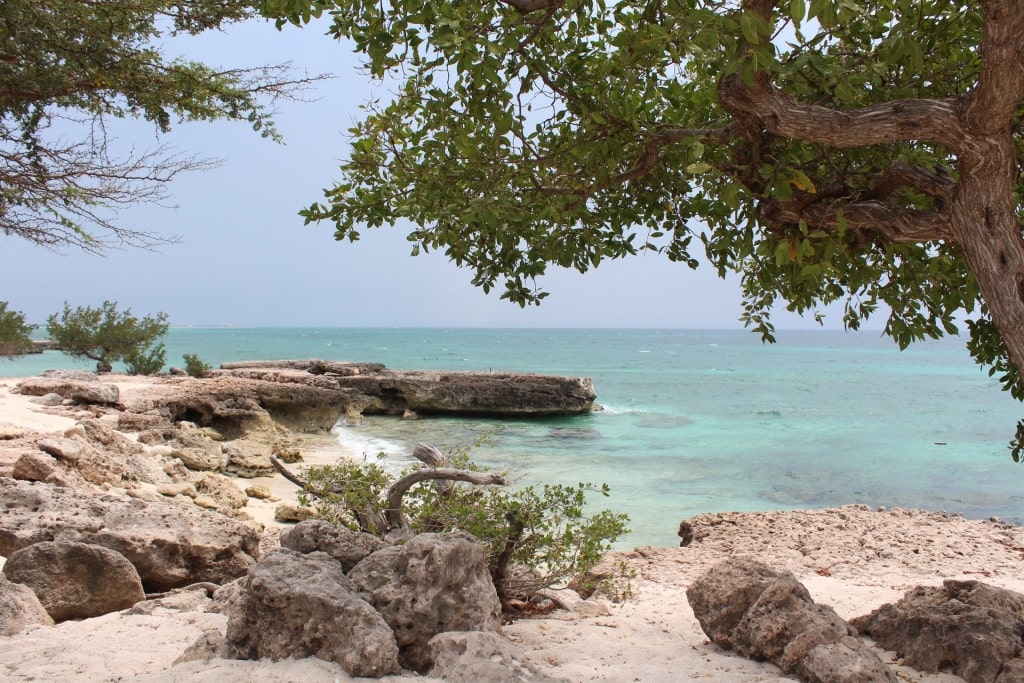
Malmok Beach is a popular area for every kind of recreation, and you’ll often see tourists and locals running or cycling on the road that winds along the shore.
Bring your snorkel gear since Malmok Beach doesn’t have any facilities. Also, because of its popularity with snorkelers on the island, the water can get a bit crowded by mid-afternoon. Try to arrive early if you want the fish all to yourself.
At the reef just off the shore, expect to see dozens of different species of fish, as well as bottom-dwelling creatures like crustaceans and eels. You may want to bring water shoes for the small rocks located at the entry and exit of the reef.
If you’re interested in identifying everything you see, buy an Aruba fish ID card in advance and carry it underwater with you.
Tres Trapi Beach
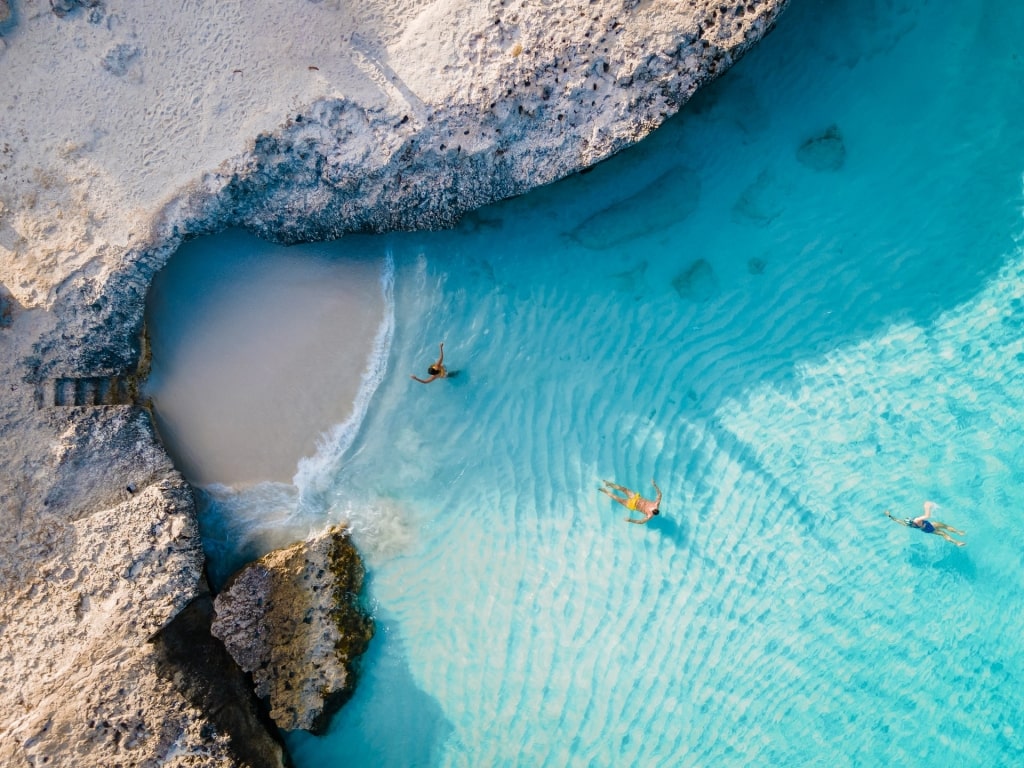
Just a few minutes north of Malmok Beach is another one of the best spots for snorkeling in Aruba: Tres Trapi Beach. Tres Trapi (which means “three steps”) has a straightforward entrance into the ocean and while you won’t find a reef, you will find dozens of starfish.
To see the starfish, swim about 20 meters straight out from the ocean entry steps. From there, and for the next 200 or so feet ahead, you’ll start to see starfish dotting the ocean floor. They are usually located in about 10 feet of water, making it easy to see them while snorkeling. Color-wise, they can range from deep brown hues to extremely vibrant shades of red, orange, and yellow.
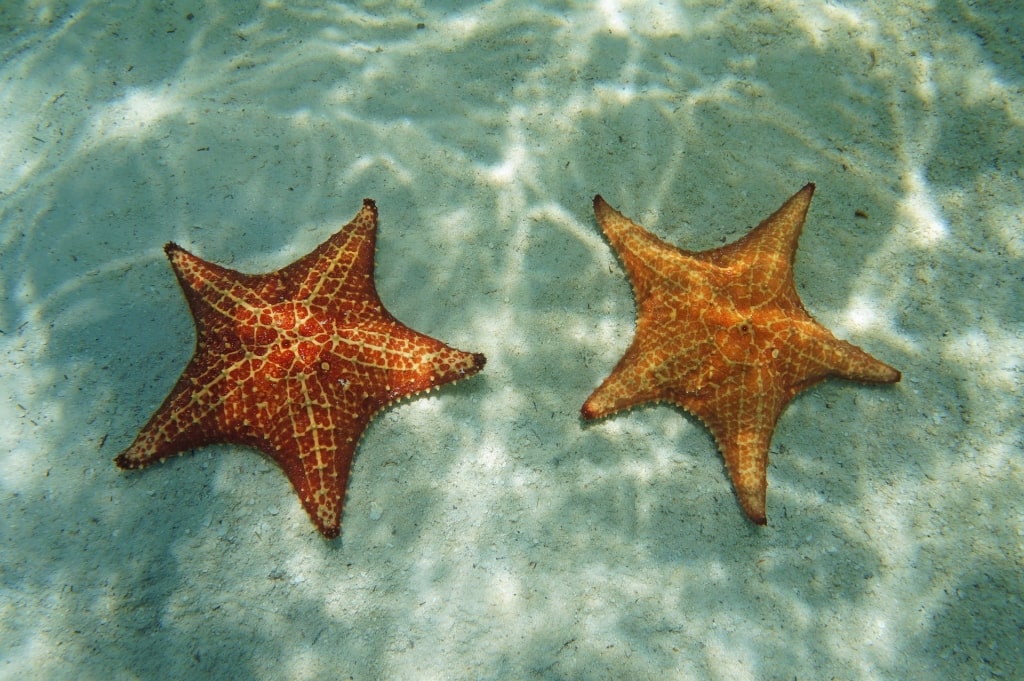
There are several different species of starfish (also known as sea stars) in Aruba, but the most common one on the island is the cushion sea star, which is mostly what you’ll find at Tres Trapi. They look a bit stumpy or squatty with meaty centers and thick, short legs. As with all living creatures under the water, it’s best not to handle them. However, they won’t hurt you if you accidentally touch one of them.
Mangel Halto
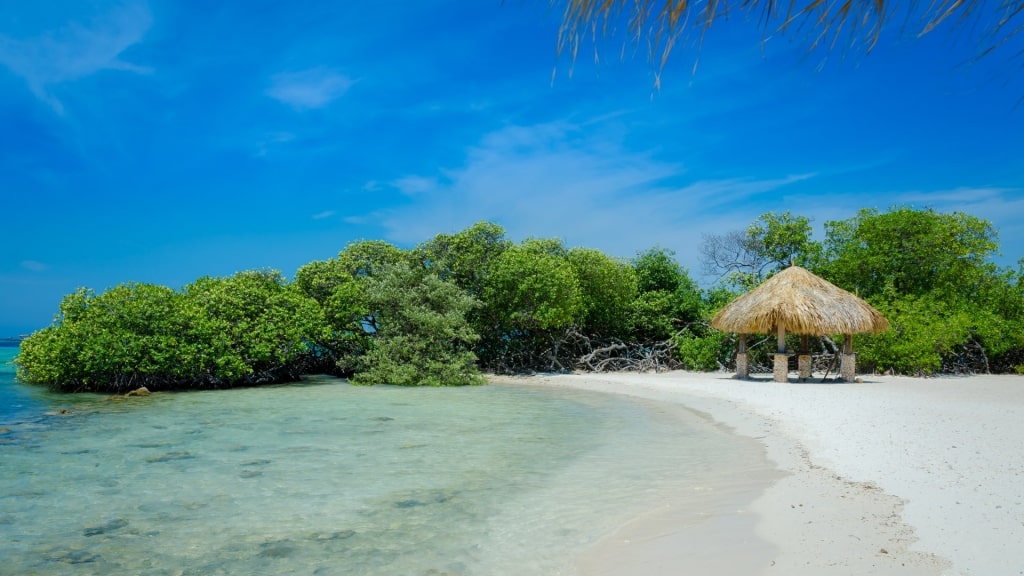
About 20 minutes south of Oranjestad, Mangel Halto sits behind a mangrove thicket that creates a beach that feels private and secluded. There’s a small sunken tugboat by the nearest buoy and the sea has that perfect shade of Caribbean turquoise blue, as well as the ideal Caribbean temperature, sitting steadily around 78-85 degrees F. It’s one of the most popular spots for snorkeling in Aruba, especially since there’s a nearby reef.
You can enter the water via the large platform dock or by walking in between the mangroves—bring water shoes as rocks and shells can wash up around the roots.
The currents beyond the reef can be strong, so beginners will want to stay near the shallow bay area, where the water closest to land is relatively calm. Strong swimmers can exit the sheltered bay via one of the gaps in the reef and explore the other side. But make sure to take a second to pause while inside the reef and evaluate the current and swells before swimming in further.
Angelfish, parrotfish, and big-eyed pufferfish are very common. Be careful where you step as there’s also a lot of coral in this area.
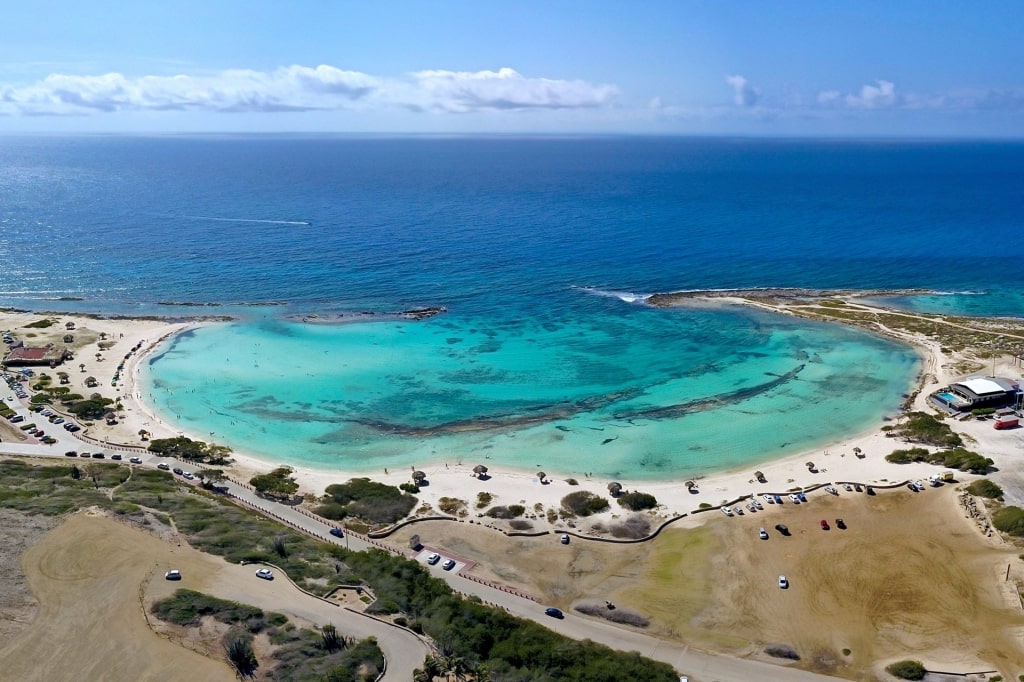
Don’t let Baby Beach’s adorable name fool you; it’s one of the largest and best beaches for snorkeling in Aruba. Unlike other sites on this list, Baby Beach is a half-moon-shaped bay that opens to the ocean on two sides with a large sandbar in the middle to block currents, waves, and swells.
The protected water off Baby Beach is where you’ll find some of the best snorkeling in Aruba. The bay is massive and has a gradual drop-off, which allows you to walk 50 or 60 yards out and still touch the bottom. You can bring your snorkel equipment or swing by one of the local beach shops that rent everything from snorkel gear to sun loungers and umbrellas. (Don’t forget to order a beachside cocktail, too.)
As there are strong currents outside of the cove, most of the marine life stays close to shore, meaning you’ll have a good chance at seeing parrotfish, small squid, crabs, and even eels and barracudas.
Read: Best Places to Visit in Aruba
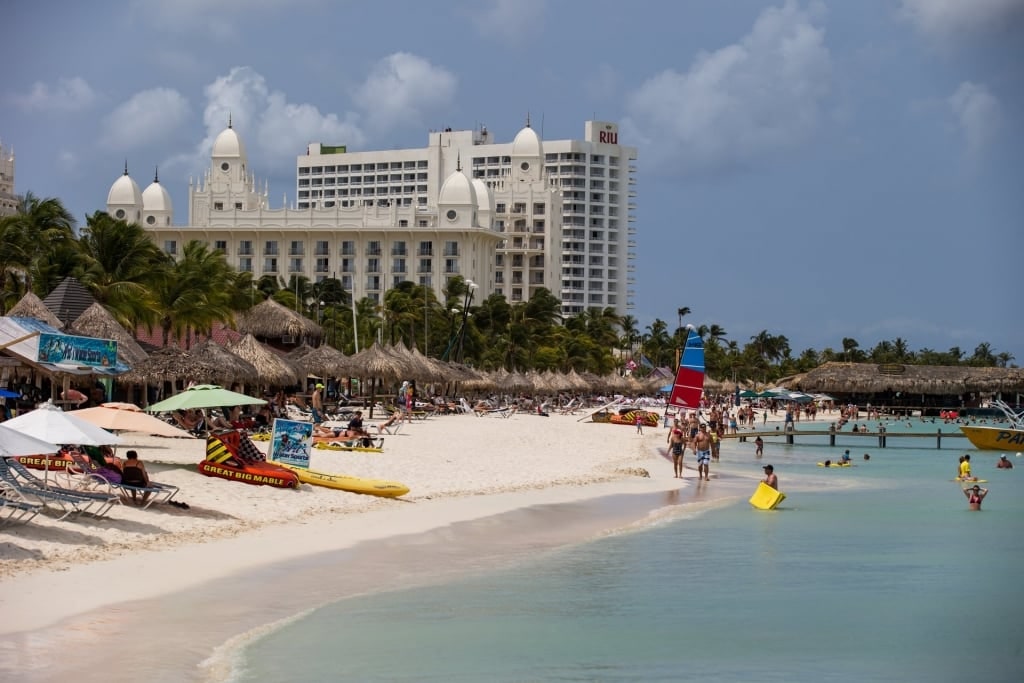
Of course, there’s far more to do in Aruba than snorkeling. On this tropical island, you can go on a guided horseback ride, hop on a sunset cocktail cruise, or even cruise 100 feet below the surface in a submarine. If you’re ready to book your next tropical getaway, browse cruises to Aruba on our website and explore all of the exciting excursions available.
Suzie Dundas
Suzie Dundas is a Lake Tahoe-based freelance writer and photographer. Her work has appeared in Business Insider, Forbes, Outside Magazine, TripSavvy, the San Francisco Chronicle, Frommer’s Fodors, and many more. She was a contributing author on Lonely Planet’s Sustainable Travel and is the upcoming author of a trail guide to the northern Sierra Nevada. Follow her on Instagram at @hikeupyourskirt or explore more of her work at suziedundas.com.
Related Itineraries
Aruba, Curacao & Bonaire
- 9 nights ON CELEBRITY ECLIPSE
- DEPARTING FROM FORT LAUDERDALE, FLORIDA
- Starting from $787 USD
Boston to Fort Lauderdale
- 10 nights ON CELEBRITY ECLIPSE
- DEPARTING FROM BOSTON, MASSACHUSETTS
- Starting from $860 USD
Aruba, Curacao and Bonaire
- 9 nights ON CELEBRITY ASCENT
- Starting from $1057 USD
Aruba, Bonaire & Curacao
- 8 nights ON CELEBRITY BEYOND
- Starting from $1410 USD
- Starting from $1919 USD
- Starting from $5386 USD
Related Articles
Insider’s Guide to St. John’s, Antigua
What Is Aruba Known For?
11 Best Things to Do in Tortola
13 Best Caribbean Islands for Families
12 Prettiest Islands in the Caribbean
Mexican Culture & Traditions: What to Know Before You Go
When Is the Best Time to Visit Istanbul?
15 Best Things to Do in Nassau
12 Best Things to Do in Naples, Italy
The 10 Best Places to Go Snorkeling in Curaçao
11 Famous Landmarks in Sydney
When Is the Best Time to Visit Martha’s Vineyard?
Free Vacation Planning Services

CALL US 888-751-7804
Sign Up for Special Offers
- First Name *
- Last Name *
- Email Address *
- Country * Country Afghanistan Albania Algeria American Samoa Andorra Angola Antigua and Barbuda Argentina Armenia Australia Austria Azerbaijan Bahamas Bahrain Bangladesh Barbados Belarus Belgium Belize Benin Bermuda Bhutan Bolivia Bosnia and Herzegovina Botswana Brazil Brunei Bulgaria Burkina Faso Burundi Cambodia Cameroon Canada Cape Verde Cayman Islands Central African Republic Chad Chile China Colombia Comoros Congo, Democratic Republic of the Congo, Republic of the Costa Rica Côte d'Ivoire Croatia Cuba Curaçao Cyprus Czech Republic Denmark Djibouti Dominica Dominican Republic East Timor Ecuador Egypt El Salvador Equatorial Guinea Eritrea Estonia Ethiopia Faroe Islands Fiji Finland France French Polynesia Gabon Gambia Georgia Germany Ghana Greece Greenland Grenada Guam Guatemala Guinea Guinea-Bissau Guyana Haiti Honduras Hong Kong Hungary Iceland India Indonesia Iran Iraq Ireland Israel Italy Jamaica Japan Jordan Kazakhstan Kenya Kiribati North Korea South Korea Kosovo Kuwait Kyrgyzstan Laos Latvia Lebanon Lesotho Liberia Libya Liechtenstein Lithuania Luxembourg Macedonia Madagascar Malawi Malaysia Maldives Mali Malta Marshall Islands Mauritania Mauritius Mexico Micronesia Moldova Monaco Mongolia Montenegro Morocco Mozambique Myanmar Namibia Nauru Nepal Netherlands New Zealand Nicaragua Niger Nigeria Northern Mariana Islands Norway Oman Pakistan Palau Palestine, State of Panama Papua New Guinea Paraguay Peru Philippines Poland Portugal Puerto Rico Qatar Romania Russia Rwanda Saint Kitts and Nevis Saint Lucia Saint Vincent and the Grenadines Samoa San Marino Sao Tome and Principe Saudi Arabia Senegal Serbia Seychelles Sierra Leone Singapore Sint Maarten Slovakia Slovenia Solomon Islands Somalia South Africa Spain Sri Lanka Sudan Sudan, South Suriname Swaziland Sweden Switzerland Syria Taiwan Tajikistan Tanzania Thailand Togo Tonga Trinidad and Tobago Tunisia Turkey Turkmenistan Tuvalu Uganda Ukraine United Arab Emirates United Kingdom United States Uruguay Uzbekistan Vanuatu Vatican City Venezuela Vietnam Virgin Islands, British Virgin Islands, U.S. Yemen Zambia Zimbabwe

STAY IN THE KNOW
Thank you for subscribing.
See you on board soon.

Best Snorkeling in Aruba
Find the best places to snorkel in Aruba along with the Aruba’s best snorkeling tours to ensure you see the best of the underwater world.
Aruba, a Caribbean island known for its stunning beaches and clear waters, offers some excellent snorkeling opportunities. Find out where to find the best snorkeling spots in Aruba along with which tours offer you the best snorkeling offshore. We’ll cover all the information you need to know to really enjoy snorkeling in Aruba!
Disclosure: Some of the links below may be affiliate links. At no additional cost to you, we may earn a small commission if you make a purchase.
Best Places to Snorkel in Aruba
While Aruba is not known for its underwater life the same way the other two ABC islands, Bonaire and Curacau, are, it still offers some amazing marine life. Best of all, some of its best snorkeling locations in Aruba are right off the coast, allowing you to reach them without a tour or boat. This makes it possible to go snorkeling without a tour in Aruba. Add these spots to your list!
Tres Trapi is located on the northwest coast of Aruba, close to the California Lighthouse. It is a lesser-known but beautiful snorkeling spot, known for its unique rock formations, underwater landscapes, and the ability to swim with sea turtles. The site is accessible via a few rocky stairs and just a short swim from the shore. Sea turtles are often found about 50 yards out.
Snorkelers at Tres Trapi may encounter various marine species, including colorful reef fish, moray eels, and crustaceans – as well as the famous Tres Trapi turtles. Make sure to check the sea grass beds for turtles and under the rocky cliffs and formations. They provide interesting nooks and crannies for animals to hide in. The rocky substrate also hosts an assortment of corals and sponges, contributing to a diverse underwater ecosystem.
Pro Tip: While Tres Trapi offers rewarding snorkeling experiences, it’s advisable to wear water shoes and exercise caution when navigating the rocky terrain. The site is most suitable for those with some snorkeling experience and comfort with open water swimming. When in doubt, take a floatation device with you!
Mangel Halto Beach
Mangel Halto is located in the southeastern part of Aruba, near the town of Savaneta. This beach offers a unique combination of mangrove trees and seagrass beds. The shallow, protected waters make Mangel Halto an excellent spot for snorkeling in Aruba, with a rich diversity of marine life and coral formations.
Snorkelers may encounter various species of tropical fish, such as angelfish, parrotfish, and sergeant majors. The mangroves also contribute to the ecosystem, providing a nursery for juvenile marine life and an excellent hiding spot for sea turtles.
Baby Beach is situated at Seroe Colorado, on the southeastern tip of Aruba. This beach gets its name from its calm and shallow waters. This makes it ideal for families and snorkelers of all skill levels. The crescent-shaped lagoon is protected by a large coral barrier, which helps create a calm environment with minimal waves.
Snorkelers at Baby Beach can encounter a diverse array of marine life, including colorful fish, sea anemones, and possibly even sea turtles. The sandy bottom and clear waters also provide excellent visibility for observing the underwater world.
For those looking to see even more. Head to the far left of Baby Beach to the natural pool. This area does have a stronger current, so be careful, but it is a bit enclosed and shallower. Here you can find more sea life, including potentially octopus, crab, and squid!
Pro Tip: Snorkeling gear is available for rental at Baby Beach for $16/hour.
Boca Catalina
Boca Catalina is situated on the northwest coast, near Malmok Beach. It is a popular snorkeling site in Aruba with calm waters and a coral reef close to the shore. The accessibility of the reef makes it suitable for snorkelers of all levels, including beginners.
Snorkeling in Boca Catalina offers opportunities to spot a variety of marine life, including colorful coral formations, schools of tropical fish, and the occasional sighting of sea turtles. The clear waters make it easy to appreciate the underwater scenery.
Arashi Beach
Arashi Beach is situated on the northwest coast of Aruba and is known for its powdery white sand and calm waters. The snorkeling area is close to the shore which makes it convenient for those who want to explore the underwater world without venturing too far.
Snorkelers at Arashi Beach can encounter a range of marine life, including butterflyfish, damselfish, and sergeant majors. The coral formations are amazing, and the visibility is usually excellent. This can make for a very memorable snorkeling experience.
Malmok Beach
Malmok Beach is also located on the northwest coast, just south of Tres Trapi Beach. It’s not known for the beach itself, but the snorkeling at Malmok Beach is some of the best! When you enter the water, swim North, following the coastline to swim into tiny outlets full of deep, clear water that are teeming with fish.
As the water entry is a bit rocky, you’ll want to take water shoes but then get ready for amazing visibility and schools of fish. You also get the opportunity to see sea turtles in Aruba! Keep your eyes wide open, and don’t forget your GoPro !
Best Snorkeling Tours in Aruba
One of the best ways to see the underwater wonders of the island is through the amazing snorkeling tours in Aruba. Whether you don’t have your own equipment or transportation, or you simply want the guidance and safety of snorkeling with a tour, you’ve got plenty of options!
Choose from guided excursions to pristine locations like Baby Beach and Mangel Halto or adventurous pirate-themed sails. Aruba offers a range of snorkeling experiences which ensure an unforgettable experience for all! Let’s take a look at my five favorite Aruba snorkeling tours.
Catamaran Sail with Snorkeling aboard the Arusun
Duration: 2.5 hours
Set out on a catamaran adventure in Aruba aboard the 65-foot ‘Arusun.’ Enjoy the spacious deck, choosing between sunny or shaded areas, and savor snacks and drinks from the open bar. Explore prime snorkeling sites around Aruba, like the Antilla Shipwreck and Catalina Bay, with complimentary equipment. With friendly crew hospitality, an open bar, and provided snacks, this catamaran sail offers a relaxing and great-value experience.
Champagne Breakfast and Lunch Cruise in Aruba with Snorkeling
Duration: 4 hours
Experience a luxurious Champagne Breakfast and Lunch Cruise aboard a custom catamaran. Enjoy free-flowing Champagne with a delicious breakfast featuring croissants and Danishes. Marvel at the island views. Listen to Caribbean music. Snorkel at three locations to discover native marine life. Try the ‘third lung’ underwater breathing system and indulge in a lunch of paella, chicken salad, cheese, fruit, and more Champagne. Relax in paradise as you sip mimosas, soak in sea breezes, and make the most of this perfect day on the water.
Jolly Pirates Morning Sail and Snorkel Cruise in Aruba
Embark on a thrilling four-hour Aruba Pirate Cruise aboard an 85-foot teak schooner. Visit three snorkeling locations, including a World War II shipwreck, for an immersive marine experience with coral and tropical fish. The cruise includes a barbecue lunch, an open bar, and access to snorkeling gear. Enjoy additional fun with a rope swing on the boat. Truly immerse yourself in the best the island has to offer with this snorkeling cruise in Aruba.
Jolly Pirates Afternoon Sail and Snorkel Cruise in Aruba
Duration: 3 hours
Try an exciting Snorkel Cruise in Aruba aboard a teak pirate schooner. Explore three reefs with opportunities for swimming, snorkeling, and trying out the rope swing. Enjoy the tropical scenery from the teak sun deck. Sip drinks from the open bar. Make the most of the included snorkel equipment. This afternoon activity provides a leisurely experience, leaving the morning free to enjoy the rest of the island.
Guided Mangel Halto and Baby Beach Snorkeling Tour in Aruba
Duration: 5 hours
Take off on a Guided Mangel Halto and Baby Beach Snorkeling Tour , visiting two of the island’s best-known snorkeling beaches. Choose to relax on land and enjoy the scenery or explore the underwater world with provided snorkel gear. The tour includes round-trip transportation from your hotel or cruise port, allowing for a hassle-free experience. Wade directly off shore to discover the marine world, with instruction and snorkel equipment provided for your convenience.
Preparing to Snorkel in Aruba
Before heading to these amazing snorkeling spots around Aruba, there’s a few things you need to know to be prepared and stay safe.
Equipment Needed to Snorkel in Aruba
With so many accessible spots to snorkel right off the beaches of Aruba, you just need a few key pieces of equipment and you’ll be well on your way to a fun, underwater adventure. Choose to bring this equipment from home, or you can buy or rent it in Aruba, or if you prefer, just join a tour where gear is included.
- Snorkeling Gear : To snorkel on your own in Aruba, you’ll need to have your own snorkeling equipment. This includes a mask that is snug but comfortable with a tight seal around your eyes, a snorkel, that is easy to breathe through and has a comfortable mouthpiece, and fins to help you move efficiently through the water. Choose from the traditional mask or a full face snorkel mask.
- Water shoes : If you plan to explore rocky areas like Tres Trapi, consider wearing water shoes or aqua socks to protect your feet from sharp rocks and coral.
- Underwater Camera : Bring an underwater camera, like a GoPro , or a waterproof case for your phone to capture the beautiful marine life and underwater landscapes.
- Locking Bag : If your entire party is going into the water at once, you need to keep your valuables safe. You can either lock them in the car, if you drove, or use a locking bag to leave on the beach, like a Vaultz money bag or FlexSafe by AquaVault.
Snorkeling Safety
Preparing for a snorkeling excursion in Aruba involves a few essential steps to ensure a safe and enjoyable experience. Here’s a short checklist of what you need to take into consideration for a safe trip.
- Weather and Water Conditions: Before heading out, check the weather forecast for the day. Avoid snorkeling during rough weather or high winds. Additionally, you’ll want to assess the water conditions, including tide and current information. Choose snorkeling sites that match your skill level and comfort in the water.
- Life Jacket: If you’re not a strong swimmer or if you’re snorkeling with children, consider using a floatation device or life jacket. It’s one of the best ways to ensure a safe day of snorkeling in Aruba.
- Buddy System: It’s always wise not to swim alone and snorkeling is no different. Snorkel with a buddy, and always keep an eye on each other. This adds an extra layer of safety in case of any unforeseen circumstances.
- Sun Protection: Use a reef-safe sunscreen with a high SPF to protect your skin from the strong Caribbean sun. Apply it before heading into the water. You may also want to wear a long-sleeved rash guard or UV-protective clothing to minimize sun exposure, especially on your back. Check out these affordable options for men and women .
- Hydration and Snacks: The sun in Aruba is brutal. Stay hydrated by bringing a reusable water bottle and pack some snacks to keep your energy levels up, especially if you plan to spend an extended period in the water. Snorkeling while tired can be quite dangerous as you have to be able to fight the current, should it become stronger!
Have additional questions about where to snorkel in Aruba?
Let us know in the comments!
Similar Posts

Kayaking in Aruba: Why Kayak + Top Aruba Kayaking Tours
With such beautiful scenery around the island, it should come as no surprise that kayaking in Aruba is a great way to get around and…

6 Best Sunset Cruises in Aruba: Drinks, Scenery, & Sunsets!
Aruba, with its pristine beaches, crystal-clear waters, and warm hospitality, is a tropical paradise drawing visitors from around the globe. While the island offers a…

Small Cave Pool in Aruba: A Must-Visit Natural Gem
If you’re looking for hidden gems in Aruba, check out the Small Cave Pool, also called the Baby Natural Pool, New Natural Pool, and Hidden…

De Palm Island: The Ultimate Guide
Find out what De Palm Island in Aruba is really like and if it’s worth a visit during your trip to Aruba. Located just off…

Climbing Hooiberg Mountain, Aruba
Hooiberg Mountain is the second tallest mountain on Aruba at 541 feet tall (165 meters tall), and the best way to get panoramic views across…

10 Best Beaches in Aruba
Find the best beaches to visit in Aruba, from the most popular to hidden gems. The “One Happy Island” of Aruba is renowned for its…
Leave a Reply Cancel reply
Your email address will not be published. Required fields are marked *
Save my name, email, and website in this browser for the next time I comment.
An outdoor adventurer's guide to Aruba
Kayak through mangroves, swim in a volcanic natural pool, and so much more..

Of all the Caribbean islands I’ve visited, Aruba surprised me the most. I expected white sand beaches (which are plentiful), but I was taken aback by the island’s cacti-covered desert landscape. Aruba’s year-round sunny weather coupled with the steady trade winds makes it easy to spend all day outside, and its unique geography means you can experience crystal clear beaches, rolling sand dunes, and natural pools in one visit. If you’re considering a trip to Aruba, make sure to leave time for these off-sand exploration across the island.
Visit the Butterfly Farm

The Butterfly Farm near Oranjestad is delightful, especially if you’re traveling with young kids. It’ll take you an hour or two to explore the farm’s winding paths and you can either walk among the hundreds of butterflies on your own or join the guided tours that run every 20 minutes. Try to visit early in the morning, when you can see butterflies emerge from their cocoons. And on your way out, stop by the cafe for hand-squeezed juice and fruit popsicles.
Tip : Wear bright colors for a better chance at an up-close encounter with the butterflies.
ATV through Arikok National Park

One of the highlights of my last trip to Aruba was ATVing through Arikok National Park . The desert park takes up nearly 8,000 acres on the north side of the island, and you can see huge limestone rocks, sand dunes, and towering cactus plants. Book an ATV tour with RockaBeach Tours or ABC Tours Aruba where stops may include Fontein Cave (where you’ll see drawings left by the Awarak people more than 2,000 years ago) and the Ayo Rock Formation , a collection of massive boulders with walkways so you can get up close to the rocks. If you’re traveling with younger kids, you can swap the single-rider ATVs for either a UTV (which can seat up to four) or a Jeep ride.
Tip : Expect to end up covered in either mud or dust by the end of your tour, depending on the weather. Dress accordingly.
Swim in Conchi Natural Pool

Conchi Natural Pool is also located inside Arikok National Park, but it’s worth making a separate day trip to the park just for the pool. It’s pretty remote, and the best ways to get there are by taking a 30–45 minute hike from the park’s main gate or renting an ATV or 4x4 vehicle. The natural pool is framed by volcanic rocks (be sure to bring water shoes) and the water temps can reach the mid-80s, which makes for a warm, soothing swim. Be on the lookout for the oversized crabs that make their home around the pool.
Tip : The rocky pool isn’t suitable for small kids and swimming is best for more adventurous travelers. But even if you skip a swim, you’ll still be able to enjoy the views.
Snorkel or dive off Arashi Beach

You’re more likely to see locals than visitors at Arashi Beach . The quiet, low-key beach on Aruba’s northern tip is ideal for snorkeling, and there’s a shallow reef that runs parallel to the shore that’s packed with marine life like angelfish and sea turtles. Aruba has also long been a magnet for divers—it’s one of the top plane- and shipwreck diving destinations in the Caribbean—and Arashi Beach is home to a 35-foot deep dive site including airplane wreckage and plenty of coral formations. For private or small group diving tours off Arashi Beach, consider Happy Divers Aruba .
Tip : For a quick and easy meal, stop by Arashi Beach Shack for a fish burger or ceviche made with local grouper.
Kayak along Mangel Halto Beach

Away from the crowds on the larger beaches, Mangel Halto Beach is about a 15-minute ride from downtown Oranjestad and a popular picnic spot for locals. Its shallow, calm waters are also ideal for a kayak trip (especially for families or first-timers). Book a half day kayaking tour with Aruba Kayak Adventures or EL Tours that’ll take you through the maze of lush mangroves of Mangel Halto Beach and includes the option to snorkel.
Tip : Opt for a clear-bottom kayak to take advantage of the beach’s clear, relatively still water.
Paddleboard, surf, or sail on Eagle Beach

One of the best beaches in Aruba (and arguably the Caribbean), Eagle Beach on the island’s western coast has a wide shoreline and soft, silky sand. The public beach is also home to several hotels and resorts , but there are plenty of parking spots and beach chair rentals if you plan to just visit for the day. While plenty of people spend the day relaxing on the sand, the beach is one of the best places for water sports like paddle boarding or surfing. Both Aruba Surf and Paddle School and Island Cabana Aruba offer paddle-boarding rentals and surf lessons, making it easy to improve your skills.
Tip : For a quick bite between activities, stop by Eduardo’s Beach Shack for acai bowls and fruit smoothies.
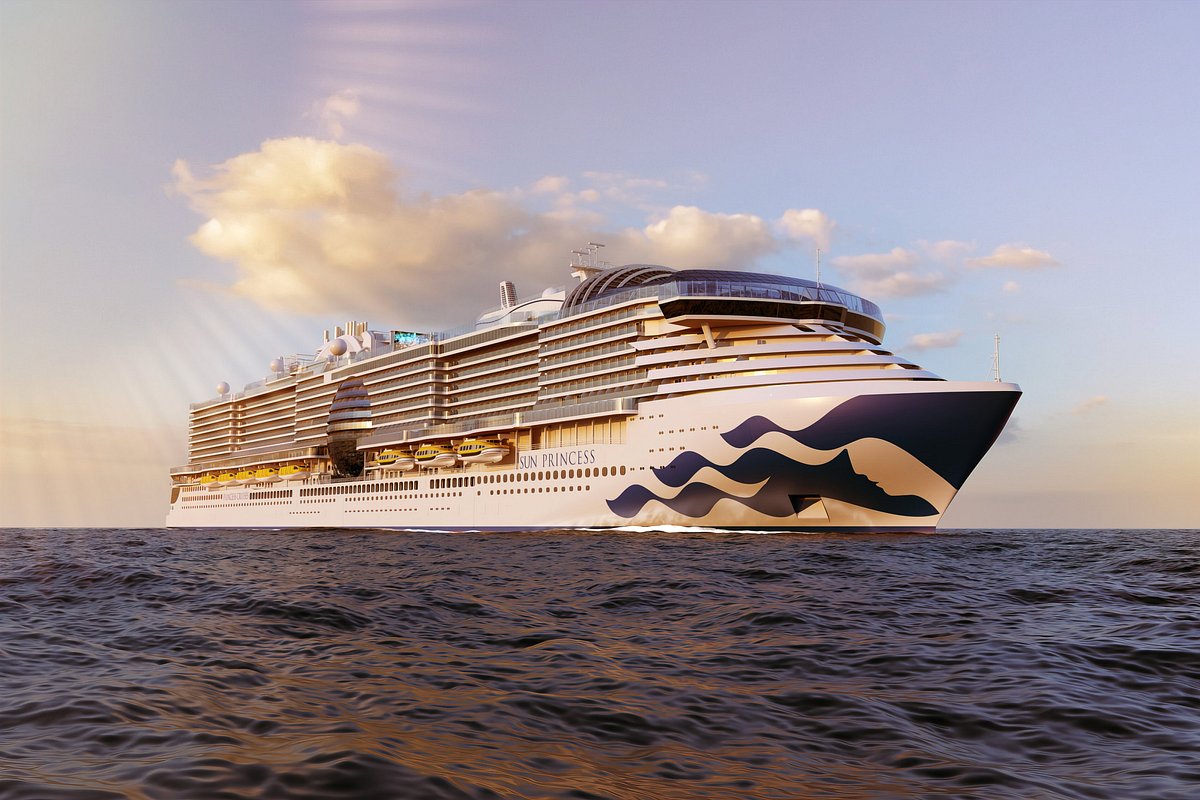

Best Time to Visit Aruba
Aruba is one of the most beautiful islands in the Caribbean, famous for its gorgeous coral reefs, soft white sands, bright blue waters, fun-filled watersports, and delicious seafood, it’s a great place to visit if you’re looking for a dreamy honeymoon destination, or attractive vacation spot for a special getaway.
If you’re planning on a romantic couples’ vacation or honeymoon to this beautiful little country, one of the first questions you’ll need to answer is what is the best time of year to visit Aruba?
In short, the best time to visit Aruba will depend on your budget, how particular you are about the weather, and what you’re hoping to experience. In this post, we’ll tell you everything you need to know about Aruba year-round, and the best times to visit if you’re traveling on a budget or hoping to experience certain activities, so you can pick the perfect time to enjoy this breathtaking vacation spot.
When is Peak Season in Aruba?
You’ll be pleased to know that the weather in Aruba is typically pleasant all year round. Because of this, the peak season is more a reflection of the climates in the USA and Canada, with tourists wanting to escape the colder climate of their home countries.
Therefore, the peak season in Aruba typically runs from around mid-December to mid-April.
This means that if you’re looking to travel during this period, hotels will be more expensive, and far more sought-after, so if you have a particular resort in mind, you’ll want to get it booked as far in advance as possible!
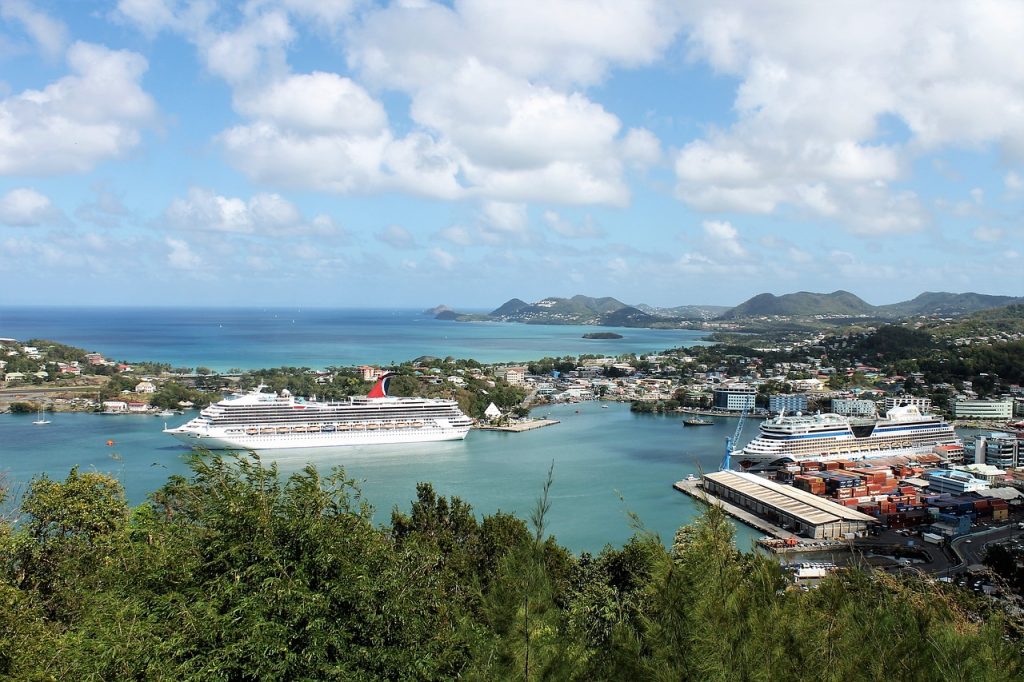
When is the Shoulder Season in Aruba?
The shoulder season in Aruba typically runs from mid-April through to August, and during this period, the island attracts a diverse crowd. Young and old, honeymooners and families and groups of friends all flock here during this period to take advantage of some of the lower prices and enjoyable weather.
When is the Low Season in Aruba?
September through to mid-December is typically the low season in Aruba. This time of year is ideal for those traveling on a budget, as due to the windy weather keeping the climate a little cooler, fewer tourists are looking for an opportunity to soak up the summer sun.
Because of this, you’re able to find great deals when it comes to resorts, hotels, and accommodations in Aruba. Even if you’re looking for a dreamy all-inclusive Caribbean getaway, there’s a chance you’ll be able to score an unbelievable discount at some select resorts, with some hotels and resorts dropping their prices by up to 50%.

Thankfully, as we mentioned before, Aruba typically enjoys great weather all year round, so if you’re looking for a budget getaway, visiting during the low season is your best course of action. That said, there’s a higher chance of rain at this time of year, so you’ll want to keep that in mind if you’re hoping to catch a tan!
One downside to traveling during this period, however, is that tour operators typically reduce their number of outings per week. If you’re the kind of person who’s looking to be out on a new and exciting excursion every day, you may want to visit during the shoulder season instead.
When is the Rainy Season in Aruba?
The rainy season in Aruba really isn’t one to be too concerned about. Typically, rainfall tends to be in brief bursts here, instead of long downpours, meaning that a brief shower or two won’t keep you out of the sun for very long.
More rain is generally seen during the low season, with the wet season beginning in September, peaking with most showers in November, and rounding off again by early January.
Does Aruba Have a Hurricane Season?
Whilst many Caribbean islands have a hurricane season visitors need to plan around, you’ll be pleased to know that if you’re planning a trip to Aruba, this won’t be of much concern!
Located just south of the Hurricane belt, guests can rest assured that large storms are unlikely to affect their vacation.
That said, there have been instances of hurricanes passing close by the island, particularly during the wet/low season, and these can cause some strong winds that make the weather feel a lot cooler than it actually is.
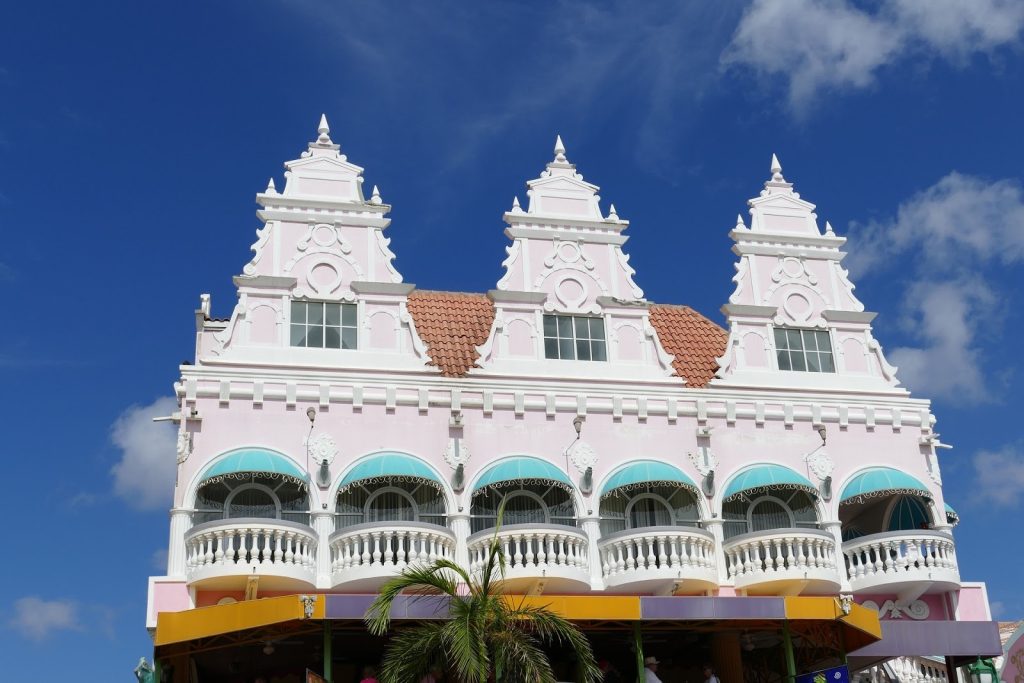
When is the Best Time to Visit Aruba for Water Activities?
Unlike simply relaxing on the beach, or sitting in a bar sipping on cocktails (two things which can easily be done without much concern for the weather), when it comes to water activities, you’ll need perfect conditions to be able to enjoy them fully.
If you prefer warm ocean temperatures, June to November is the best time for you to visit, as sea temperatures generally sit between 81 and 84 degrees, with October offering the warmest water temperatures all year round. If you prefer cooler temperatures, you’ll be able to enjoy an average temperature of 79 degrees in the waters between January and March.
June is the month that offers the most wind in this area, so if you’re a windsurfing fanatic, this is definitely the best time of the year to visit.
When is the Best Time to Visit Aruba for Snorkelling and Scuba Diving?
Whether you’re a newbie at snorkeling or an experienced scuba diver, Aruba is a great place to get in the waters and explore the surrounding coral reefs.
If you’re interested in making this a regular activity during your vacation, you’ll want to visit somewhere between September and November.
At this time of year, the conditions for snorkeling and scuba diving are perfect, with calm winds and waters, and warm temperatures.
To experience the calmest, clearest waters, it’s best to snorkel early in the morning, hitting the waters at around 9 a.m. After midday, the water clarity is lower as the sand is stirred up by winds, waves, and other people visiting the beach.
When is the Best Time to Visit Aruba for Events and Festivals?
As with any Caribbean Island , many people come to Aruba looking for a good time and great drinks.
If this sounds like the type of vacation you’re looking for, it’s worth making plans to visit the Island whilst there are festivals, events, or holidays in full swing, so you can really make the most of your trip.
One of the biggest annual events on the island is the Aruba Carnival, which starts officially in November. Most of the carnival’s events take place in January and February though, so if you’re looking to experience great music, fun parades, and exciting costumes, this is the best time to visit.
Another unmissable event on the island is the Aruba Soul Beach Music Festival, a five-day event around Memorial Day Weekend, where many big-name DJs, musicians, and even comedians perform. So if you’re looking for beach parties during the day, and even more partying at night, you know when to visit!
Planning a trip during May? Don’t worry, you won’t be missing out. During this month, visitors can enjoy the annual Aruba Hi-Winds kitesurfing and windsurfing tournament. Even if you have no desire to compete, it’s well worth a visit to come along and watch the contest. During the competition, beaches are lined with music and parties, so everyone coming to spectate is promised a great time too.
If you’re planning a trip to Aruba, when would you like to visit? Be sure to let us know in the comments section below! If you would like any extra advice or help planning your trip, head on over to our travel planning page to get in touch with one of our trusted travel advisors.
Leave a Comment Cancel reply
Save my name, email, and website in this browser for the next time I comment.
These are the best times to visit Aruba

With white, sugar-sand beaches, turquoise waters and divi-divi trees on its western and southern coasts, Aruba is a beachgoer's paradise.
There's also the wild side: The island is home to a cactus- and boulder-strewn desert, rugged volcanic cliffs lining the east coast and 617-foot Mount Jamanota, which is inhabited by wild parakeets, goats and rattlesnakes.
Just 18 miles off the coast of Venezuela, Aruba has its unique culture and diversity — its human inhabitants come from more than 90 nationalities — that make it worth more than a week on the beach. The local language, Papiamento, is largely based on Spanish and Portuguese with a heavy Dutch influence.
Whatever takes you to Aruba, these are some of the best times to go.
When to find the best weather in Aruba
Weather in Aruba is fairly consistent throughout the year, with highs often in the mid-80s. It is slightly warmer between May and October when the highs hover in the low 90s.
Most rainfall occurs between September and January, but even during the rainier months, precipitation often doesn't last long, and there is still plenty of sunshine. Also, Aruba lies outside of the hurricane belt, so tropical storms and hurricanes rarely make landfall.
The months from February through August receive the least rainfall, rarely exceeding an inch for the month. To avoid the hottest time of year, visit between February and April.
When to avoid the crowds in Aruba
Aruba tends to be busiest between January and mid-April, but if you visit then, all hope is not lost.
Most people visit Aruba to enjoy the protected beaches on the western and southern coasts. Venture toward the rugged eastern and northern coasts or inland to leave behind the crowds.
For a traditional sand beach, Eagle Beach, which is tucked into the busier northwestern coast, is quieter than neighboring beaches like Palm Beach. Manchebo Beach, just south of Eagle, is also a good option for avoiding crowds.
If you are staying at one of Aruba's all-inclusive resorts , you may have access to a private beach area without the crowds.

Best times to go snorkeling in Aruba
The conditions for snorkeling are best in Aruba when the winds and water are most calm, typically from September through November. The good news is that no matter what time of year you visit Aruba to snorkel, the air and water temperatures are warm and comfortable.
For the clearest, calmest waters, plan to snorkel early in the morning at about 9 a.m. After noon, water clarity tends to be lower as sand is stirred up by the wind, waves and other beachgoers.

A natural pool in Arikok National park on the North coast of Aruba. MARC GUITARD/GETTY IMAGES
Best time to visit Aruba for events and festivals
Aruba is home to plenty of events, holidays and festivals throughout the year.
The Aruba Carnival is one of the island's biggest annual events. The carnival officially starts in November, but most of the events take place in January and February . The festivities include music, costumes, and parades. When the carnival concludes at the Burning of King Momo on Carnival Monday, the entire island shuts down for a day of recovery.
For five days surrounding Memorial Day Weekend, the Aruba Soul Beach Music Festival welcomes many big-name DJs, musicians and comedians. The festival takes place in the island's capital, Oranjestad. The days are filled with parties on the beach. Evenings are filled with comedy, music and after-parties.
In May, Aruba hosts the annual Aruba Hi-Winds kitesurfing and windsurfing tournament . Thanks to the trade winds, fairly consistent weather and calm seas, the island draws amateur and professional kite surfers and windsurfers from around the world.
During the competition, the beaches are enveloped in excitement and energy. Those who don't want to compete can watch the events from the shore amid beach parties and live music.

Cheapest time to visit Aruba
Best time to book a hotel in aruba.
You'll find the best hotel prices between mid-April and mid-December, which is considered Aruba's "low season." Though Aruba's weather is beautiful year-round, many travelers visit in the winter to escape the cooler temperatures back home.
Average rates at the newly-opened Embassy Suites by Hilton Aruba Resort for two adults average about $275 in June 2023 versus $580 in January 2024 (or 80,000 Hilton Honors points per night).
If you do visit during the busier months between December and April, book your hotel six to 12 months in advance for the best prices.
Cheapest time to fly to Aruba
Like much of the Caribbean, you can typically find the lowest airfare prices for flights in the summer months. It's the start of the "rainy season" — if you can call it that — and you'll avoid the higher prices airlines charge during the peak winter travel season.
For example, a nonstop flight from John F. Kennedy International Airport (JFK) to Aruba's Queen Beatrix International Airport (AUA) costs $402 round trip via Delta Airlines in early September of this year versus $504 round trip in January 2024.
Bottom line
Aruba is a great year-round destination with plenty of sunshine throughout the year. Regardless of when you decide to visit, there are sure to be plenty of opportunities for relaxation and adventure.

Kinda Frugal
Dive Into the Caribbean’s 15 Best Snorkeling Havens
Posted: March 6, 2024 | Last updated: March 6, 2024
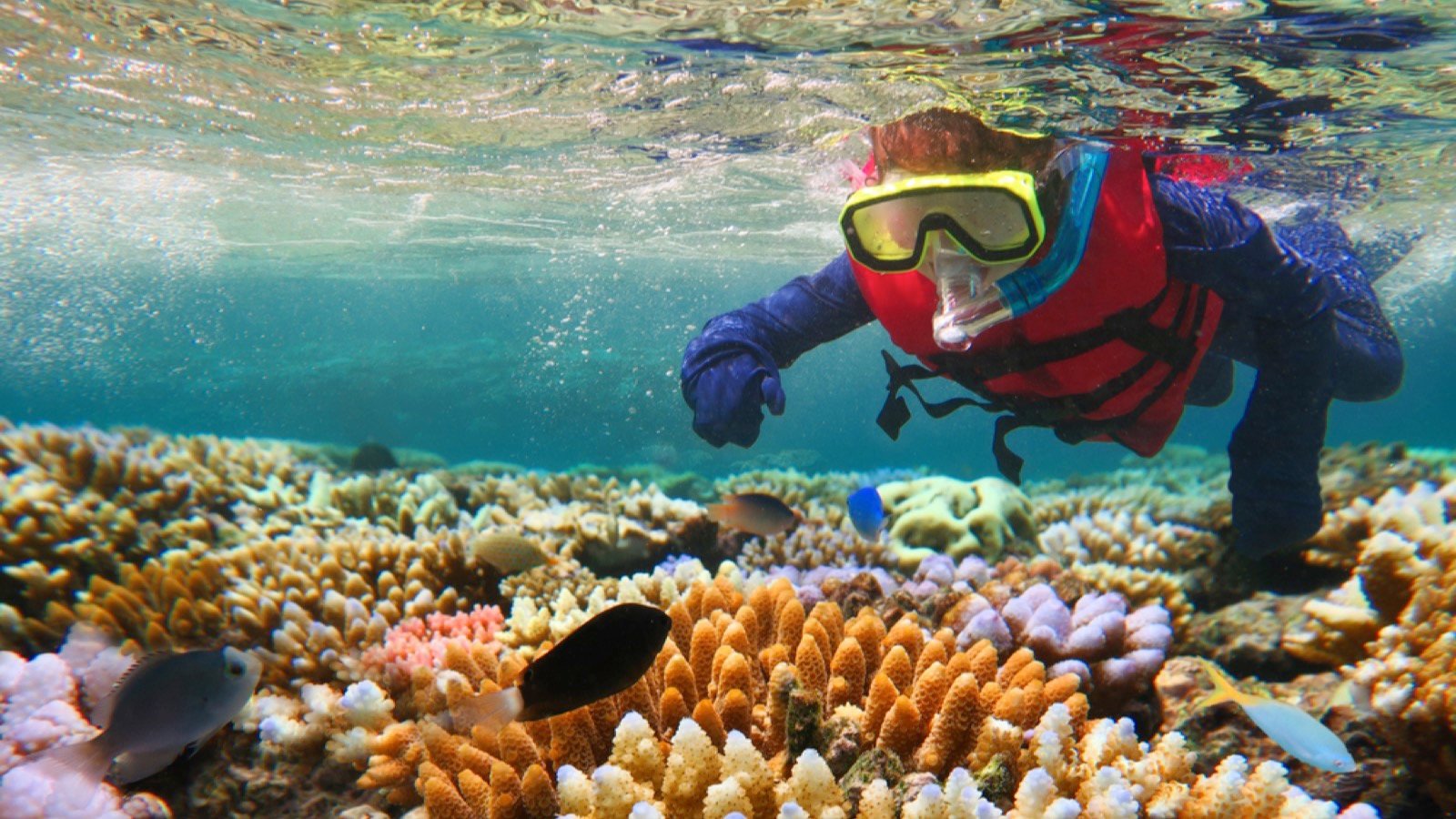
Are you an avid thrill seeker looking to explore life under the sea? One of the highlights of a Caribbean vacation is enjoying the sights that live under the water. Next time you think about spending a week on a cruise or lounging on the beach, check out these spots for breathtaking snorkeling excursions.
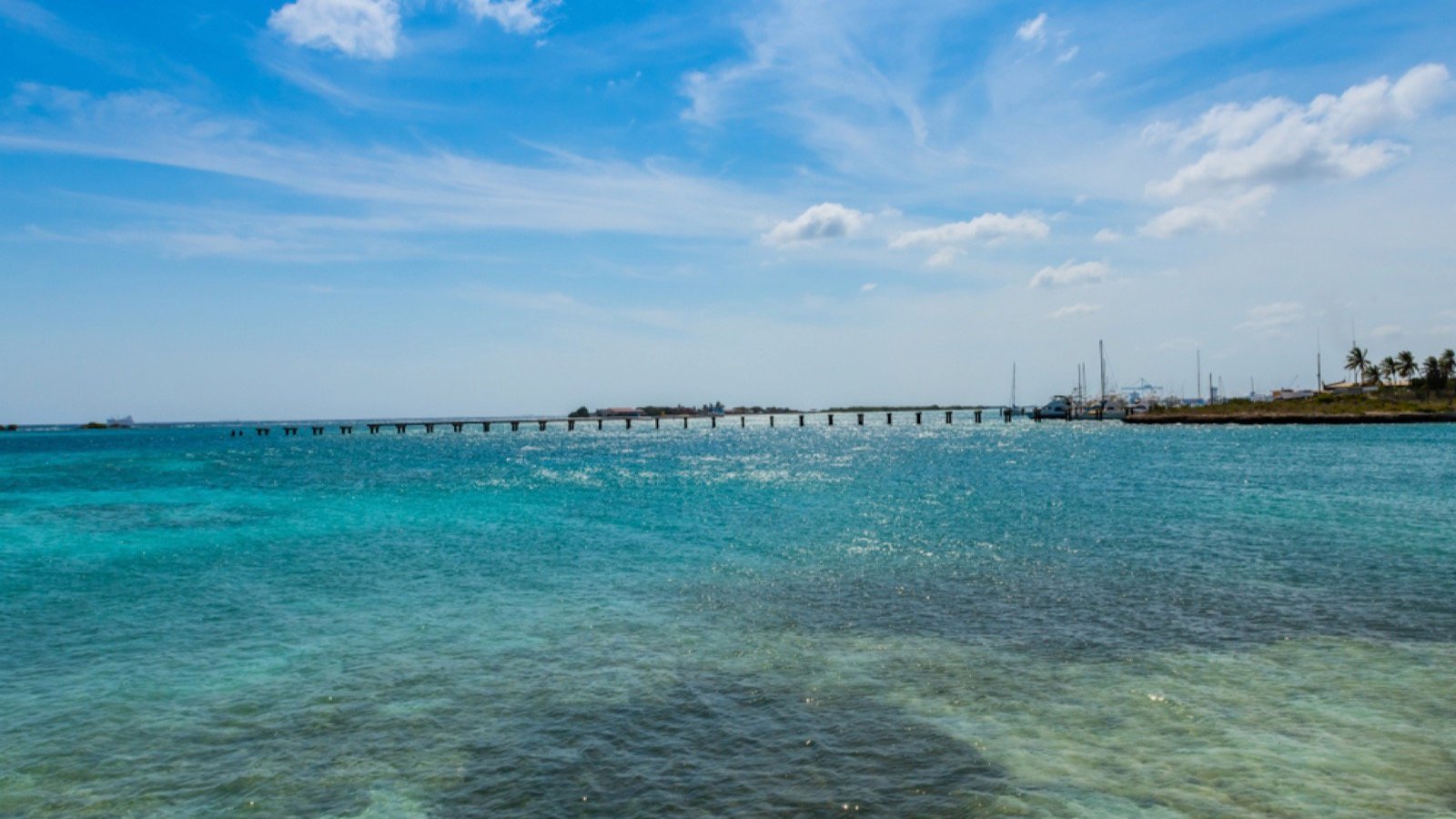
1. De Palm Island, Aruba
De Palm Island is the gem of Aruba for snorkeling enthusiasts. The island is a private resort with world-class dining and stunning beaches, but the natural beauty lies under the water. Just offshore is a shallow reef allowing beginner snorkelers to catch glimpses of the beautiful parrotfish in as little as three feet of water. Enjoy a solo swim or join a group tour; this will surely be a highlight of your vacation.

2. Bonaire National Marine Park, Bonaire
Bonaire is a famous spot for scuba divers from all over the world. Luckily, you don’t need an oxygen tank to enjoy its underwater life. The island has over 6,700 acres of explorable waters, home to more than 300 species of fish and endangered sea turtles. To spot these beautiful creatures, book a tour of the sandbanks too far offshore for swimming.
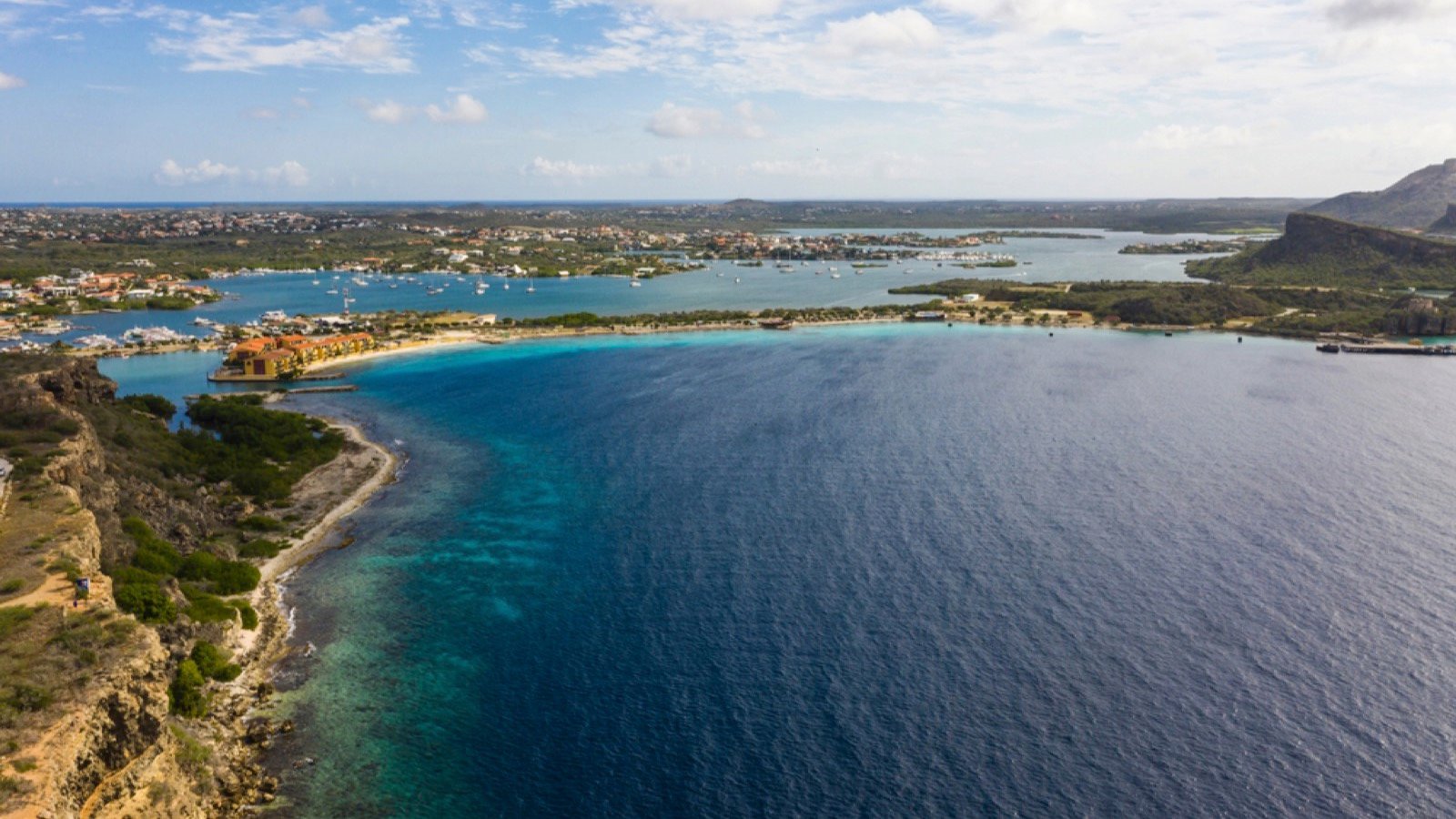
3. Caracas Bay, Curaçao
Just a few hours away from Bonaire is the island of Curaçao. Head on over to Caracas Bay for some fantastic snorkeling adventures. One of the coolest sites is a well-preserved sunken tugboat. Snorkelers can get up close and personal with this sunken ship covered in reefs, crabs, and other sea life.
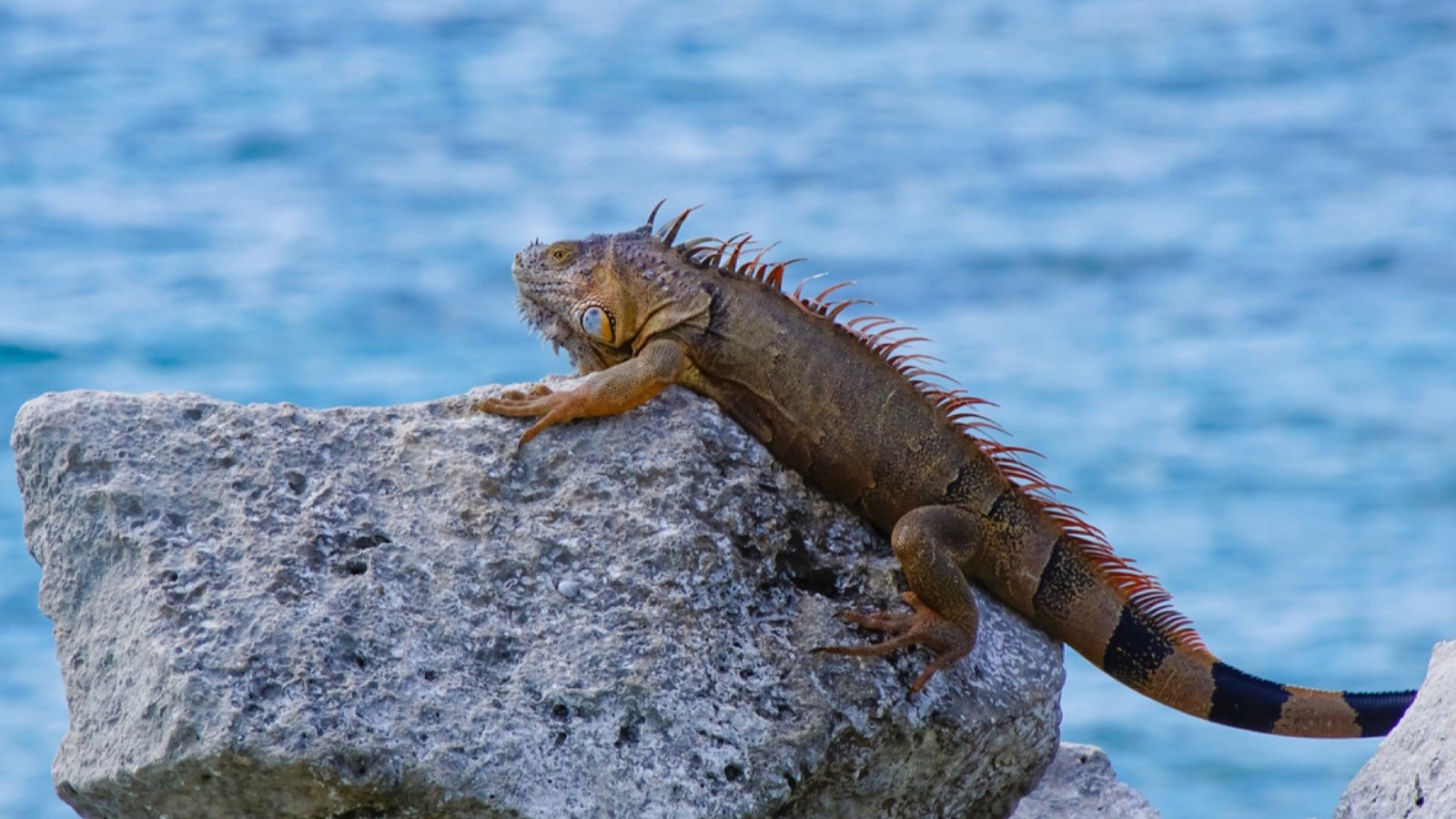
4. Cozumel National Marine Park, Mexico
Snorkelers, scuba divers, and freedivers can spend all day diving in Cozumel National Marine Park waters. The site has many sandy bottom sights with multiple schools of migrating fish. If you ever tire of underwater life, the site is also home to Mayan Ruins and a world-class resort and spa.

5. Turtle Bay, Barbados
Imagine coming home and being able to tell the story of diving with 100-year-old sea turtles. That’s exactly what you will get when you snorkel in the waters of Turtle Bay. The bay is a natural feeding area, so tourists will likely be able to watch these majestic animals wad in the shallow waters. Take advantage of making this magical memory if you plan to visit the Caribbean.

6. Sapphire Beach, St. Thomas
Sapphire Beach is a fantastic tourist spot due to its relaxing sandy beaches and excellent snorkeling opportunities. Just 50 feet offshore, there is a reef and grassy bottom home to many species of fish, sea turtles, sea rays, and nurse sharks. Don’t worry—the sharks may look dangerous, but they’re harmless.
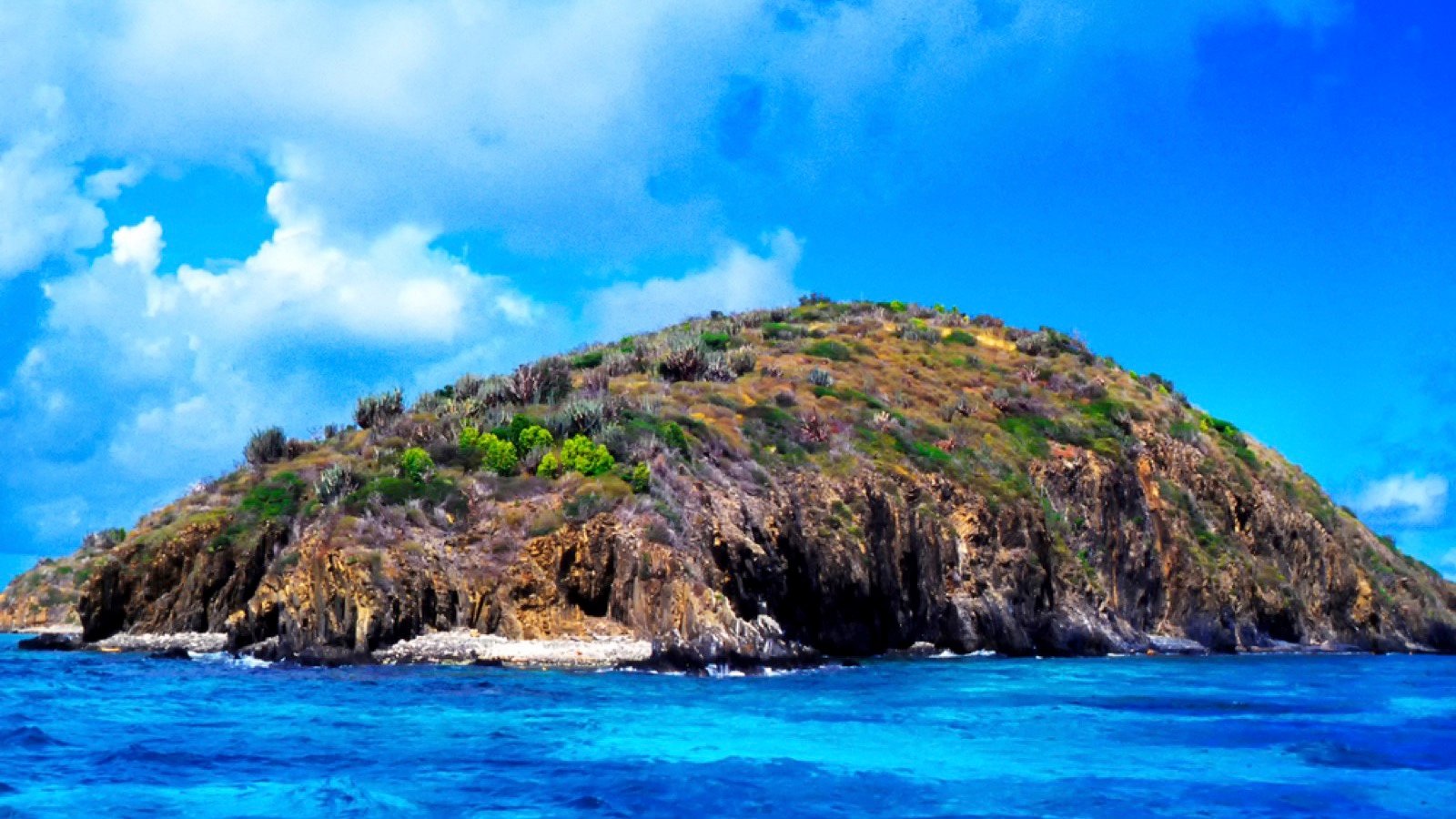
7. Buck Island, St. Croix
The snorkeling on Buck Island is so special that the United States made it a National Monument protected by the Parks Department. A famous trail follows the Carribean coral reef, where plaques share information about the surrounding environment. The course brings you to beautiful underwater caverns and caves made by these colorful coral reefs that will leave you and your crew in complete awe.
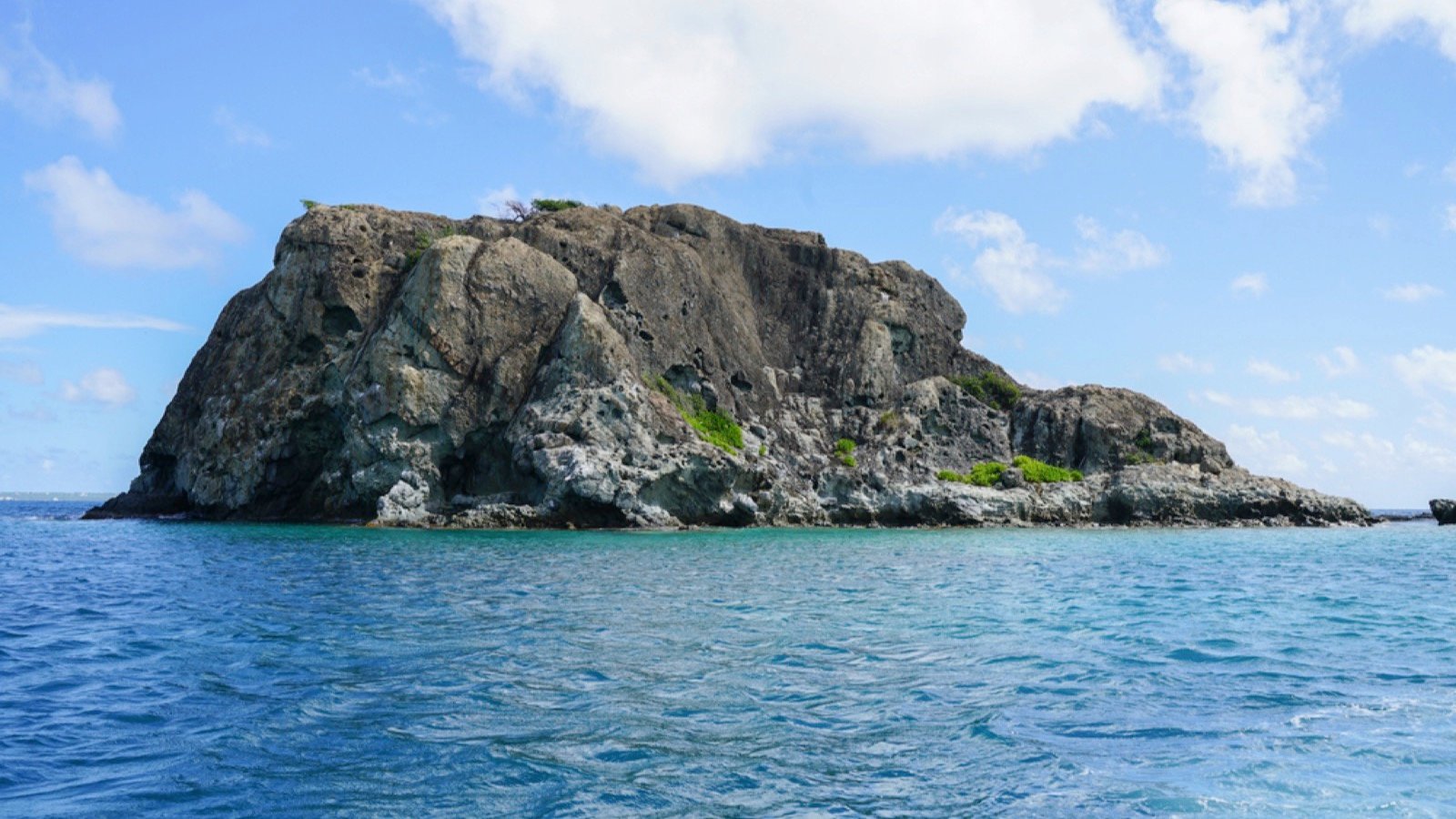
8. Creole Rock, St. Maarten
Creole Rock is an island completely encompassed by an intricate coral reef. The reef attracts many tourists looking to catch a glimpse of life underwater. Here, you can find hundreds of fish and the many predators that prey on them. That may sound scary, but the reef is safe and one of the island’s most prominent tourist sites.
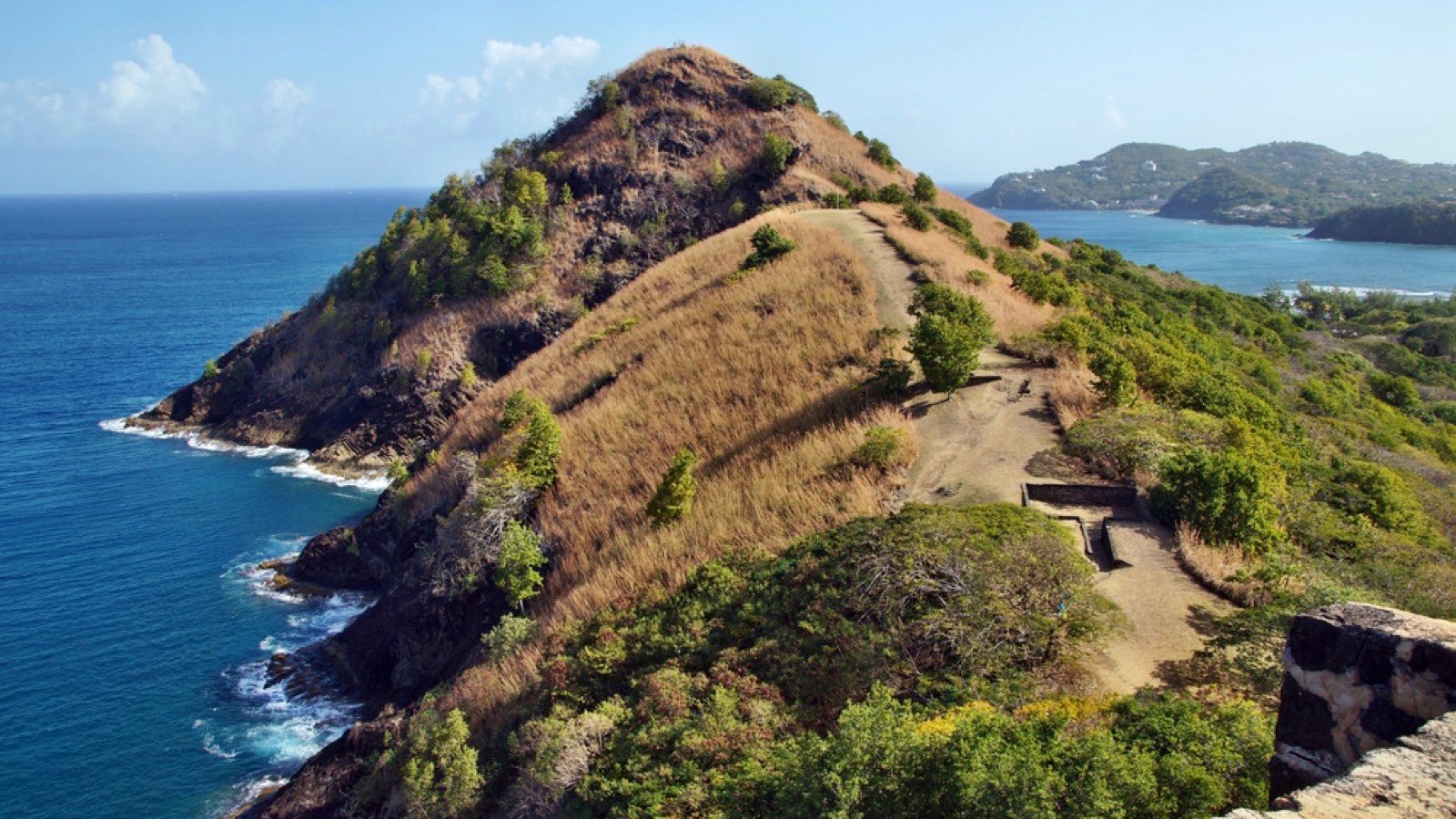
9. Pigeon Island National Park, St. Lucia
If you want to feast your eyes on some of the world’s most beautiful fish, St. Lucia is your ideal destination. Here, you can find over 500 different species of fish, including rainbow parrotfish, Spanish hogfish, and scorpion fish. When you dive, grab a fish ID chart and see how many kinds of fish you see on your next adventure.
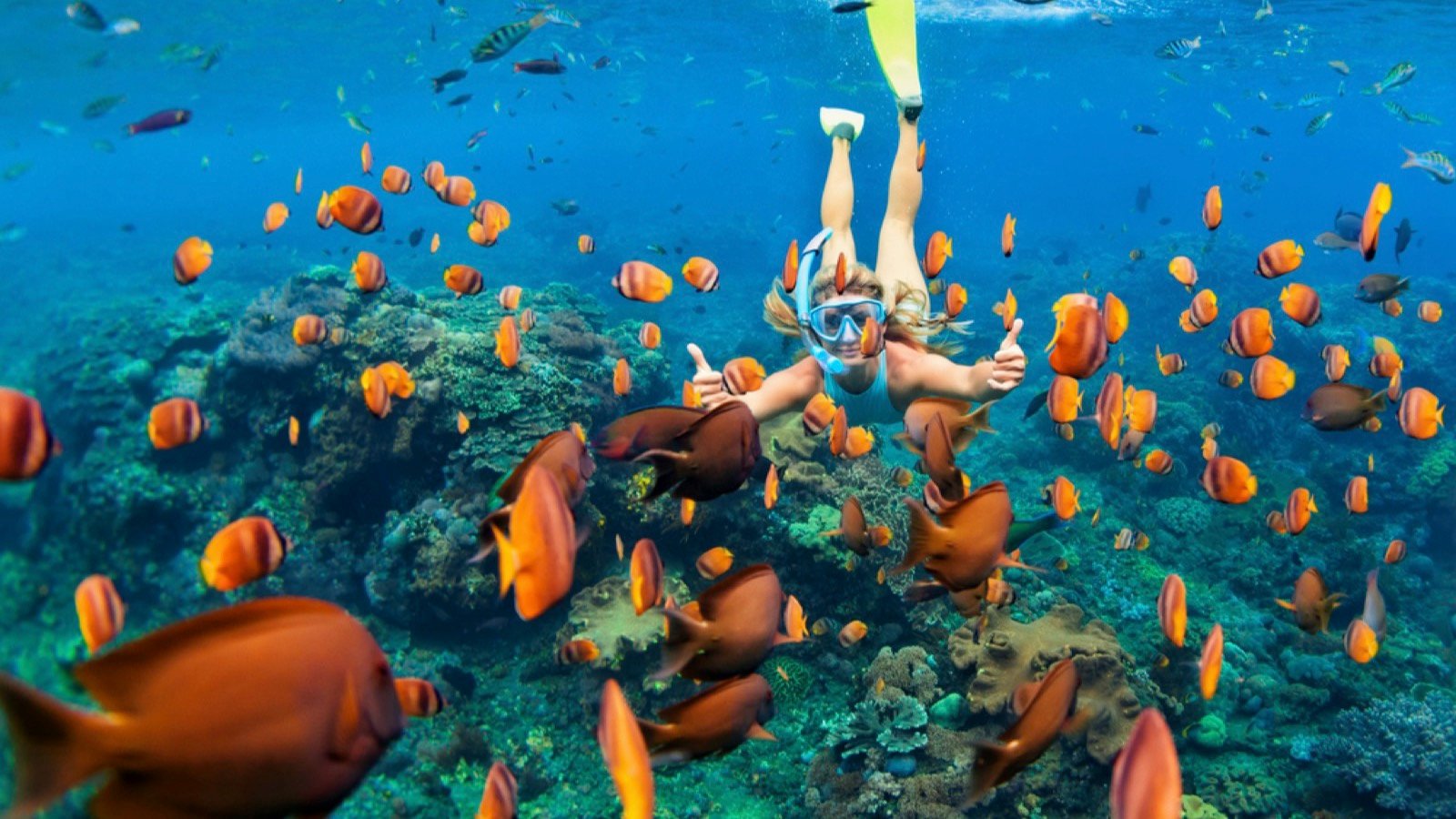
10. Escambrón Marine Park, Puerto Rico
The next time you find yourself in Puerto Rico, venture to Escambrón Marine Park for some epic snorkeling. There is an entire miniature city under the waters here. Over 200 artificial reefs, shrunken statues, and columns make up an “ancient city” inhabited by beautiful fish. It’s a fun dive and an underwater photographer’s dream.
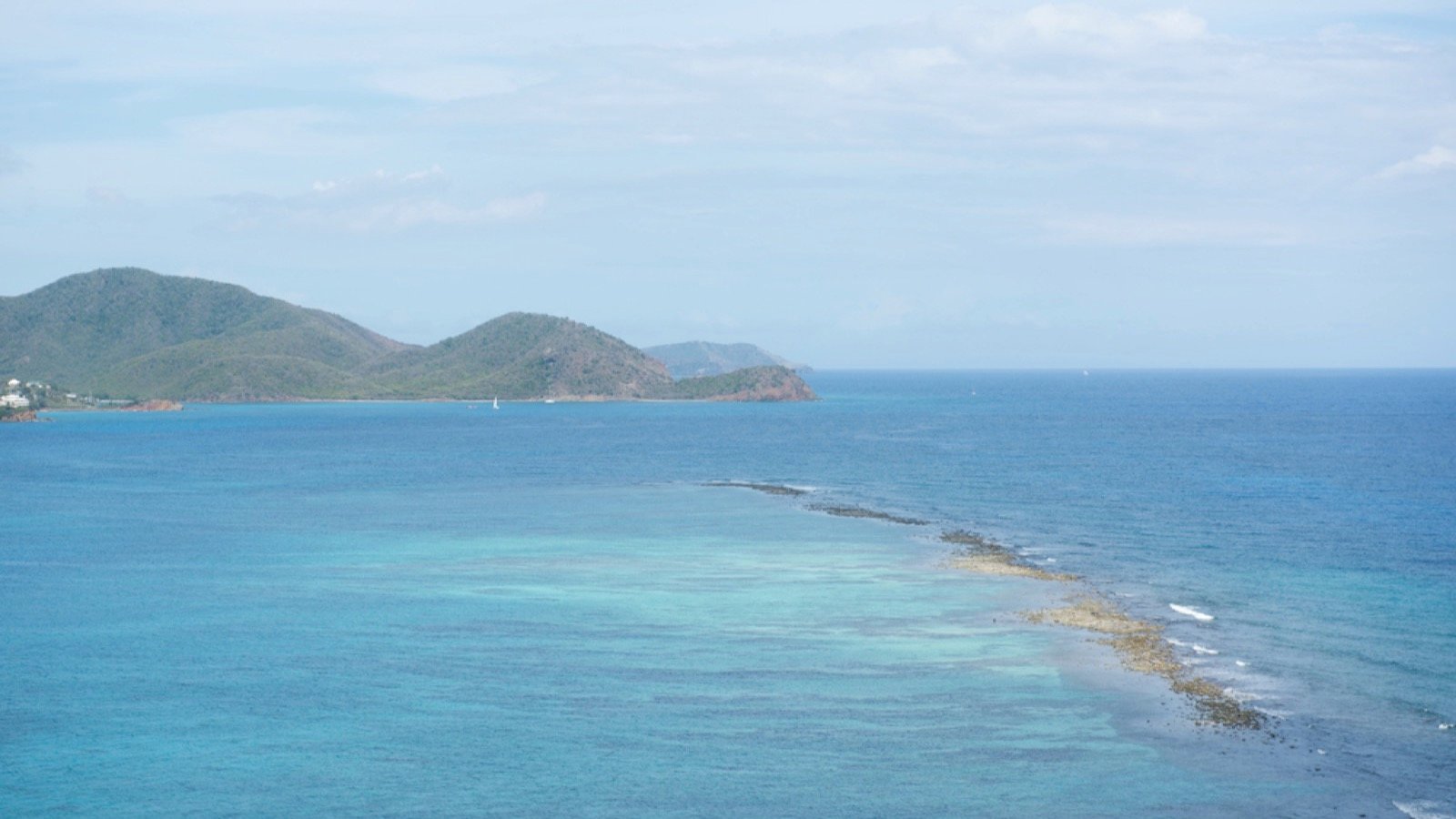
11. Cades Reef, Antigua
Cades Reef is a great snorkeling spot due to its exceptional visibility. In some spots, you can see as far as 100 feet below the sea level. The mild waves offer perfect conditions for seeing parrotfish, eels, rays, and an occasional reef shark. It is a great spot for both experienced and novice snorkelers to enjoy a day in the water.
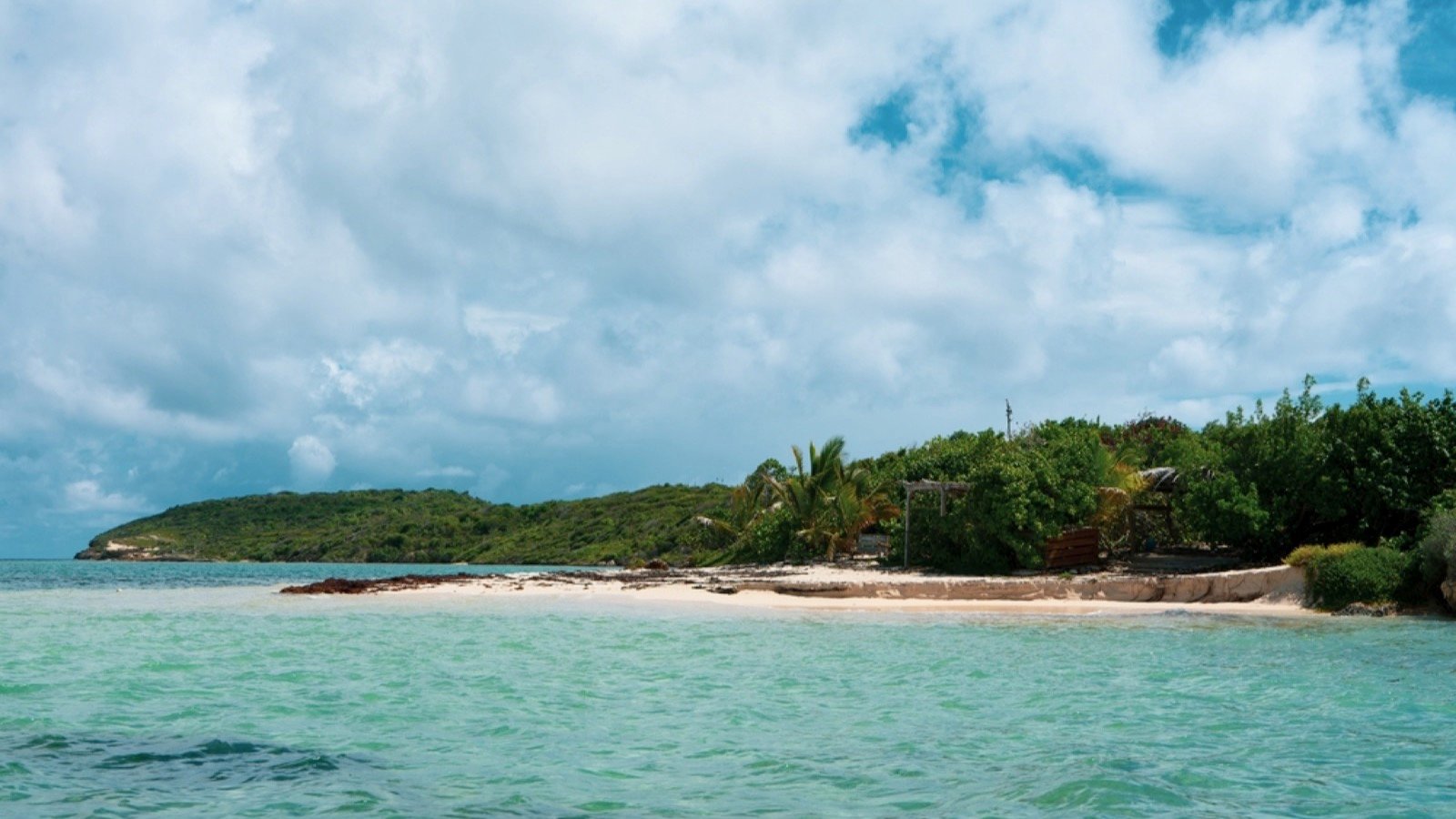
12. Green Island, Antigua
On the other side of Antigua, sandy beaches and grassy bottoms are ideal homes for sea turtles. Green Island is a short boat ride offshore, but it is an excellent spot for swimmers of all levels. Tourists can view sea life from waters ranging from 15 feet to as shallow as 1 foot.
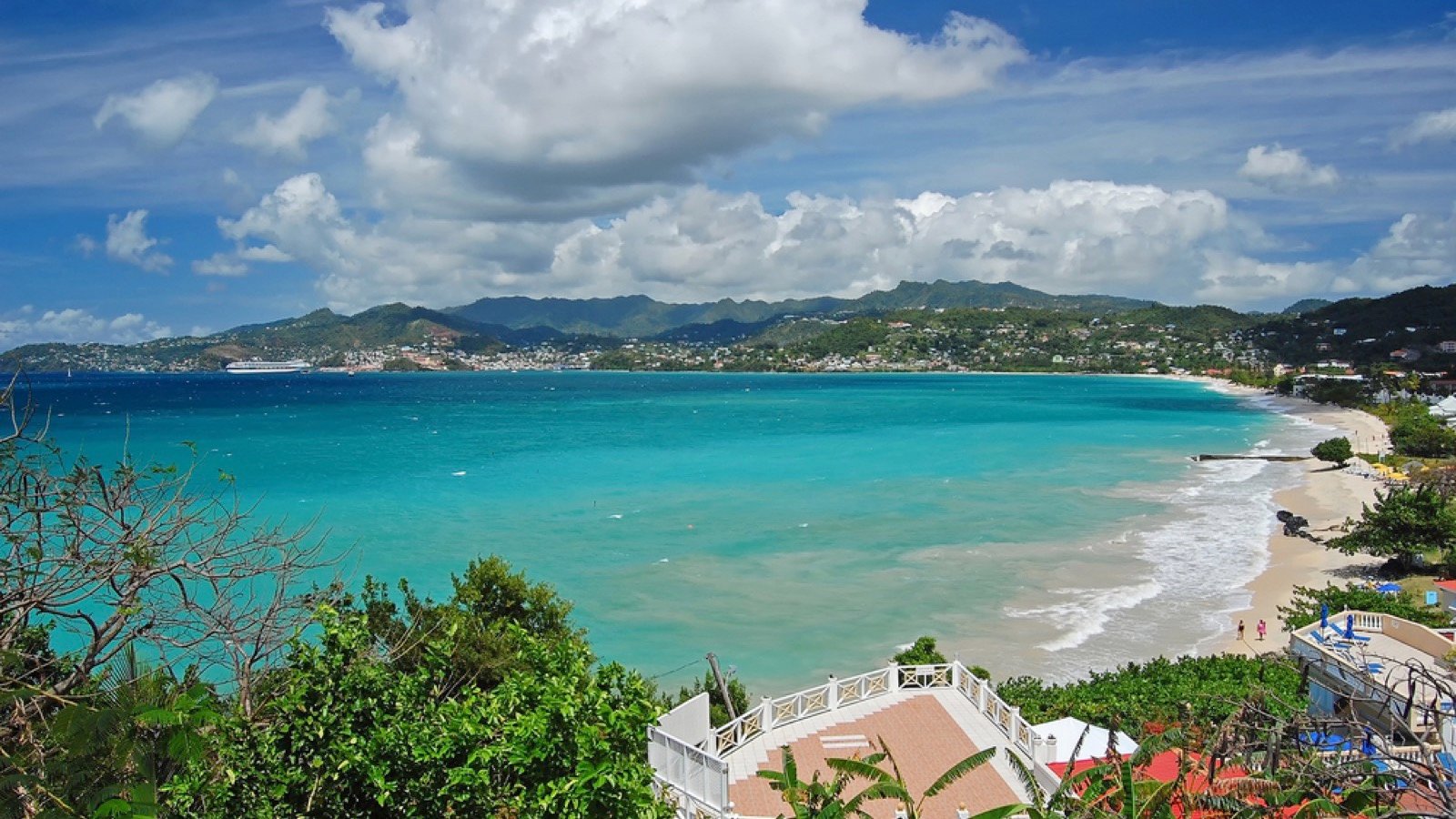
13. Grand Anse Beach, Grenada
Grand Anse Beach is one of the most touristy parts of the island of Grenada. Those who avoid the shops and restaurants can head to the beach for some fun in the water. Just offshore, snorkelers can find a variety of fish and an occasional turtle. The real treat is watching the abundance of eels poke their head out of the underwater sand.
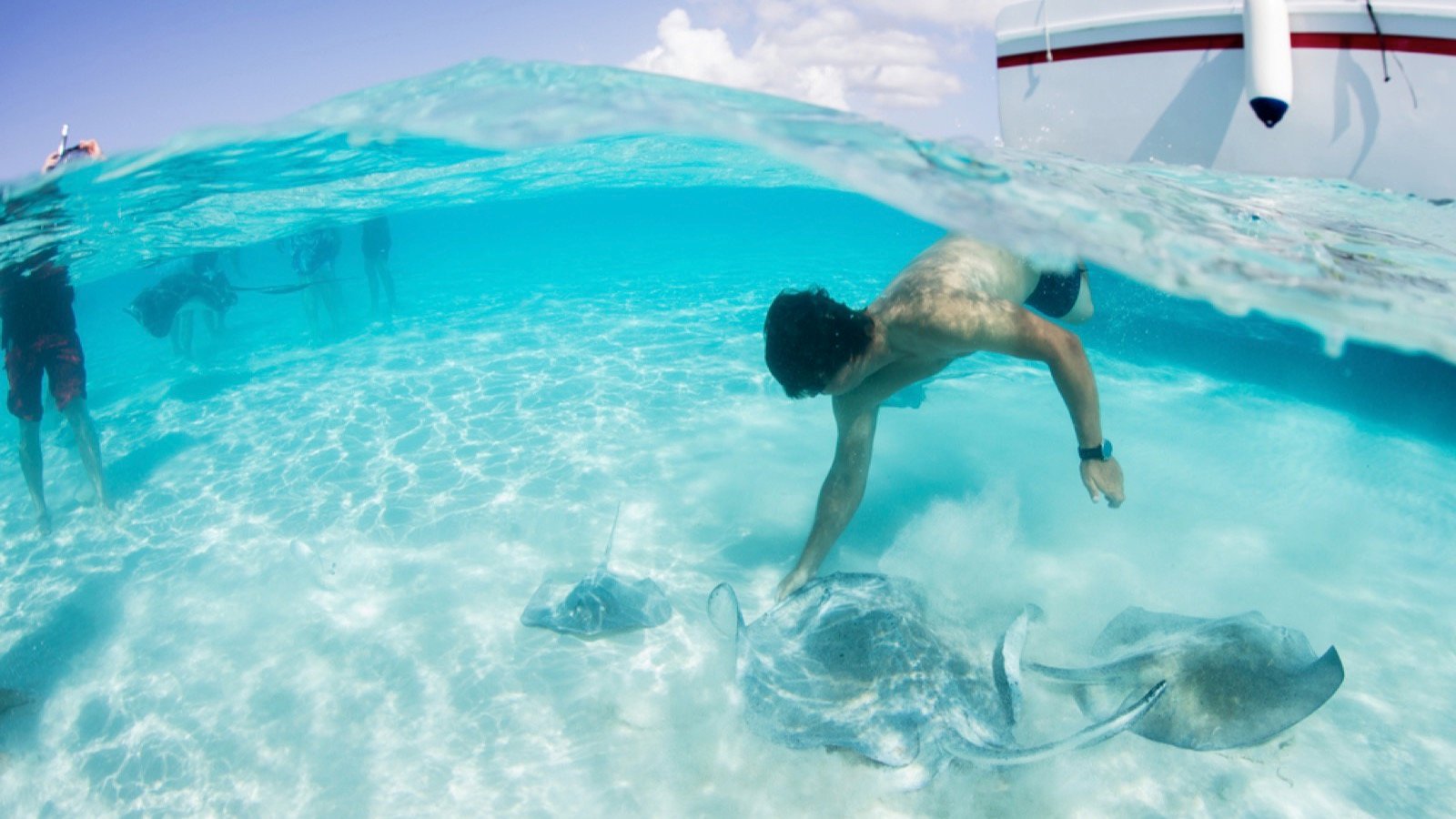
14. Stingray City, Grand Cayman
The name says it all. This is where people can get up close and personal with these majestic rays. Don’t be afraid; these rays are beyond friendly and enjoy human interaction. Have your camera ready because you will want to snap a picture of the “smiles” on the bellies of these marvelous sea creatures.
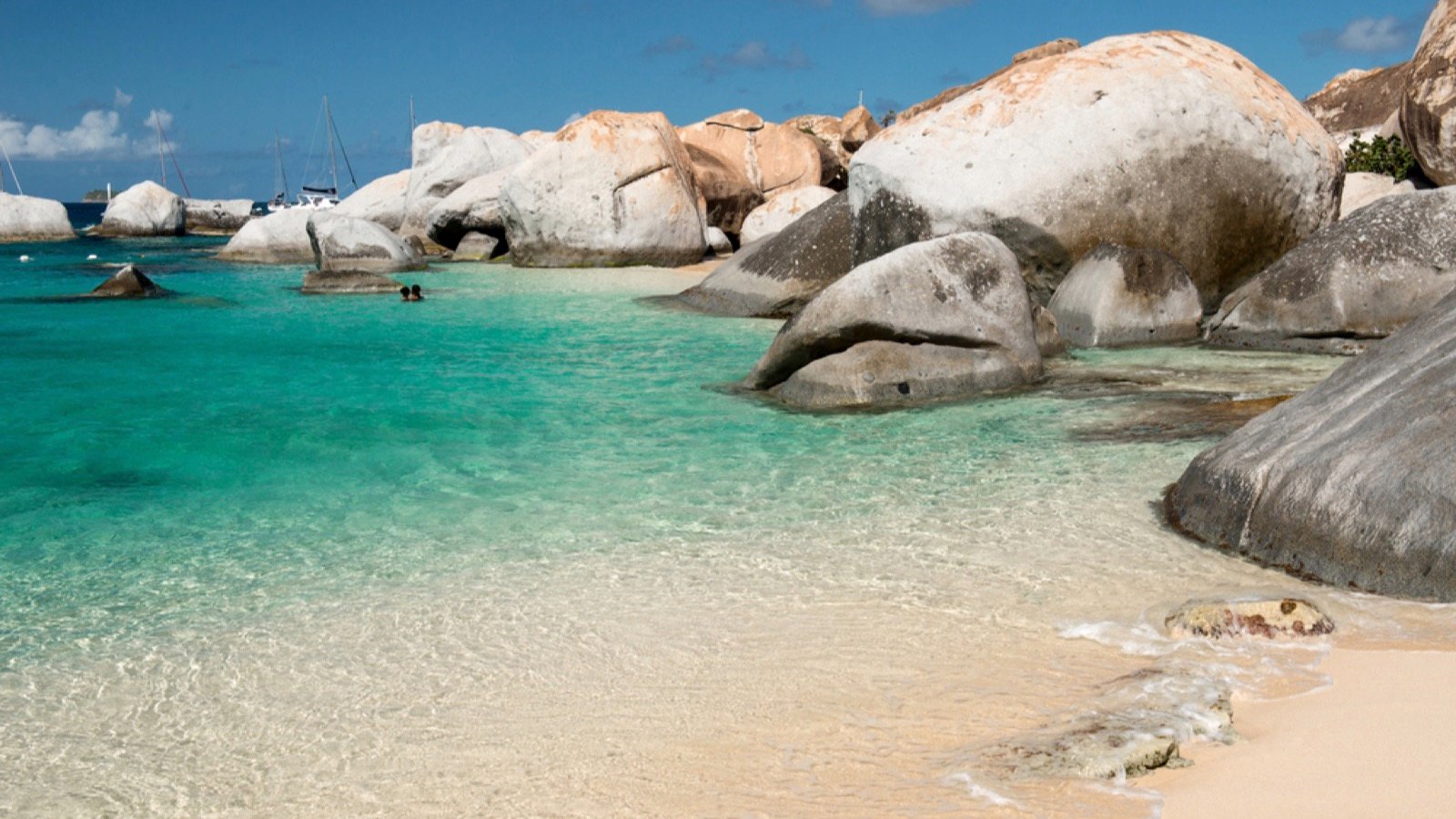
15. Baths of Virgin Gorda, Tortola
These natural pools are separated by giant boulders, making them a perfect home for fish and snorkelers. It is an astounding place for adventures to climb over the rocks and explore hidden crevices. You never know what you might find in one of those hidden pools.
Source: Celebrity Cruises.
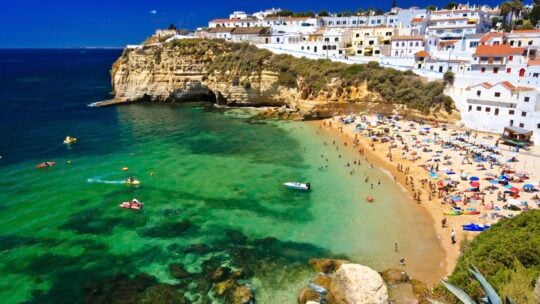
15 Destinations American Retirees Are Living in That Are Cheap
Are you dreaming of retiring to a place where your savings stretch further, the climate is more to your liking, and new cultural experiences await at every corner? You’re not alone. Many American retirees are looking abroad for their golden years, seeking destinations where they can enjoy a rich quality of life without the high costs of living in the United States. This article explores 15 such places around the globe where the combination of affordable living, beautiful surroundings, and welcoming communities create the perfect retirement oasis.

16 Affordable Retirement Destinations Abroad
Retirement can be exciting for people who have worked hard and are ready to enjoy the good life. Many retirees want to make the most of their money and enjoy the rest of their life the best they can. For some, retiring abroad sounds like a fun adventure. Luckily, in some foreign locations, retirees can keep some of their hard-earned money in their bank accounts. Below are some of the best places for new retirees to settle down and enjoy their lives.
More for You
The health condition many women are getting diagnosed with after COVID
The 5 Foods You Should Never Eat From the Breakfast Buffet
I did 50 standing oblique crunches every day for a week — here’s what happened to my abs
24 Old Vinyl Records That Can Be Worth a Lot Today
17 of the Most Dangerous Tourist Destinations in the World
“White Michael Jordan” Sent 50 Cases Of Wine After JJ Redick Complained About Lack Of Quality In NBA Bubble
First Lady Jill Biden reportedly urging the president privately to end the war in Gaza: 'Stop, stop it now'
Can You Eat Potatoes with Sprouts?
I moved from the US to Ireland. Here are 11 things that surprised me most.
IRS Changes Rules for Some Taxpayers in New Update
19 Easy Ways to Fall Back Asleep After Waking Up in the Middle of the Night
25 legendary musicians you might not know were LGBTQ+
ESPN's Molly Qerim Sparks Outrage With Caitlin Clark Jab
Story of Sally Hafez, Who Walked Into Beirut Bank With a Toy Gun, Set for Multiple Adaptations via Front Row Productions
Biden Changes Course On A Major Power Grid Rule After Backlash
Watch This 4K Footage Of A Big Filament Eruption On Sun Triggering A Long Duration Flare
I quit sugar for 6 months and this is what it did to my face and body
25 members of famous bands who deserve more love
Forget the gym — all you need is 10 moves and 20 minutes to build muscle all over
Russian Nuclear Submarine Fires Missiles

IMAGES
VIDEO
COMMENTS
Temperatures remain mild during January - March with lows in the mid-70s and highs in the mid-80s. There is very little rain making it a wonderful time of year to visit Aruba. April - August. Some consider this the best time to visit Aruba because it is the "offseason" so visitors can find great accommodation rates and fantastic weather.
2). April to August is considered the absolute best time to visit and go snorkeling in Aruba. Temperatures will be a little higher (88 to 91 degrees Fahrenheit), but since average precipitation is close to zero the climate remains dry, making the heat more tolerable.
Best time to go for an Aruba snorkeling vacation Aruba is a year-round holiday destination with pleasant air and water temperatures no matter the season, so there is no bad time to go! With an average rainfall of less than 20 inches per year, daytime temperatures of 27 °C (82 °F) and constant blowing trade winds, Aruba is one of the most ...
Mangel Halto - The best snorkeling site available on Aruba. You can access it from the shore, with a guide (including at night) or by boat tour. Puerto Chiquito - Great shore snorkeling with a one-way drift option to Mangel Halto. Arashi Beach - Beautiful white sand beach with access to some healthy reef.
Best times to go snorkeling in Aruba. The conditions for snorkeling are best in Aruba when the winds and water are most calm, typically from September through November. The good news is that no matter what time of year you visit Aruba to snorkel, the air and water temperatures are warm and comfortable. For the clearest, calmest waters, plan to ...
Baby Beach: Aruba Snorkeling Spot #5. Get to Baby Beach early and grab one of the beach huts for a perfect Aruba day! This is a popular spot for both tourists and locals and one of the best places to snorkel. The half-moon-shaped lagoon has shallow waters (this is where the Aruba babies learn to swim!) and a rocky area where the fish flock.
Boca Catalina is considered the best snorkeling spot in Aruba to swim with green sea turtles. These tours generally include a snorkeling stop at the Antilla Wreck, a 400ft/122m-long shipwreck resting in 60ft/18m of water, but the visibility underwater can vary. This is the easiest and safest way to snorkel the wreck, as is it too far from the ...
Address. Natural Pool, Santa Cruz, Aruba. Phone +297 585 1234. Web Visit website. Also known as "Conchi" (bowl) and "Cura di Tortuga" (turtles cove), the Natural Pool is a stunning rock formation created by volcanic stone circles and frequently visited by—as the nickname suggests—turtles.
Malmok. Known as one of the island's hottest spots for snorkeling, Malmok Beach in Aruba is a narrow sandy stretch that interrupts the limestone and rocky terrace along Malmok's coast. Its shallow, clear Caribbean waters are the reason for its popularity, and catamarans and sailboats stop for a daytime snorkeling stop just off the shoreline.
The best time to visit Aruba for snorkeling is between April and August, as these months typically have the calmest waters and best visibility. However, snorkeling can still be enjoyable during other times of the year, just be aware that weather conditions may vary.
Aruba in January. January is one of the most popular months to visit Aruba. With an average high temperature of 86 degrees and an average low temperature of 76 degrees, it's a perfect month to enjoy balmy Caribbean days. Because it's a great time to visit the island, it can be pricier — and more crowded — in January.
Stay-over visitor numbers frequently top 90,000. Weather in Aruba in January: If excessive heat is a deciding factor for you, January is the best time to visit Aruba. Daytime temperatures peak ...
The cheapest time to visit Aruba is in autumn. Trade winds keeping visitors cool in Aruba's desert landscape fade in September. Deep discounts on lodging, sometimes as much as 50% less than winter highs, can make Aruba a relative bargain this time of year. September can also be the best time to visit Aruba for snorkeling, thanks to lighter ...
The island offers so many fascinating snorkeling locations. We took the time to visit most, and here are our top 10 places to go snorkeling in Aruba: Arashi Beach. Boca Catalina and Catalina Cove. Antilla Shipwreck. Natural Pool. Baby Beach. De Palm Island. Mangel Halto.
Early fall is also a good time to visit to take advantage of the low season rates and fewer crowds, but these are the rainiest months of the year and have the highest chances of tropical storms. Best Time for Families: When planning around the kids' school schedule, summer break is the best option for Aruba as it is still considered off ...
Boca Catalina in Aruba is a small, secluded bay in the Malmok Beach area. The white sandy beach is accessible by steps and ample parking space is available alongside the main road. 3. Catalina Cove. Not far from Boca Catalina you'll find Catalina Cove, one of Aruba's best snorkeling beaches featuring beautiful white sands, clear waters and ...
The most popular time to visit Aruba is from December through March — the high season — as many residents from the northeastern U.S. flee colder temperatures and, of course, snow.
4. Boca Catalina. One of the best beaches in Aruba for snorkelling is Boca Catalina, where you can see plenty of colourful fish and coral. Boca Catalina is located in the northeast corner of Aruba island, a 10-minute drive from the popular Eagle Beach and Palm Beach areas. You can drive there yourself or go on a boat tour.
Best Times To Visit Aruba. The best time to visit Aruba is from April to August - a huge window of time when the island's high prices take a holiday. However, there's no bad time to visit Aruba ...
Boca Catalina. Boca Catalina. If you can only go on one snorkeling trip while on the island, head to Boca Catalina, which has everything a snorkeler could ever want and is considered the best site for snorkeling in Aruba. Located near a white sand beach, Boca Catalina can be reached by swimming off the shore.
Jolly Pirates Morning Sail and Snorkel Cruise in Aruba. Duration: 4 hours Embark on a thrilling four-hour Aruba Pirate Cruise aboard an 85-foot teak schooner. Visit three snorkeling locations, including a World War II shipwreck, for an immersive marine experience with coral and tropical fish.
Aruba's year-round sunny weather coupled with the steady trade winds makes it easy to spend all day outside, and its unique geography means you can experience crystal clear beaches, rolling sand dunes, and natural pools in one visit. If you're considering a trip to Aruba, make sure to leave time for these off-sand exploration across the island.
Best Time to Visit Aruba. September 18, 2023 by Dan. Aruba is one of the most beautiful islands in the Caribbean, famous for its gorgeous coral reefs, soft white sands, bright blue waters, fun-filled watersports, and delicious seafood, it's a great place to visit if you're looking for a dreamy honeymoon destination, or attractive vacation ...
The Best Time to Visit. Aruba is more desert-like than tropical, and the weather is great all year, and April through August has the least rainfall. ... The best snorkeling is by Turtle Cove ...
Best times to go snorkeling in Aruba. The conditions for snorkeling are best in Aruba when the winds and water are most calm, typically from September through November. The good news is that no matter what time of year you visit Aruba to snorkel, the air and water temperatures are warm and comfortable. For the clearest, calmest waters, plan to ...
As for choosing the best time to visit Aruba for a snorkeling trip, you'll ideally want to set your sights on September through mid-December. Not only is the weather a lot cooler during this time ...
De Palm Island is the gem of Aruba for snorkeling enthusiasts. The island is a private resort with world-class dining and stunning beaches, but the natural beauty lies under the water.